

Stuttgart Travel Guide
This post may contain affiliate links. Read my disclaimer policy.
Thinking about visiting Stuttgart? This guide will help you start your planning to this vibrant city north of the Black Forest. Many of our itinerary planning clients visit Stuttgart’s famous Christmas markets or the car museums, but as Cate discovered when she lived in Stuttgart, there’s so much more to do and see. Stuttgart has a good-sized airport with international flights to the US so it can be a great starting or ending point for your trip.
Keep reading for the best sights, hotels, day trips, and more in the Stuttgart area!
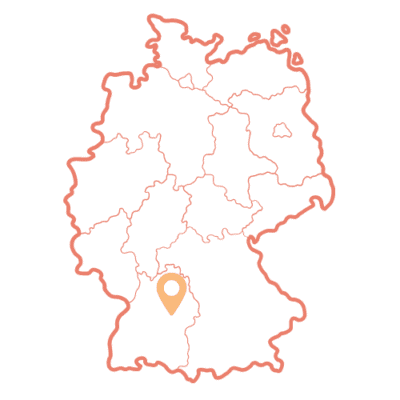
What to Do and See in Stuttgart
With the Black Forest to the south, the Schwäbish Alb (Swabian Alps) to the northeast, and France to the west, the Stuttgart area has a lot to offer.
Home of the legendary Cannstatter Volksfest (better than Oktoberfest!), a huge historic Christmas market , and vineyards right in the city, you’ll find plenty to do, see, and experience in and around this off-the-tourist-path city.
TIP: if you’re only in Stuttgart in for a day or two, maximize your time by starting with the Hop On Hop Off Bus Tour . In just a couple hours you can see a lot of the city (including vineyards), which then leaves you time to zero in on the sights you want to explore in more depth.
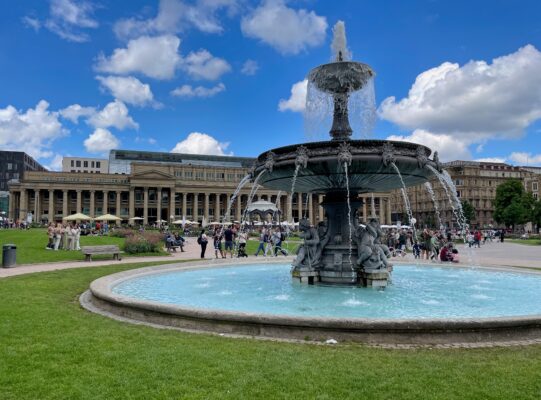
Best Things to See and Do in Stuttgart
View our 31+ top recommendations!
Best Stuttgart Accommodations
You’ll find a wide variety of accommodation options in Stuttgart, including hotels, B&Bs, and apartments. We recommend staying in the downtown Stuttgart area near Schlossplatz, the train station or Königstrasse pedestrian area (that’s where we like to stay). Nearly everything you’ll want to see will be within walking distance. You can also easily catch public transportation to other parts of the city from this area.
If you have our Germany Travel Planner you’ll find recommended hotels on our interactive planning map. Seeing where these hotels are in relation to the top sights makes it a lot easier to find the perfect place to stay. If you don’t yet have it, click here to get access.
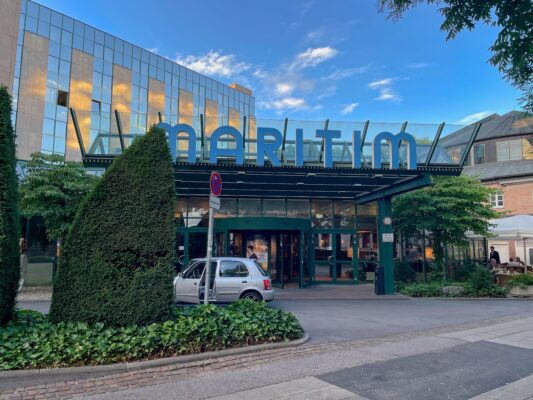
Best Hotels in Stuttgart
See our top recommendation here!
The Stuttgart Christmas Market
Evergreens covered in twinkling lights. Wooden stalls filled with crafts, toys, and festive holiday decor. Bratwurst, Gebrannte Mandeln (cinnamon roasted almonds), and Glühwein in souvenir mugs…yes, it’s Christmas market season in Germany!
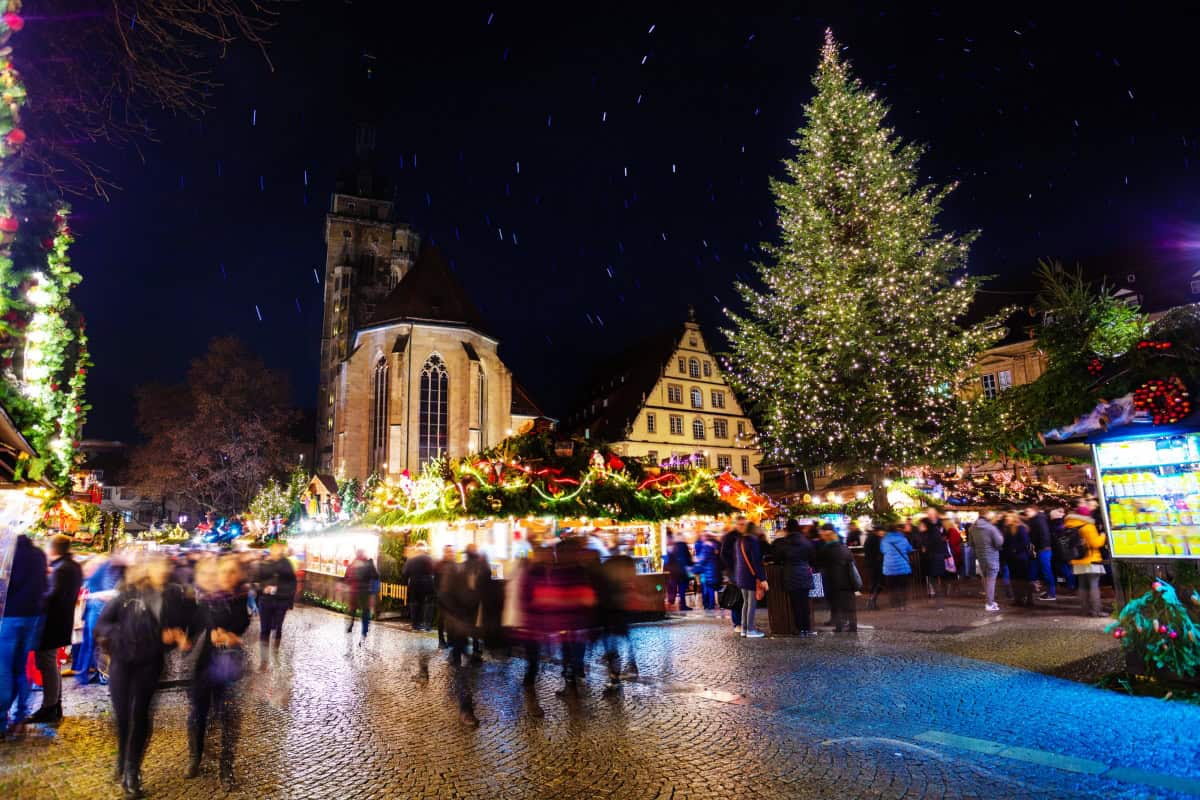
In this epic article we share everything you need to know to make your visit to the Stuttgart Christmas market a great one!
Stuttgart Tours and Tickets
Stuttgart has several guided tours and special tickets to make your visit extra fun. Book in advance so you don’t have to scramble once you’re in town and potentially miss out on an activity or tour you’re looking forward to!
If you want to see a lot of Stuttgart in a short about of time, hop on the HOHO bus and ride it all the way around. Even though I lived in Stuttgart, I enjoyed this easy city tour!
organized activities from our affiliates – IN ENGLISH
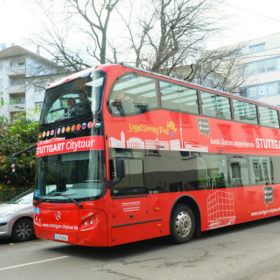
Hop-On Hop-Off City Bus Tour
Click here for price and availability .
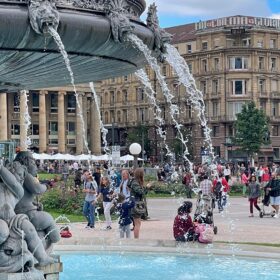
Private City Walk
Click here for price and availability.
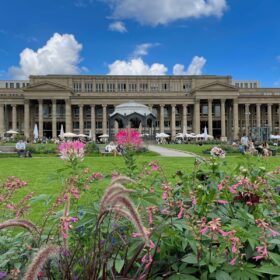
Highlights of the City Center
Click here for details .

StuttCard – Sightseeing, Culture and Culinary Delights .
Free and discounted entry at over 50 partners. Click here for details .
organized activities from our affiliates – IN GERMAN
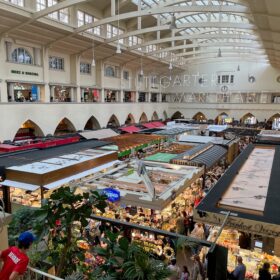
Guided Tour of the Stuttgart Market Hall
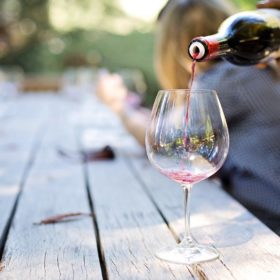
Stuttgart Wine Museum Wine Tasting
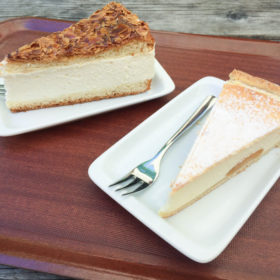
Culinary Excursion through Bad Cannstatt
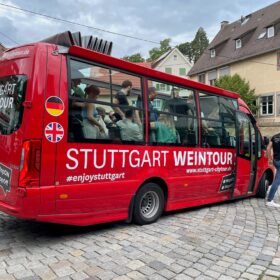
Stuttgart Wine Tour
Click here for price and tour days .

Mercedes-Benz Arena Tour
Know before you go.
Airport: Stuttgart International Airport (STR) Currency: Euro Language: The official language of Germany is German (Deutsch) Time zone: Central European Time (CET / GMT+ 2 / 6 hours ahead of US EST) Germany Visa: tourists from the US, Canada, and several other countries do not need a visa to visit Germany for under 90 days. Germany Electricity Socket: Germany uses different voltage and sockets than in North America, the UK, and other parts of the world. Read our guide to adapters and converters so you can safely use your tech in Germany. Germany SIM card: Read our guide here to SIM cards and other ways to use your phone in Germany. Germany Car Rentals: We find great deals on rental cars here . You can also check out our scenic Germany road trips article here.
Recommended Day Trips from Stuttgart
One of the best things about making Stuttgart your home base while visiting Baden-Württemberg is that you have countless day trip options. You can plan your own day trips for maximum flexibility or book a guided tour for maximum relaxation and convenience. Here are some ideas to get your planning started.
FROM OUR BLOG…
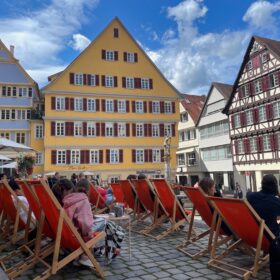
Best Day Trips from Stuttgart
Read about our best day trip recommendations from Stuttgart!
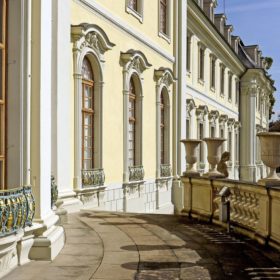
Visit Ludwigsburg Palace
Click to learn more… ➔
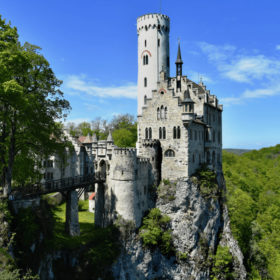
Visit Lichtenstein Castle
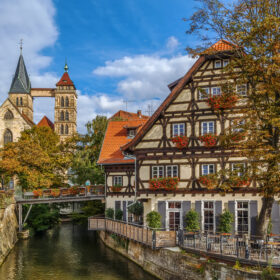
Visit Esslingen
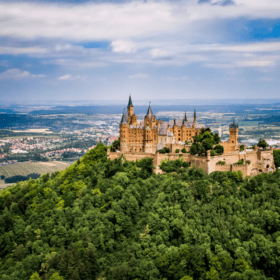
Visit Hohenzollern Castle
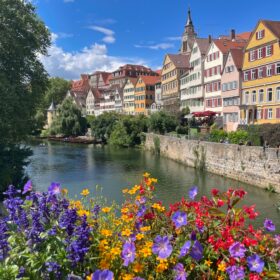
Visit Tübingen
MORE ADVENTURES…
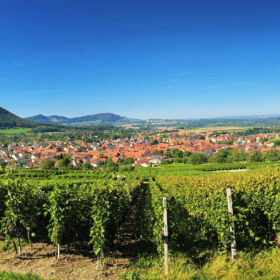
Beuren Open Air Museum
Explore this period village with historical buildings and rural culture. Discounted entrance with StuttCard !
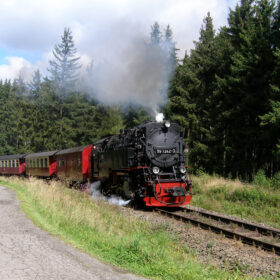
Swabian Forest Railway
Experience historic steam and diesel train rides through Swabian Forests. Sundays, May-October. Discount with StuttCard !
Stuttgart Travel FAQ
Where is stuttgart located.
Stuttgart is located in southwest Germany in the German Bundesland (state) of Baden-Württenberg. It’s south of Frankfurt, north of the Black Forest, and just a few hours away from France to the west and Switzerland to the south.
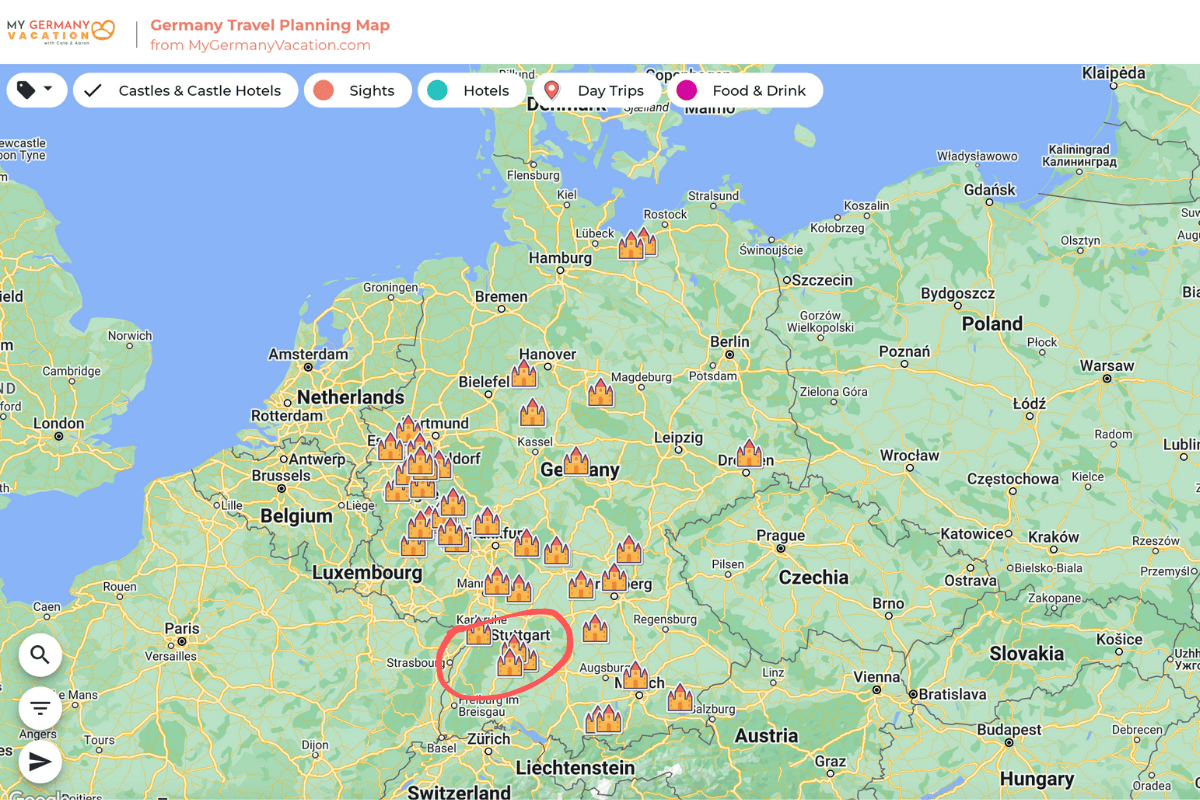
Where do I Get That Map?
If you have our Germany Travel Planner, you’ll find recommended hotels on our interactive planning map. Seeing where these hotels are in relation to the top sights makes it a lot easier to find the perfect place to stay. If you don’t have it yet, click here to get access.
Is Stuttgart, Germany in Bavaria?
Nope! Stuttgart is in Baden-Württemberg, which is the state west of Bavaria. Baden-Württemberg and Bavaria are the 2 German states that comprise the southern part of Germany.
What is Stuttgart, Germany Famous For?
Stuttgart is known for having vineyards within the city limits, beautiful hills surrounding the city center (so lovely at night!), BMW and Mercedes, a huge Christmas market, and lots of delicious regional food and drinks.
How to Get To Stuttgart, Germany
Stuttgart is easy to reach via train, bus, car or plane. Consider flying directly into Stuttgart International Airport as an alternative to Frankfurt. I often fly in and out of Stuttgart because it’s so easy and stress free (Delta has a direct flight from Atlanta and it’s a quick hop from other European hubs).
You can then take the S-bahn into downtown Stuttgart in 40-ish minutes, a bus to Tübingen if you’re heading in that direction, or you can hop in a taxi or use the FreeNow app to go right to your hotel or apartment (generally about 30-40 minutes).
If you’re arriving via train or bus, you’ll arrive at the central train station downtown (Hauptbahnhof). From there you can walk to many downtown hotels ( check out our Stuttgart hotel guide here ) and tourist sights, take public transportation or grab a taxi.
Getting Around Stuttgart
If you stay in the city center, you should be able to walk to most sites. For the sites that are further away (e.g., TV tower, vineyards, BMW museum) you can hop on a tram, bus, U-bahn or S-bahn or use the Hop On Hop Off bus.
LOCATION Basics
Population 634,830 Stuttgart is capital of and the largest city in the German state of Baden-Württenberg.
Airport Stuttgart International Airport
Bundesland Baden-Württemberg
Train Travel Times to Stuttgart Berlin ➔ Stuttgart = 5.5 hrs Frankfurt ➔ Stuttgart = 1.5 hrs Munich ➔ Stuttgart = 2 hrs Strasbourg ➔ Stuttgart = 2 hrs Paris ➔ Stuttgart = 3.5 hrs Zurich ➔ Stuttgart = 3 hrs Prague ➔ Stuttgart = 7.5 hrs Brussels ➔ Stuttgart = 5 hrs
Fun Facts Stuttgart’s name comes from its horse breeding past. The area around which the city was developed was originally a site for breeding cavalry horses. This all makes sense when you see the Porsche logo!
All Stuttgart Area Guides…
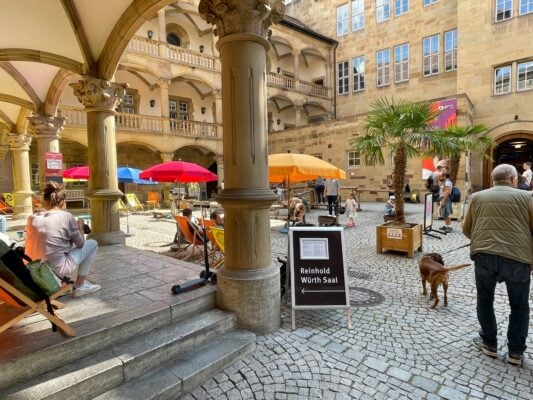
The Best Hotels in Stuttgart
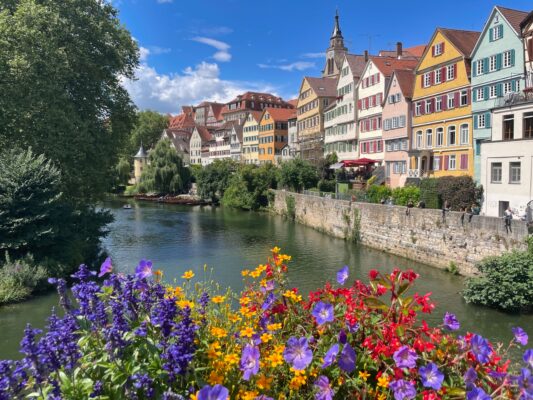
The Best Day Trips from Stuttgart
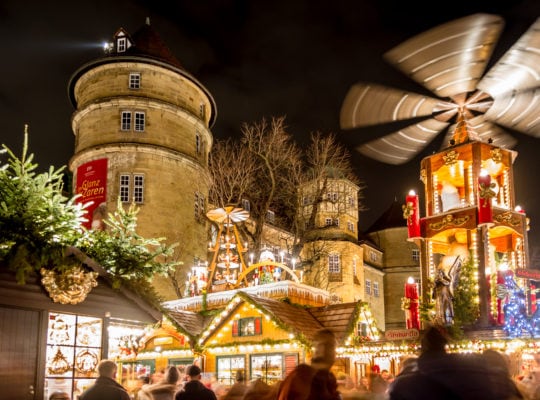
Stuttgart Christmas Markets
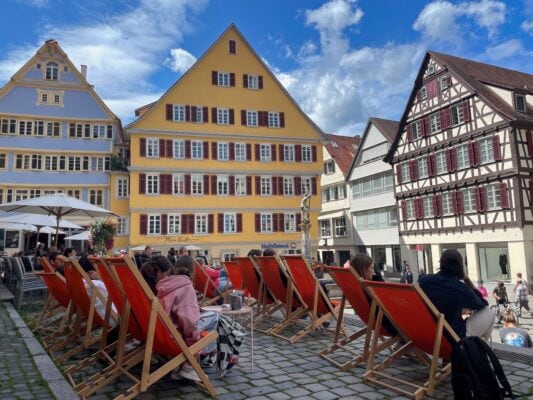
Best Things to See in Tübingen
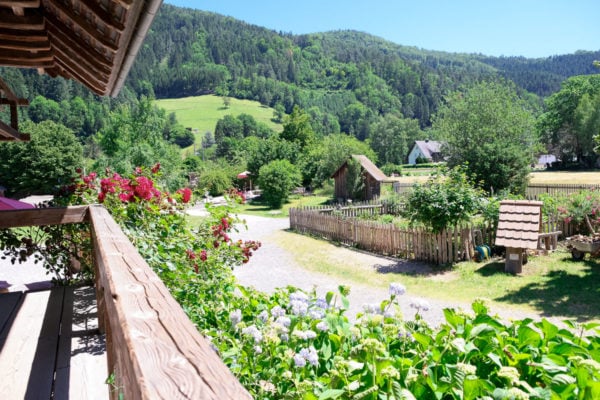
Best Things to See in the Black Forest
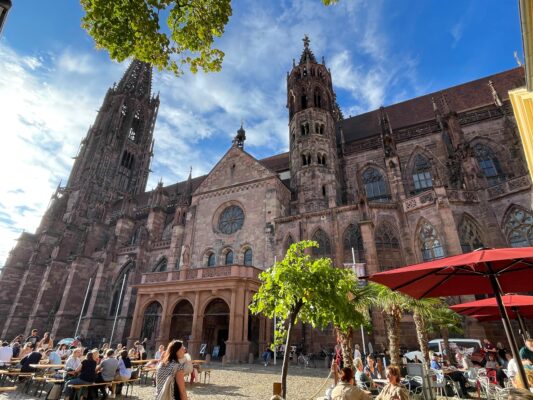
Best Things to Do in Freiburg
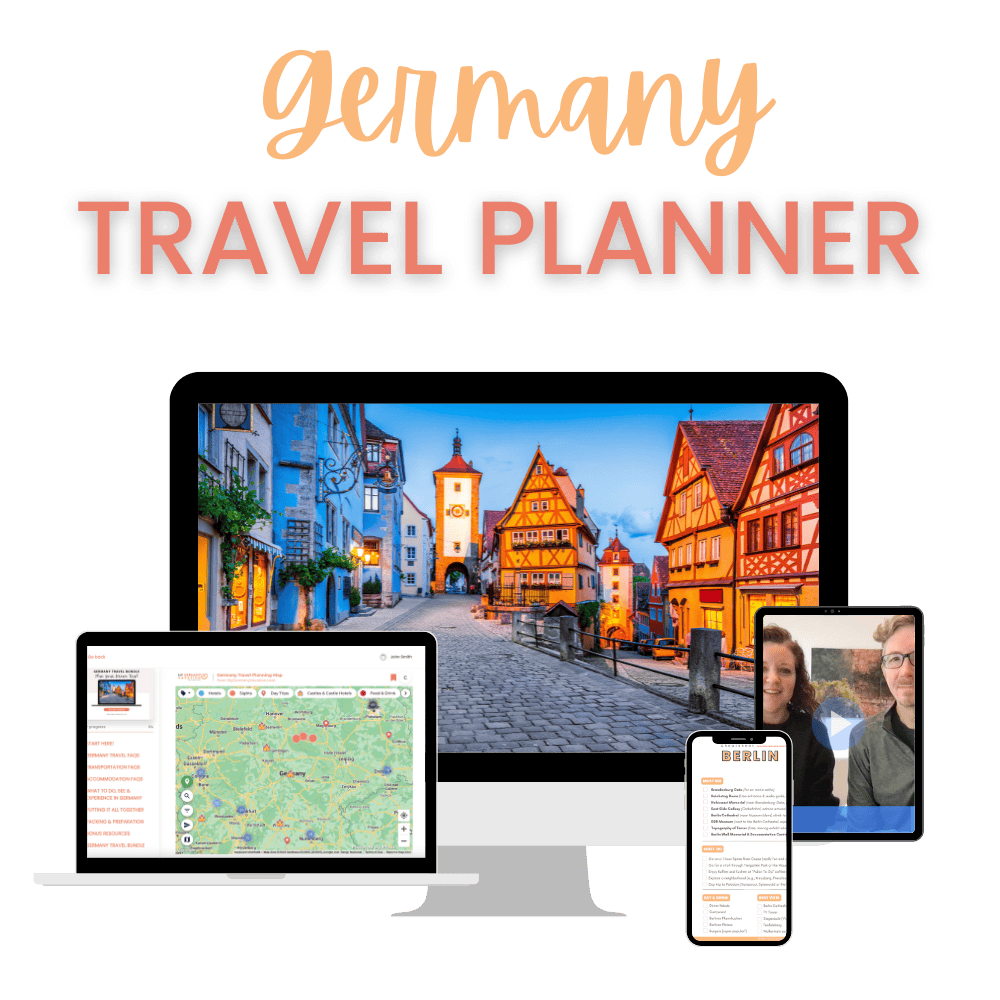
- Interactive
- Comprehensive
- Informative
The Easy Way to Enjoy the BEST of Germany.
Planning a trip to Germany is surprisingly overwhelming – even for seasoned travelers!
That’s why we created the Germany Travel Planner .
With our 30+ years Germany travel experience and expertise by your side, you’ll navigate the complexities of trip planning effortlessly. And then enjoy a relaxed and memorable adventure filled with unique experiences tailored to your preferences!
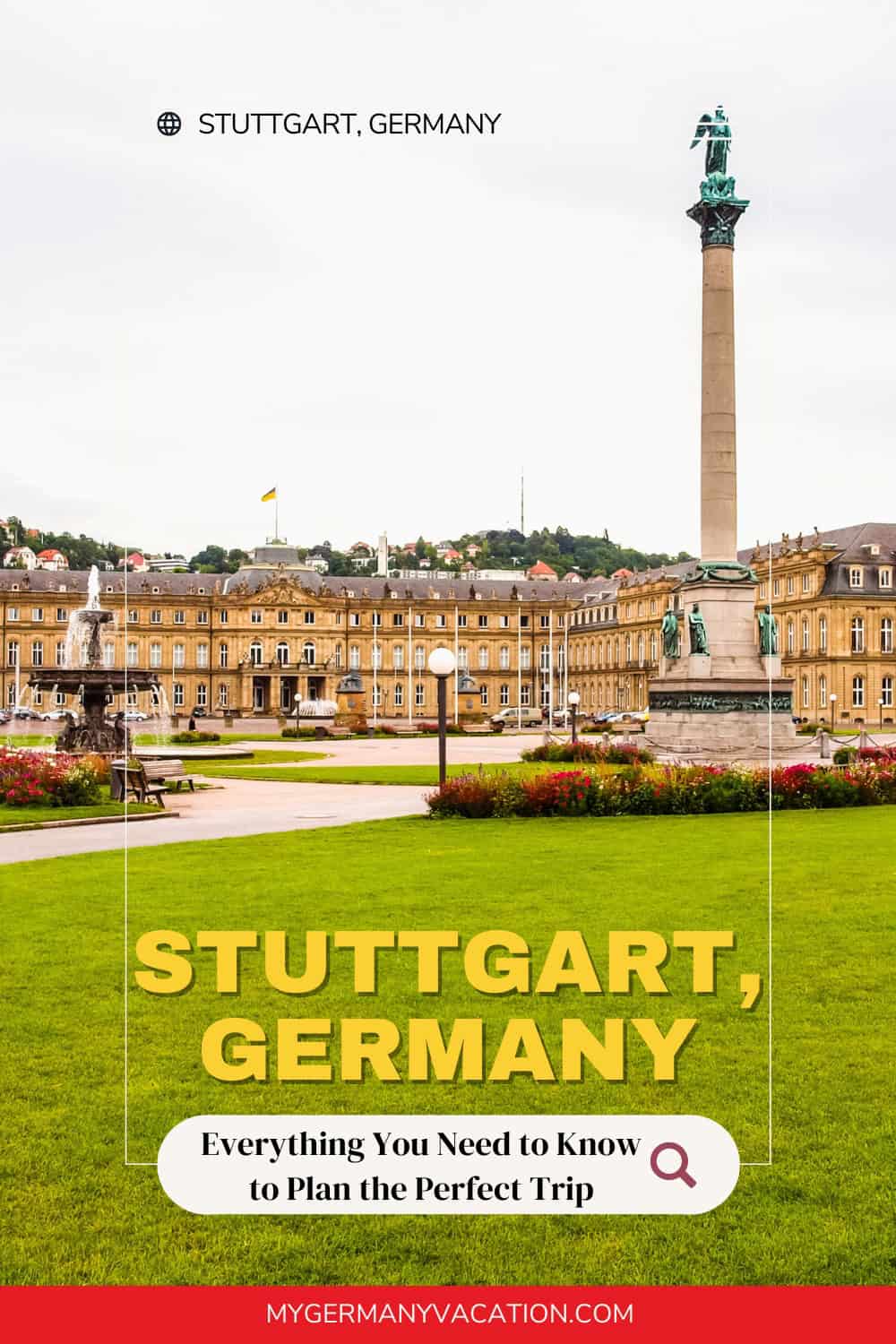
Grab our FREE Germany Trip Planning Checklist Now!

Home » Travel Guides » Germany » 25 Best Things to Do in Stuttgart (Germany)
25 Best Things to Do in Stuttgart (Germany)
In the vine-decked Neckar Valley, Stuttgart is the capital of the state of Baden-Württemberg. For hundreds of years until the 19th century the city was the seat of the Counts and then the Kings of Württemberg, and they left behind royal palaces for that have become government buildings and museums.
Stuttgart was also the city of car-making royalty, as the place where the first car and motorcycle were invented by Karl Benz and Gottlieb Daimler respectively. The headquarters for both Mercedes-Benz and Porsche are in Stuttgart and the stylish new museums for both brands are not to be missed. These are a couple of examples of Stuttgart’s head-turning architecture, joined by an Art Nouveau market hall, a house by Le Corbusier and a state-of-the-art new library.
Let’s explore the best things to do in Stuttgart :
1. Staatsgalerie

This excellent art museum started out in 1843 and is still partly set within its original Neoclassical building.
In the 1980s the architect James Stirling helped raise the museum’s profile with an ambitious Post-Modern extension.
The newer annexe holds 20th-century art by Matisse, Picasso, Salvador Dalí, Franz Marc, Piet Mondrian and Joan Miró.
The original building is filled with painting and sculpture up to the 1800s, with a particular interest in the Renaissance and Baroque masters like Rubens, Rembrandt and Hans Memling.
A couple of masterpieces to keep in mind are the Corpse of Christ by Annibale Carracci and Jerg Ratgeb’s 16th-century Herrenberger Altar.
2. Mercedes-Benz Museum

Visiting the Mercedes-Benz Museum, in a curved metallic building with a double helix, is partly a journey back to the birth of the automobile.
Karl Benz invented what is considered the first true car in 1886. The double helix design allows for two parallel audio-guided tours; one dipping into the distinguished history of the brand, and the other showing the great diversity of vehicles manufactured by Mercedes-Benz.
And because of that double helix design you can swap from one tour to the other at any moment.
The two routes converge when you arrive in the present day and size up the brand’s 21st-century innovations.
In all there are 160 vehicles and 1,500 or more exhibits.
3. Porsche Museum

At Zuffenhausen, a little way up the road from Stuttgart, are the headquarters of another automobile brand of international fame.
The Porsche Museum has been around since the 70s but got a stylish redesign ten years ago and reopened in 2009. The museum uncovers the early days of the brand, and recounts the many innovations of engineer and founder, Professor Ferdinand Porsche, the man who invented the VW Beetle and the first gasoline-electric hybrid.
There are multi-sensual, interactive displays, like a new sound installation you can control and a “touch wall”. Timeless classics like 356, 911 and 917 are just some of an 80-strong fleet of vehicles at the museum.
What’s great is that nearly all are in driving condition and are transported around the world for heritage races; you can even look inside the workshop where they’re maintained.
4. Wilhelma Zoological-Botanical Garden

This much-loved zoo and botanical garden is in the north of Stuttgart on the grounds of a royal palace.
The Wilhelma was first landscaped as a pleasure park during the reign of William I, and he picked a Moorish Revival theme for the royal bathhouse, which is a miniature version of the Alhambra in Granada.
The park opened to the public in 1880 and was rebuilt as a zoo following damage in the war.
There are more than 1,000 species at the zoo, exceeded only by the Berlin Zoo.
Drawing the most attention are the many great apes like chimpanzees, gorillas and orangutans.
The steamy Amazon House is also special, growing 2,000 plant species among habitats for mammals, reptiles and fish.
And then there’s the botanical garden, which has Europe’s largest magnolia grove, thousands of orchid species and dozens of varieties of camellia and azalea.
5. Killesbergpark

Landscaped for a horticultural show in 1939, the Killesbergark is 50 hectares of gardens, fountains and sculptures in a former quarry on high ground in a northern borough of Stuttgart.
Eighty years later the park continues to host gardening events, and its Tal der Rosen “Valley of Roses” is a wonder in summer, as are the 200 dahlia varieties.
There’s a catalogue of public art in the park bringing both whimsy and sophistication.
Most eye-catching being the Killesbergturm, which we’ll come to next.
Children are also very well catered for: They can feed donkeys, ponies and goats at the farm, and in summer ride both a narrow-gauge steam railway and a diesel-powered tram.
6. Killesbergturm

The most memorable thing in the Killesbergturm is a 40-metre cable-stayed tower by the structural engineer Jörg Schlaich.
The award-winning, cone-shaped structure opened in 2000. Two sets of stairs in a double helix format lead to four platforms at 8, 16, 24 and 31 metres.
Combined with the high ground, it leaves you with a supreme, far-reaching view of the city and Neckar Valley.
The tower is safe, but when the wind blows you’ll feel it swaying in the breeze, which can be a bit unnerving if you’re wobbly when it comes to heights.
7. Schlossplatz

In the heart of Stuttgart, this square effuses power and gravitas.
A lot of that comes from the facade of the Neues Schloss, the Classical seat of the kings of Württemberg and HQ for ministries of the Baden-Württemberg state government.
The space in front has been a private pleasure garden and parade ground in its time, but today is a place for the people of Stuttgart to gather for open-air concerts or when there’s something big to celebrate.
A few steps back is a formal garden embellished with fountains and a monumental column for William I. On the south side is the Gothic Old Palace for the Counts of Württemberg, now the state museum, and to the north is the unmissable cupola of the Kunstgebäude, built for the Württemberg Art Association in the 1910s.
- 8. Kunstmuseum Stuttgart

On the southwest corner of Schlossplatz is a modern landmark.
The facade of the Kunstmuseum changes depending on when you pass by.
By day it’s a large, reflective glass cube.
But when the interior is illuminated at night you can see the limestone walls behind the glass.
The design of the galleries inside is also exciting as they make use of a 5,000 square-metre system of disused tunnels in a subtle and imaginative way.
The museum was born in 1924 on the back of a donation by Count Silvio della Valle di Casanova and covers Swabian, German and Swiss art from the 19th and 20th centuries.
Look for the works by the Realist and early Modernist Adolf Hölzel, and the Concrete Artist Dieter Roth.
Otto Dix takes centre stage though, for his Portrait of the Dancer Anita Berber from 1925.
9. Solitude Palace

Posted on a ridge to the west of Stuttgart is a residence and hunting retreat commissioned by the 18th-centruty Duke of Württemberg, Charles Eugene.
Solitude Palace is the Stuttgart equivalent to Berlin’s Sanssouci, a peaceful escape from court life, and the duke oversaw almost every aspect of the design.
You can see for miles from the top of this ridge, and at the northern gate watch the arrow-straight Solitudeallee extend all the way to the royal palace at Ludwigsburg 13 kilometres in the distance.
The palace has Rococo and Neoclassical architecture, and is enriched with glorious ceiling frescoes by the Frenchman Nicolas Guibal.
The best bit is the Weisse Saal (White Hall), under the palace’s striking central dome.
10. Königstraße

To get some real shopping done, go to the 1.2-kilometre boulevard leading diagonally through Stuttgart-Mitte.
Königstraße has been pedestrianised since 1977, and in 2014 received 12,795 visitors per hour, making it the third most frequented shopping street in Germany.
Nine out of ten shops on the street belong to chains, and all the usual names are on hand (Uniqlo, Zara, H&M). Königstraße has long been held in high regard by Stuttgart’s citizens, and once had residences for members of the Württemberg court.
Its current route was plotted by King Friedrich at the start of the 19th century when he relocated his stables and the Eberhardskirche to this street from Solitude Palace.
11. Württemberg Mausoleum

You can catch the bus or S-Bahn to Untertürkheim in the east of Stuttgart, where there’s a solemn royal memorial standing over rows of vines above the Neckar Valley.
The Württemberg Mausoleum was built by William I at the start of the 1820s following the death of his wife Catherine Pavlovna of Russia.
The memorial is in the Palladian style and is the resting place of Catherine, William and their daughter Marie Friederike Charlotte von Württemberg.
The chapel is open in the summer for sightseeing, and has dreamy vistas of Stuttgart.
Above the western entrance reads the inscription “Die Liebe höret nimmer auf“, “Love never ceases”. The family tombs are in the crypt, and the space below the dome produces a haunting echo.
12. Weissenhof Estate

In 1927 world’s leading architects were invited to design 21 buildings for the Deutscher Werkbund exhibition (German Association of Craftsmen). The project was overseen by Ludwig Mies van der Rohe, and the estate is now a UNESCO World Heritage Site made up of the 11 surviving buildings.
Sadly the remaining ten, including designs by Walter Gropius and Hans Poelzig, were claimed by the war, but what has been left is an unrivalled document of avant-garde architecture.
There are buildings by Le Corbusier, Ludwig Mies van der Rohe, Peter Behrens and Jacobus Oud, all in one place.
13. Weissenhofmuseum

Le Corbusier’s building was intended as a showcase for his International style, and this pair of semi-detached houses has since become a museum.
They have his trademark clean lines, demonstrating the technical possibilities created by materials like steel, concrete and glass to increase airflow and the amount of natural light inside.
One of the semi-detached houses is a museum about the Weissenhof Estate, with lots of interesting details like plans, models and contemporary photos of the buildings that have been lost.
The other house has been left as Le Corbusier intended, complying with his “Five Points” and equipped with stowaway beds, sliding doors and a roof terrace.
14. Stiftskirche

The collegiate church in the Innenstadt has the same outline as a church constructed much earlier, in the 900s.
The oldest architecture on the current building is Romanesque style and from the 13th century, with later extensions in an Early Gothic (nave) and then High Gothic style (choir). The current church was built by the 13th-century Count Ulrich I, who resided close by at the Old Castle.
In the chapel of the south tower are tombs for him and his wife Agnes von Schlesien-Liegnitz.
After Ulrich I, and until 1677, the chancel became the burial place for every count of Württemberg . On the north wall is a row of memorial statues for all 11 counts, all sculpted during the Renaissance in 1574.
15. Linden Museum

Stuttgart has what many consider to be the finest ethnological museum in Europe.
The artefacts gathered from Africa, the Far East, Oceania and North and Latin America are like a trip around the world under one roof.
The pieces span hundreds of years and include Indian sculptures going back to the 700s, a 19th-century Native American transformation mask and 800-year old sculptures from Japan’s Kamakura Dynasty.
The collection has been assembled in stages since the 1800s, and now the museum’s aim is to showcase the beauty of other cultures, stimulate debate and promote understanding.
16. Markthalle

The city’s central market hall is a part of many people’s daily routine, even after total destruction in the war and then a fire in the 1990s.
As a gourmet destination the Markthalle has stalls selling specialty foods and exotic treats alongside staples like meat, cheese, vegetables, wine, confectionery and flowers.
The Markthalle was built in 1914 and has a graceful Art Nouveau design.
You don’t even need to look for anything in particular to appreciate the building and its soaring roof, immaculately presented stalls, bustling atmosphere and the scent of spices and freshly prepared food.
You can take it all in from the gallery on the first floor where there’s an Italian restaurant.
17. Stadtbibliothek am Mailänder Platz

The new central library hall opened close to the Hauptbahhof in 2011 and was designed by South Korean architect Eun Young Yi.
The architecture and ethereal white interior put this on the list of things you have to see in Stuttgart.
The cube-shaped exterior is inconspicuous, apart from at night when its panels are illuminated.
But go in (entrance is free) and you’ll step into a huge, cathedral-like hollow space lit from above by a glass roof.
The bookshelves and reading areas line the walls and there’s an almost bewildering system of stairways linking each floor.
Go to the very top and there’s a cafe in the attic with clear views of Stuttgart.
18. Fernsehturm

Lots of Modernist television towers sprouted across Germany in the middle of the 20th century, but Stuttgart’s was the first, and its reinforced concrete construction would be replicated many times.
Topped off at 216 metres, the tower was completed by 1956 at an eye-watering cost of 4.2 million marks.
That sum would be recouped by the start of the 1960s through ticket sales.
You can see what the fuss was about by taking the lift to the observation decks at 150 metres.
The tower stays open until 23:00 in summer, and the sunset and Stuttgart’s lights are well worth the entry fee if you pick a clear day.
In the daytime you can relish the views with a cup of coffee and a pastry at the cafe.
19. Birkenkopf

The highest hill in Stuttgart is partly man-made.
Birkenkopf is a literal mountain of rubble cleared from the ruins of the city following Allied bombing in the Second World War.
That masonry added an extra 40 metres to a hill that now crests at 511 metres above sea level and has a prominence of around 300 metres over the Neckar River.
A walk to the top is an opportunity to reflect on the war, and a large piece of rubble beside at the summit has a plaque stating that the hill is a memorial to the dead and a warning to the living.
At the top you can see as far as the Black Forest and the Swabian Jura.
20. Landesmuseum Württemberg

In the Old Castle on Schlossplatz is a museum about the art, handicrafts, archaeology and ethnography of the state of Baden-Württemberg.
An intriguing fact about the collections is that they derive from the royal cabinets of curiosity first assembled in the 1500s.
In the underground vaults is an astounding assortment of Renaissance clocks, and you can go from there to the Ernesto Wolf Collection, which has gathered an array of glass encompassing four millennia.
Further up you can view the Crown Jewels of Württemberg, medieval sacred art and a marvellous variety of Celtic artefacts, like weapons, jewellery, tools and cookware.
And from the royal cabinet of curiosities are two of the world’s four surviving Aztec feather shields, a card game dating to 1430 and a celestial globe designed by the 15th-century astronomer Johannes Stöffler.
21. Neckarpark

The Mercedes-Benz Museum is in a 55-hectare complex for events, entertainment and sport on the right bank of the Neckar River.
As well as the museum, the Neckarpark contains the Mercedes-Benz Arena, home stadium of the football team, VfB Stuttgart.
Also in the park is the Porsche-Arena, for high-profile indoor sports, and various exhibition halls and sports facilities.
There are three sports teams and 12 sporting associations based in the park.
Try to come when there’s something big on, because the Neckarpark really kicks into top gear during a citywide event.
The largest of these are the three-week Cannstatter Volksfest in Autumn, and the Frühlingsfest (Spring Festival), in late-April/early-May.
22. Standseilbahn Stuttgart

In Heslach to the southwest of Stuttgart there’s an elegant funicular railway shuttling up the slope from the Südheimer Platz U-Bahn station to the Stuttgart Degerloch cemetery.
The railway line is part of the public transport network, has heritage protection, and its cars are made from dark teakwood.
When it was complete in 1929 the Standseilbahn was the first semi-automatic cable railway in Europe.
Those two handsome cars are originals, even if one had to be restored after being hit by a tree in 1999. The trip to the top takes four minutes, and drops you off at a graveyard in the forest.
You could use the upper station as a starting point for a walk in the woods.
23. Gottlieb Daimler Memorial

Car aficionados can’t afford to miss this piece of automotive history on Taubenheimstraße.
The Gottlieb Daimler Memorial is the large shed where Daimler and fellow engineer Wilhelm Maybach worked tirelessly in the 1880s to develop a liquid petroleum engine that he hoped could power vehicles on land, water and even in the air.
It was here that they invented the first light sprinting motor, as well as a two-wheeled “riding wagon”, the first ever motorcycle and the “Neckar”, the first ever motorboat.
By 1887 the workshop had become too small and the pair relocated to a factory.
The old atmosphere of a workshop has been recreated, and there are models, photos, sketches, diagrams and a reproduction of that riding wagon.
24. Cannstatter Volksfest

For three weeks between September and October the Neckarpark Stuttgart puts on the second largest beer festival in the world, after Munich’s Oktoberfest.
The Cannstatter Volksfest began as a harvest festival to revitalise the city following a disastrous crop failure in the Year Without a Summer in 1816. This has burgeoned into a large-scale beer festival and funfair.
Seven huge tents seat thousands of revellers, and are named after the breweries that supply the beer.
The Fruchtsäule, a 26-metre column adorned with fruit, is at the heart of the celebrations and harks back to the time of the Württemberg monarchy.
And as for the funfair and market, you may never have seen something on this scale before.
There are 60 or more stalls, dozens of amusement stands, up to 100 places serving food, and all manner of rides like rollercoasters, carousels and Ferris wheels.
25. Stuttgart Christmas Market

There are no half measures in Stuttgart at Christmas time either.
Beginning on the last Thursday of November the centre of the city at Schloßplatz.
All the streets and squares north and west are overrun with hundreds of stalls.
Each open space has something different going on.
So at the Renaissance Courtyard of the Old Palace there are dignified concerts for seasonal classical music, while Schloßplatz itself is a winter wonderland with a fairytale theme, miniature railway and skating rink.
Stuttgart’s Christmas tradition is one of the oldest in Europe, dating back to 1692.
25 Best Things to Do in Stuttgart (Germany):
- Staatsgalerie
- Mercedes-Benz Museum
- Porsche Museum
- Wilhelma Zoological-Botanical Garden
- Killesbergpark
- Killesbergturm
- Schlossplatz
- Solitude Palace
- Königstraße
- Württemberg Mausoleum
- Weissenhof Estate
- Weissenhofmuseum
- Stiftskirche
- Linden Museum
- Stadtbibliothek am Mailänder Platz
- Fernsehturm
- Landesmuseum Württemberg
- Standseilbahn Stuttgart
- Gottlieb Daimler Memorial
- Cannstatter Volksfest
- Stuttgart Christmas Market

Stuttgart Travel Guide: Top 30 Things to Do in Stuttgart, Germany
Welcome! Ready to explore Stuttgart? This dynamic city, nestled in the heart of Germany’s Baden-Württemberg region, seamlessly combines rich history with cutting-edge innovation. Known as the cradle of the automobile, Stuttgart is not only the home of Mercedes-Benz and Porsche but also a city of lush green spaces, vibrant festivals, and a flourishing arts scene. Whether you’re a car enthusiast, a nature lover, or a culture vulture, Stuttgart has something exciting for you.
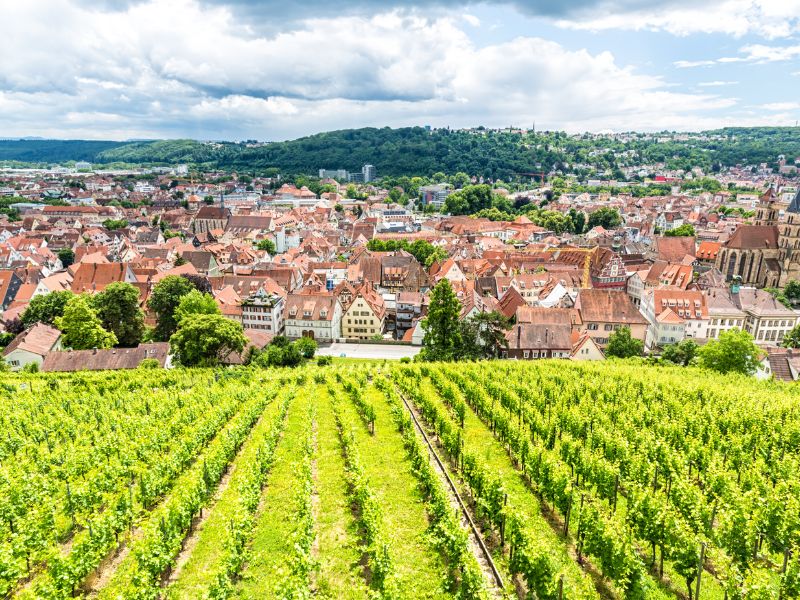
Discover the City’s Heartbeat
A City of Innovation and Tradition Stuttgart’s storied past as an industrial powerhouse is just the beginning. Dive into its automotive heritage at the Mercedes-Benz Museum or get a glimpse of the future at the Porsche Museum. Not just about cars, the city’s historical layers peel back to reveal palatial architecture like the Altes Schloss and the Neues Schloss, standing majestically in the Schlossplatz.
Green Escapes
Parks and Recreation Need to breathe in some fresh air? Stuttgart’s many parks and gardens offer a verdant escape from the urban rush. Head to the Killesberg Park for a leisurely stroll or enjoy a boat ride on the Max-Eyth-See. The city’s position in a valley surrounded by vine-covered hills also provides ample hiking opportunities just minutes from the city center.
Cultural Richness
Feast of Festivals Stuttgart loves to celebrate, and its cultural calendar is brimming with events. From the colorful Stuttgart Spring Festival to the intoxicating Cannstatter Volksfest, there’s always something happening. Winter brings the magical Stuttgart Christmas Market, one of Europe’s largest and oldest, lighting up the city’s squares and alleys with festive cheer.
Savor the Local Flavors
A Culinary Journey Indulge in the flavors of Swabian cuisine; hearty, delicious, and distinctly German. Must-try dishes include Maultaschen (Swabian ravioli) and Spätzle (egg noodles), perfect with a local wine from the surrounding vineyards. And yes, the beer here is just as good as you’d expect—this is Germany, after all!
Why Stuttgart? Stuttgart’s unique blend of automotive heritage, scenic landscapes, and vibrant cultural scene makes it a fascinating destination for travelers. Each visit peels back a layer, revealing an intricate mosaic of experiences. So pack your curiosity and a good pair of walking shoes, and prepare to be captivated by the charm and spirit of Stuttgart. Whether it’s your first visit or your tenth, the city is ready to unfold its treasures just for you. Welcome to Stuttgart—let your adventure begin!
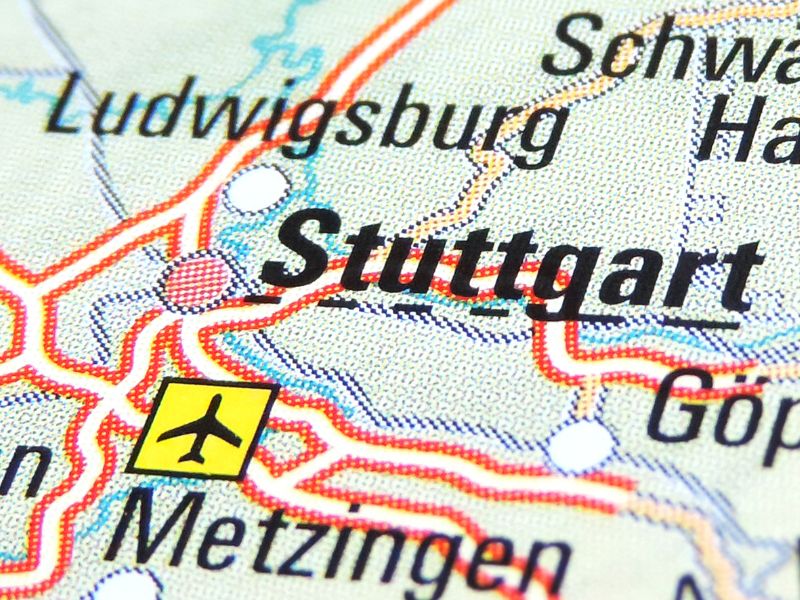
Stuttgart City Guide: A Brief History Of Stuttgart, Germany
Grab a cup of coffee, and let’s travel back in time. Stuttgart, now a bustling metropolis, began its humble origins as a stud farm (“Stuotgarten”) for breeding warhorses in the 10th century. This small settlement evolved through the ages into the vibrant city known today, renowned for its cultural richness and industrial prowess.
From Horses to Ducal Power
The Birth of a City In the early Middle Ages, Stuttgart’s strategic location in the fertile Neckar valley helped it grow from a horse-breeding village into a thriving agricultural town. By the 14th century, it caught the eye of the Counts of Württemberg, who saw its potential as a political stronghold. They established Stuttgart as their ducal seat, setting the stage for its rise to prominence.
A Ducal Capital The city’s status as the capital of the Duchy of Württemberg brought wealth and a flourishing Renaissance culture. Magnificent castles such as the Altes Schloss and the grand Neues Schloss were constructed, which today stand as symbols of Stuttgart’s regal past. Under ducal stewardship, the city became a center of arts and culture—a legacy that continues to enrich its modern identity.
Industrial Revolution and Beyond
On the Fast Track to Modernity The 19th century ushered in the Industrial Revolution, and Stuttgart was quick to get on board. It transformed into an industrial hub, setting foundations for what would become its global automotive fame. The establishment of automotive giants like Mercedes-Benz and Porsche in the early 20th century marked a new era of innovation and growth.
War and Reconstruction World War II brought significant destruction to Stuttgart, but the post-war years were a testament to the city’s resilience. The rebuilding period was marked by innovative urban planning and architectural experimentation, making Stuttgart a showcase of modernist ideas and a symbol of the Wirtschaftswunder, Germany’s economic miracle.
Stuttgart Today
A Thriving Urban Tapestry Today, Stuttgart stands as a testament to its layered history, blending historical architecture with modern infrastructure. It’s a hub for both cultural and automotive enthusiasts, offering museums, theaters, and opera houses alongside its famous car museums. The city’s green spaces and vineyards drape the urban landscape, offering escapes within the city limits.
Cultural Legacy Continues Festivals and fairs throughout the year celebrate everything from wine to Christmas, drawing visitors from across the globe. The Cannstatter Volksfest, rivaling Oktoberfest in size and fun, showcases the city’s love for tradition and partying—a tradition as old as the city itself.
Forward-Thinking Stuttgart With its commitment to innovation and sustainability, Stuttgart is not just living in the past but also driving towards a future where tradition meets modernity head-on. This city knows where it’s been and definitely knows where it’s going. Ready to explore more?
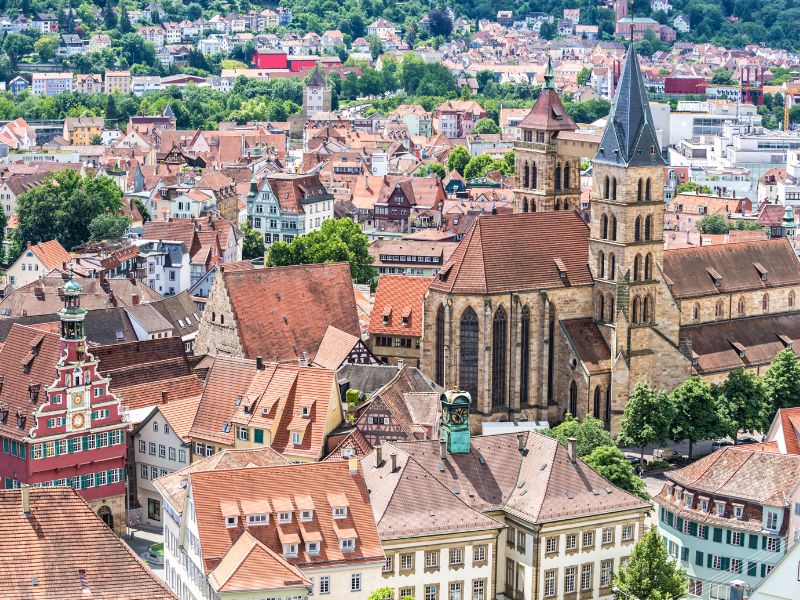
Stuttgart Top Attractions and Best Places to Visit in Germany
Mention Stuttgart to a German car enthusiast, and their eyes will light up. That’s because this city, despite its tranquil appearance, is home to two auto giants – Mercedes Benz and Porsche. If you love fast cars, don’t miss this destination.
Begin your time in Stuttgart by visiting the Mercedes Benz Museum . This institution pays homage to the automobile brand that calls this city home. Before walking in, appreciate the building itself. From the moment you arrive, its post-modernist curves steal the show.
Within, you’ll find 160 vehicles, dating from the earliest models to the most recent. Get a free audio guide when you arrive – it will fill in details you might not already know. If you have time, tour the Untertürkheim engine factory, which allows a look at this company’s manufacturing process.
Stuttgart is also home to the Porsche. Not to be outdone by their rivals, they also offer an attraction – the Porsche Museum . Since 2009, this institution has offered more than 80 exhibits showing off Porsche models from various eras.
More Attractions
Here, you’ll find everything from street-legal cars to Formula 1 machines. As with the Mercedes Benz Museum, the Porsche Museum offers audio guides in various languages. Take one, as it’ll teach you things that you’d never know otherwise.
Art lovers will not want to miss a visit to Staatsgalerie . Once an art museum of only regional significance, a change in focus in the 1980s changed everything. Today, critics regard it as one of Europe’s finest collections of art.
Here, there are two main focuses – European classics and modern art. In the old gallery, you’ll find German and Italian works dating back to the 14th century. In the new gallery, you’ll find modern art from artists like Picasso, Schlemmer, and Beuys.
Around the holidays, make an effort to attend the Stuttgart Christmas Market . Every year, more than three million come here to buy crafts, drink gluhwein, and listen to carols. Feel free to join and share in their merriment.
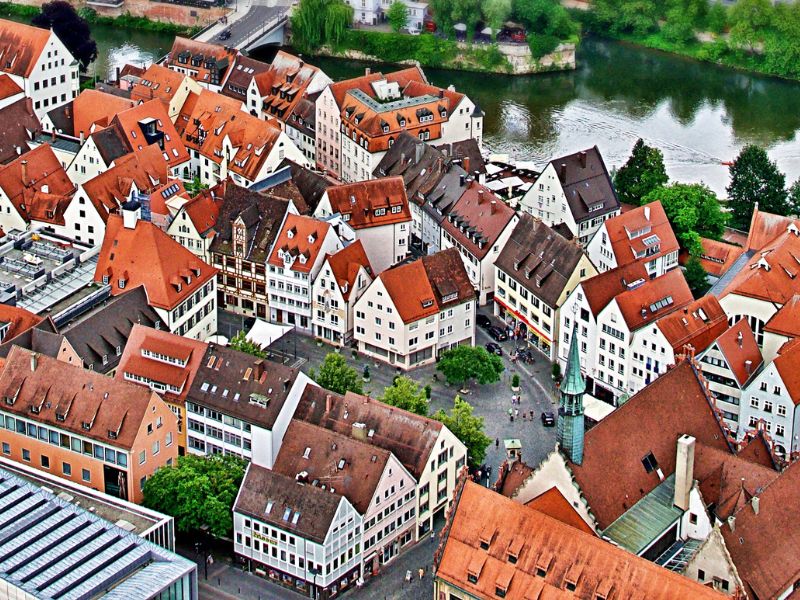
Other Cultural Attractions: Trip to Stuttgart, Germany
Love soccer/football? If possible, attend a match at the Mercedes Benz Arena . During the Bundesliga season, this stadium is home to VfB Stuttgart. If you’re not familiar with German football, Bundesliga is equivalent to the English Premier League in the United Kingdom.
Usually, this arena plays host to as many as 60,000 spectators. However, back in 1950, its attendance record was a stunning 97,553 during an international match between Germany and Switzerland. When this building isn’t hosting football-crazed fans, it also holds concerts. In the past, bands such as Depeche Mode and Pink Floyd have packed this venue.
Scope out amazing views from the top of Fernsehturm Stuttgart . Standing 700 feet above the surrounding landscape, the vistas from its observation deck are gobsmacking. Not only can you get views over Stuttgart, but views of distant mountains are also possible.
Other Attractions
Up here, there are plenty of amazing photo opportunities. However, be sure to bring a warm jacket, as winds up here can get pretty stiff.
If you are travelling as a family in the Stuttgart area, add the Wilhelma Zoologisch-Botanischer Garten to your list. The creators of this combination botanical garden/zoo located it on the grounds of a former castle. This decision has given this place an ambience that places it above competing attractions in Germany.
Here, you’ll find 1,200 species of animal, plus 6,000 different plants from around the world. This park also includes an aquarium, where you’ll find sea lions and other marine species.
During your Stuttgart explorations, take some time to chill out in Höhenpark Killesberg . This giant public park, which spans over 123 acres, contains not just flower beds, but monuments, an observation tower, and even a mini-railway. If you just want to relax, find the beer garden and watch the world go by.
What To Eat
If you’re visiting Stuttgart at a chilly time of year, warm up with some Gaisburger Marsch . This beef stew, which originated in Stuttgart, contains cubed beef and a medley of vegetables. Chefs slow-cook this hearty meal for hours, producing a rich flavour you won’t want to miss.
More in the mood for pasta? Then find a restaurant that serves Schwäbische Maultaschen . Cooks start by stuffing these pasta dumplings with minced beef/pork, bread crumbs, and spinach. Then, they either fry it in oil with egg, or they cook it in broth. No matter how they prepare it, this dish will make you feel whole.
Lastly, get a Schwarzwälder Kirschtorte for dessert. Translating to English as Black Forest Cake, this dark chocolate and cherry cake is a beloved local’s favourite. And if you’ve never had it before, it will soon become yours.
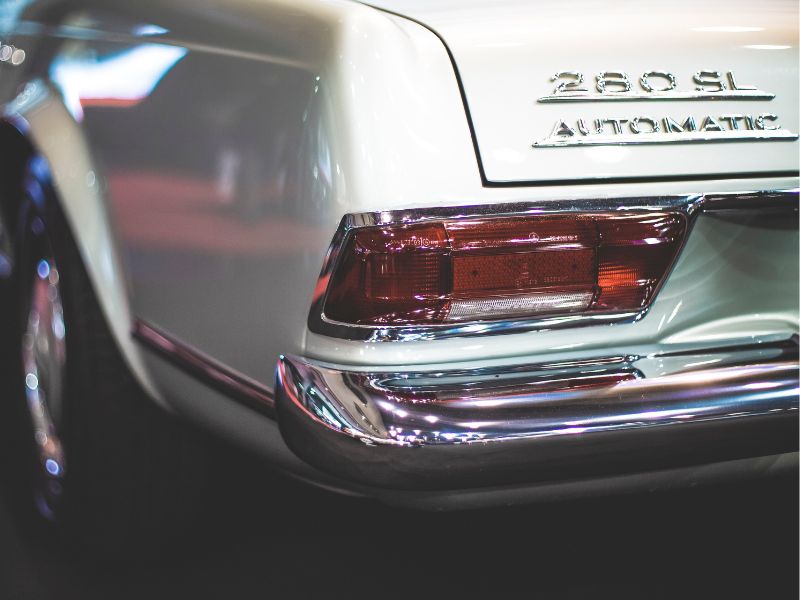
Top 30 Things To Do in Stuttgart, Germany For Visitors
Here are the top 30 things to do in Stuttgart:
1. Visit the Mercedes-Benz Museum
The Mercedes-Benz Museum showcases the brand’s history, with over 160 vehicles on display, from the earliest models to futuristic concept cars. The museum’s architecture is as innovative as the cars it houses. Visitors can explore the evolution of the automobile and Mercedes-Benz’s role in it. It’s a must-visit for car enthusiasts and history buffs alike.
2. Explore the Porsche Museum
The Porsche Museum presents the history and excitement of Porsche vehicles with a collection that includes iconic models like the 911. The museum’s modern architecture is a sight to behold, featuring a dynamic design. Interactive exhibits and rare prototypes provide a deep dive into Porsche’s engineering and design philosophy. Guided tours offer fascinating insights into the brand’s legacy.
3. Enjoy the Wilhelma Zoo and Botanical Garden
Wilhelma is one of Europe’s largest zoological-botanical gardens, home to over 1,200 species and a wide variety of plants from around the world. The historical Moorish architecture adds to the unique charm of the garden. Visitors can enjoy themed gardens, an aquarium, and terrariums alongside the animal exhibits. It’s a perfect day out for families and nature lovers.
4. Stroll Around Schlossplatz
Schlossplatz is Stuttgart’s largest square and serves as the city’s vibrant heart, surrounded by historic buildings and lush gardens. It’s a popular gathering spot for locals and tourists, with many events and festivals taking place throughout the year. The New Palace (Neues Schloss) and the Jubilee Column are notable landmarks. The square offers excellent opportunities for leisurely walks and people-watching.
5. Visit the Staatsgalerie Stuttgart
The Staatsgalerie Stuttgart is an art museum with an extensive collection ranging from the Middle Ages to contemporary art. Its modern wing, designed by British architect James Stirling, is a masterpiece of postmodern architecture. The museum houses works by European masters such as Picasso, Rembrandt, and Dürer. Temporary exhibitions complement the permanent collection, making it a dynamic destination for art lovers.
6. Tour the Old and New State Parliament Buildings
The juxtaposition of the Old and New State Parliament buildings illustrates Stuttgart’s blend of tradition and modernity. Guided tours offer insights into the political history of Baden-Württemberg and the architectural significance of the buildings. The plenary hall of the new building features a unique, transparent design. Visitors can learn about the legislative process and the state’s political development.
7. Experience the Cannstatter Volksfest
The Cannstatter Volksfest is one of the largest and most traditional festivals in Stuttgart, offering thrilling rides, beer tents, and Swabian delicacies. It takes place annually in the fall and attracts millions of visitors from around the world. The festival’s atmosphere is similar to Oktoberfest but with a more local feel. The fruit column, a symbol of the Volksfest, stands tall, representing a bountiful harvest.
8. Relax in Killesberg Park
Killesberg Park, known for its beautiful landscapes, water features, and flower gardens, offers a tranquil escape from the city’s hustle and bustle. The park also features a miniature railway that delights both children and adults. Various sculptures and artworks are scattered throughout the park. Seasonal events, including light shows and garden exhibitions, add to its charm.
9. Discover the Stuttgart City Library
The Stuttgart City Library is renowned for its striking cube-shaped design and all-white interior. It’s a paradise for book lovers, with an extensive collection and reading spaces spread over nine floors. The library hosts regular events, workshops, and exhibitions. The rooftop terrace offers panoramic views of the city.
10. Visit the Solitude Palace
Solitude Palace is a magnificent 18th-century Rococo palace located on the outskirts of Stuttgart, offering stunning views of the surrounding landscape. The palace’s architecture and interior are meticulously preserved, showcasing the opulence of the era. Guided tours provide insights into the palace’s history and its use as a hunting lodge and summer residence. The surrounding Solitude Park is perfect for leisurely strolls.
11. Explore the Ludwigsburg Residential Palace
The Ludwigsburg Residential Palace, just north of Stuttgart, is one of Europe’s largest Baroque palaces, featuring lavish interiors and beautiful gardens. The palace hosts various festivals, concerts, and events throughout the year. Visitors can explore its museums, including the Fashion Museum and the Ceramics Museum. The palace’s Fairy Tale Garden is a delight for families.
12. Enjoy the Stuttgart Ballet
The Stuttgart Ballet is one of the world’s leading ballet companies, known for its innovative performances and outstanding dancers. Attending a performance at the Stuttgart Opera House is an unforgettable experience for culture enthusiasts. The ballet’s repertoire includes both classic and contemporary works. Behind-the-scenes tours offer a glimpse into the world of professional ballet.
13. Hike in the Schönbuch Nature Park
The Schönbuch Nature Park, located just south of Stuttgart, is a vast forested area ideal for hiking, cycling, and wildlife watching. It’s one of the region’s most important recreational areas, offering well-marked trails and scenic viewpoints. The park is home to diverse flora and fauna, including deer and wild boars. Guided nature walks and educational programs are available.
14. Discover the Württemberg State Museum
The Württemberg State Museum in the Old Castle offers a journey through the region’s history, from prehistoric times to the present day. Its collections include archaeological finds, medieval art, and royal treasures. The museum’s interactive exhibits make it engaging for visitors of all ages. Special exhibitions focus on various aspects of local and European history.
15. Visit the Stuttgart TV Tower
The Stuttgart TV Tower, the world’s first television tower built from concrete, offers panoramic views of the city and surrounding areas. Visitors can ascend to the observation deck for breathtaking vistas. The tower also features a café and a restaurant. It’s an iconic landmark of Stuttgart and a testament to modern engineering.
16. Explore the Weissenhof Estate
The Weissenhof Estate is a UNESCO World Heritage site and a key location for modern architecture, featuring buildings designed by architects like Le Corbusier and Mies van der Rohe in the 1920s. The estate represents the “New Building” movement. Guided tours offer insights into the architectural concepts and historical context. The Weissenhof Museum, located in one of the estate’s houses, provides further information about this pioneering project.
17. Tour the Stuttgart Beer Festival Grounds
The Stuttgart Beer Festival, also known as the Stuttgart Spring Festival, is held annually, offering a wide range of beers, traditional foods, and amusement rides. It’s one of Germany’s most popular folk festivals. Visitors can enjoy the festive atmosphere, music, and entertainment. The festival is a celebration of Swabian beer culture and hospitality.
18. Visit the Museum of Natural History Stuttgart
The Museum of Natural History Stuttgart, housed in two separate buildings, offers fascinating insights into the world of paleontology and biology. The Rosenstein Castle houses the biology collection, featuring regional and exotic animals in dioramas. The Löwentor Museum focuses on paleontology, displaying dinosaur fossils and other prehistoric finds. It’s an educational visit for families and science enthusiasts.
19. Stroll Through Rosenstein Park
Rosenstein Park is one of Stuttgart’s largest and most beautiful parks, offering wide lawns, historic trees, and scenic walking paths. It’s a peaceful retreat for nature walks, picnics, and leisure activities. The park surrounds Rosenstein Castle, adding to its picturesque setting. It’s a significant part of Stuttgart’s “Green U,” a series of interconnected parks and green spaces.
20. Experience the Stuttgart Wine Festival
The Stuttgart Wine Festival celebrates the region’s wine-making tradition, offering a wide selection of local wines and culinary specialties. Visitors can taste wines from local vineyards and enjoy Swabian dishes in a convivial atmosphere. The festival takes place in late summer and is a highlight for wine enthusiasts. It’s an excellent opportunity to learn about the wine-making process and the variety of wines produced in the region.
21. Take a Walk in the Green U
The Green U is a unique urban planning concept in Stuttgart, connecting several parks and green spaces in a U-shaped formation around the city center. It offers recreational areas, sports facilities, and beautiful landscapes. Visitors can enjoy a leisurely walk, bike ride, or picnic while exploring different parts of the city. The Green U highlights Stuttgart’s commitment to preserving green spaces and promoting outdoor activities.
22. Explore the SI-Centrum Stuttgart
The SI-Centrum Stuttgart is a leisure and entertainment complex featuring musical theaters, cinemas, a casino, and dining options. It’s a popular destination for evening entertainment and cultural events. The complex hosts internationally acclaimed musicals and shows. It also offers wellness facilities and a hotel, making it a comprehensive entertainment hub.
23. Visit the Esslingen Medieval Market and Christmas Market
Just outside Stuttgart, the Esslingen Medieval Market and Christmas Market transport visitors back in time with their historical setting and medieval-themed stalls. Artisans, performers, and vendors in period costumes create an immersive experience. The market offers unique crafts, traditional foods, and mulled wine. It’s a festive and atmospheric celebration during the advent season.
24. Relax at Max-Eyth-See
Max-Eyth-See is a serene lake located in the northern part of Stuttgart, offering opportunities for boating, fishing, and birdwatching. The surrounding park and vineyards provide a picturesque setting for relaxation and leisure activities. It’s a popular spot for jogging, cycling, and picnicking. The lake is a peaceful oasis within the city, reflecting Stuttgart’s connection to nature.
25. Experience the Feuerseeplatz
Feuerseeplatz, with the striking Johanneskirche (St. John’s Church) on the Feuersee (Fire Lake), is one of Stuttgart’s most picturesque locations. The church’s reflection in the lake, especially at night, creates a captivating scene. It’s a popular spot for photography and leisurely walks. The surrounding area features charming cafés and shops.
26. Tour the Daimler Factory
A tour of the Daimler Factory offers an inside look at the automotive manufacturing process of one of Stuttgart’s most famous companies. Visitors can witness the assembly of Mercedes-Benz vehicles and learn about the company’s history and innovations. It’s an informative experience for those interested in engineering and the automotive industry. Pre-booking is required due to limited availability.
27. Explore the Bohnenviertel District
The Bohnenviertel District, one of Stuttgart’s oldest neighborhoods, offers a glimpse into the city’s past with its narrow streets and historic buildings. The area is now home to independent shops, galleries, and restaurants. It’s a great place to explore on foot, discovering unique items and enjoying local cuisine. The district hosts various cultural events and festivals throughout the year.
28. Discover the Stuttgart Stadtbibliothek
The Stuttgart City Library is an architectural marvel, known for its modern cubic design and all-white interior. It serves as a cultural center, offering a vast collection of books, media, and regular events for all ages. The library’s rooftop terrace provides stunning views of the city. It’s a peaceful space for reading, studying, and artistic inspiration.
29. Visit the Karlshöhe
Karlshöhe is a hill in Stuttgart offering panoramic views of the city and surrounding areas. It’s a popular spot for locals to relax and enjoy the outdoors, with a beer garden and walking paths. The hill is also home to a community garden and environmental education center. It’s an example of Stuttgart’s green urban spaces, providing a break from city life.
30. Enjoy the Killesberg Light Show
The Killesberg Park Light Show is an annual event where the park is illuminated with thousands of lights, creating a magical atmosphere. Visitors can enjoy light installations, live music, and entertainment. The event takes place in the summer, turning the park into a nighttime wonderland. It’s a festive and visually stunning experience for visitors of all ages.
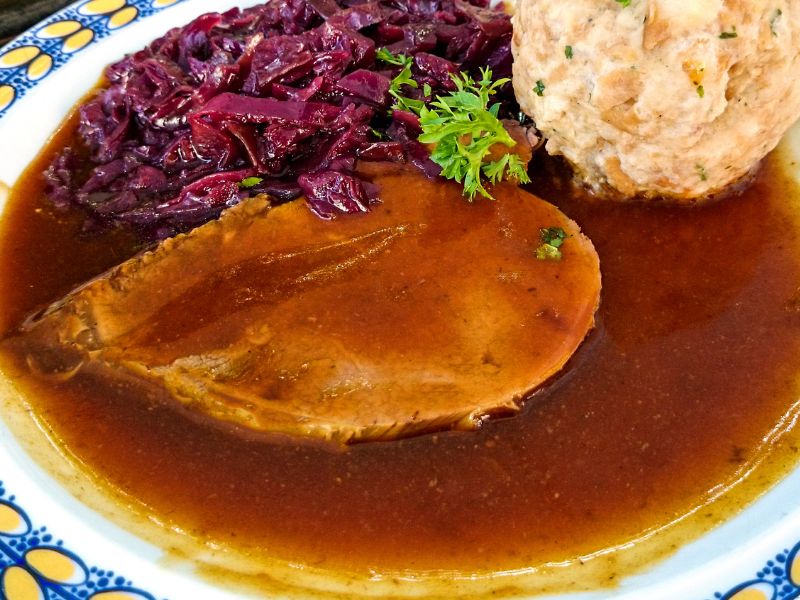
What To Eat and Drink in Stuttgart, Germany
From traditional Swabian dishes to modern German cuisine, there’s an array of flavors waiting to be savored. Here’s your travel guide to the must-try foods and beverages when visiting this vibrant city.
Traditional Swabian Delights
1. Maultaschen
- Description: Often referred to as Swabian ravioli, these are large dumplings filled with a mixture of minced meat, spinach, bread crumbs, and onions, seasoned with various herbs and spices.
- How to Enjoy: Maultaschen can be served in broth as a soup or fried with eggs and onions.
- Where to Find: Check out local restaurants like Weinstube Am Stadtgraben for a traditional take on this dish.
- Description: This is a type of soft egg noodle or dumpling that is a staple in Swabian cooking.
- How to Enjoy: Spätzle is often served as a side dish to meat dishes or topped with cheese (Käsespätzle) and crispy onions.
- Where to Find: Alte Kanzlei in Stuttgart offers some of the best homemade Spätzle in the city.
3. Schwäbischer Zwiebelrostbraten
- Description: A hearty beef dish featuring a thick steak topped with fried onions, often accompanied by gravy and Spätzle or potatoes.
- How to Enjoy: Ideal for a filling dinner, this dish pairs perfectly with a local red wine.
- Where to Find: Visit the Gasthaus Bären for a traditional rendition of this beloved local specialty.
Must-Try Meats and More
4. Sauerbraten
- Description: A pot roast, usually of beef (but other meats such as lamb, mutton, pork, and traditionally, horse), marinated before slow-cooking as pot roast.
- How to Enjoy: Sauerbraten is traditionally served with red cabbage, potato dumplings, or Spätzle.
- Where to Find: The cozy Weinstube Fröhlich offers a classic Sauerbraten that melts in your mouth.
5. Wurstsalat
- Description: A tart sausage salad made from Lyoner, vinegar, onions, and pickles, often dressed with a vinegar and oil dressing and served with bread.
- How to Enjoy: It’s a refreshing meal, perfect as a light dinner or a hearty lunch.
- Where to Find: Enjoy this dish at the Biergarten im Schlossgarten, where it’s served with a picturesque view.
Sweet Treats
6. Schwarzwälder Kirschtorte (Black Forest Cake)
- Description: Known worldwide, this iconic cake is made with several layers of chocolate sponge cake sandwiched with whipped cream and cherries.
- How to Enjoy: It’s a must-try for dessert or with an afternoon coffee.
- Where to Find: Café Königsbau is famed for its authentic and delicious Black Forest Cake.
7. Apfelkuchen (Apple Cake)
- Description: A popular German dessert, this cake is made from sliced apples, butter, flour, sugar, and eggs.
- How to Enjoy: Best served fresh from the oven and is a delightful accompaniment to coffee.
- Where to Find: Try it at Café Kaiserbau; their version is especially sumptuous.
Local Beverages
8. Württemberger Wine
- Description: The vineyards around Stuttgart produce some of Germany’s best wines, especially the red Trollinger and white Riesling.
- How to Enjoy: Visit a local Weinstube or partake in a wine tasting tour in the region.
- Where to Find: The Weinbaumuseum Stuttgart offers tastings and insights into the local wine culture.
9. German Beer
- Description: No visit to Germany is complete without sampling some of the local brews.
- How to Enjoy: Enjoy a refreshing pilsner or explore local specialties at a beer garden.
- Where to Find: Calwer-Eck-Bräu, a local brewery in Stuttgart, offers a great selection along with traditional German pub food.
Culinary Experiences
10. Stuttgart Beer Festival (Cannstatter Volksfest)
- Description: While not a dish, this festival is an essential experience for foodies, featuring countless food stalls and beer tents.
- How to Enjoy: Sample various dishes and brews in one of Europe’s largest and most exciting beer festivals.
- Where to Find: Held in the Cannstatter Wasen area, this annual event draws visitors from all over the world.
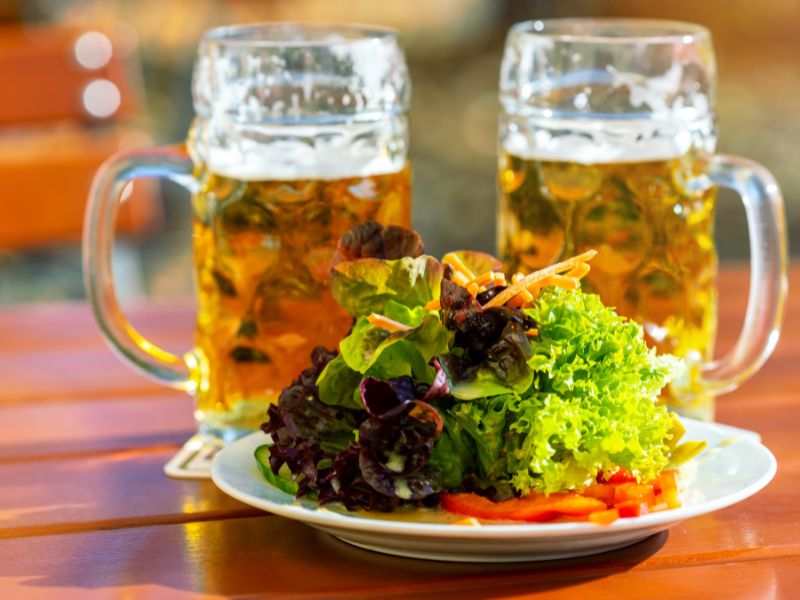
Top Restaurants in Stuttgart, Germany
Whether you’re looking for a fine dining experience or a cozy local eatery, here are some of the top restaurants in Stuttgart that promise an unforgettable meal.
1. Restaurant Christophorus
- Cuisine: Steakhouse
- Specialty: Known for serving some of the best steaks in town, sourced from premium cuts of beef.
- Ambience: Located in the Porsche Museum, the restaurant offers a sleek, modern setting with views of classic Porsche cars.
- Why Visit: Perfect for car enthusiasts and meat lovers alike, combining a unique setting with top-notch dining.
2. Wielandshöhe
- Cuisine: Swabian, German
- Specialty: Offers a seasonal menu with ingredients sourced from local producers, including dishes like Maultaschen and Zwiebelrostbraten.
- Ambience: A warm, inviting atmosphere with panoramic views of Stuttgart’s vineyards.
- Why Visit: Celebrity chef Vincent Klink heads this establishment, ensuring a high-quality culinary experience that highlights regional traditions.
3. Speisemeisterei
- Cuisine: Contemporary European
- Specialty: Known for its innovative approach to traditional dishes, the restaurant has a Michelin star for its exquisite menu.
- Ambience: Set in a historic building in the Hohenheim Gardens, offering a romantic and refined dining experience.
- Why Visit: Ideal for special occasions, the Speisemeisterei offers beautifully presented dishes and a selection of fine wines.
- Cuisine: Fusion, International
- Specialty: Focuses on a fusion of European and Asian cuisines, with standout dishes such as sushi and Wagyu beef.
- Ambience: Modern and minimalist decor, providing a chic backdrop for dining.
- Why Visit: For a taste of high-end fusion cuisine that creatively blends different culinary traditions.
5. Weinstube Am Stadtgraben
- Cuisine: Traditional German, Swabian
- Specialty: Offers classic Swabian dishes like Schnitzel and Spätzle, prepared with a touch of gourmet flair.
- Ambience: A cozy, traditional German wine tavern setting, complete with rustic wooden furniture and a friendly atmosphere.
- Why Visit: Experience authentic local cuisine in a setting that feels like stepping back in time.
- Cuisine: Modern European
- Specialty: Known for its avant-garde culinary techniques and presentation, including a popular tasting menu.
- Ambience: Located atop Stuttgart’s art museum, the restaurant offers striking views over the city’s rooftops.
- Why Visit: A great choice for foodies looking for a modern dining experience with spectacular views.
7. OGGI – Pizza Bar
- Cuisine: Italian
- Specialty: Excelling in handmade pizzas and traditional Italian pastas.
- Ambience: Lively and casual, perfect for a relaxed meal with friends or family.
- Why Visit: For a slice of the best pizza in town, OGGI’s vibrant atmosphere and authentic dishes are not to be missed.
8. Gasthaus Bären
- Cuisine: German, Swabian
- Specialty: Traditional dishes served with a contemporary twist; the roast duck is a local favorite.
- Ambience: Offers a quaint, homely feel typical of a traditional German Gasthaus.
- Why Visit: For a hearty, traditional meal that showcases the best of local cuisine in a warm and welcoming setting.
9. Der Rote Hirsch
- Cuisine: German, International
- Specialty: Known for its creatively plated modern dishes and a wide selection of vegan options.
- Ambience: Contemporary with artistic touches that reflect the menu’s creative approach.
- Why Visit: Perfect for diners looking to enjoy innovative cooking in a trendy, modern environment.
10. Zirbelstube
- Cuisine: German, Fine Dining
- Specialty: Offers a luxury dining experience with meticulously crafted dishes that change seasonally.
- Ambience: Elegant and sophisticated, suitable for a refined dining experience.
- Why Visit: If you’re in search of a Michelin-starred meal that combines luxury with innovation, Zirbelstube is a must.
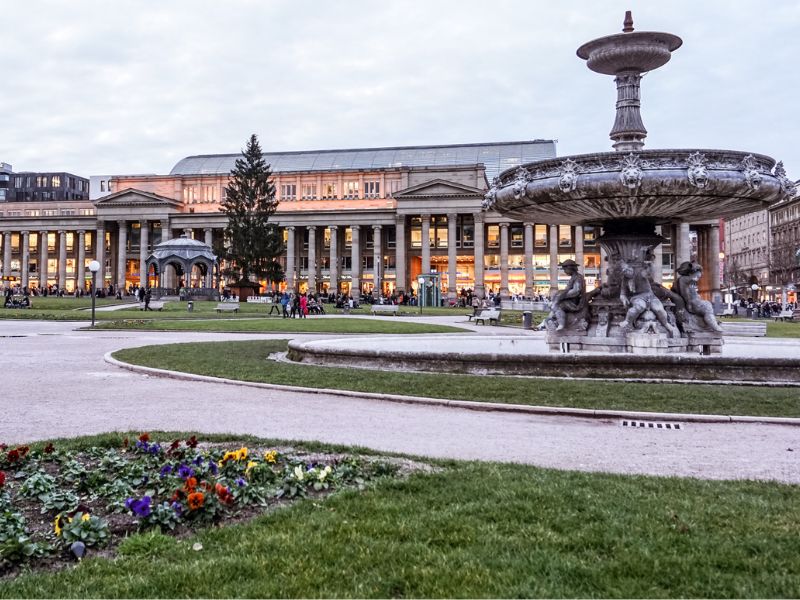
Tours For Visitors To Stuttgart, Germany
Here’s a comprehensive guide to some of the best tours available in Stuttgart.
1. Mercedes-Benz Museum Tour
- Overview: A must-visit for car enthusiasts, this tour offers an in-depth look at the history of one of the world’s most iconic car brands.
- Features: The tour covers everything from the earliest vehicles to the latest innovations, displayed over several floors.
- Duration: Approximately 1.5 to 2 hours.
- Why Go: To see a vast collection of more than 160 vehicles, including legendary racing cars and futuristic concepts.
2. Porsche Museum Tour
- Overview: Another essential stop for automotive fans, this tour highlights the history and engineering excellence of Porsche.
- Features: Explore over 80 vehicles and numerous small exhibits detailing Porsche’s contribution to automotive history.
- Duration: Around 1 to 2 hours.
- Why Go: To gain insights into the design and performance philosophy of Porsche, with the opportunity to see rare models up close.
3. Stuttgart City Walking Tour
- Overview: Discover the heart of Stuttgart by foot on a guided walking tour around its central districts.
- Features: Includes visits to key sights such as Schlossplatz, the Stuttgart Market Hall, and the Stiftskirche.
- Duration: Usually about 2 hours.
- Why Go: Perfect for first-time visitors to get their bearings and learn about the city’s history from knowledgeable local guides.
4. Wine Walking Tour in the Vineyards
- Overview: Stuttgart is surrounded by beautiful vineyards, and this tour offers a scenic and tasty exploration of local wine culture.
- Features: The tour includes a walk through picturesque vineyards, wine tastings, and insights into local viticulture.
- Duration: About 3 to 4 hours.
- Why Go: To experience the stunning landscapes of the Neckar Valley and enjoy some of the best local wines.
5. Neckar River Boat Tour
- Overview: See Stuttgart from a different perspective with a leisurely boat tour along the Neckar River.
- Features: Offers views of the city’s waterfront landmarks and scenic natural areas around the river.
- Duration: Varies, with options from short one-hour trips to half-day excursions.
- Why Go: A relaxing way to see the city, perfect for families and couples looking for a serene outing.
6. Stuttgart Beer Tour
- Overview: Dive into the local beer scene with a guided tour that visits several breweries and pubs in the city.
- Features: Sample various German beers, learn about the brewing process, and enjoy some traditional German snacks.
- Why Go: To taste some of the best local brews and learn about Stuttgart’s brewing traditions.
7. Stuttgart by Segway Tour
- Overview: Zip around Stuttgart’s attractions on a fun and fast-paced Segway tour.
- Features: Includes training on how to use the Segway and stops at major city landmarks.
- Duration: Typically 2 to 3 hours.
- Why Go: For a unique and exhilarating way to explore the city’s sights without tiring your feet.
8. Architectural Tour of Stuttgart
- Overview: This tour focuses on Stuttgart’s renowned architectural landmarks, including both historic and modern structures.
- Features: Visit the Weissenhof Estate, the New and Old Castles, and other significant buildings.
- Duration: About 3 hours.
- Why Go: To appreciate Stuttgart’s diverse architectural styles and understand the city’s development through its buildings.
9. Black Forest Day Trip
- Overview: Venture out of the city for a day to explore the enchanting Black Forest, just a short drive from Stuttgart.
- Features: The tour typically includes visits to quaint villages, scenic spots, and traditional cuckoo clock makers.
- Duration: Full day.
- Why Go: To experience the mythical beauty of the Black Forest and enjoy its peaceful, natural setting.
10. Historical and Cultural Tour of Ludwigsburg Palace
- Overview: Just outside Stuttgart, this tour explores the magnificent Ludwigsburg Palace, one of the largest Baroque buildings in Europe.
- Features: Guided tour of the palace and its gardens, with insights into the lives of the dukes who lived there.
- Duration: Half-day.
- Why Go: To step back in time and experience the opulence and history of this grand ducal residence.
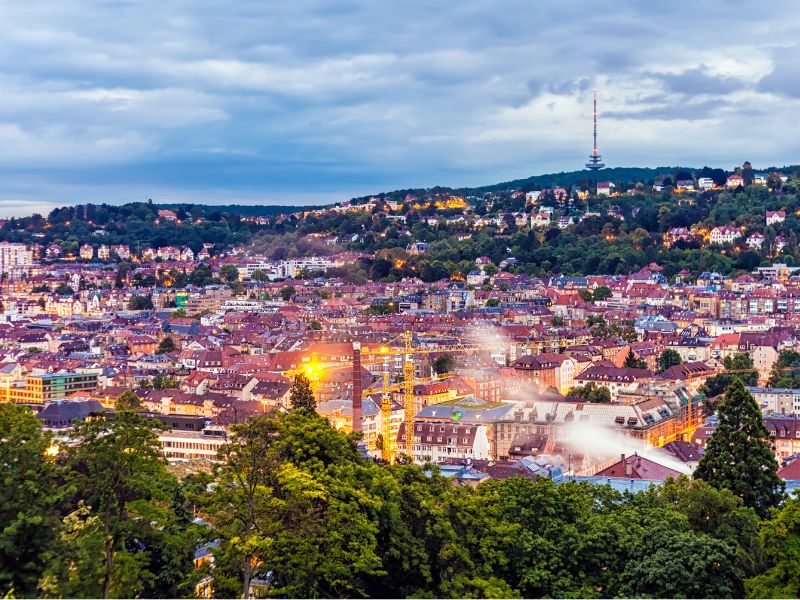
Stuttgart Accommodations Guide: Hotels, Guesthouses and Hostels
From luxury hotels to cozy guesthouses and budget-friendly hostels, here’s a quick travel guide to some of the best places to stay in Stuttgart.
Luxury Hotels
1. Althoff Hotel am Schlossgarten
- Location: Centrally located near the city’s main train station and the lush Schlossgarten Park.
- Features: Offers elegant rooms with views of the park or the city, fine dining options, and a wine bar.
- Ideal for: Those looking for a luxurious stay with easy access to Stuttgart’s cultural sites.
- Unique Perk: Gourmet cuisine at the Michelin-starred restaurant, Zirbelstube.
2. Le Méridien Stuttgart
- Location: Across from Schlossgarten Park, close to the State Gallery and opera house.
- Features: Features spacious, modern rooms, a wellness area with a pool, and several dining options.
- Ideal for: Culture enthusiasts and business travelers looking for comfort and convenience.
- Unique Perk: Direct connection to the cultural heart of Stuttgart via the hotel’s Unlock Art™ program, which offers complimentary access to local museums.
Mid-Range Hotels
3. Park Inn by Radisson Stuttgart
- Location: Near Marienplatz in a lively district with good public transport links.
- Features: Comfortable and contemporary rooms with all standard amenities, a rooftop restaurant, and a fitness center.
- Ideal for: Business travelers and tourists looking for value and quality.
- Unique Perk: Rooftop terrace that offers stunning views of the city.
4. Hotel Unger
- Location: Just a five-minute walk from Stuttgart’s central station and close to shopping areas.
- Features: Offers bright, airy rooms and a substantial breakfast buffet.
- Ideal for: Travelers who appreciate proximity to both shopping and transport.
- Unique Perk: A vast breakfast selection that is well regarded among guests.
Budget Accommodations
5. Hostel Alex 30
- Location: Situated in the heart of Stuttgart, offering easy access to all main attractions.
- Features: Clean, basic rooms and dormitories with private or shared bathrooms, a communal kitchen, and a lounge area.
- Ideal for: Backpackers and young travelers looking for a social environment and affordable rates.
- Unique Perk: Themed nights and communal activities that help guests mingle and explore the city together.
6. Jugendherberge Stuttgart International
- Location: Nestled between Stuttgart’s cultural and green belt areas.
- Features: Modern hostel with a range of room types, from dorms to family units, plus a buffet breakfast included.
- Ideal for: Families and young travelers, especially those on a tight budget.
- Unique Perk: Offers a stunning view of the Neckar Valley.
Guesthouses and B&Bs
7. Gasthof Traube
- Location: In the Bad Cannstatt district, known for its traditional festivals and thermal baths.
- Features: Traditional Swabian guesthouse with rustic, cozy rooms and an onsite restaurant serving regional specialties.
- Ideal for: Travelers looking to experience traditional German hospitality and food.
- Unique Perk: Located close to the Cannstatter Wasen, home to the famous Volksfest.
8. Pension am Heusteig
- Location: Quietly located in the Heusteigviertel, a charming neighborhood known for its beautiful buildings and proximity to the city center.
- Features: Comfortable, simple rooms in a picturesque setting, with a generous breakfast included.
- Ideal for: Couples and solo travelers seeking a peaceful retreat near the bustling city center.
- Unique Perk: Its garden terrace, where guests can relax after a day of sightseeing.
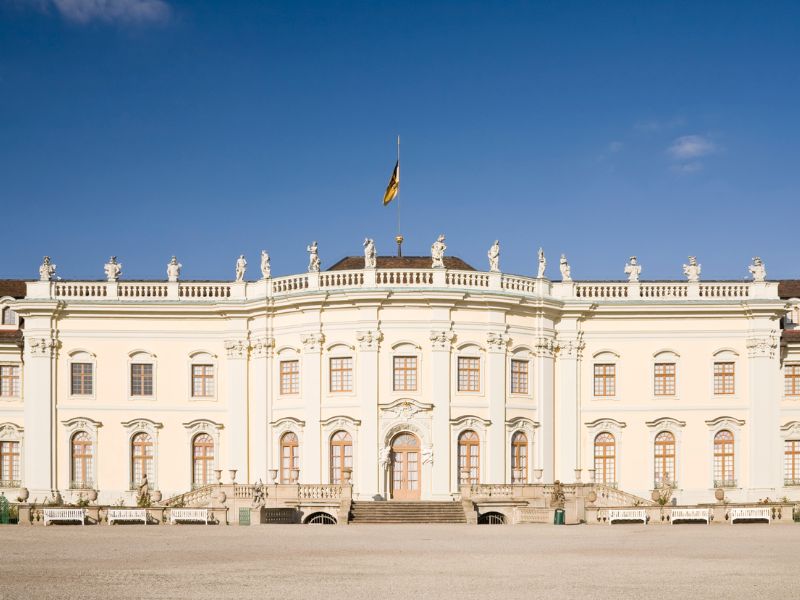
Day Trips From Stuttgart, Germany
Here are ten great day trip ideas, each offering unique experiences for travelers looking to expand their horizons beyond the city limits.
1. Heidelberg
- Description: Just an hour away, Heidelberg is famous for its romantic cityscape, including the iconic Heidelberg Castle and the picturesque Old Bridge.
- Activities: Tour the ruins of Heidelberg Castle, stroll along the Neckar River, and explore the baroque old town.
- Best Time to Visit: Spring and fall offer mild weather, perfect for walking tours and outdoor cafes.
- Tips: Don’t miss the Philosophenweg (Philosophers’ Walk) for the best views of the city and castle.
2. Ludwigsburg
- Description: Known as the “Versailles of Swabia,” Ludwigsburg is just 20 minutes north of Stuttgart and boasts one of Europe’s largest Baroque palaces.
- Activities: Visit Ludwigsburg Palace and its impressive gardens, explore the Fairy Tale Garden, and check out the Baroque Christmas Market in December.
- Best Time to Visit: Autumn, when the Ludwigsburg Pumpkin Festival transforms the palace gardens into a colorful outdoor exhibition.
- Tips: Take a palace tour to fully appreciate the rich history and art of the palace’s interior and state rooms.
3. Black Forest
- Description: The mythical Black Forest is about an hour and a half drive from Stuttgart and offers lush forests, traditional villages, and culinary specialties.
- Activities: Hike some of the Black Forest trails, visit the cuckoo clock shops in Triberg, and try the famous Black Forest cake.
- Best Time to Visit: Summer for hiking and winter for a snowy wonderland.
- Tips: Stop by the open-air museum Vogtsbauernhof to see original Black Forest farmhouses and learn about local history.
4. Lake Constance (Bodensee)
- Description: Bordering Germany, Austria, and Switzerland, Lake Constance is less than two hours from Stuttgart and is one of Europe’s largest lakes.
- Activities: Take a boat tour of the lake, visit Mainau Island (known as Flower Island for its beautiful gardens), and explore the medieval city of Konstanz.
- Best Time to Visit: Late spring to early fall for boat rides and garden tours.
- Tips: Be sure to visit the Zeppelin Museum in Friedrichshafen to learn about the airship’s history.
5. Strasbourg, France
- Description: Just over the border in France, Strasbourg is an enticing blend of French and German cultures, famous for its gothic cathedral and charming timber-framed houses.
- Activities: Tour the Strasbourg Cathedral, enjoy a boat ride along the Ill River, and wander through the Petite France district.
- Best Time to Visit: December for the magical Christmas markets.
- Tips: Try the local Alsace wines and the traditional dish, tarte flambée.
6. Tübingen
- Description: A quintessential university town, Tübingen is steeped in history and bursting with youthful energy.
- Activities: Punt on the Neckar River, stroll the ancient cobblestone streets of the Altstadt, and climb the Hölderlinturm for views of the town.
- Best Time to Visit: Anytime, but autumn is particularly beautiful as the leaves change color along the river.
- Tips: Visit on a Saturday to enjoy the vibrant local market in the town square.
7. Rothenburg ob der Tauber
- Description: Rothenburg is one of the best-preserved medieval towns in Germany, looking much like it did in the 1600s.
- Activities: Walk the town walls, visit the Medieval Crime and Justice Museum, and explore the German Christmas Museum if you’re there during the holidays.
- Best Time to Visit: Early summer or late fall to avoid the peak tourist season.
- Tips: The Night Watchman’s Tour is a must-do for a unique and entertaining overview of the town’s history.
8. Schwäbisch Hall
- Description: This historic town is known for its beautifully preserved architecture and vibrant cultural scene.
- Activities: Visit St. Michael’s Church, stroll along the Kocher River, and explore the local art galleries and museums.
- Best Time to Visit: Summer for outdoor concerts and theater performances at the open-air steps of St. Michael.
- Tips: Don’t miss the Salt Museum, which details the town’s development through its salt production.
9. Baden-Baden
- Description: Nestled in the Black Forest, Baden-Baden is famed for its luxurious spa resorts and the opulent Casino Baden-Baden.
- Activities: Relax in the thermal baths, take a walk through the Lichtentaler Allee, and try your luck at the casino.
- Best Time to Visit: Winter for a spa escape or summer for hiking and enjoying the lush park landscapes.
- Tips: Pack a formal outfit if you plan to visit the casino, as there is a dress code.
10. Nuremberg
- Description: Rich in history, Nuremberg is well known for its medieval architecture, including the imposing Nuremberg Castle and the old city walls.
- Activities: Visit the Nuremberg Trials Memorial, explore the Germanisches Nationalmuseum, and taste the famous Nuremberg sausages.
- Best Time to Visit: December to experience one of Germany’s oldest Christmas markets.
- Tips: Try the local gingerbread, which is particularly popular during the Christmas season.
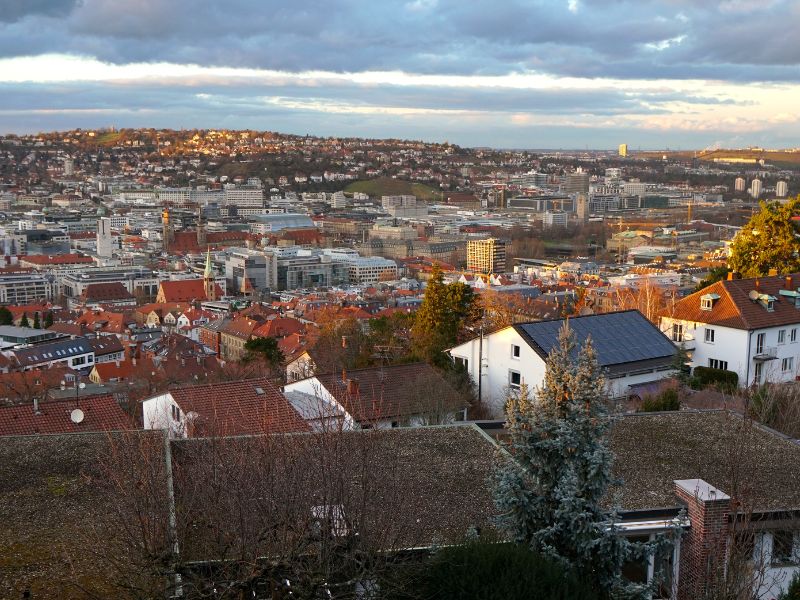
Stuttgart Transportation Guide
Whether you’re commuting within the city or planning excursions to nearby attractions, here’s a brief travel guide to getting around Stuttgart efficiently.
Public Transport System
1. S-Bahn (Suburban Train)
- Overview: The S-Bahn is a quick and efficient way to travel across the city and to neighboring regions. It operates within the Verkehrs- und Tarifverbund Stuttgart (VVS) system, which covers the entire metropolitan area.
- Routes: There are several S-Bahn lines connecting Stuttgart with suburbs and nearby towns like Ludwigsburg, Esslingen, and Böblingen.
- Frequency: Trains run every 10 to 20 minutes depending on the time of day.
- Tips: Check the VVS website or app for real-time schedules and platform changes.
2. U-Bahn (Stuttgart Stadtbahn)
- Overview: The Stadtbahn, Stuttgart’s tram system, serves the city center and extends to many suburbs. It’s especially useful for getting around central areas and reaching tourist attractions.
- Routes: Multiple lines crisscross the city, with stops at major landmarks and connections to bus and S-Bahn services.
- Frequency: Trams run every 8 to 10 minutes during peak hours.
- Tips: Tickets must be validated on platforms before boarding. Failure to do so can result in fines.
3. City Buses
- Overview: Stuttgart’s extensive bus network fills in the gaps between S-Bahn and Stadtbahn routes, reaching areas less accessible by rail.
- Routes: Numerous lines, including night buses (Nachtbus) that operate after other public transport has stopped for the night.
- Frequency: Varies widely by route; central routes have buses running every 10-15 minutes, less frequent in outer areas.
- Tips: Night buses are a safe and reliable way to return home after an evening out, especially from the city center.
Other Transportation Options
- Overview: Taxis are readily available throughout Stuttgart and can be hailed on the street, found at taxi stands, or booked via phone or app.
- Cost: Starting fare is usually around 3-4 euros, with additional charges per kilometer. Fares increase slightly at night and on weekends.
- Tips: Taxis are a convenient option for direct travel, especially if you are traveling with luggage or in a group.
5. Car Rentals
- Overview: Numerous car rental agencies operate in Stuttgart, including major international brands and local companies.
- Where to Rent: Available at the airport, main train station, and various locations throughout the city.
- Tips: Consider a rental if planning to explore rural areas of Baden-Württemberg or if public transport does not suit your schedule.
6. Bicycles
- Overview: Stuttgart supports cycling with designated bike lanes and routes. Bike rental services are available, including sharing schemes.
- Renting Bikes: Services like Call a Bike (Deutsche Bahn) and local rental shops offer hourly, daily, and weekly rentals.
- Tips: Cycling is an ideal way to enjoy Stuttgart’s parks and green spaces, though be prepared for hilly sections in some parts of the city.
- Overview: Stuttgart’s city center is compact and pedestrian-friendly, making walking a pleasant and practical option for exploring areas like Schlossplatz and Königstraße.
- Advantages: Walking provides a more intimate view of Stuttgart’s charming architecture and vibrant street life.
- Tips: Comfortable walking shoes are a must, as cobblestone streets can be unforgiving.
Travel Tips
- Travel Passes: The StuttgartCard offers unlimited travel within the city’s public transportation system plus discounts on many tourist attractions.
- Accessibility: Most public transport options are accessible for passengers with mobility issues, including low-floor trams and buses with ramps.
- Navigation: Apps like Google Maps and the VVS Mobile app are helpful for route planning and timetable information.
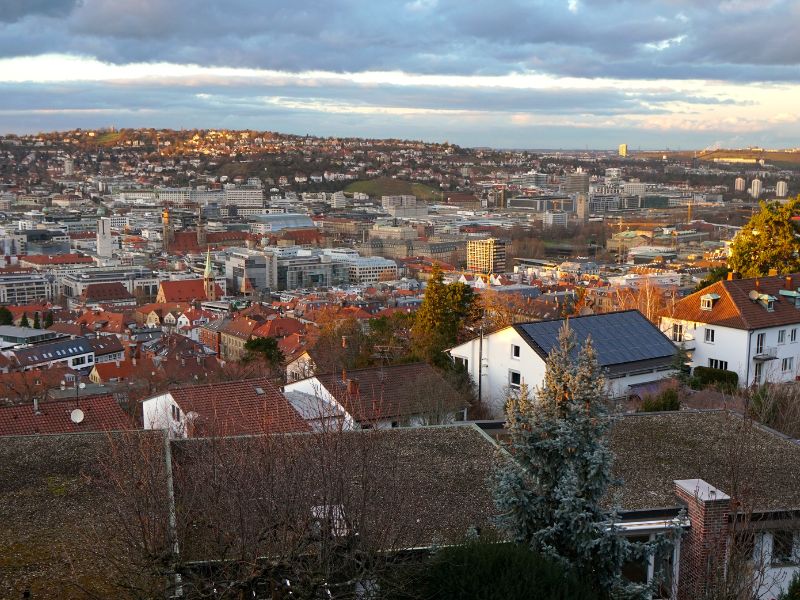
Stuttgart 3-4 Days Travel Itinerary
Here’s a detailed itinerary for 3 to 4 days that covers the best of Stuttgart and offers a taste of what this dynamic city has to offer.
Day 1: Discovering Stuttgart’s Heart
Morning: Start at Schlossplatz
- Activities: Begin your day in Stuttgart’s largest square, Schlossplatz. It’s a perfect spot for photos with the New Palace as a backdrop and is a bustling hub of activity.
- Tips: Grab a coffee and a snack from a nearby café and enjoy some people-watching in this lively area.
Afternoon: Explore Stuttgart’s Museums
- Mercedes-Benz Museum: Dive into more than 130 years of automotive history displayed in a futuristic building.
- Porsche Museum: Continue your automotive journey at the Porsche Museum, showcasing over 80 vehicles and many small exhibits.
- Tips: Allocate about 2 hours for each museum to fully appreciate their exhibits.
Evening: Dinner in the City
- Suggestions: Head back to the city center and try local Swabian dishes at a traditional restaurant such as Weinstube Am Stadtgraben.
Day 2: Art and Culture
Morning: Art and Historical Museums
- Kunstmuseum Stuttgart (Art Museum): Start your day with contemporary and modern art in a cube-shaped glass building.
- Linden Museum: Visit this ethnological museum to see non-European art and cultural artifacts.
- Tips: Check for any special exhibitions at the Kunstmuseum, which are often highlights.
Afternoon: Wilhelma Zoo and Botanical Gardens
- Activities: Spend your afternoon at Wilhelma, one of Europe’s largest zoos, which also doubles as a botanical garden.
- Tips: Don’t miss the Moorish architecture and the magnolia grove if visiting in spring.
Evening: Enjoy Stuttgart’s Nightlife
- Suggestions: Explore the bars and pubs in the Hans-im-Glück quarter, known for its vibrant evening scene and fairy-tale themed decor.
Day 3: Day Trip to Ludwigsburg
All Day: Explore Ludwigsburg
- Morning: Take a 20-minute train ride to Ludwigsburg and visit the magnificent Ludwigsburg Palace.
- Afternoon: Stroll through the palace gardens and visit the Fairy Tale Garden if traveling with children.
- Evening: Return to Stuttgart and enjoy a meal at a restaurant in the city center.
- Tips: Check the palace’s event schedule; they often host concerts, festivals, and themed tours that could be a highlight of your visit.
Day 4: Leisure and Local Culture (Optional Day)
Morning: Relax in Killesberg Park
- Activities: Take a leisurely morning walk through Killesberg Park, known for its lovely landscaping and panoramic tower views.
- Tips: Enjoy a ride on the park’s miniature railway, especially fun for families.
Afternoon: Shopping and Strolling
- Königstraße: Spend your afternoon shopping along Königstraße, Stuttgart’s main shopping street, or explore the Gerber mall for more retail therapy.
- Local Markets: Visit Markthalle if you appreciate gourmet food and local produce in an Art Nouveau setting.
Evening: Stuttgart State Theatre
- Activities: End your trip with a performance at the Stuttgart State Theatre, which offers opera, ballet, and theatre productions.
- Tips: Book tickets in advance to secure good seats and check the schedule for English subtitled performances if necessary.
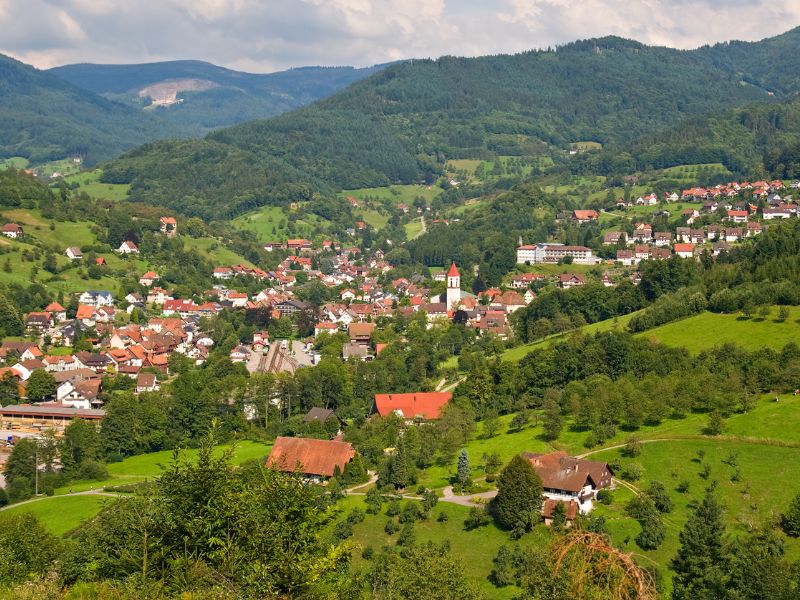
Where To Visit After Your Trip To Stuttgart?’
here’s a list of top places to visit after Stuttgart, each offering unique experiences.
- Description: Bavaria’s capital is renowned for its beautiful architecture, the world-famous Oktoberfest, and its vibrant arts scene.
- Activities: Explore the Marienplatz, visit the BMW Museum, and spend an afternoon in the vast English Garden.
- Best Time to Visit: Late September to early October to experience Oktoberfest.
- Tips: Don’t miss the Deutsches Museum, one of the oldest and largest science and technology museums in the world.
2. Frankfurt
- Description: Known as the financial capital of Germany, Frankfurt is a high-powered business hub with a dynamic cultural and historical side.
- Activities: Stroll along the River Main, visit the Städel Museum to see Europe’s art history, and explore the Römerberg, Frankfurt’s old central square.
- Best Time to Visit: Early December to enjoy the magical Christmas markets.
- Tips: Try the local apple wine in one of the traditional Sachsenhausen pubs.
3. The Black Forest
- Description: The Black Forest is a vast forested region known for its picturesque villages and traditional cuckoo clocks.
- Activities: Hike in the scenic trails, relax in thermal spas of Baden-Baden, and visit the open-air museum Vogtsbauernhof to learn about local history.
- Best Time to Visit: May or June for the best hiking weather and fewer crowds.
- Tips: Drive the Schwarzwald Hochstrasse, a high road that offers breathtaking views and leads to many attractions.
4. Heidelberg
- Description: This charming city is famous for its prestigious university and the romantic ruins of Heidelberg Castle.
- Activities: Tour the castle, walk the old bridge, and take a philosophical stroll on the Philosophenweg for stunning views of the city.
- Best Time to Visit: Fall for the beautiful autumn colors in the city’s many parks.
- Tips: Enjoy a guided tour of the old university and its student prison.
5. Lake Constance
- Description: Bordering Germany, Austria, and Switzerland, Lake Constance is perfect for water sports, cycling, and exploring small lakeside towns.
- Activities: Visit Mainau Island botanical gardens, explore the Zeppelin Museum in Friedrichshafen, and take a boat tour around the lake.
- Best Time to Visit: Summer for outdoor activities and vibrant local festivals.
- Tips: Take a day trip to the Rhine Falls in Switzerland, Europe’s largest waterfall, nearby.
6. Nuremberg
- Description: Steeped in history, Nuremberg is known for its medieval architecture, including the impressive Nuremberg Castle and the historic old town.
- Activities: Explore the Germanisches Nationalmuseum, visit the Nazi party rally grounds, and try the famous Nuremberg sausages.
- Tips: Check out the medieval dungeons under the old city hall for a chilling glimpse into the past.
7. Strasbourg, France
- Description: Just across the border in France, Strasbourg offers a blend of French and German cultures with its stunning Gothic cathedral and picturesque timber-framed houses.
- Activities: Tour the cathedral, enjoy a boat ride along the Ill River, and explore the European Parliament.
- Best Time to Visit: Christmas for the renowned Strasbourg Christmas Market.
- Tips: Try the local Alsace wines and the traditional tarte flambée.
8. Zurich, Switzerland
- Description: A short train ride away, Zurich is known for its well-preserved medieval old town and vibrant cultural life.
- Activities: Visit the Kunsthaus, one of Switzerland’s most important art museums, enjoy shopping on Bahnhofstrasse, and explore the Old Town.
- Best Time to Visit: Summer for pleasant weather and numerous outdoor festivals.
- Tips: Take a boat ride on Lake Zurich to enjoy the city from a different perspective.
- Description: Nestled in the Black Forest, Baden-Baden is famous for its luxurious spa resorts and the opulent Casino Baden-Baden.
- Activities: Relax in the thermal baths, take a stroll through the Lichtentaler Allee, and try your luck at the casino.
- Best Time to Visit: Winter for a cozy spa experience or summer for hiking in the forest.
- Tips: Attend a performance at the Festspielhaus, one of Europe’s largest opera houses.
10. Salzburg, Austria
- Description: Known for its baroque architecture and as the birthplace of Mozart, Salzburg is a cultural gem just across the Austrian border.
- Activities: Tour the Hohensalzburg Fortress, visit Mozart’s birthplace, and explore the Mirabell Gardens.
- Best Time to Visit: Summer for the Salzburg Festival, a world-class music and drama festival.
- Tips: Indulge in a Sachertorte at one of the local cafés for a taste of Austrian sweetness.
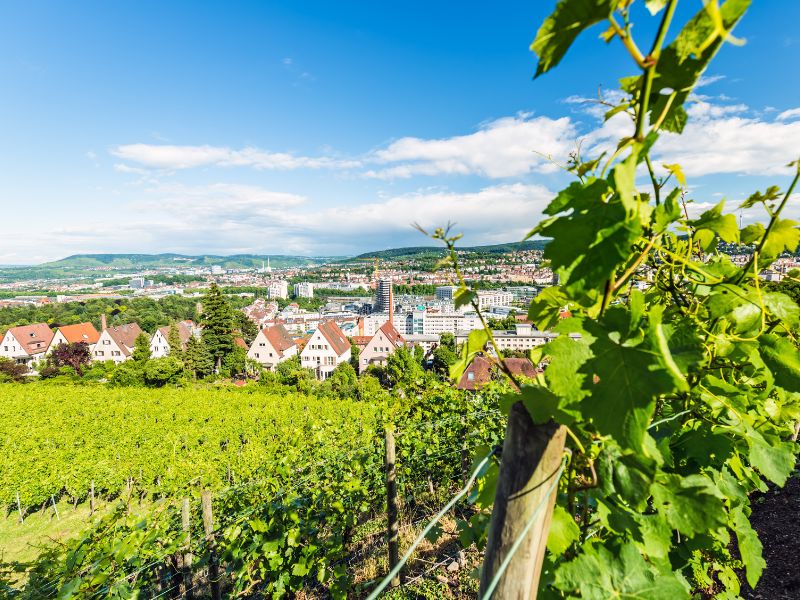
Stuttgart Travel Guide: Final Thoughts
As we wrap up our exploration of Stuttgart, it’s clear this city offers a unique blend of history, innovation, and greenery. A place where you can traverse centuries by simply walking from one neighborhood to another, Stuttgart leaves visitors with a rich tapestry of experiences. Here’s a look back at what makes this city stand out and some final tips for your journey.
Cultural Richness and Automotive Excellence
A Hub of History and Innovation Stuttgart’s renowned as the cradle of the automobile; both car enthusiasts and the casually curious are rewarded with world-class museums dedicated to Mercedes-Benz and Porsche. But it’s not all about cars. The city’s palaces and museums beckon with tales of its royal past, while contemporary art installations and theaters speak to its vibrant cultural scene.
Green Spaces Galore
Nature Within the City One of Stuttgart’s most charming features is its abundance of green spaces. From the sprawling Rosenstein Park to the picturesque heights of Killesberg, nature is never far away. These spots offer a peaceful retreat from the urban hustle and bustle, proving that you can enjoy city life and still have your serene moments.
Culinary Delights
A Taste of Swabia and Beyond Whether you indulged in hearty Swabian specialties or explored the international cuisine available, Stuttgart’s culinary scene likely left a lasting impression. Remember those Maultaschen or the delicious Spätzle? Food in Stuttgart is about comfort, quality, and a love for hearty, satisfying meals.
Festivals for Every Season
Celebrations to Remember If you timed your visit with one of Stuttgart’s many festivals, you know this city loves to celebrate. From the exuberant Cannstatter Volksfest to the magical Christmas markets, each event showcases local traditions and hospitality. Even if you missed these, the vibrant local life ensures there’s always something happening.
Final Travel Tips
Navigating with Ease Navigating Stuttgart is a breeze with its comprehensive and user-friendly public transportation network. Whether you relied on the S-Bahn to whisk you to nearby towns or the Stadtbahn to explore local attractions, getting around was part of the adventure. Remember, the StuttgartCard can be a great value, offering travel discounts and deals on cultural attractions.
A Parting Note Stuttgart is a city that offers something for everyone, blending tradition with modernity in a way that’s uniquely its own. Until next time, Tschüss Stuttgart!


21 Top-Rated Attractions & Things to Do in Stuttgart
Written by Michael Law and Barbara Radcliffe Rogers Updated Jun 7, 2024 We may earn a commission from affiliate links ( )
Stuttgart is one of Germany's most appealing cities for tourists. A pair of outstanding art museums, two state-of-the-art automobile museums, one of Europe's top zoos, and sumptuous palaces draw visitors year-round.
The city is at its best in the summer when the public gardens are in full bloom and the surrounding hills are a carpet of green. Winter can also be a great time to visit, especially if you are visiting around the holidays when one of Europe's best Christmas markets springs to life. Any time of year you can enjoy the architectural attractions representing Baroque, Art Nouveau, Modernist, and contemporary styles.
Stuttgart's main attractions are close to one another and easily walkable. For those located a bit further out, the S-Bahn train system makes getting around effortless and it also connects the city center to the airport.
Discover the best places to visit with our list of the top tourist attractions and things to do in and around Stuttgart.
See also: Where to Stay in Stuttgart
1. Schlossplatz
2. mercedes benz museum, 3. porsche museum, 4. day trip to esslingen, 5. ludwigsburg palace, 6. altes schloss and the wurttemburg state museum (landesmuseum), 7. christmas markets, 8. wilhelma zoological and botanical garden, 9. stuttgart fernsehturm (stuttgart tv tower), 10. stuttgart market hall (markthalle), 11. staatsgalerie stuttgart, 12. the grabkapelle on württemberg hill, 13. schloss solitude, 14. schillerplatz and stiftskirche, 15. kunstmuseum stuttgart, 16. drive the black forest high road, 17. killesberg park and tower, 18. climb to eugensplatz, 19. schweinemuseum (pig museum), 20. the weissenhof estate, 21. stay and play at monrepos palace, how to use your time effectively in stuttgart, where to stay in stuttgart for sightseeing, map of attractions & things to do in stuttgart.
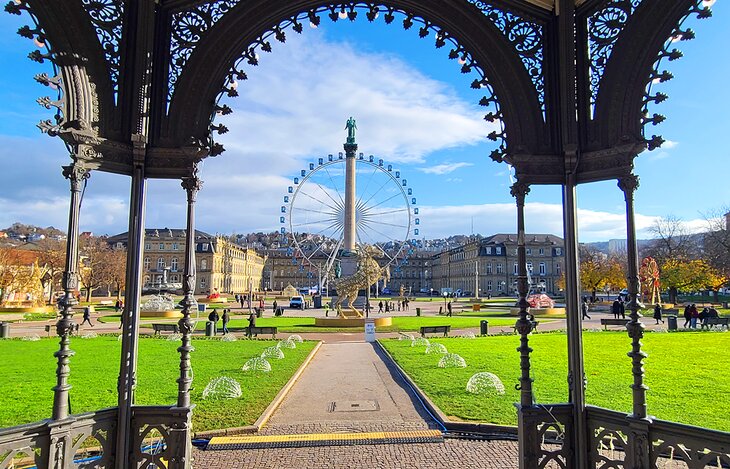
The easiest way to start your exploration of Stuttgart is to begin at the Schlossplatz. This wonderful public square features the towering mid-19th century Jubilee Column and the Neues Schloss or New Palace (once home to former kings, it's now used by the state government). You'll also find you'll find a cast-iron bandstand (1871); a fountain; and pieces of modern sculpture.
Beautiful public gardens spring to life each summer. Come late November; the column is lit with Christmas lights, and a giant Ferris Wheel is erected in front of the palace when the Christmas Market begins.
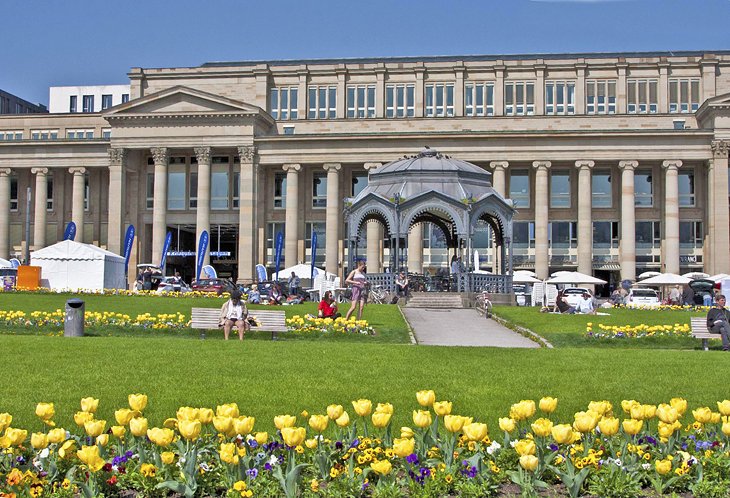
The area around the Schlossplatz is filled with restaurants, shops, and museums, making it a pleasant place to stroll about with no particular destination in mind. Walk past the Neues Schloss to the northeast to find the expansive Oberer SchloBgarten with a large pond and towering trees. You'll also find the Staatstheater , which dates from the early 20 th century.
To the northwest is Königstrasse, a 1.2-kilometer-long pedestrian-only street full of European brand-name stores. This is one of Germany's longest and best shopping districts.
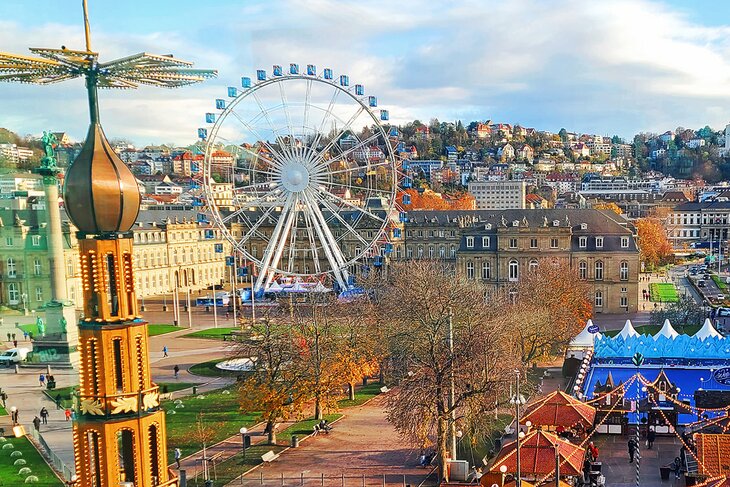
For the best view of the Schlossplatz , try this local's secret; walk in the Kuntsmusuem and take the elevator to the top floor, the same level as the CUBE restaurant. Walk to the floor-to-ceiling windows for incredible views, or even better, pop in for an espresso or light lunch at the restaurant, one of Stuttgart's more popular dining venues.
The Schlossplatz has its own metro stop and is easy to reach.
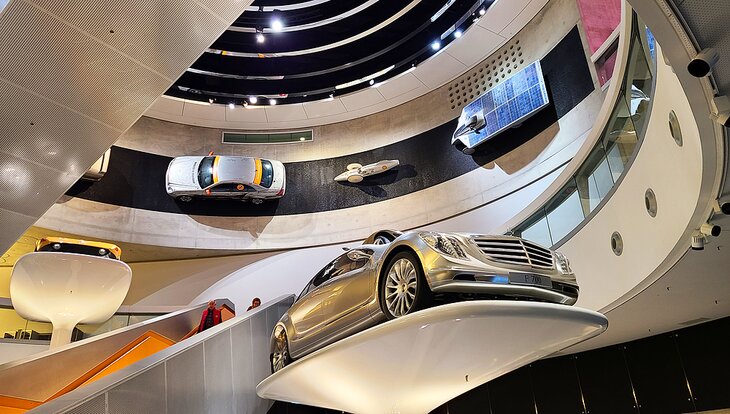
The Mercedes Benz Museum is more than a museum dedicated to vehicles, this huge museum (over 180,000 square feet) covers 130 years of automobile history and changes in society and world events, including both world wars. Cars, buses, and even the Popemobile and the SUV used in the movie Jurassic Park are on display, along with race cars and airplane engines.
The building itself is an attraction, an architectural marvel in the form of a double helix. As you walk up the long staircase to the entrance you can't help but be awed by how the eight-story-high circular wraparound design stands in stark contrast to the surrounding square and utilitarian buildings.
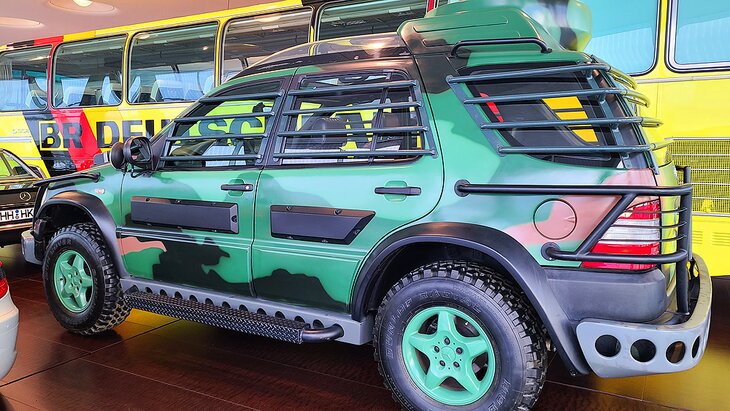
Start your tour by taking the elevator to the 8 th floor and then walking down the wide circular walkway with displays on each floor. Along the way, exhibits trace the development of the automobile engine from its humble beginnings when Karl Benz and Gottlieb Daimler first created it, right through to the 20 th century. The museum is also forward-looking as it provides commentary and exhibits on the next evolution of automobiles .
If you are looking for that perfect photo to post on your social media, wait until you reach the ground floor and shoot upwards past the cars on pedestals. If you're looking to grab a bite after your tour, Bertha's restaurant on the ground floor is excellent.
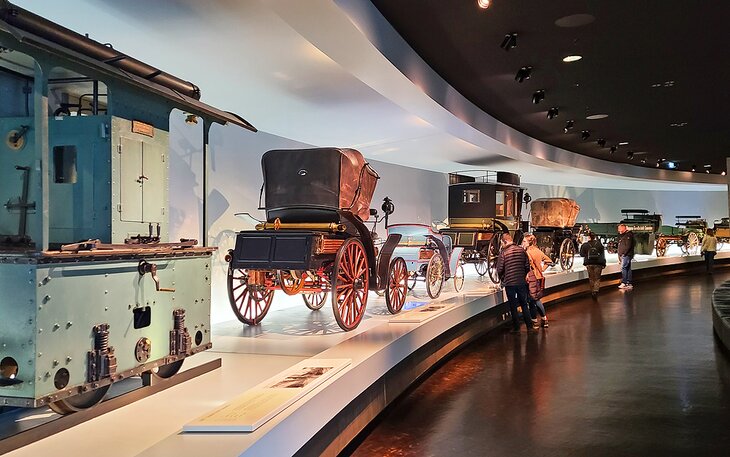
One thing to note about a visit here is that the museum is located a fair distance from the train station . The route is well marked, but count on about a 15-minute walk. Free lockers (with somewhat complicated locks) are provided, and they are located to the far right of the main entrance.
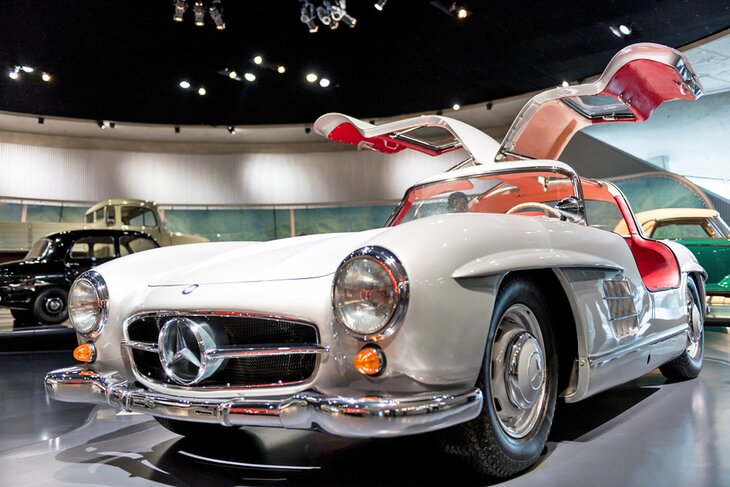
Address: Mercedesstraße 100, Stuttgart
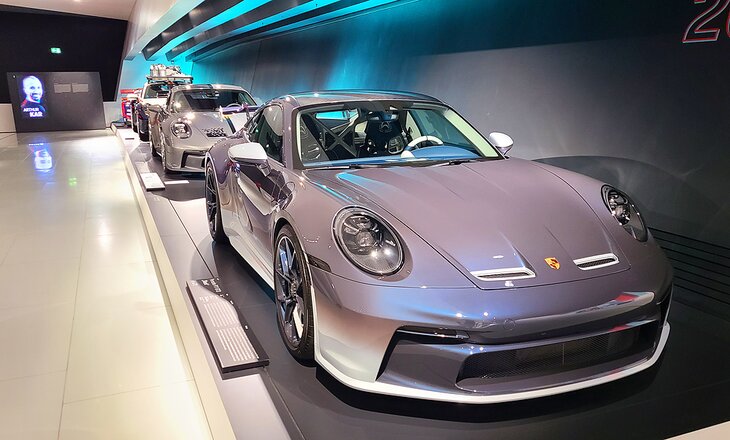
Porsche's vehicles, with their sexy lines and powerful engines, have been aspirational cars for generations. If you want your own dose of inspiration, head to the Porsche Museum where the company's history and cars are on display at this world-class museum.
Take the long elevator ride up to the museum floor and be prepared to be awed. The dynamic architecture of the building Delugan Meissl designed for the Porsche Museum , supported by a trio of V-shaped columns, is intended to portray the nature of the brand itself.
Just follow the arrows and wind your way upwards through the museum from the earliest models to the most current production vehicle. Displays are informative and, in some cases, interactive. Audio guides in English highlight themes, such as the "Porsche DNA" that lives on in every model since the first.
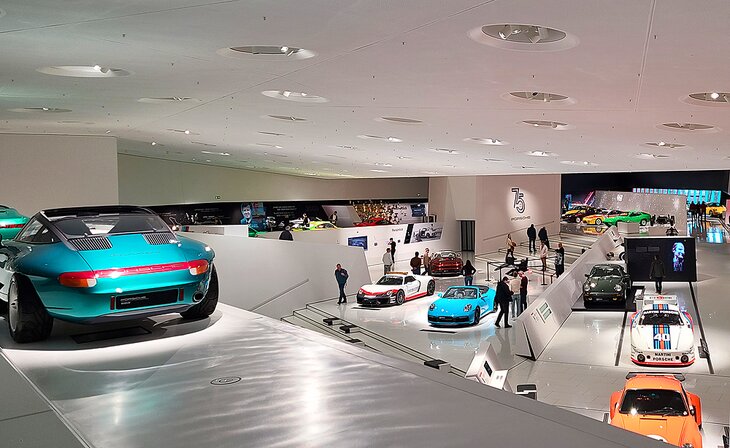
The most popular part of the museum, even for those with little interest in automobiles and racing, is the interactive 12-meter Porsche Touchwall , where you can use touch frames to browse through more than 3,000 drawings, photos, posters, and advertisements from the vast historical archive.
In the interactive Porsche in the Mix sound installation, unique in the world, you can play the sounds of engines, horns, and brakes of various models throughout the years and mix them into an original music track. After composing your own piece of Porsche music, you can send it to yourself via email.
You can sit in some of the vehicles to experience the feeling of being in the driver's seat of these expensive vehicles. In fact, you can have your photo taken in one of the cars on display . Photos are printed off and free for you to take with you.
The museum is easily accessible with its own train station just steps from the main entrance .
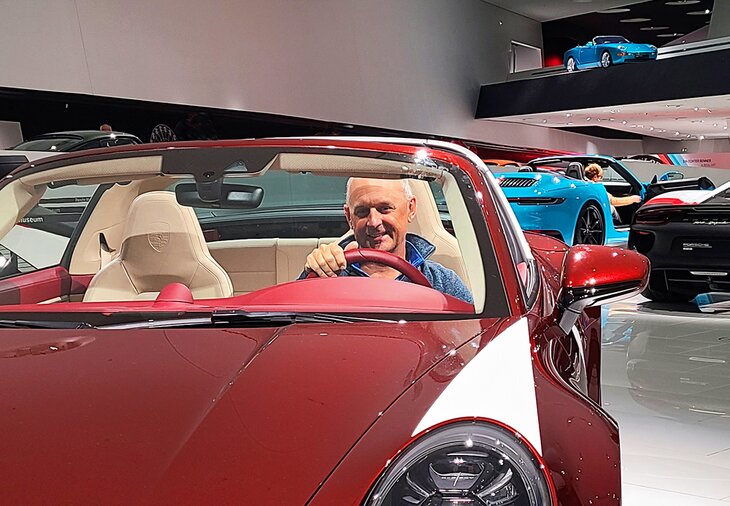
Address: Porscheplatz 1, Stuttgart-Zuffenhausen
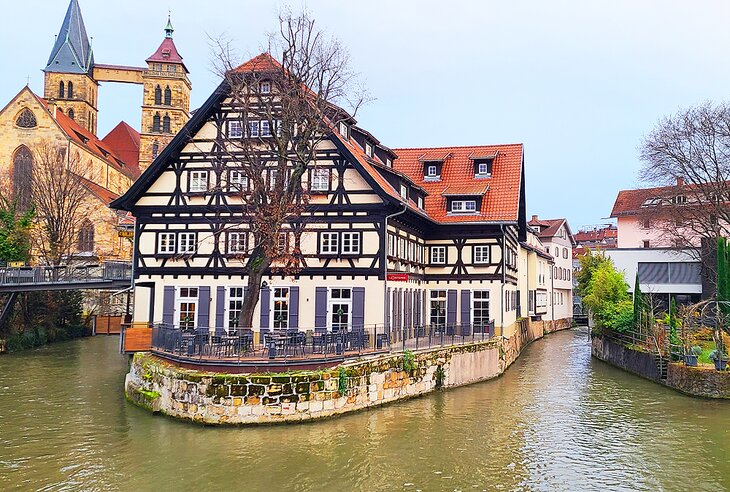
Located only a ten-minute train ride from downtown Stuttgart , Esslingen is an easy trip and well worth the effort. The city has a medieval village area with a fairy tale feeling about it. Half-timbered houses dating from the 13 th to the 16 th centuries, sloping streets, massive gothic churches, and Town Hall with its glockenspiel (a clock where moving figures perform) are all part of the attraction. The Burg, a castle on the hill, provides impressive views of the vine-draped hills and the Neckar river.
As you wander through the cobblestone streets, be sure to take a break and grab a bite at one of the town's numerous restaurants famous for the local Swabian cuisine featuring unique dishes, including Maultashen and Spätzle.
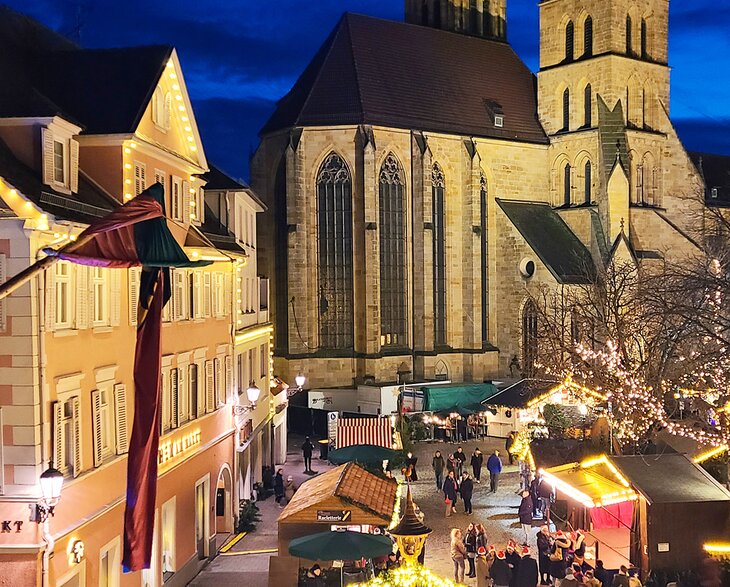
Esslingen is also home to one of Germany's most unique, and some say best, medieval Christmas markets . Instead of standard Christmas market booths, the Esslingen version requires that all the vendors create booths using items only available at that time and that the vendors dress in period costumes. The whole scene is like stepping back 700 years in time, drawing you into a festive, yesteryear atmosphere.
Finding the medieval town center is easy; exit the train station and walk straight until you come to the pedestrian-only street, take a right and then an immediate left on Bahnhofstrasse street.
A trip here can easily be combined with a stop-in at the Mercedes Benz Museum, they are on the same transit line , S1.
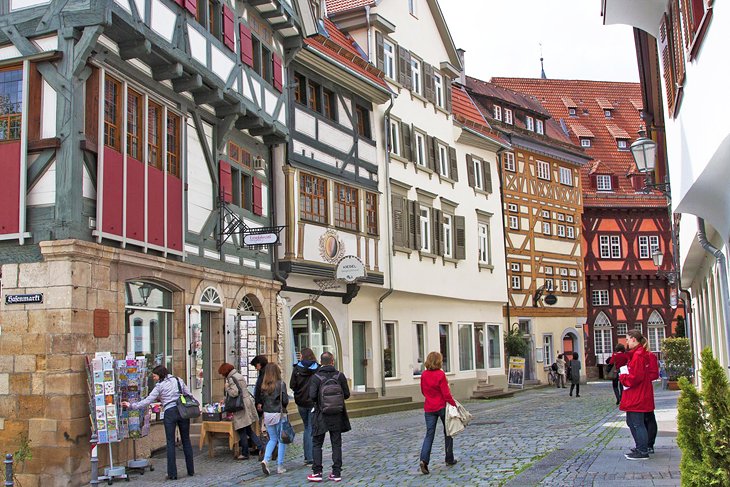
Ludwigsburg Palace is the perfect place to start if you've never been to a Baroque Palace. Duke Carl Eugen of Wurttemburg had a bit of a chip on his shoulder about keeping up with his peers and went on a quest to turn a former hunting lodge into a grand palace. Along the way, he hired the best artists, painters, masons, and other tradesmen to create one of Germany's largest and loveliest palaces .
Highlights include the grand Marble Hall, with magnificent chandeliers and ceiling fresco frescoes by Matthaus Gunter of clouds against blue giving the impression of an open sky; and the oldest preserved palace theater in Europe . This lovely small theater contains fully functioning stage machinery and sets dating from the 18 th and 19 th centuries.
The palace grounds are also impressive, with well-tended gardens (separate admission) and the smaller but more ornate Schloss Favorite Palace located on a hill nearby (separate admission).
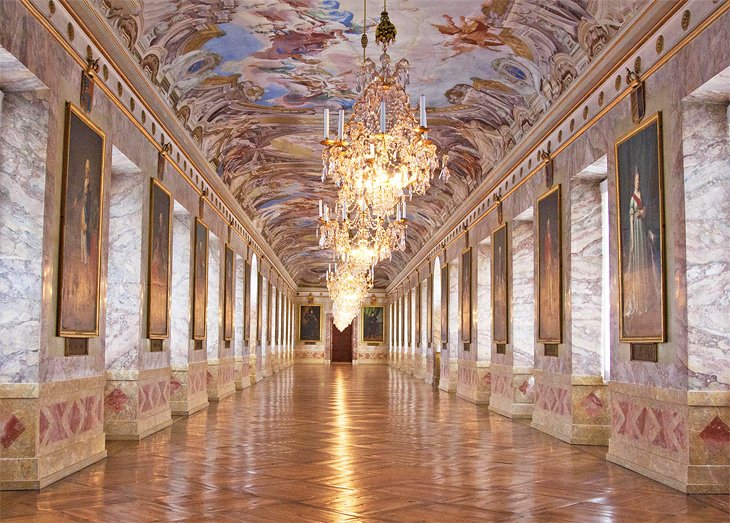
Note that the palace can only be visited on a one-hour guided tour , and English tours are only at specific times.
Be sure to take a short stroll from the palace to the town of Ludwigsburg, one of the best small towns in Germany . The historical city center is a delightful example of a well-preserved city center and full of interesting shops and restaurants. From late November until just before Christmas this is the scene of a Baroque Christmas Market , and in the autumn, the palace grounds host a popular Pumpkin Festival .
Ludwigsburg is North of Stuttgart and the palace is about a 20-minute walk from the train station through the center of the city. Alternatively, just hop on bus 421 and get off at the Ludwigsburg Residenzschloss, about a six-minute ride. If you take a taxi from the train station be sure to tell or show them the Residenzschloss entry or you may end up at the gardens and be faced with a long walk around to the main entrance.
Address: Schlossstraße 30, Ludwigsburg
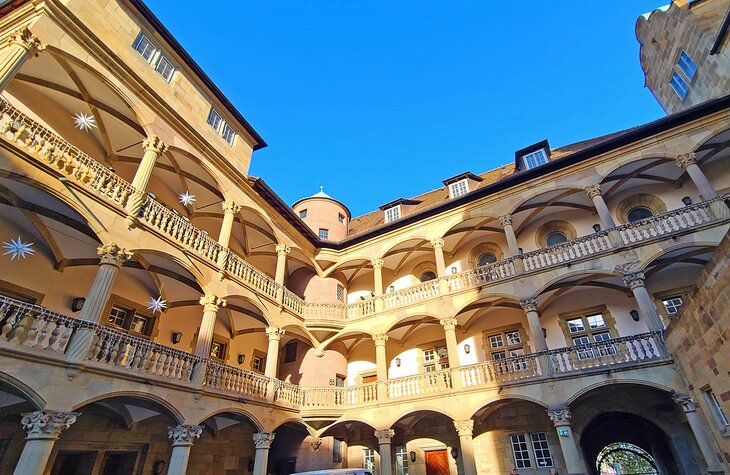
Overlooking one side of Schlossplatz is the massive Altes Schloss or Old Castle which houses the impressive Wuttemburg State Museum. This is a worthy diversion even if you aren't a big fan of museums. Compact and easily toured, the museum has some interesting displays that tend to impress rather than overwhelm.
One of the museum's highlights is the historical artifacts from the dawn of mankind. Looking at these ancient works makes you pause and wonder what our generation will leave behind that will be equally as impressive in its own way.
Especially interesting are rare artifacts tracing prehistoric inhabitants of the caves in the Swabian mountains, including the world's oldest human artworks .
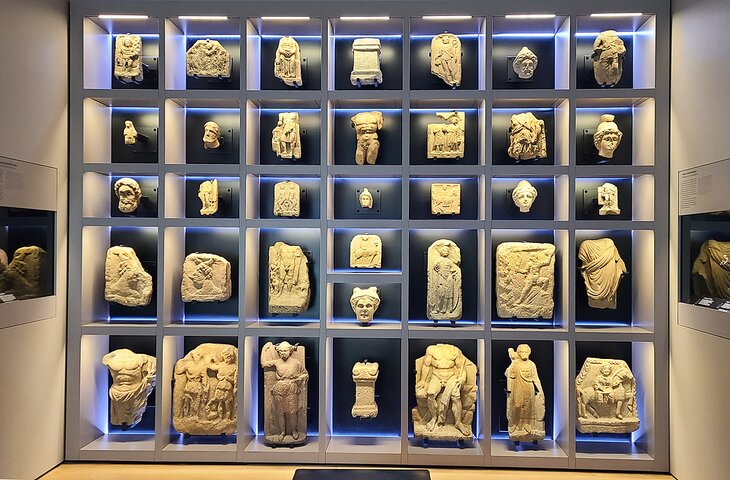
Another highlight is the famous Wuttemburg treasure of gold and silver and rare medieval artwork . This area of Europe has been fought over, conquered, and reconquered over the ages, and it's fascinating to think that the Romans were once in charge here.
The modern glass collection is among the best in Europe , and a superb costume and textile collection focuses on 18th-century European decorative fabrics and textiles from the Art Nouveau period. In the south wing is the 16th-century palace church, with tombs of famous former residents and royalty.
The museum has a large, airy, and bright seating area perfect for a rest, even if you don't tour the facility.
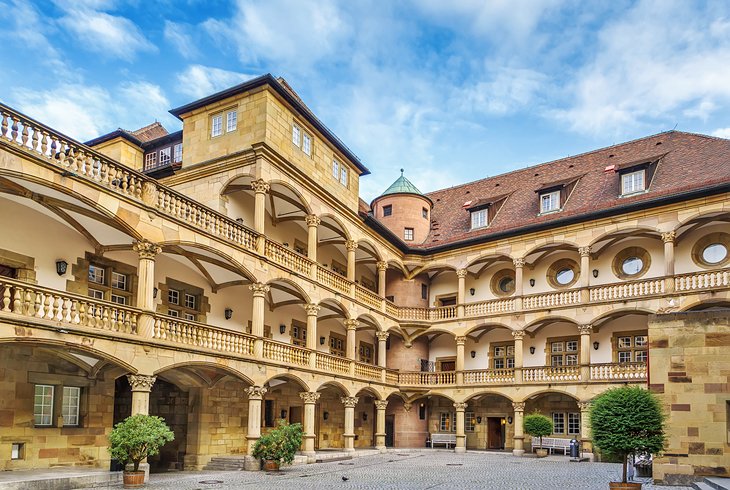
Address: Schillerplatz 6, Stuttgart
Read More: Top-Rated Castles in Germany
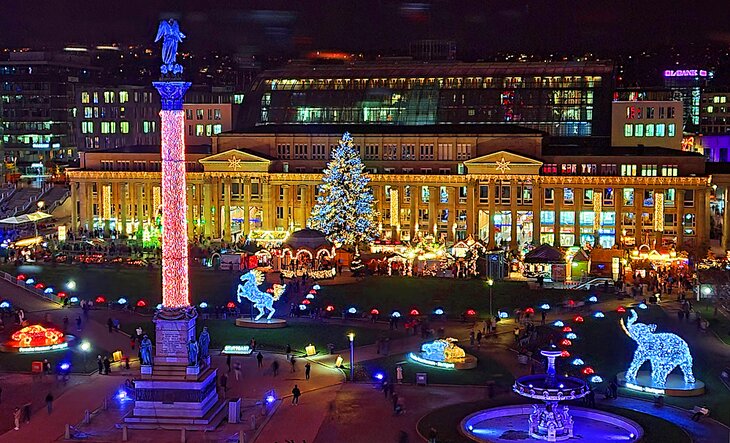
Stuttgart is one of the best places to enjoy Christmas Markets in Germany . When the days get short, and the temperatures drop, locals and tourists head to the city's historical center and surrounding areas to enjoy the lights and festivities of these special places.
In Stuttgart, nearly 300 vendors line the narrow streets off the Schlossplatz selling all manner of Christmas ornaments, crafts, one-of-a-kind gifts, food, and hot drinks. Vendors display an eye-boggling assortment of beautiful handmade gifts — wooden toys, pottery, intricate ceramic houses, embroidery, puppets, knitted mittens and socks, felted hats, and holiday decorations of all sorts.
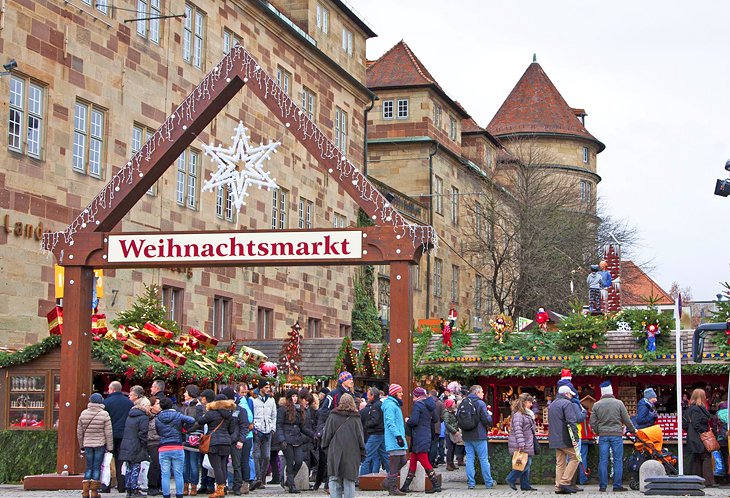
The market has been operating in some sort of form in this location for over 300 years. Today it's still a popular gathering spot for friends and families out for a stroll past the wonderfully decorated cabins. To make the most of your visit, grab a hot beverage from one stall, a sausage on a bun from another, and cap it off with a chocolate treat from another. It's best not to have any particular destination in mind; go with the flow and see where your feet take you.
Most of the market is down the side streets and in the Marktplatz and Schillerplatz , but a portion is located right on the Schlossplatz. Here, you'll find a roller-skating rink, rides for the children, and a giant Ferris Wheel by the Jubilee Column. To get the best free view of the scene, take the elevator up to the 4 th floor of the Kunstmuseum (the one that looks like a glass box). The elevator is to your right, near the gift shop.
Locals suggest strolling the entire market but afterwards set yourself up in the Schillerplatz with a hot drink and a bite to eat. This compact area is packed with some of the best food and drink vendors and has the most tables (a rarity!), a very festive atmosphere, and is surrounded by historical buildings.
The Stuttgart Christmas Market starts around the 27 th of November each year and runs until December 23 rd .
Esslingen Christmas Market
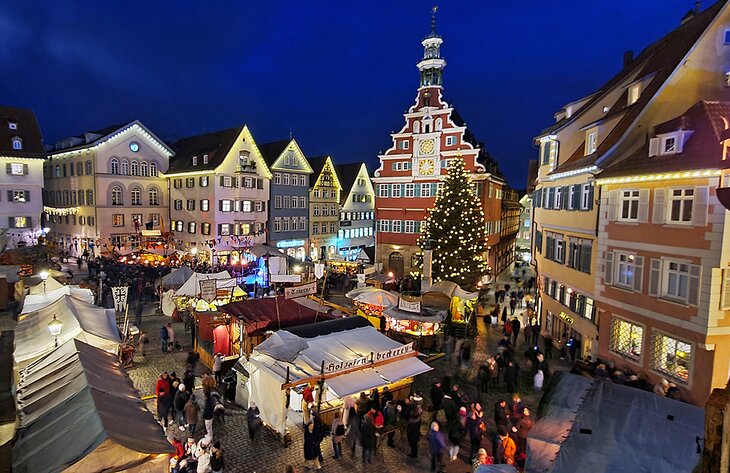
There are many Christmas markets in and around Stuttgart, but the most unique one is in Esslingen. The market is located in the old town center of Esslingen and is different from other markets in the area. You'll find 180 booths in two separate areas, a traditional section similar to Stuttgart or Ludwigsburg, and a medieval section where everything is designed to look like it's from the Middle Ages .
The medieval section is an absolute must-see, filled with booths made from materials commonly used during that era. The booths boast timbered structures and canvas tops, while the booth keepers are dressed in period costumes. As you wander through the market, you'll hear minstrels playing 700-year-old tunes and encounter multiple stages offering performances by magicians, theater groups, and eclectic entertainers, including fire eaters. You'll also have the opportunity to witness traditional crafts like blacksmithing, glass blowing, felting, and woodworking being demonstrated, with their wares available for purchase.
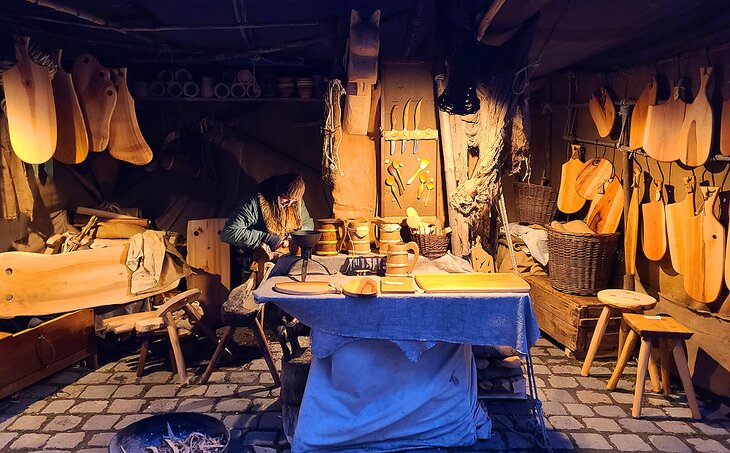
At night torches provide an eerie sort of festive feel to the place and it's not difficult to imagine yourself back in time. The market is a delight to photograph and experience.
The Esslingen Christmas Market runs from the 3rd week of November to December 21st.
Ludwigsburg's Christmas market
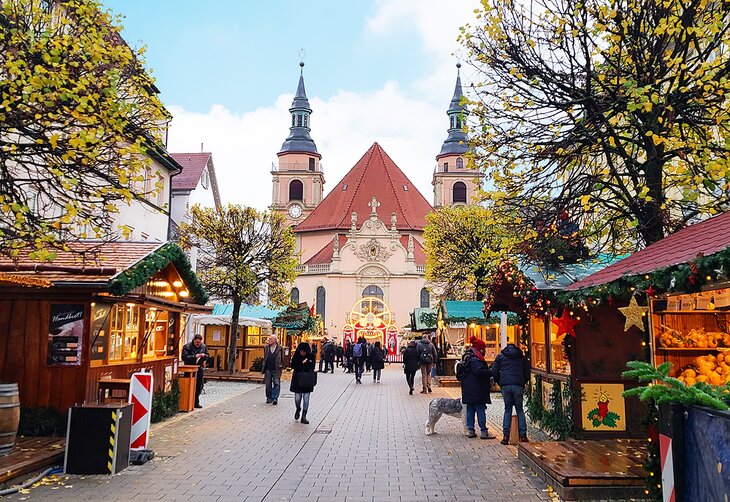
Ludwigsburg's Christmas Market has a Baroque theme , just like the rest of the Old Town and the nearby palaces. Set in the main square, this compact and orderly market is easy to navigate and perfect for those looking for a smaller, less crowded event.
Over 160 booths sell Christmas decorations, glove puppets, music boxes, and other treasures. Warm drinks are on offer along with traditional market food, but what sets Ludwigsburg apart from other markets is the local cuisine of Holzofendinnede - a German take on tarte flambé cooked in a wood-fired oven, and Schupfnuden (potato noodles). For those with a sweet tooth the gingerbread served hot from the oven is the perfect snack on a cold December night
The Ludwigsburg Christmas market runs from the 3rd week of November until December 22nd.
- Top-Rated Christmas Markets in Europe
- Best Places to Spend Christmas in Europe
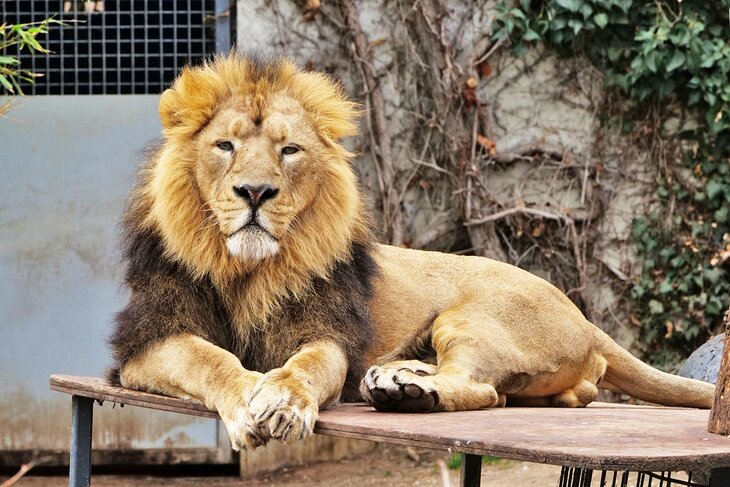
Although this is one of Europe's largest zoological parks , visitors from North America could be forgiven for thinking that it feels small, and compared to what you find in San Diego or other major centers, it is. What is most impressive is the Neo-Moorish architecture, a good selection of unique animals, and stunning botanical gardens .
The zoological park is a fantastic family outing. Be sure to catch one of the animal feedings and keeper talks that take place roughly every hour. Something that's always a hit with the kids is the elephant bathing; times change frequently, so check out the schedule at the elephant house.
The African Apes complex is also worth a visit; home to gorillas and bonobos, this facility is one of the best in Europe. Other highlights include areas devoted to the tropics, South America, and Animals of prey.
Each December the zoo comes alive at night with festive decorations , light shows, fiery water features, and booths selling warm drinks, savory favorites, and sugary treats guaranteed to send your kids into the stratosphere.
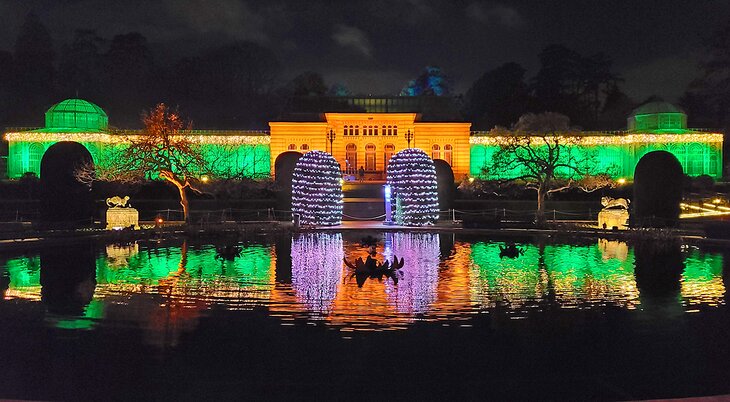
The Wilhelma Zoological and Botanic Garden was created as a private royal retreat for the Swabian King Wilhelm I. Among the many things that make this zoo and botanic garden so outstanding is the way the fanciful historic buildings have been repurposed as the setting for animals and plants — and how these two have been integrated. For example, the Moorish Villa is now home to a combined animal and plant house, and a pavilion that was once the king's vantage point overlooking the Neckar River is now the Main Entrance.
The Wilhelma Zoological and Botanical Garden is easily accessible with its own train stop.
Address: Wilhelma 13, Stuttgart
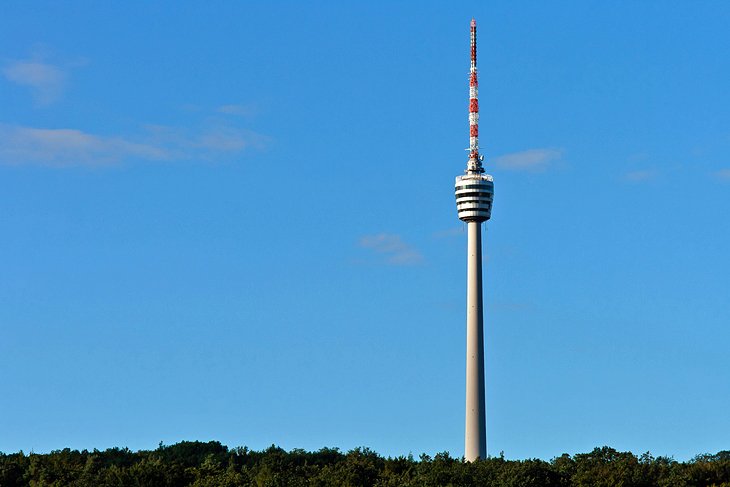
The world's first television tower would be interesting enough, but the 217-meter-tall ((710 ft)) Fernsehturm Stuttgart has the added attraction of observation decks and a restaurant, with sweeping views that reach across the city and Neckar Valley into the Swabian countryside, as far as the Black Forest and the Odenwald.
This attraction can be a fun diversion for families but appeals to everyone. Ride the elevator to the top and enjoy the 360-degree views from one or both observation decks. See if you can spot Stuttgart's historical city center with the Neues Schloss or the Black Forest off in the distance.
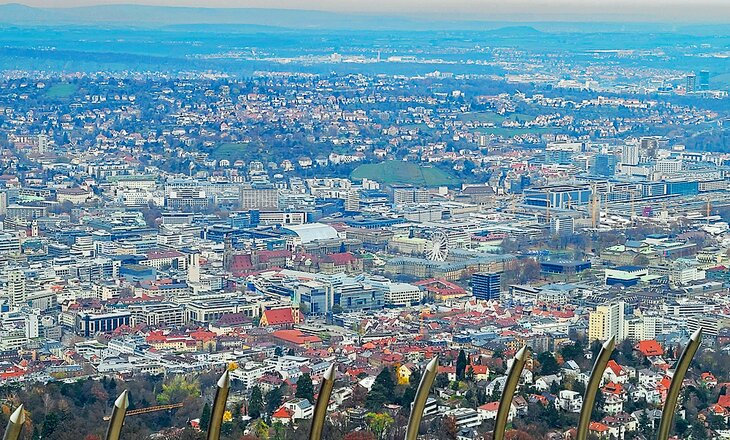
The tower opened in 1956 and soon became a prototype for such structures as far away as Johannesburg and Wuhan, China. Stuttgart engineer Fritz Leonhardt proposed the innovative concrete construction, with the suggestion that it could become a tourist attraction, as well as a transmission tower, and it quickly became one of the city's most visited spots.
A café serves light lunches, coffee, and other beverages.
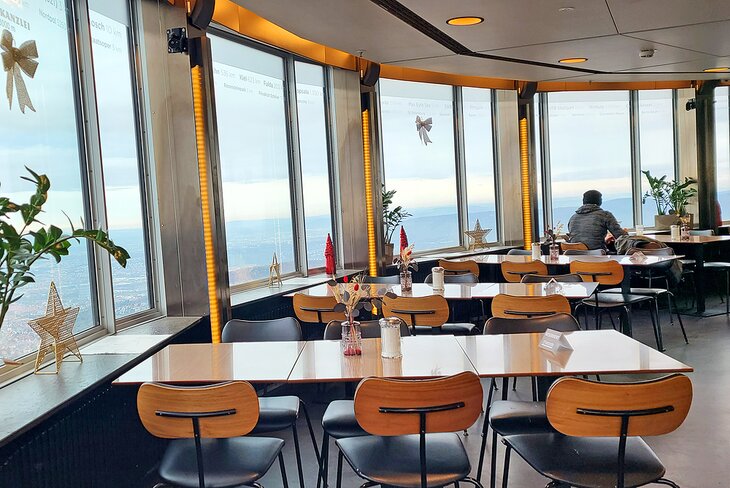
The grounds around the Fernsehturm are forested and crisscrossed with walking trails . For the kids, several play structures are located near the tower's base.
Getting to the tower is also half the fun, take the U15 train for a scenic ride up the hill through some of Stuttgart's less-visited neighborhoods. You can also take the U-7 or U-8, subway line or the #70 bus to the Ruhbank stop.
Address: Jahnstraße 120, Stuttgart
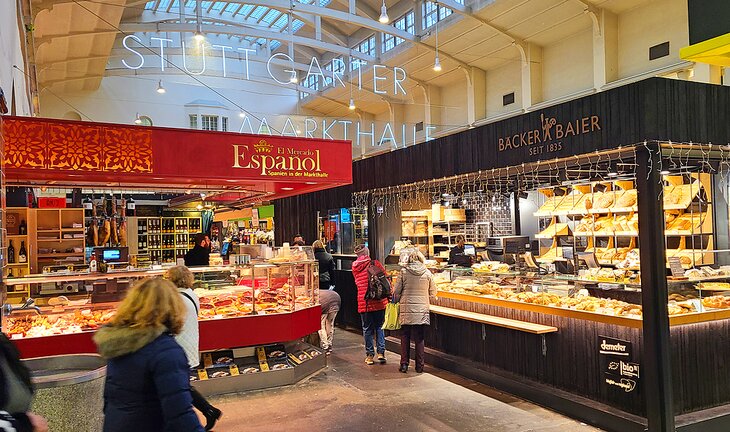
Existing in some form in this location since 1300 , Stuttgart Market Hall is the place in the city to get the best fruit, vegetables, spices, breads, meats, and cheeses. Housed in a wonderfully restored 20th-century building complete with a stunning glass ceiling, the market bustles with shoppers searching for tasty treats.
Some locals claim the market has the best bakery in the city. It's best if you check it out yourself! On the second floor, the wonderful Italian restaurant serves authentic dishes. Try to get a table on the terrace overlooking the market.
The market is located behind the Old Castle ; pop in here after visiting the Wurttemburg State Museum.
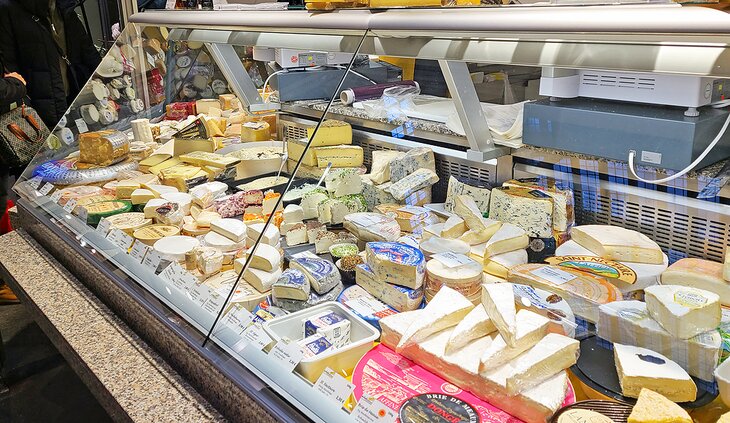
From one look at the colorful exterior of Stuttgart's State Gallery , you know it's not another stodgy museum. The 1984 opening of the new building, designed by James Stirling and itself a masterpiece of contemporary architecture, marked the transformation of the museum into one of the finest art collections in Europe - and one of Germany's most visited museums.
Although it has an excellent representation of German Renaissance art, as well as Dutch and Italian masters from the 14th to 19th centuries, the Staatsgalerie is best known for its outstanding collection of 20th-century paintings.
With a special focus on the Classical Modern period from 1900 to 1980, the collections include significant works by Henri Matisse, Paul Klee, Marc Chagall, Joan Miró, Max Beckmann, Salvador Dalí, Franz Marc, Wassily Kandinsky, and Pablo Picasso among others.
Address: Konrad-Adenauer-Strasse 30-32, Stuttgart
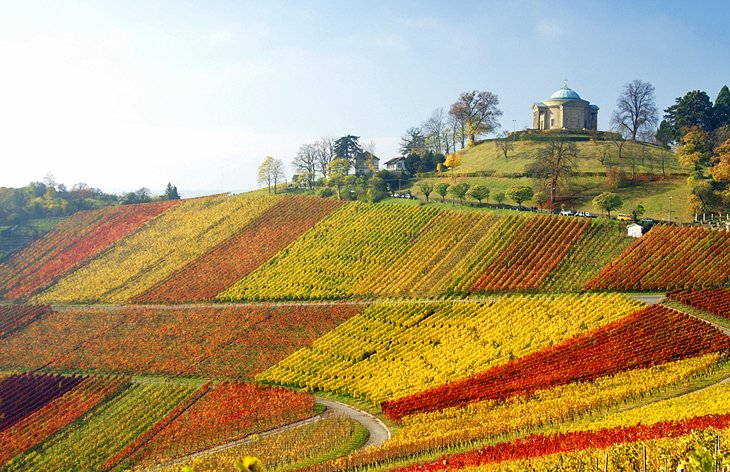
Perched high upon the Württemberg overlooking Stuttgart and the Neckar valley is the Grabkapelle , the burial chapel of Queen Katharina, erected by King Wilhelm I as a monument to his beloved wife after her premature death in 1819.
Built between 1820 and 1824, this beautiful structure consists of a domed rotunda in Neoclassical style inspired by the Pantheon in Rome (it's also where Wilhelm himself is buried).
It is considered the most romantic spot in Stuttgart, in part because of its beautiful setting, but mainly because of Wilhelm's inscription above the entrance to the chapel, "Love never dies," in memory of his lost queen.
Address: Württembergstraße 340, Stuttgart
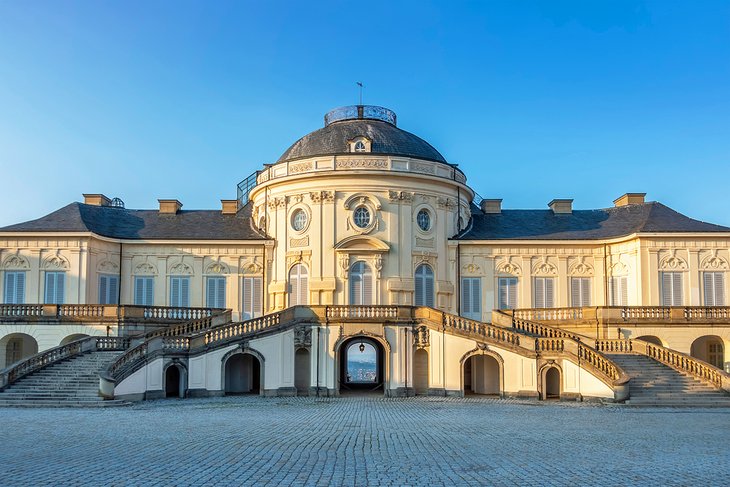
Located on a scenic vantage point a few miles outside of Stuttgart's city center, Schloss Solitude (Solitude Palace) was built for Duke Karl Eugen in 1763 as a hunting lodge and summer residence.
Designed in the late Rococo and early Neoclassical styles, the most sumptuously decorated rooms are in the central pavilion. Its highlight is the radiant Weisse Saal (White Hall) with its lovely domed roof, intricate decorative goldwork, and frescoed ceiling.
Outside, you can stroll through the manicured grounds and along the Solitude Allee , a broad tree-lined avenue commissioned by Duke Carl Eugen, which extends for more than 13 kilometers between Solitude Palace and the Palace at Ludwigsburg.
Address: Solitude 1, Stuttgart
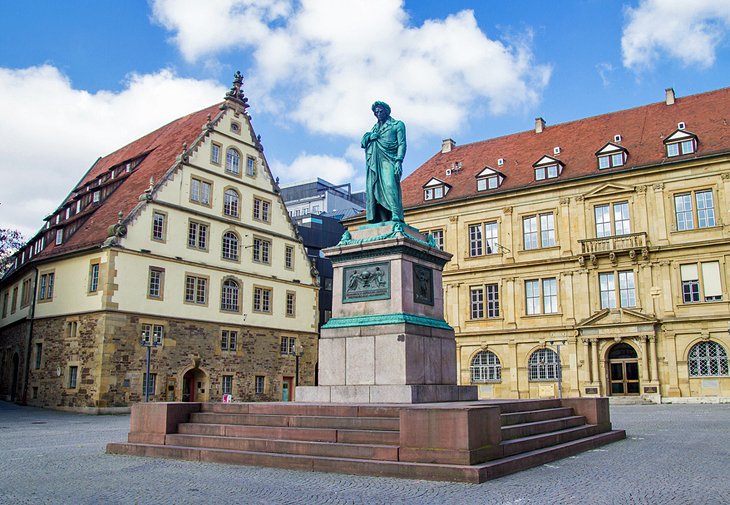
Flanking the Old Palace is Schillerplatz, an old town square with a monument to Friedrich Schiller, poet, philosopher, historian, and dramatist - one of Germany's most famous cultural giants. The square is the site of a flower market on Tuesday, Thursday, and Saturday mornings, and in December joins the Schlossplatz and Marktplatz, on either side of Schillerplatz, as home to the Christmas Market.
One side of the square is formed by the Alte Kanzlei (Old Chancellery), and on the southwest side is the old Fruchtkasten (Granary) dating from 1390, and adjoining it, the choir of the Stiftskirche.
The two unmatched spires of the Stiftskirche, the Collegiate Church, tower above the small remnant of Stuttgart's Old Town. Founded in the 12th century on the site of an older 10th-century church, Stiftskirche was rebuilt in Late Gothic style in the 15th century and reconstructed in 1958 after heavy damage in World War II. Highlights include a magnificent series of 16th-century Renaissance figures of the Counts of Württemberg, as well as its 17th-century burial vaults.
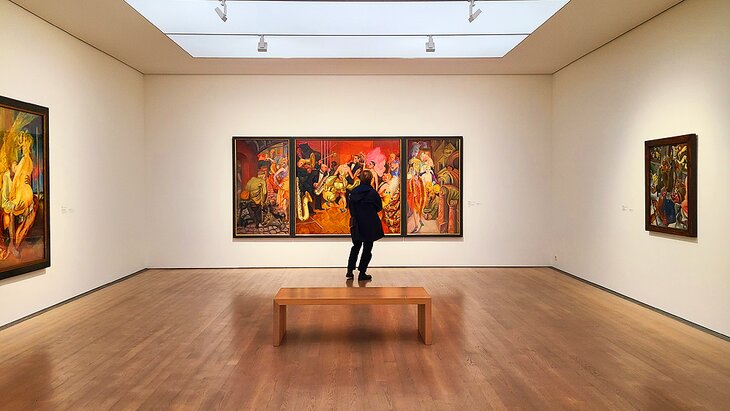
The bold design of the Kunstmuseum Stuttgart 's large glass cube stands in sharp contrast to the palaces and other buildings overlooking the Schlossplatz. But its glass exterior and white limestone interior walls are an appropriate home for an outstanding collection of contemporary and modern art.
The lean, clean lines; open spaces; and subtle indirect lighting of the exhibition galleries highlight the bold images and striking colors of Modernist works on display in its 5,000 square meters of exhibition space.
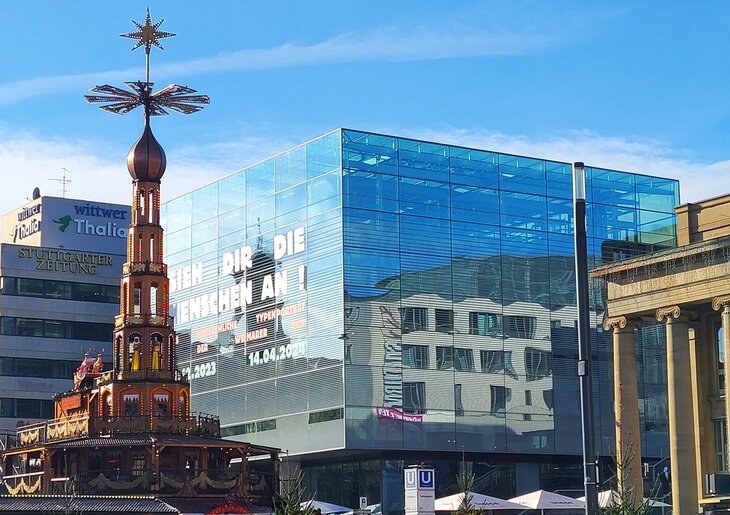
Highlights of the museum's extensive collection include some of the most important works by German artists Dieter Roth and Willi Baumeister, as well as the largest collection of important works by Otto Dix. His satirical paintings portray German high society during the post-World War I era, and interpretive signage identifies the actual subjects, who include celebrities of the 1920s.
Special exhibits highlight particular movements and artists' groups, such as the Swabian Impressionists.
The museum has a well-regarded restaurant on its top floor called CUBE with floor-to-ceiling windows providing amazing views out over the Schlossplatz.
Address: Kleiner Schloßplatz 1, Stuttgart
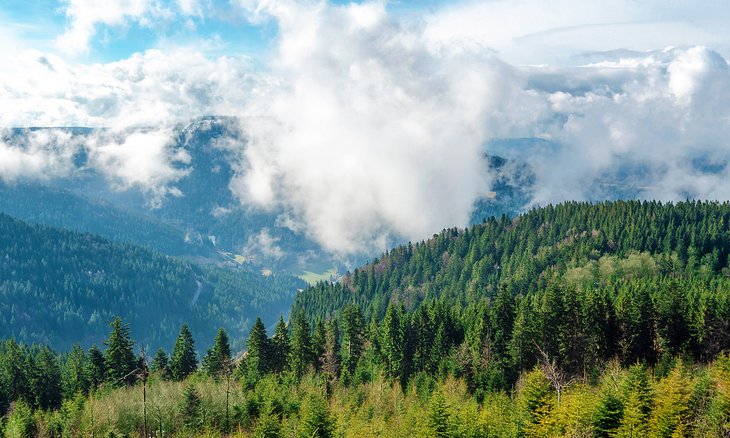
One of the most beautiful drives in Germany is along the 70-kilometer (44-mile) Schwarzwaldhochstrasse, Black Forest High Road. The route is well-named, for it climbs along the ridge of the Baden-Baden mountain range, ascending to more than 3,000 meters (over 9,800 feet) for spectacular views of the Black Forest valleys and over the Rhine valley and the Vosges mountains in France.
The High Road begins in Baden-Baden, a 1.25-hour drive from Stuttgart, and follows Rte. B500 south to Freudenstadt. Several highlights along the route invite stops. At the glacial Lake Mummelsee , you can follow the path around the lake or rent pedalos to explore it from the water.
A wilderness path on the Bühlerhöhe is a popular thing to do for hikers, and the Lothar Path is a fascinating look at how nature recovers from a devastating hurricane. In 1999 Hurricane "Lothar" felled 40,000 hectares (99,000 acres) of forests in Baden-Württemberg. The Lothar Trail takes visitors through the area on boardwalks, ladders, stairs, and bridges through and above the damaged woodlands, showing how the forests are regenerating without intervention.
All along the route are stopping points and restaurants serving traditional Black Forest dishes. You can return on the same road for a different perspective of the views, or you can choose a route through the eastern part of the Black Forest, through a series of charming half-timbered towns.
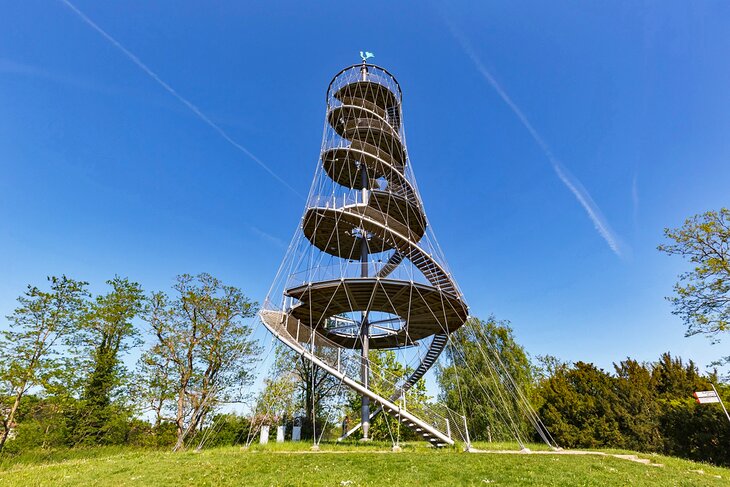
Originally laid out in 1939 as part of a major horticultural show, Killesberg Park is a lovely 123-acre open space offering visitors several things to do. Many of its structures date back to its opening and are still used for flower shows and events, but the most recent attraction is the unusual Killesberg Tower.
This 40-meter-tall cone-shaped observation tower is made of metal stairs that spiral upwards on steel cables. Its open-air construction can be a bit unnerving, as can the slight swaying feeling on the uppermost of the observation platforms.
For a closer-to-the-ground experience, tour the park on the narrow-gauge Killesberg railway; both diesel and steam locomotives pull cars through the grounds - departures are frequent, so you can wait for a steam run. If you are visiting Stuttgart in July, be sure to visit Lichterfest Stuttgart , a festival during which thousands of lanterns decorate the park.
Address: Stresemannstraße, 70191 Stuttgart
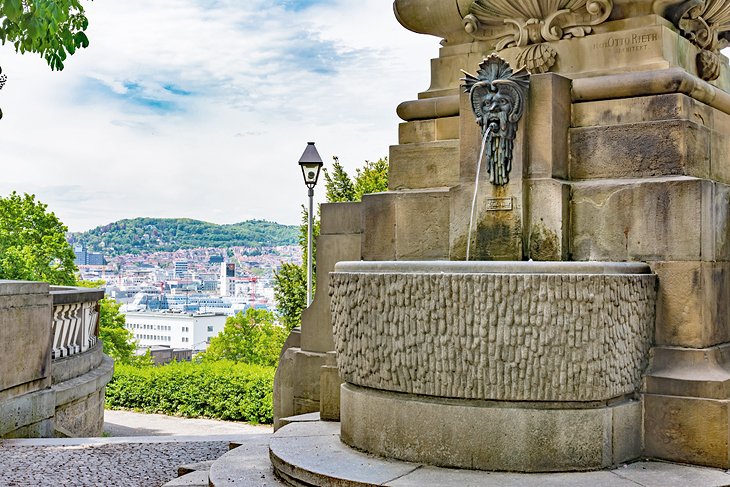
It's a long climb up the Eugenstaffel , the broad flight of steps that begins beside the State Art Museum and leads to the lovely park and scenic overlooks of Eugensplatz. Or you can save the climb by taking bus #42 up Alexanderstrasse from Charlottenplatz. Below are wide walkways leading down through a hillside of greenery and across the center of a stair-stepped waterfall that splashes its way through the park.
At the top stands a statue of Galatea, a figure from Greek mythology, dating from 1890. The park is one of the locals' favorite places to visit in the summer for its cool breezes, its views of the city, and the ice-cream shop, Pinguin, just across the street.
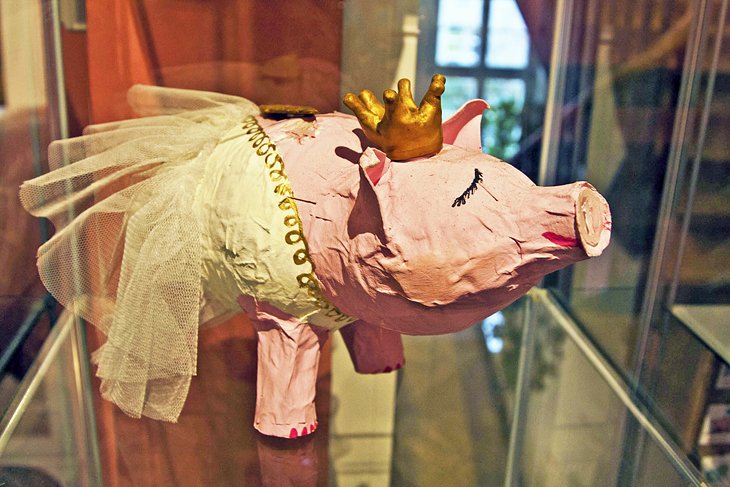
Certainly one of the most unusual things to do in Stuttgart — or in any German city — is a visit to the Pig Museum . If there is any form of art that depicts a pig, you'll find it here, from finely worked sculptures and masterly pastoral paintings to china knick-knacks and a pink papier-mâché pig princess in a tulle tutu.
The more than 50,000 pigs from all over the world are displayed creatively and with a sense of humor, filling 27 themed rooms. An entire room is devoted to piggy banks, another to stuffed toys, and an attic-like room is devoted to larger pieces of fork art. Exhibits with signs in English and German explore everything from pig history and science to mythology.
The Guinness Book of World Records included it as " The Largest Pig Museum of the World " and after seeing it, you won't doubt it. The museum is a bit out of the center, but easy to reach on the U-9 tram or Bus #56.
Address: Schlachthofstraße 2, Stuttgart
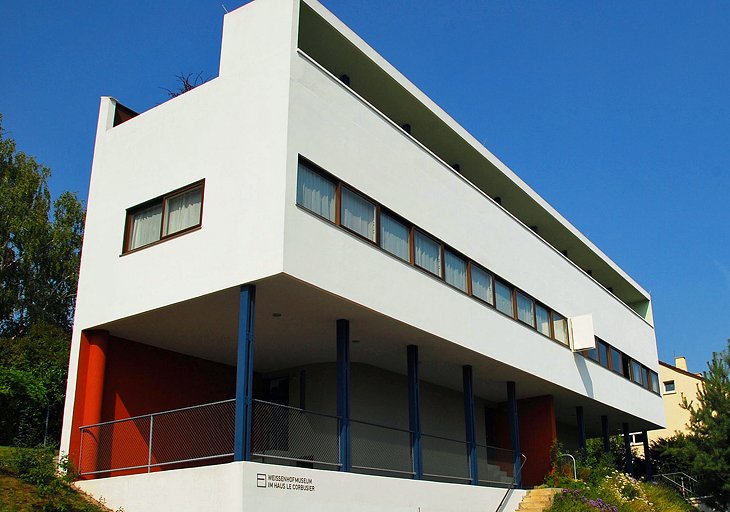
Above the northern part of Stuttgart near the Academy of Fine Art, the Weissenhof Estate (Weißenhofsiedlung) is a pioneering and influential housing development built in 1927 for an exhibition by the Werkbund.
This group of leading international architects, which included Le Corbusier, Mies van der Rohe, and Walter Gropius, threw off the flowing decorative forms of the Art Nouveau movement and became leaders of the Modernists by embracing functional geometric building designs with little or no ornament.
The semi-detached housing units used new construction methods as well, with steel frames and prefabricated elements. Eleven of the project's 21 original buildings survive, and you can see and learn about them in exhibits at the Weissenhof Museum , located in one of Le Corbusier's buildings.
Address: Rathenaustrasse 1- 3, Stuttgart
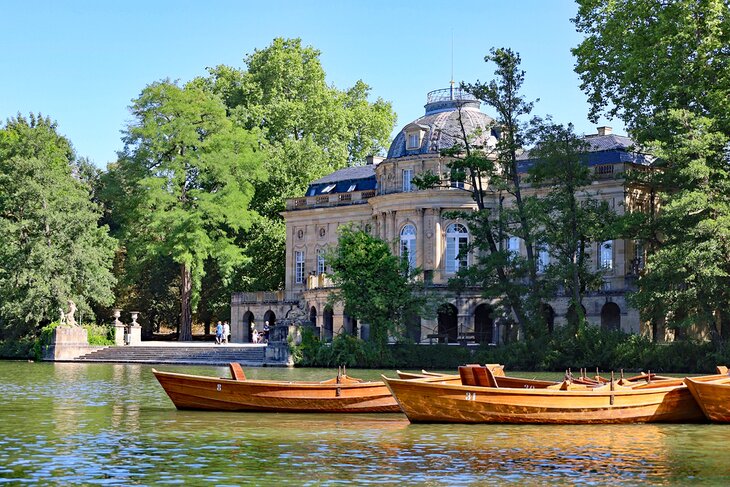
A 30-minute drive or train ride from Stuttgart, Monrepos Palace (Seeschloss Monrepos) is well worth the trip. When you see this stunning Rococo building, it may be difficult to remember that it was built as a hunting lodge. Completed in 1768 for Duke Carl Eugen, it sits overlooking a small lake with two tiny wooded islands, and is surrounded by a walking path.
Although no tours are offered of the interior, the grounds and lakeside park surrounding the palace are open to the public and free of charge. To fully enjoy the experience, rent a rowboat and admire the grandeur of this beautiful spot, then enjoy a picnic in the park's gardens.
If you are up for a stroll, you can walk the 1.6-mile Seeschlossallee to visit the estate's second "lodge," Schloss Favorite (Favorite Palace). Although much smaller than its sibling, this lovely Baroque palace is open for tours. While you're in the area, you can easily walk to the nearby Residenzschloss Ludwigsburg (Residential Palace), for a tour of its grand halls and theater.
While you can enjoy the property's general ambience as a day guest, an overnight or two at Schlosshotel Monrepos gives you the chance to really live like royalty.
Address: Monrepos 19, 71634 Ludwigsburg, Germany
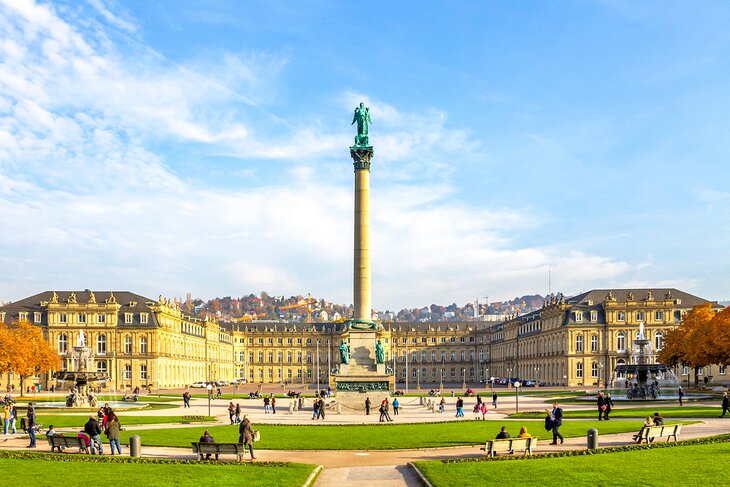
Stuttgart has a lot to offer to its visitors, and deciding what to see and when can be a bit overwhelming. If you only have a day to spend, you might want to start by exploring the central city with its beautiful plazas and parks. For lunch, you could try the Market Hall, and in the afternoon, you could visit either the Porsche or Mercedes Benz museums.
Not interested in cars? No problem, you can skip the auto museums and go shopping along Konigstrasse, or check out the high-end stores near the Markethall. In the evening, you can have dinner at a local restaurant that serves delicious Swabian cuisine.
If you've got two days, do all the above, then layer on a day trip to the medieval town of Esslingen with a stop at the Mercedes Benz Museum on the way. Three days allows you to do everything and then add on a trip out to the palaces of Ludwigsburg with a lunch in the Old Town followed by a visit to Stuttgart's Wilhelma Zoological and Botanical Garden in the afternoon.
No matter what you choose to do, getting around on public train transport is easy and inexpensive.
Stuttgart's main train station (Hauptbahnhof) is a five-minute walk from the Schlossplatz, around which you'll find several of the city's major tourist attractions and its main shopping streets. Surrounded by hills, downtown Stuttgart can be very hot in the summer, and many mid-range and budget hotels have no air conditioning. An excellent U-Bahn and tram system makes getting around easy from any location, so hotels set on the hills can be more comfortable after a summer day's sightseeing. These are all highly-rated hotels in Stuttgart:
Luxury Hotels :
- Kronen Hotel Stuttgart is a 10-minute walk from both the station and Schlossplatz and is known for its bountiful breakfast.
- Guest room balconies at luxurious Waldhotel Stuttgart overlook a woodland park, a short U-Bahn ride to the center; its own fine-dining restaurant is one of several choices in the hilltop neighborhood.
- A short walk from the center, City Hotel Stuttgart is in a hillside neighborhood with restaurants and on a U-Bahn line.
Mid-Range Hotels:
- A few blocks from the business district, Wartburg Hotel has small pleasant rooms and accommodating staff.
- Rooms are somewhat more spacious at Hotel Unger beim Hauptbahnhof, only a block from the train station.
- Smart, modern Maritim Hotel Stuttgart has spacious rooms in a quiet neighborhood with restaurants, a 10-minute walk from the center and on tram and U-Bahn lines.
Budget Hotels:
- Motel One Stuttgart-Mitte , in the pedestrianized business district, a block from the Hauptbahnhof and Schlossplatz, has small and plain but comfortable rooms.
- Novum Hotel Rieker Stuttgart Hauptbahnhof offers basic rooms in an excellent location close to the train station.
- In the city center, Novum Hotel Boulevard Stuttgart City is just behind the Rathaus and three blocks from the Old Palace and historic Schillerplatz.
More Related Articles on PlanetWare.com
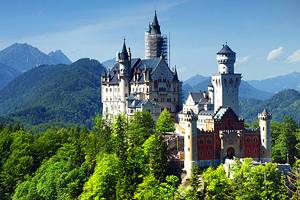
Places to Visit near Stuttgart: Stuttgart sits at the northern edge of Baden-Württemberg's beautiful Black Forest region . Also at the edge of the Black Forest, in the Rhine River Valley , is the spa town of Baden-Baden .
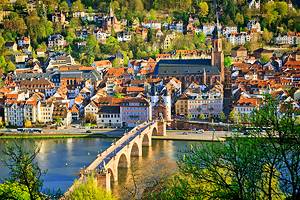
Discovering More of Germany: A short train ride to the north of Stuttgart is historic Heidelberg , and the same train line continues north to Frankfurt . Our page on day trips from Frankfurt will give you lots of ideas for the best places to visit from here.
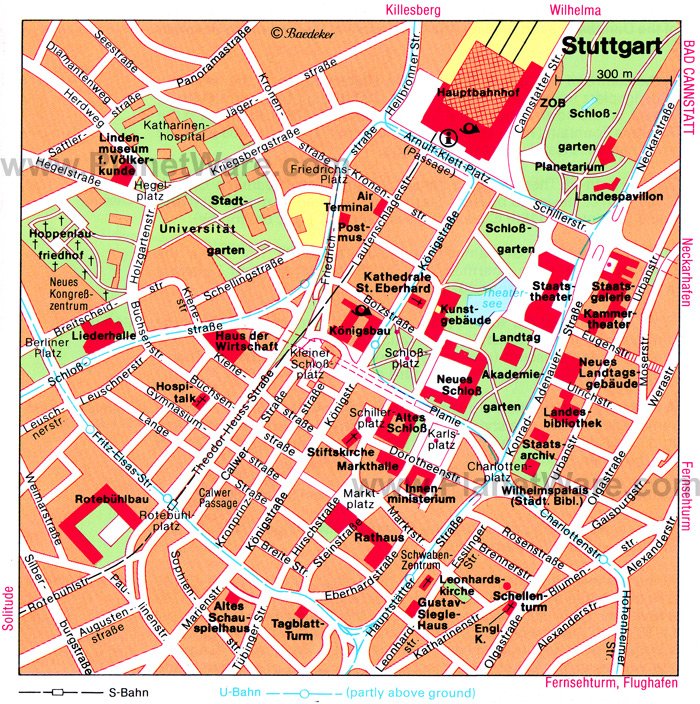
More on Germany

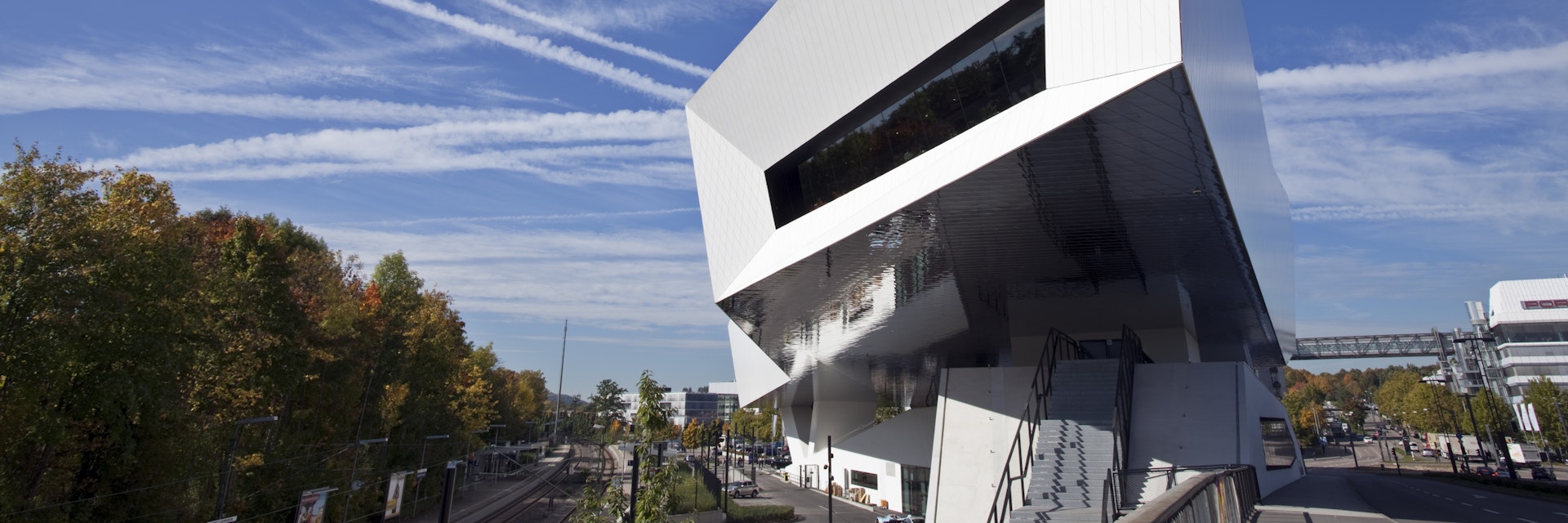
Getty Images
Ask many Germans their opinion of Stuttgarters and they'll have plenty of things to say: they are road hogs, speeding along the autobahn; they are sharp-dressed executives with a Swabian drawl; they are tight-fisted homebodies who slave away to schaffe, schaffe, Häusle baue (work, work, build a house).
Attractions
Must-see attractions.
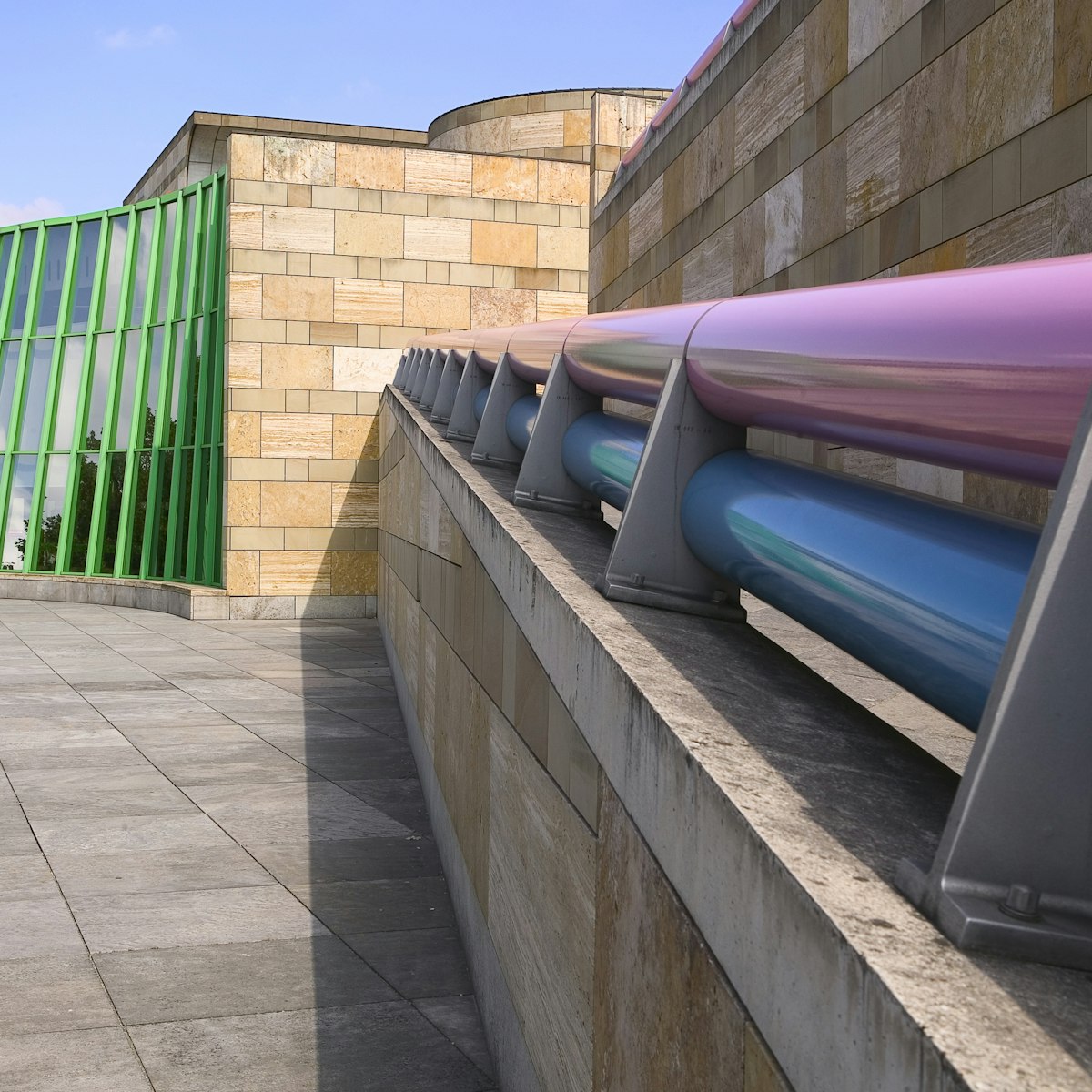
Staatsgalerie Stuttgart
The neoclassical-meets-contemporary Staatsgalerie bears British architect James Stirling’s curvy, colourful imprint. Alongside big-name exhibitions, the…
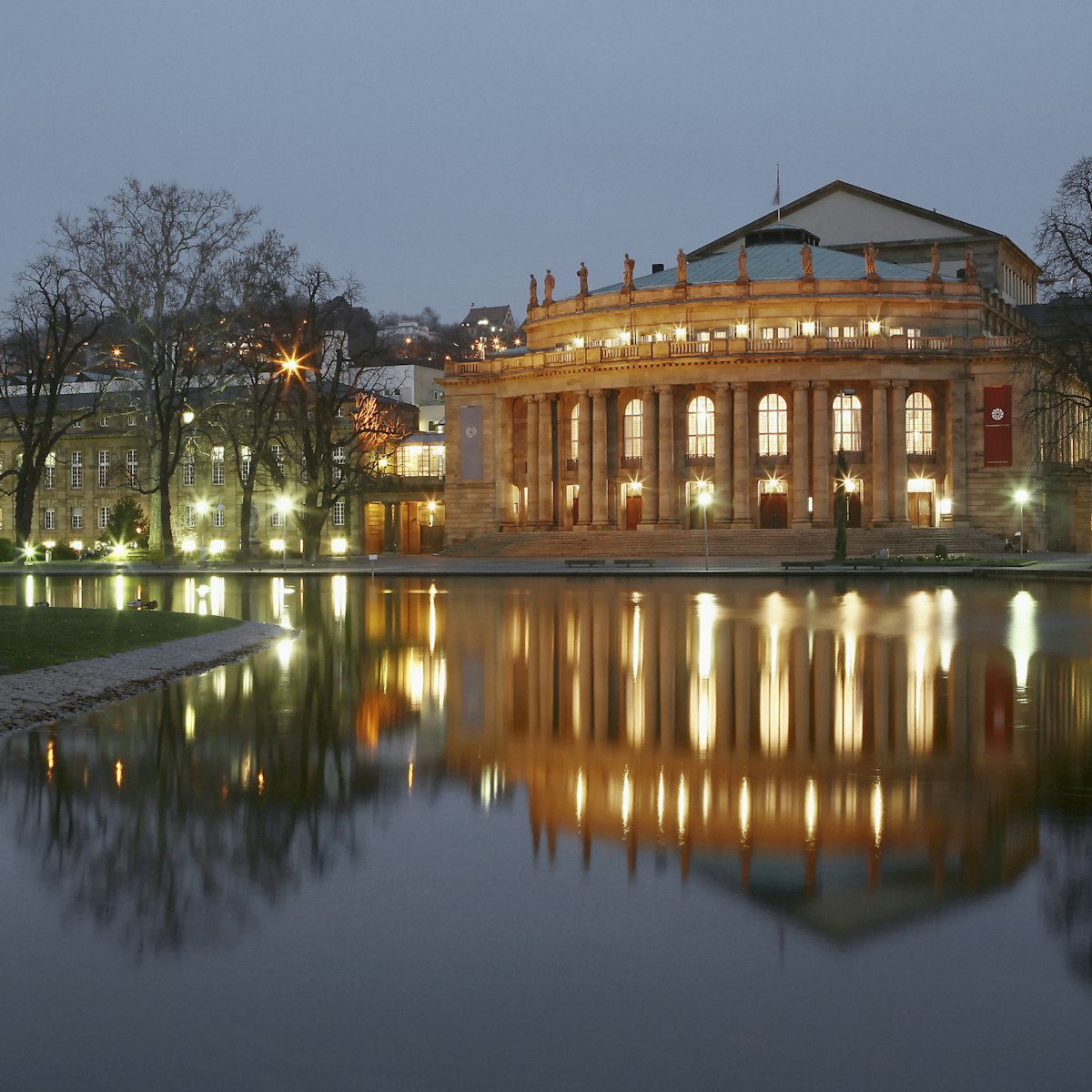
Schlossgarten
A terrific park for a wander right in the heart of the city, Stuttgart's sprawling Schlossgarten threads together the Mittlerer Schlossgarten, with its…

Schlossplatz
Stuttgart's pride and joy is this central square, dominated by the exuberant three-winged Neues Schloss, an impressive, Versailles-inspired baroque palace…

Schloss Solitude
Domed Schloss Solitude, perched above Stuttgart, was built in 1763 for Duke Karl Eugen of Württemberg as a hunting palace and summer residence. Blending…

Bohnenviertel
To really slip under Stuttgart’s skin, mosey through one of the city’s lesser-known neighbourhoods. Walk south to Hans-im-Glück Platz, centred on a…

Weissenhof Estate
Architecture enthusiasts are thrilled by the recent opening of the Weissenhof Estate, following many years of restoration. Built in 1927 for the Deutscher…

Fernsehturm
Whether you think it a marvel or a monstrosity, the 217m-high Fernsehturm is one of Stuttgart's most visible landmarks, with its needle-thin concrete…

Kunstmuseum Stuttgart
Occupying a shimmering glass cube, this gallery presents high-calibre special exhibits alongside a permanent gallery filled with a prized collection of…
Latest stories from Stuttgart
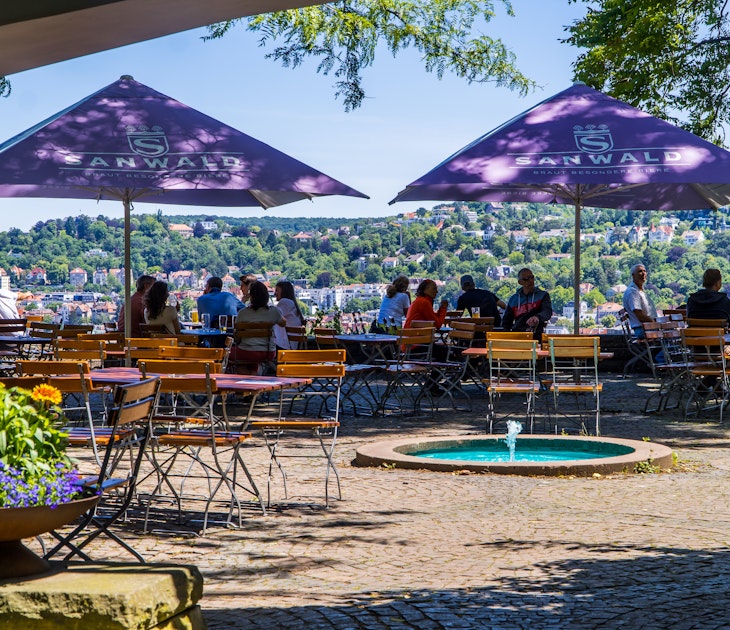
Aug 9, 2023 • 5 min read
Stuttgart is crisscrossed with many stairways that can quickly take to you heavenly views of the city. Here's everything you need to know about Stäffele.

Oct 23, 2019 • 4 min read
in partnership with getyourguide
Book popular activities in Stuttgart
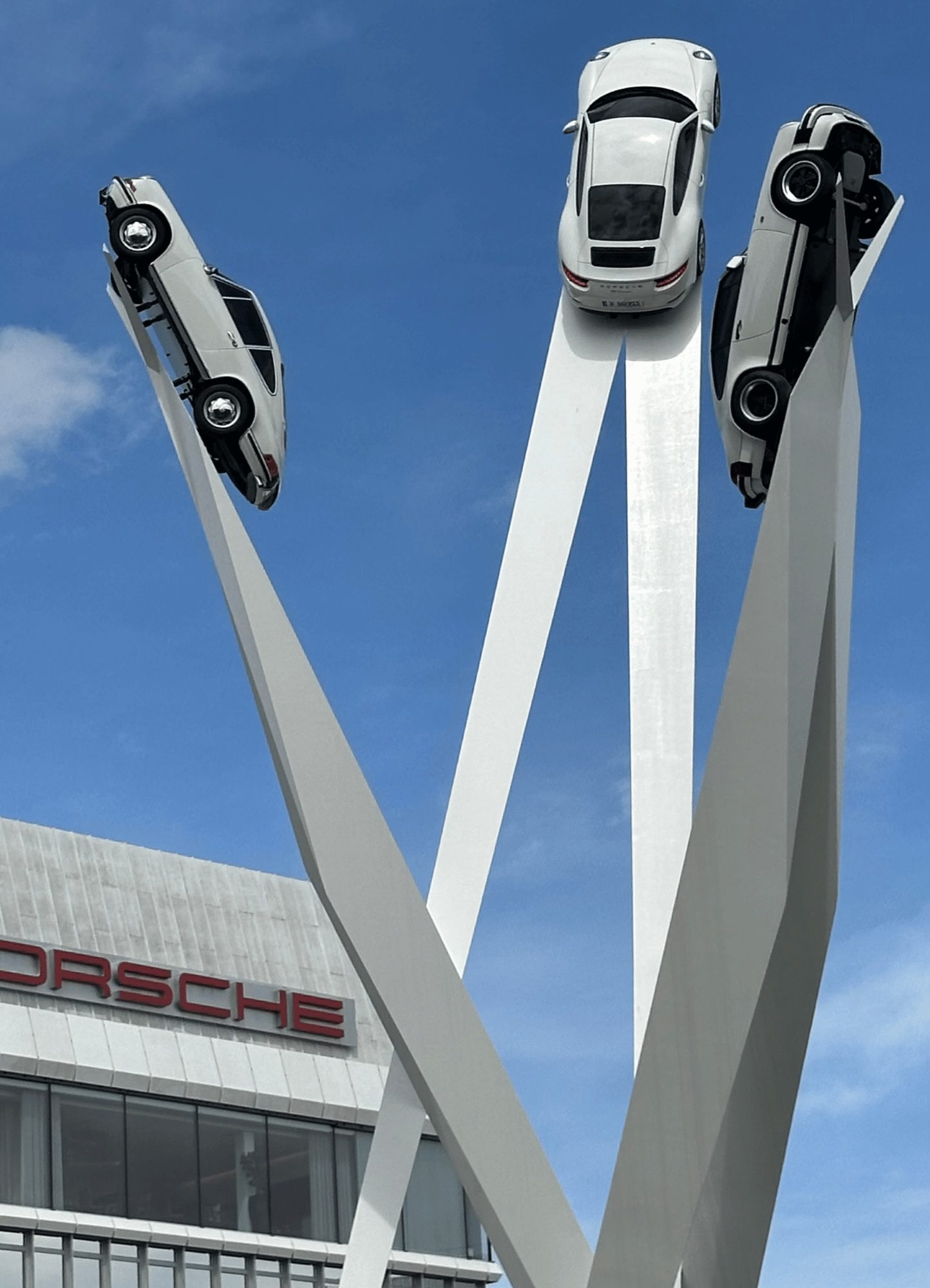
STUTTGART – ULTIMATE GUIDE
Are you going to Stuttgart in Germany and you need help with planning your trip? You’ve come to the right place!
Stuttgart is perhaps Germany’s most underrated city. So together with Radisson Blu Hotel at Porsche Tower in Stuttgart we explored the city and its surrounding areas to convince you to visit and see for yourself how much this city has to offer.
This complete and up-to-date guide will lead you straight to the best restaurants & bars as well as things to do, and all the logistics necessary to make this an unforgettable experience.
So let’s not waste any more time and go straight into planning your perfect holiday !
* This post has been sponsored by Radisson Blu Porsche Tower
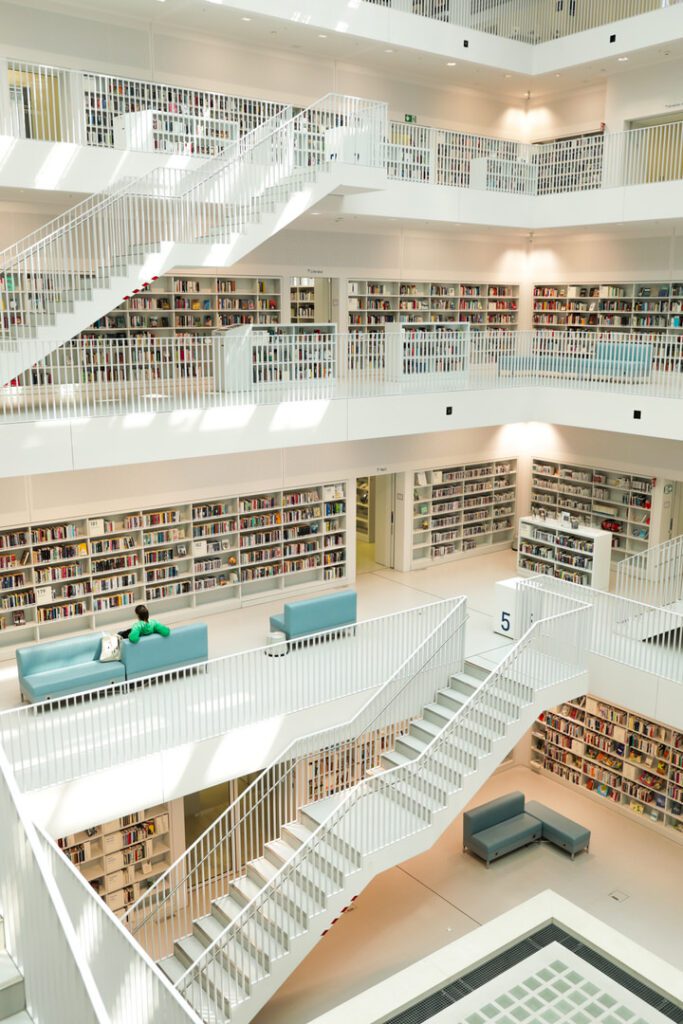
What you need to know before you go
There are a few things you need to know before you visit Stuttgart. We have broken them down into the below key four questions :
Is Stuttgart worth visiting?
Stuttgart is perhaps Germany’s most underrated city. Located in southwest Germany, many people know it as a center of industry. This is no doubt because Porsche and Mercedes-Benz have their headquarters and some fantastic museums here. However, Stuttgart has even more to offer than this.
From modern art to historic masterpieces, from beautiful old architecture to wonderful contemporary buildings, and from magnificent castles to world-class zoos, Stuttgart has an attraction to appeal to every visitor, from solo travelers to honeymooning couples, to families.
Beyond culture and sightseeing, come to Stuttgart for a great food scene and fun nightlife. From Michelin-starred restaurants to homely places serving hearty Swabian food, Stuttgart caters to every appetite. The city also has great bars for the night owls.
Start your trip off right by booking a room at the superb Radisson Blu Hotel . As for the rest, read on…
How to get to Stuttgart?
It is easy to reach Stuttgart using many forms of transport. As the home of two of Germany’s most famous car manufacturers, it’s no surprise the road links to the rest of the country are excellent. However, Stuttgart airport is also conveniently located south of the city and provides flights to destinations all over Europe and beyond.
Finally, it’s also well-connected by rail. You can catch direct trains to Stuttgart from other major European cities such as Paris. So, what are you waiting for?
Getting around
Getting around the city couldn’t be easier either. You can of course drive, however you might have an easier, cheaper time using public transport . There’s a handy network of metro trains that will get you anywhere in the city and beyond. Otherwise, the bus, tram, and long-distance rail connections mean making the most of the city and its surroundings is easy.
Additionally, get a StuttCard Plus during your stay and you’ll have free travel across the whole network! This will make your stay cheaper, smoother, and much more enjoyable.

Best Time to Visit
Stuttgart is also a great year-round destination . Firstly, it has a mild climate, with comfortably warm summers and winter temperatures that normally don’t drop below zero. However, the city also hosts a variety of amazing events and attractions virtually every month.
From the enchanting Christmas market, to spring and autumn festivals, to the beauty of Stuttgart’s parks and gardens in summer, there isn’t really a bad time to visit.
Is Stuttgart a good base?
I was really surprised to find out that Stuttgart is surrounded by incredible countryside and beautiful nearby towns. Therefore, it makes a great base for day-trips. See our article on the towns and sights you won’t want to miss if you fancy exploring the area around Stuttgart.
We have created a list of top 10 places to visit.
If you aren’t yet convinced, I’m certain you will be when you’ve read about the…
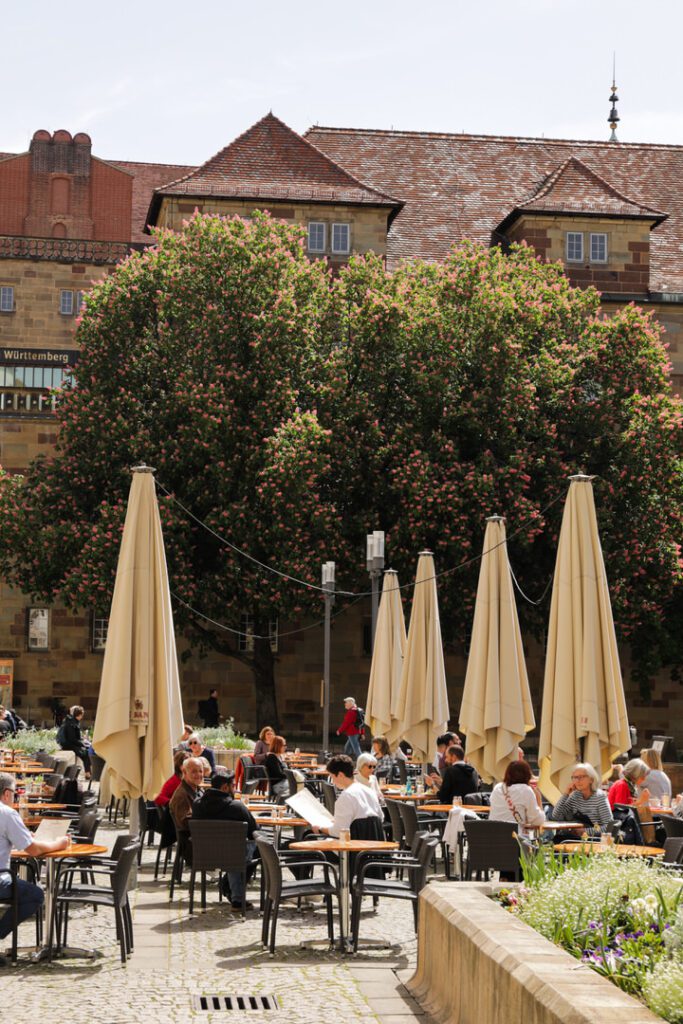
Where to eat in Stuttgart
Inspired by the village of Tatti in Tuscany, this trendy spot is a cafe by day and a bar by night. Come early for breakfast, brunch, or a light lunch with great coffee and soft drinks. Later, enjoy delicious, unusual Italian and German drinks and a buzzing atmosphere.
Wyld Stuttgart
This trendy, Scandi-style cafe is the perfect place for breakfast! It serves everything from home-made muesli to vegan paninis as well as great coffee. It’s also a good place to stop in the afternoon for a sweet treat. And, pick up thoughtful gifts from its cool concept store next door.
The Gardener’s Nosh
Ultra-chic bar serving coffee, snacks, and great cocktails in the heart of Stuttgart. For food, choose from pastries, small plates, and wraps. Otherwise, there’s a great menu of signature drinks and classic cocktails.
Die Metzgerei
On the edge of Stuttgart’s city center, this quiet, sophisticated bar offers cocktails of the highest quality. The expert bartenders are warm and welcoming, and will be happy to guide you through a menu of old classics and bold new inventions.
TA OS Weinbar
This stylish wine bar has an impressive selection of drinks and serves delicious small plates. Obviously, there are lots of excellent German wines on offer, but there are great choices from all over Europe too. The decor is bohemian and comfortable. There’s also a lovely, sunny terrace out front.
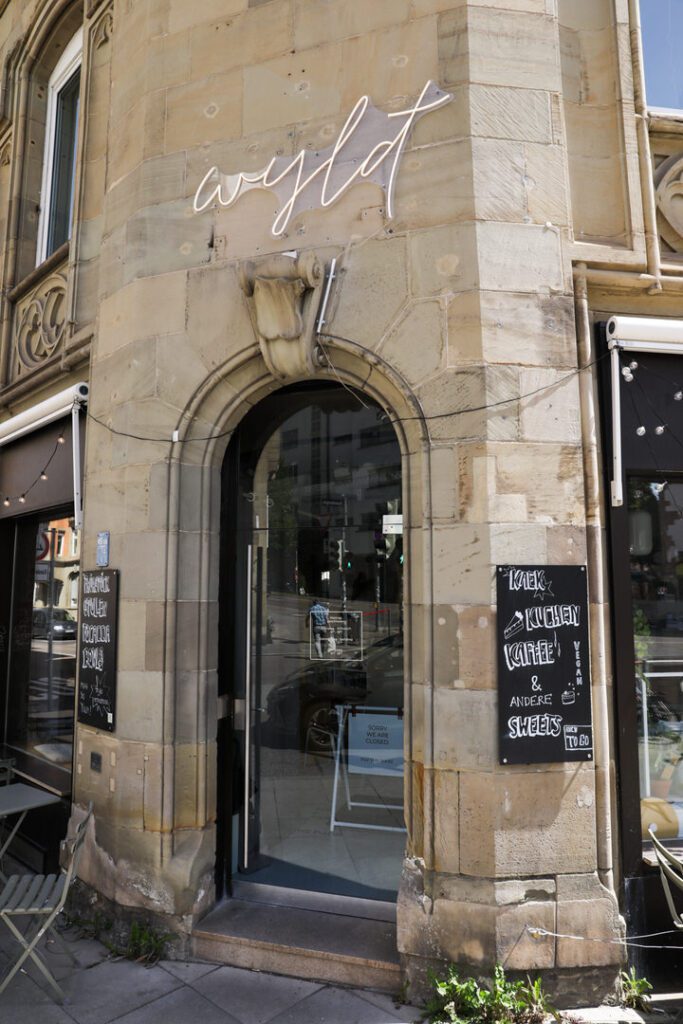
Where to stay in Stuttgart
To have the best time possible on your trip to Stuttgart, you’ll need to choose the right hotel. Luckily, this choice is easy thanks to Radisson Blu at Porsche Tower .
From luxurious, comfortable rooms with sleek, modern design, to great food, and brilliant staff and facilities (who doesn’t love having access to a sauna?) the Radisson has everything you could wish for.
One of our favorite features was the bar and roof terrace with enviable views of the city skyline and Killesberg Park. Otherwise, the Balaustine – the Levantine restaurant serves delicious dishes, and the bar is perfect for a nightcap. Moreover, it is reasonably priced and has a convenient central location with great transport links throughout the city and to the airport.
So what are you waiting for? Book your stay at the Radisson Blu today and discover all the wonderful things this city has to offer.
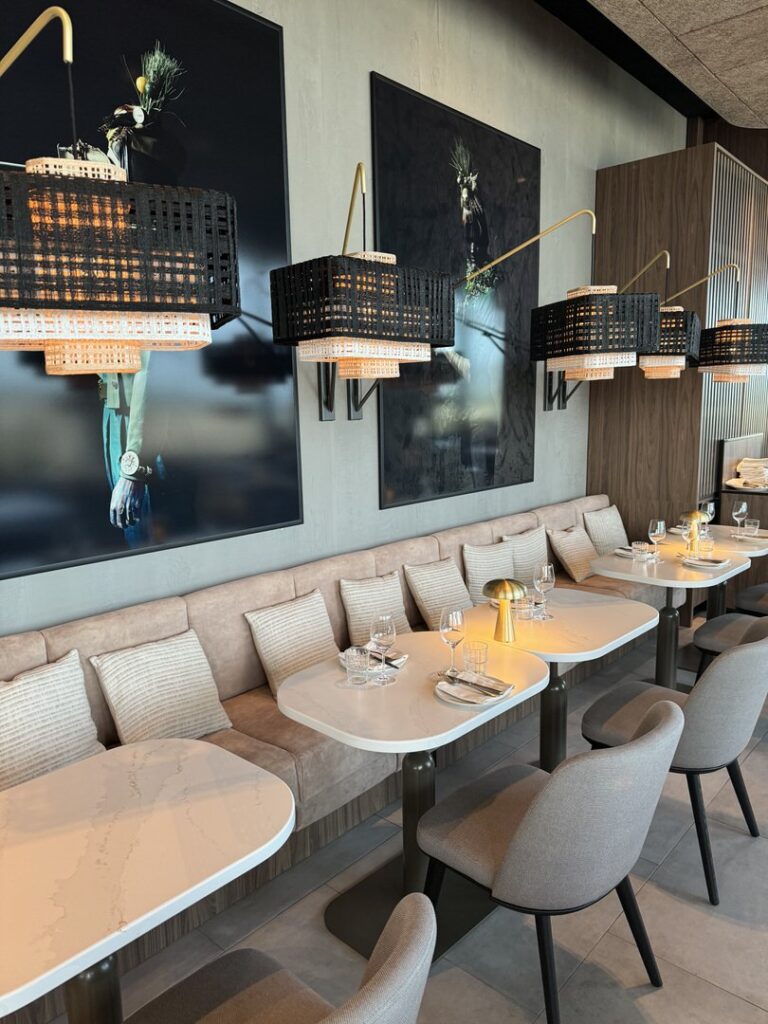
What to do in Stuttgart
You could find enough for a week to do In Stuttgart but realistically you will only be able to do a few things, so we have listed our favourites below:
Stadtbibliothek Stuttgart
Stepping into Stuttgart’s library feels like walking into a scifi movie. Marvel at the building’s contemporary architecture as you wander around it with an audio guide. Kids will love the fun-filled children’s department. Also, the exhibitions on Stuttgart’s literary history are fascinating. Be aware that photos with your smartphone are allowed without prior permission but all other photography and filming needs approval!
INSIDER INFO : The roof terrace is free to access and offers great views of the city.

Porsche museum
The Porsche museum’s design is as sleek and pleasing as any of the gorgeous cars inside. And, with hundreds of exhibits and lots of Porsches on show, there’ll be plenty to keep you fascinated when you step through the doors too. With information on the history, design, and engineering of these iconic cars, there’s something to interest and thrill everyone.
INSIDER INFO : Don’t miss a photo in front of the incredible sculpture in front of the museum!
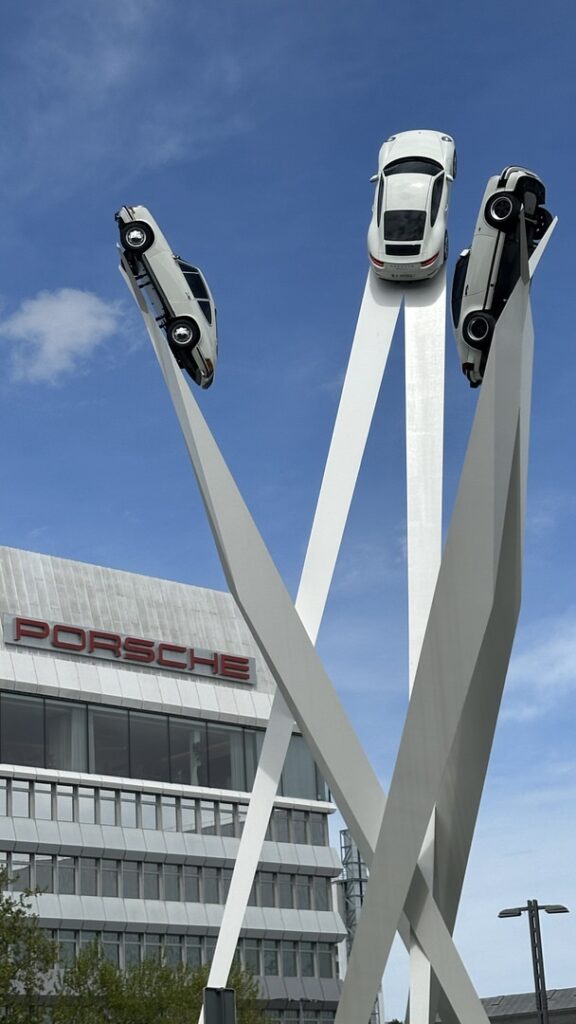
Wilhelma Park
Wilhelma Park is a unique combination of zoo and botanical gardens. Therefore, there are all kinds of natural wonders to be discovered here. The zoo’s amazing animals range from monkeys, to penguins, to zebras, with many more besides. In terms of plants, there are giant redwoods, a gorgeous magnolia grove, and some of the biggest water lilies in the world. Finally, the zoo has some beautiful historic architecture and is surrounded by the lovely Rosenstein Park.
INSIDER INFO : Check what flowers and plants are in bloom before you visit to make the most of your trip!
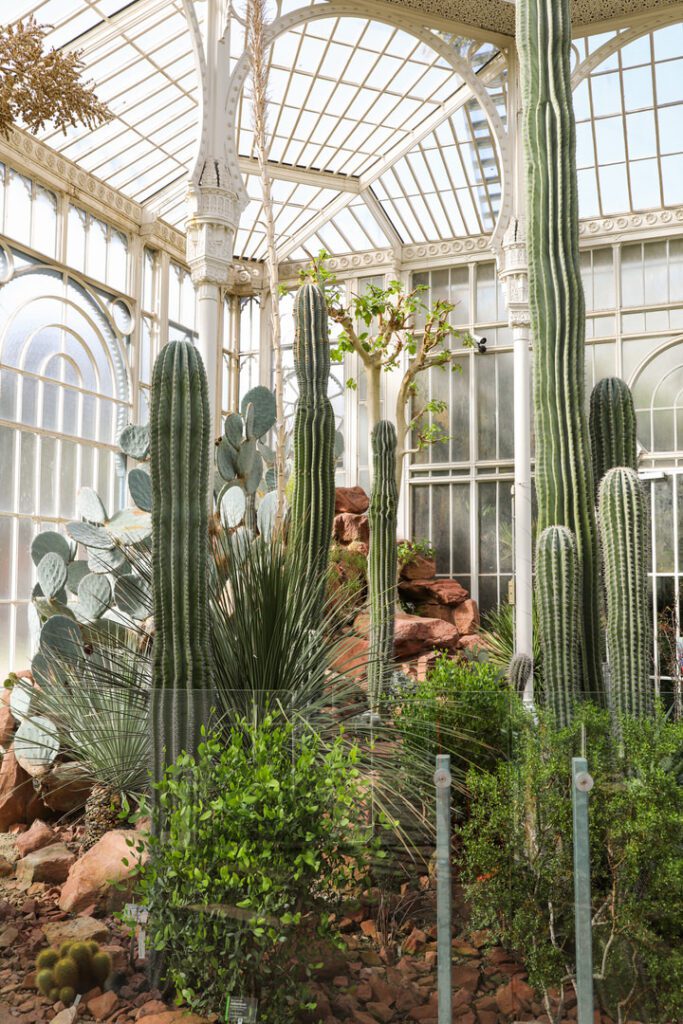
Calwer Passage
Calwer Passage is a shopping arcade built in the seventies with amazing listed glass and metalwork. However, it has just been renovated to make it even more stylish and environmentally friendly. Come to take pictures of the gorgeous architecture and the incredible plants hanging from the floors above you. Stay for some shopping or a sweet treat at one of the mall’s great bakeries.
INSIDER INFO : Isabella, with its gluten-free baked goods, makes for a great pit stop in an afternoon of sightseeing.
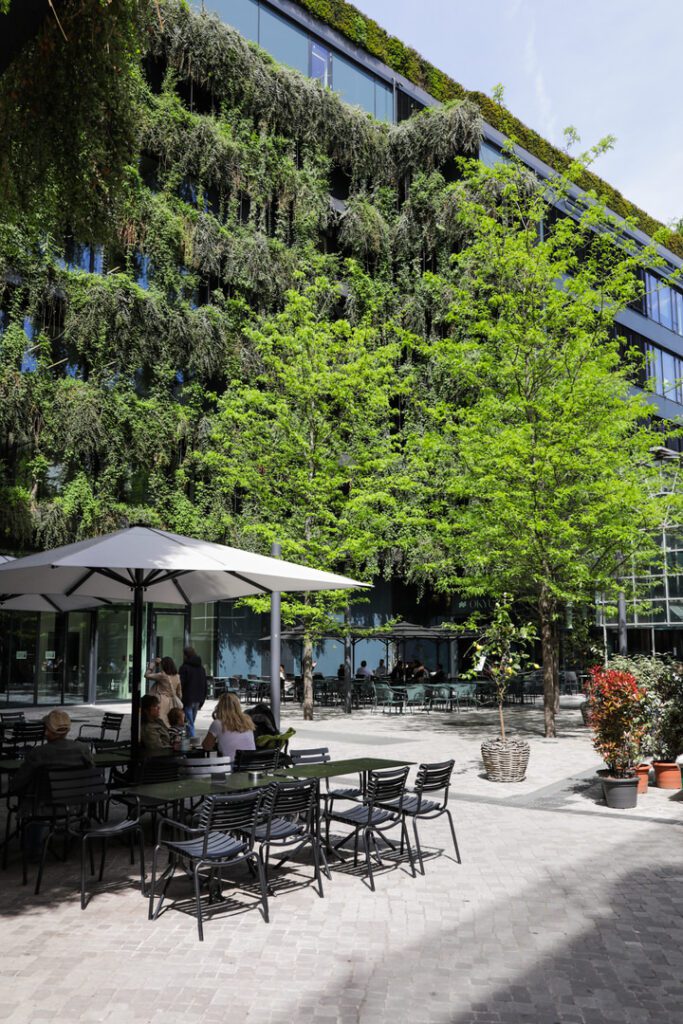
Grabkapelle chapel
This magnificent religious building has an equally impressive location. It is on a hill above the Neckar valley with stunning views of the city center – only 20 minutes away by car. King Wilhelm I built the Grabkapelle as a mausoleum for his beloved wife Queen Catharina. Step inside to marvel at its ornate, historic design and then enjoy the scenic views outside.
INSIDER INFO : Visit around sunset to take in the views during golden hour!
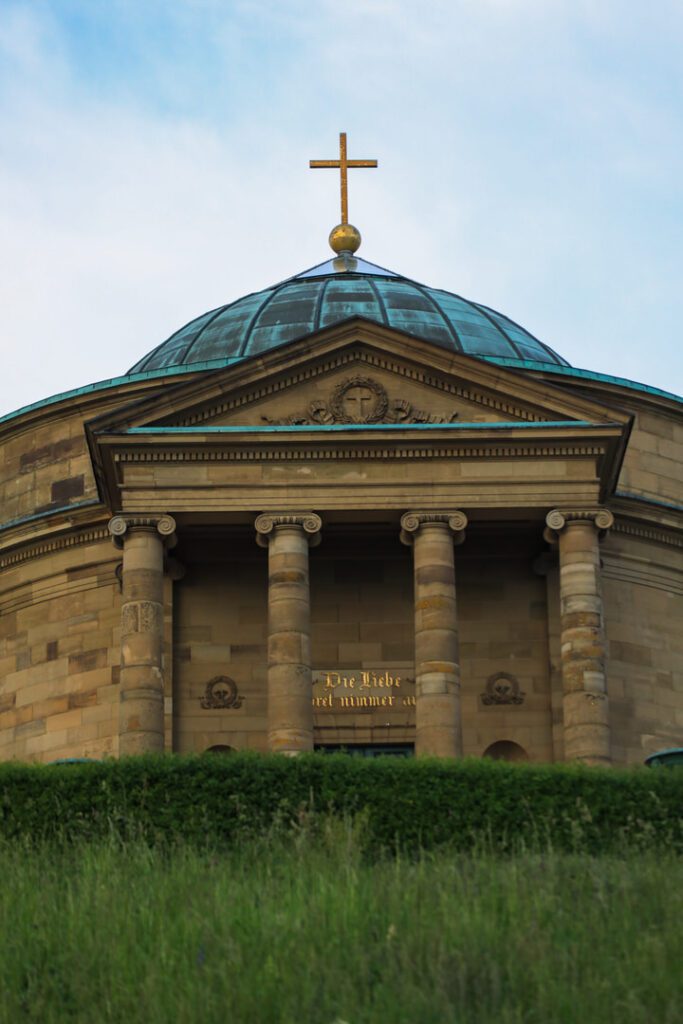
Rosengarten by Naturkundemuseum & Inselsee
You can spend whole afternoons or days wandering in Stuttgart’s large, beautiful, L-shaped Rosenstein Park. However, if you’re pressed for time head straight for its gems! We’d recommend the gorgeous, orderly rose garden next to the Natural History Museum (Naturkundemuseum) and the idyllic Inselsee pond. Obviously, kids and adults alike would enjoy a trip to see the dinosaurs in the museum too!
INSIDER INFO : Get a drink at Flora & Fauna and enjoy the views of the lake. This was one of our favorite spots in the city!
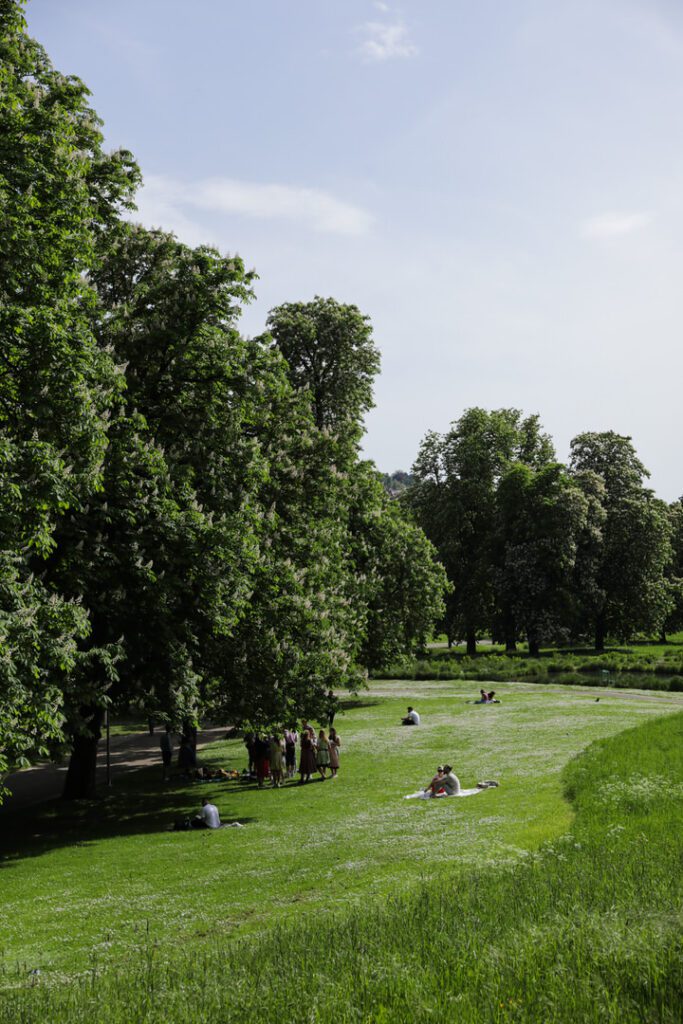
I really believe that Stuttgart is Germany’s most underrated city. I was really surprised to discover so many beautiful places in and out of city. Of course staying on the top floor of the Porsche Tower added to the experience.
Please consider the following points to make the most of your stay:
- Stuttgart is a year-round destination but I would advise to visit it in May when the city is in bloom and Wilhelma Park is at its best
- Use Stuttgart as the base to discover some incredible towns nearby, such as Tubingen, Bad Wimpfen, and Schwabisch Hall.
- Eat your way through the city, as it has some incredible restaurants. As per usual, book those in advance to avoid disappointments.
- Finally, book your accommodation in advance to get the best deals! Radisson Blu at Porsche Tower currently offers very attractive rates given that the hotel opened at the end of 2023.
Voyage Provocateur
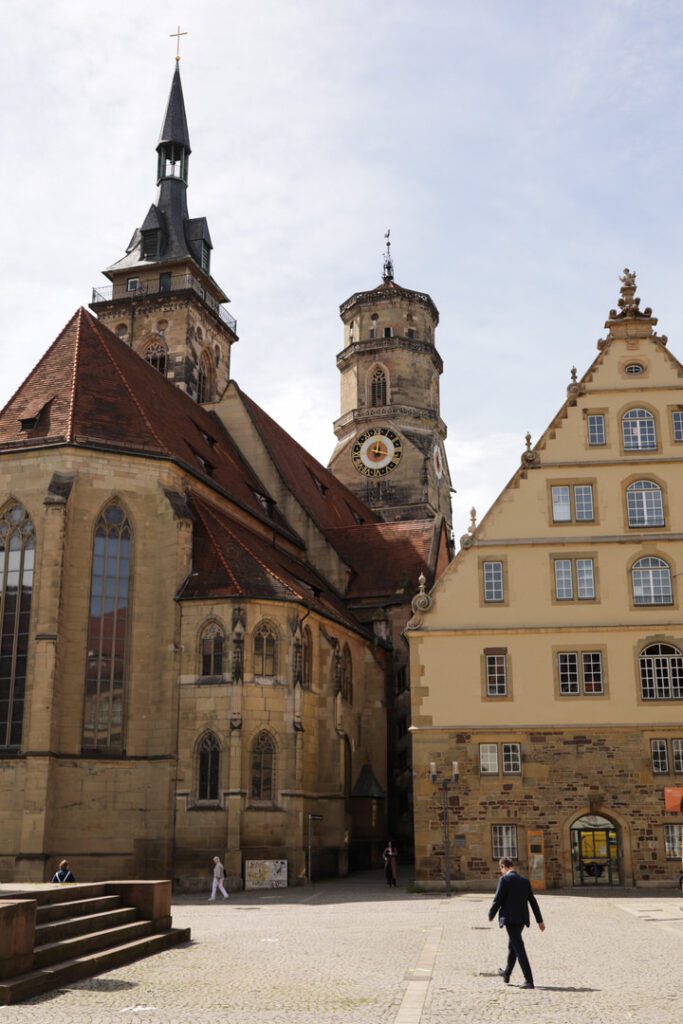
GERMANY’S 10 MOST BEAUTIFUL TOWNS
FRANKFURT TOP 10 RESTAURANTS
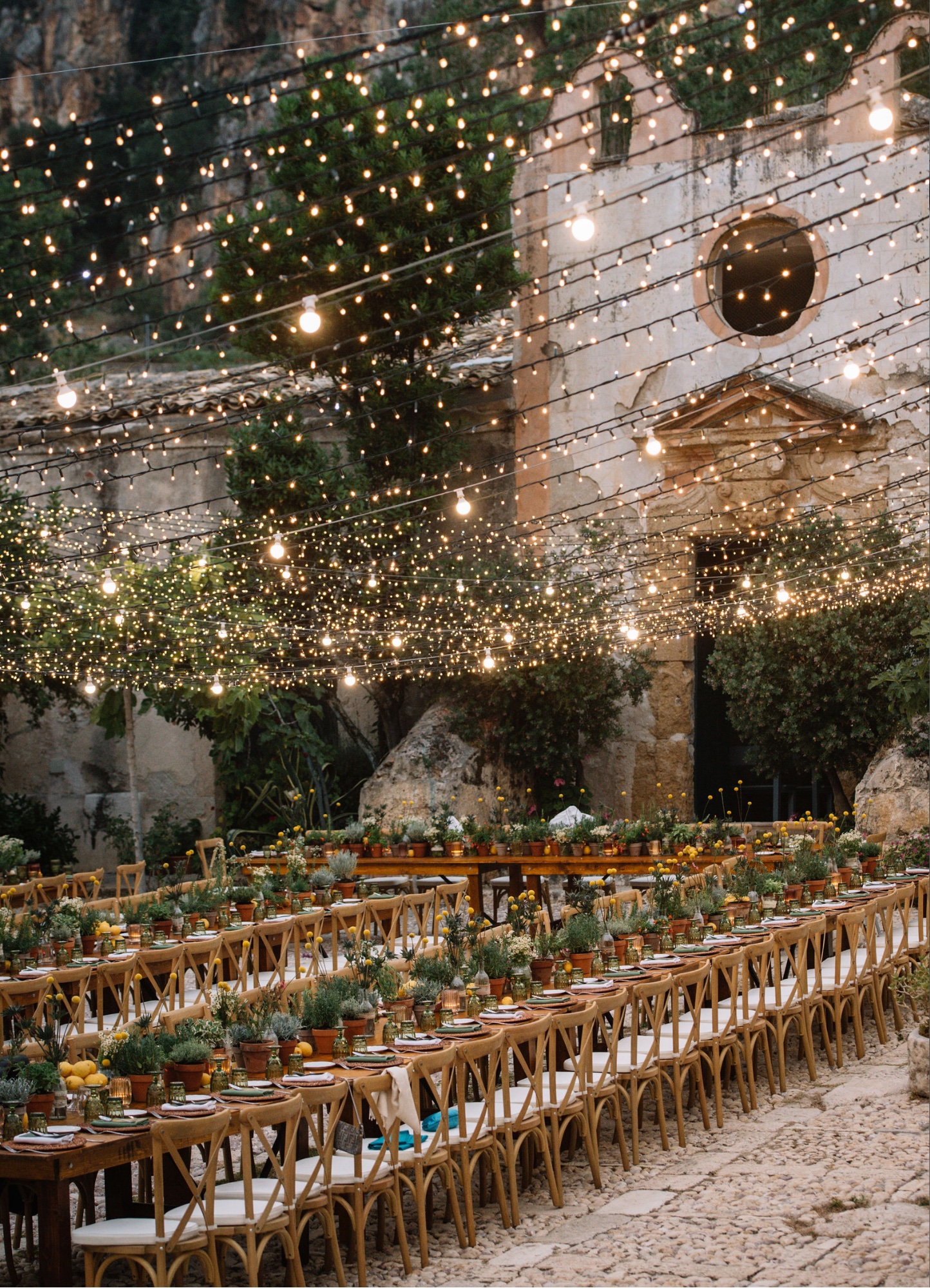
SICILY – BEST WEDDING VENUES
Are you thinking of organising your wedding in Sicily and are looking for a perfect wedding venue? I
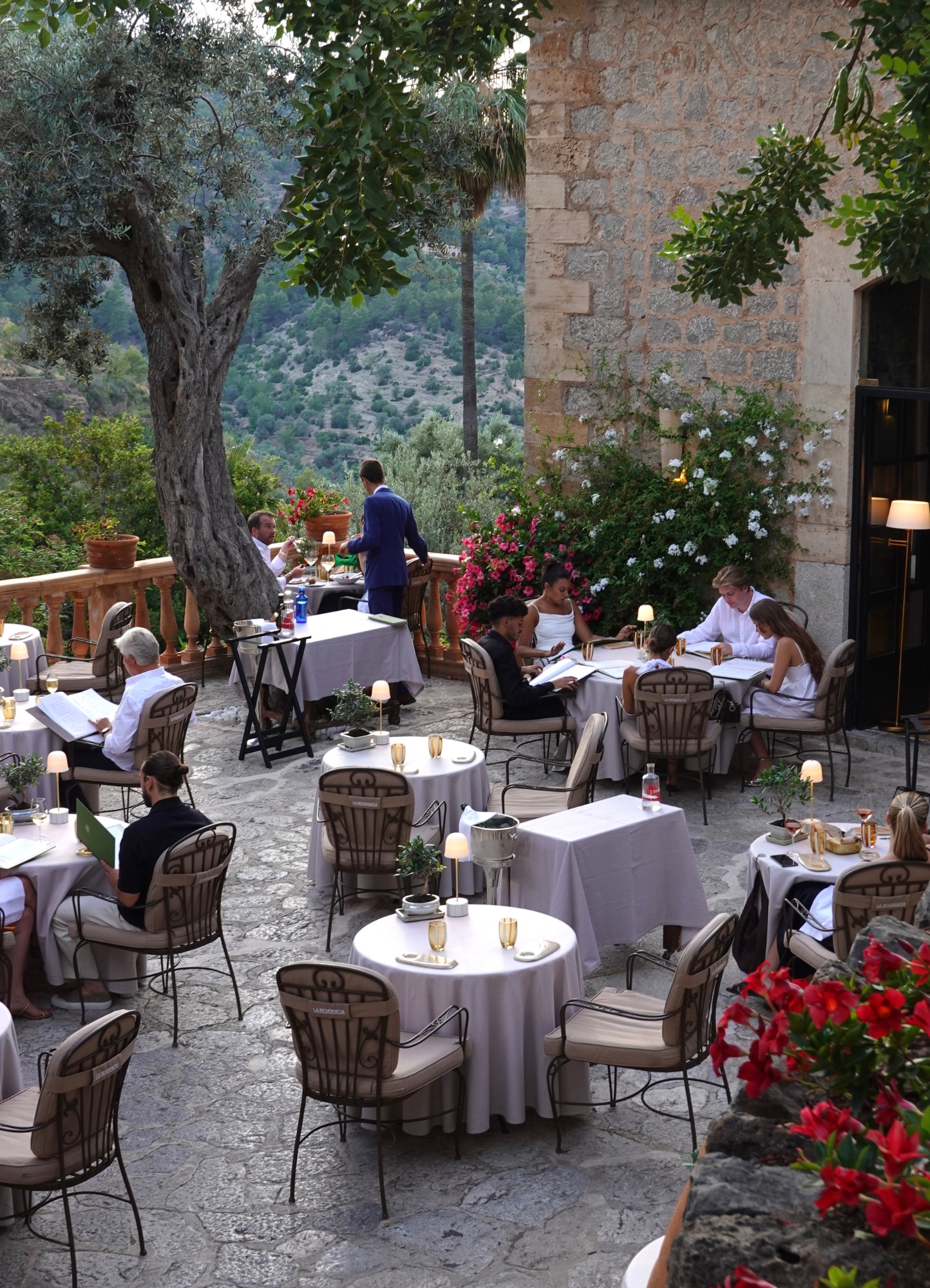
DEIA, MALLORCA – ULTIMATE GUIDE
Are you going to Deia in Mallorca, Spain and you need help planning your itinerary? You’ve come to
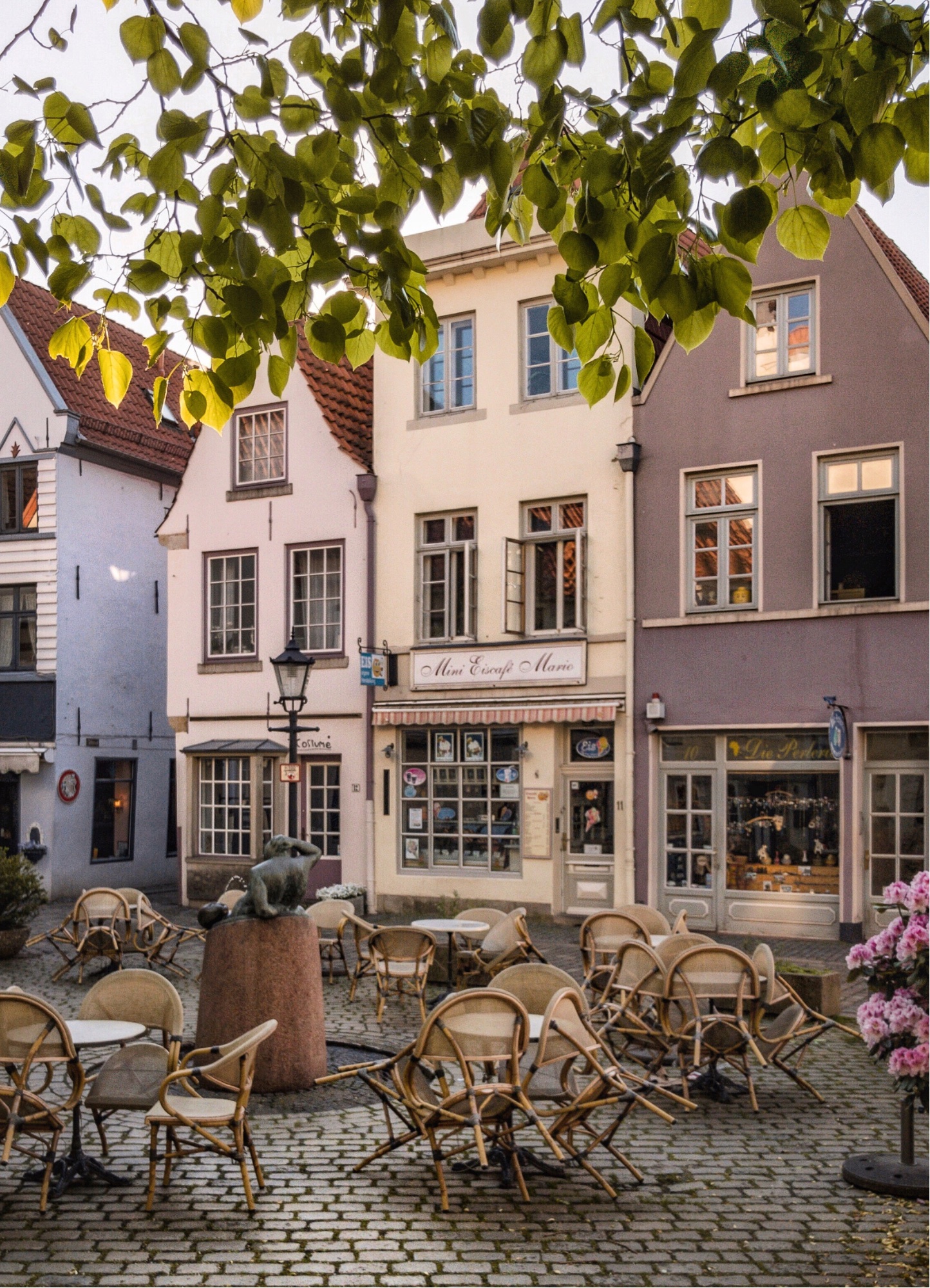
If Germany isn’t on your travel bucket list – this list of Germany’s 10 most beautiful
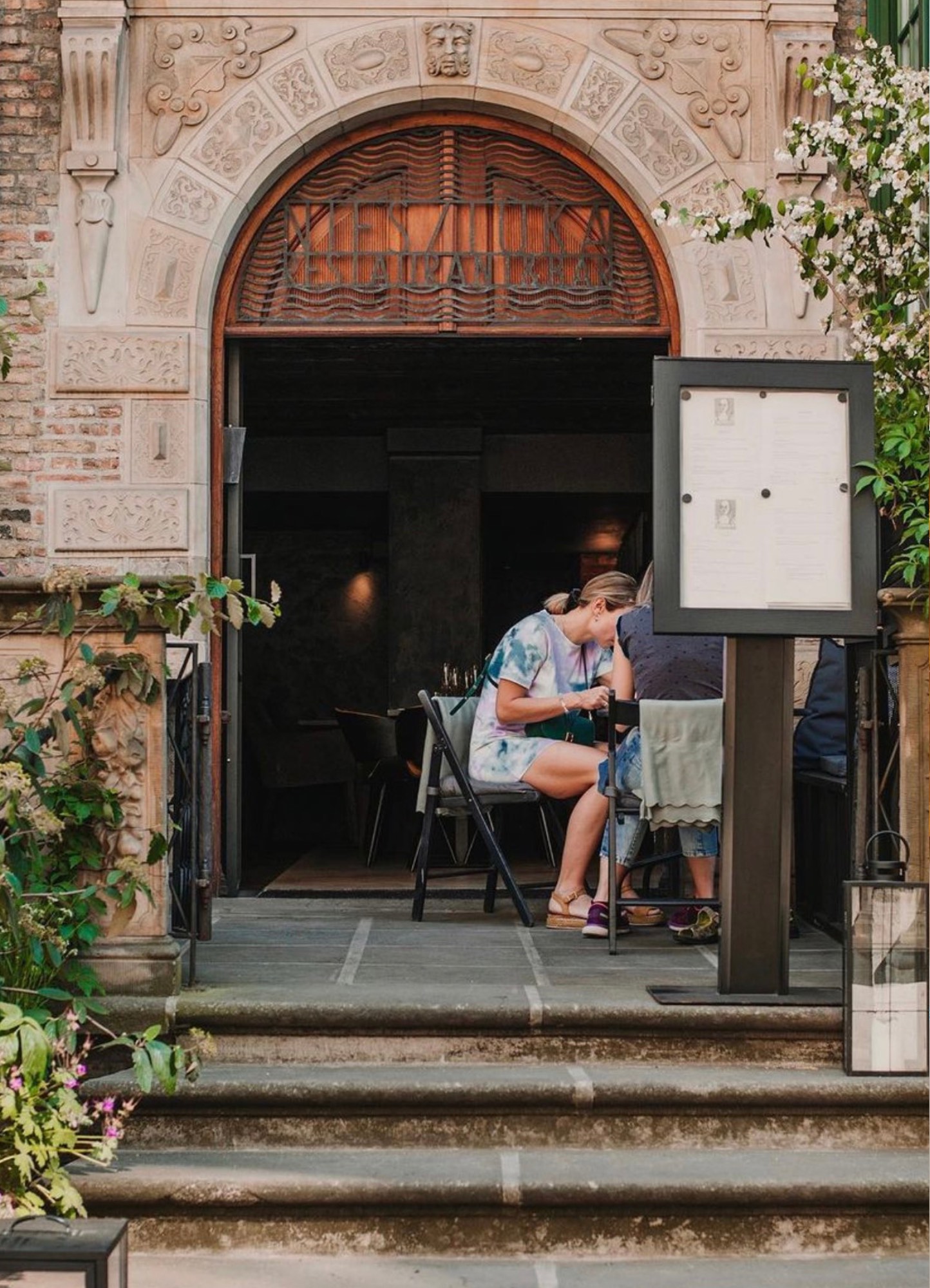
10 BEST RESTAURANTS IN GDANSK – Chosen by a local
Are you going to Gdansk in Poland and you would like to eat at some of its best restaurants? Then th
Things to do in Stuttgart
This low-key German city has a lot more to offer than you might realise.
Written by Michael Turtle
Michael Turtle is the founder of Time Travel Turtle. A journalist for more than 20 years, he's been travelling the world since 2011.
Michael Turtle is the founder of Time Travel Turtle and has been travelling full time for a decade.
Updated: June 8, 2024
The best things to do in Stuttgart
Although it's well known for its car industry, not a lot of foreign tourists visit Stuttgart. But they're missing out, because this German city is jam-packed full of interesting sights, with some beautiful natural scenery around it.
From the car museums, to excellent art galleries, and fun beer gardens, here are my tips for what to do in Stuttgart.
Stuttgart State Gallery
Baden-württemberg house of history, württemberg state museum, stuttgart museum of art, ludwigsburg palace, porsche museum, mercedes-benz museum.
The people of Stuttgart are known for being a bit stingy. It’s a reputation that people have all across the Swabian region here in Germany. And it’s one that they embrace.
Why waste money when you can get the same thing for free, is the logic. And it’s hard to argue with.
I’m shown an example of this firsthand on my first day in Stuttgart when a local guide offers to show me the city’s stairs.
Stairs, I wonder – why would that be something you show a visitor?
But the people here are proud of their stairs.
Stuttgart is surrounded by hills where the suburbs have expanded amongst the nature. To connect all the houses, stairs have been built on the inclines – up and down; diagonally; though alleys, parks and neighbourhoods.
Not only are they practical, but they take you to great viewpoints and interesting local spots.
The stingy Swabians, though, they see another benefit. The stairs of Stuttgart have created an opportunity for exercise and walking or running around them has now become a popular hobby for residents of all ages. No need to pay to go to a gym!
And so I see quite a few people running by as I explore the stairs – and there are plenty to explore.
400 sets of public stairs in the hills, making more than 20 kilometres in total! Luckily one of the things I discover along the way is a beer garden with views across the city!
Discovery seems to be the theme of my time in Stuttgart, which I have decided is possibly Germany’s most underrated city! There is so much here – you just maybe don’t realise that before you arrive.
If you want an easy way to explore Stuttgart when you visit, I would recommend using the Hop-On Hop-Off bus around town.
How often do you hear someone talk about their trip to Stuttgart, suggest you go, tell you all the wonderful things there are to do?
I’m guessing not that often. Until now… because I’m going to do all three.
The beauty of Stuttgart is that it’s perfect for whatever you want.
The inner city is busy enough that there’s a great range of places to eat and drink and hang out…
It’s not far to the natural highlights of the Baden-Württemberg region…
There are plenty of interesting smaller towns just a short train trip away…
And there are lots of things for tourists to do in Stuttgart itself.
Let’s take a look at that last point because that’s what I would like to focus on today.
I used the Stuttcard during my time in Stuttgart. It’s a sightseeing pass that – for a fixed fee – gives you free access to dozens of places in the city and surrounds.
It’s a great way to see as much as possible in a limited time, without spending too much.
Public transport can be included with the Stuttcard so you can use the excellent transport system to get to all of these places.
Let me tell you a bit more about the best things to see in Stuttgart.
The gallery is quite large with a good range of artwork on display. You’ll recognise a lot of famous names in the modern art section – Jackson Pollock, Andy Warhol, Roy Liechtenstein.
Going further through, there are good collections of German painters and other European artists.
There’s a lot to see Stuttgart State Gallery and it would be easy for art lovers to spend a few hours. Keep in mind, though, that if modern art is your thing, there’s another gallery you’re going to want to visit too (which I’ll discuss in a moment).
Stuttgart State Gallery is open Tuesday to Sunday from 10:00 – 17:00. On Thursday it closes at 20:00. It is closed on Mondays.
A standard ticket is €7 and a concession is €5.
This Baden-Württemberg House of History tells the story of the culture of Baden-Württemberg and Stuttgart over recent centuries, up to the present day. It’s well-designed and has a lot of exhibits.
However, I would suggest that it’s more of interest to locals or those with a keen appreciation of the story of the region. All the exhibits are in German, although you can get a free English audioguide.
The upside is that it is right next to the art museum and free with the Stuttcard, so it’s easy to pop in and have a look around before you move on.
The Baden-Württemberg House of History is open Tuesday to Sunday from 10:00 – 17:00. On Thursday it closes at 20:00. It is closed on Mondays.
A standard ticket is €5 and a concession is €2.50.
A much better museum for international tourists interested in the history of the region is this state museum. It covers the period from Neanderthal man all the way up until the middle of the 20th century.
While it doesn’t go into the detail of modern Stuttgart, it sets up the story very well through the Roman era, the Middle Ages, and the kingdom that followed.
The exhibits are in German and English and there’s a lot of interesting detail to learn along the way. This could be a good place to start your exploration of the region – particularly if you’re planning to see some of the old royal buildings.
The Württemberg State Museum is open from 10:00 – 17:00.
Entrance fees are different for each exhibition: Old Castle & House of Music: €6 for adults and concession is €5. Children’s Museum Junges Schloss: €10.50 for adults, €8.50 for concession, and €7 for children 4-17 years old.
Just a few minutes walk from the State Museum is the new art gallery in a modern glass cube, fitting for the works it holds. The Stuttgart Museum of Art architecture is an attraction in itself but, of course, it’s the art that is the real drawcard.
The work on display may not be from the most famous artists – and there’s an emphasis on local creators – but the collection shows a depth of imagination and creativity in a range of styles.
The Stuttgart Museum of Art is open Tuesday to Sunday from 10:00 – 18:00. On Fridays it closes at 21:00. It is closed on Mondays.
A standard ticket is €11 and a concession is €8.
Just outside the city centre, Ludwigsburg Palace is one of the top sights in Stuttgart. The construction of the enormous palace was started in 1704 but it’s been extended and modified over the years.
The only way to see inside is with a guided tour but it is worth it. Not only do you get to see a lot of the rooms, you’ll hear the stories of the owners and the gossip that still surrounds them.
Ludwigsburg Palace is open Monday to Friday from 11:00 – 16:00. Saturday, Sunday, and holidays from 10:00 – 17:00.
A standard ticket is €9 and a concession is €4.50.
The Porsche Museum is as well designed as the cars themselves. It is home to dozens of original cars and there’s plenty of information in English and German about each model and the stories behind them.
There’s an excellent and free audioguide that accompanies the displays and it has all sorts of interesting anecdotes. Stuttgart is famous as an epicentre of motoring and this is a perfect place to learn more about the city’s impact on the global car industry.
The Porsche Museum is open Tuesday to Sunday from 9:00 – 18:00. It is closed on Mondays.
A standard ticket is €12 and a concession is €6.
The Mercedes-Benz Museum is another place to indulge your interest in cars and this is definitely one of the highlights of any visit to Stuttgart. It is, after all, a tribute to the inventor of the car and everything that helped make that happen.
There are plenty of cars on display and exhibits that show the detailed work that went into each of them.
The audio guide is also free here and it’s very good. It has more information than you could possibly listen to on a single visit and goes in-depth on the individual displays.
The Mercedes-Benz Museum is open Tuesday to Sunday from 9:00 – 18:00. It is closed on Mondays.
A standard ticket is €16 and a concession is €8.
And finally, how could I not mention Stuttgart’s famous Pig Museum ?
The museum opened in 2010 in the old administration building of a slaughterhouse. Since then it has grown to the point where it has more than 50,000 items on display.
It’s all divided into 25 themed rooms that each have a topic like international pigs, wedding pigs, mythical pigs… and so on. There’s even an X-rated section where the pigs are… well, porking.
The Pig Museum is a bit of silly fun and certainly something a bit unique.
The Pig Museum is open Tuesday to Friday from 10:00 – 17:00. Saturday, Sunday, and holidays from 11:00 – 17:00. It is closed on Mondays.
A standard ticket is €5.90, a concession is €5, children 7-14 years old are €3, and children 4-6 years old are €1.50.
As I say, there is plenty to discover. From cars, to art, to history, to… pigs.
Why not give Stuttgart a go sometime! I would recommend any of the following to help you explore:
THE BEST ACCOMMODATION IN STUTTGART
You might find it convenient to get accommodation that’s walking distance from the main train station so you can easily explore the region.
If you’re looking for a budget option, the Youth Hostel Stuttgart International is one of Germany’s best.
For a basic but comfortable and cheap hotel, I would suggest Hotel Astoria .
A good modern hotel in Stuttgart that’s a great option is Jaz Stuttgart .
And I think the best luxury hotel in Stuttgart is the Le Meridien , which also has a perfect location.
Time Travel Turtle was supported by the Baden-Württemberg tourism board but the opinions, over-written descriptions and bad jokes are his own.
8 thoughts on “Things to do in Stuttgart”
wow! that place is looking so beautiful and you recommend very good things about that beautiful place of germany. Buildings are looking so attractive and You captured awesome photos of that beautiful place.
Great article, Stuttgart has been on my horizon for a while now, just not actually managed to get there yet… I knew nothing about the 400 flights of stairs though. Sounds great for getting good views of the city! Can’t wait to visit!
OMG !!! Mercedes-Benz Museum is huge and too much detailed
I was impressed with Stuttgart on my first trip there last month. You’re right that it is underrated. I mean, come on, they have a pig museum! 🙂 Loved it.
I absolutely hated Stuttgart as a city. I like the picture you took of the view to the city with the green leafy area, but I don’t remember that at all, or seeing where it was.
The actual city is drab, ugly, under construction, and other than a couple of excellent museums (cars do nothing for me, so I don’t mean those), the tiny square where the palace is, and a nice part of the park/garden (where I was approached by a nasty man masturbating), the city is just ugly.
I am intrigued by Ludwigsburg, but Stuttgart in of itself has absolutely none of the German intrigue and charm that other German cities have.
Thank you for ALL the helpful Information . I plan on visiting in January, I’m a single women traveling and only speak English, hoping that wont be too much of a problem..
Going to Visit Germany next week as I don’t know much about it so I was looking for a blog to know the best things to there thanks for this information. As Know I know What to do there.
Perfect overview. Thanks for the summary and your experiences of stuttgart. I will visit germany next month and I will travel to Stuttgart for at least 3 days after my stay in berlin. I’m really looking forward to.
Leave a comment Cancel reply
Find me on the socials:, subscribe for news and deals:.
top stories:
Plan Your Trip to Stuttgart: Best of Stuttgart Tourism

Stuttgart, Germany
Essential stuttgart.
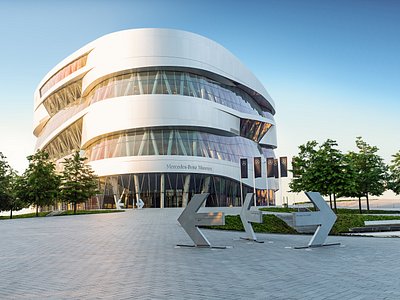
Trending in the forums
Stuttgart Is Great For
Historical tours.

Cultural Tours

Theme parks
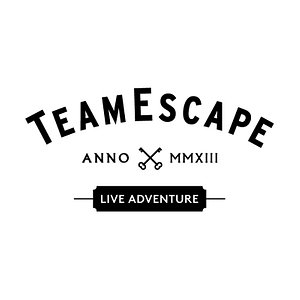
Eat & drink
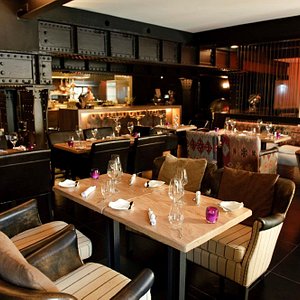
- Le Meridien Stuttgart
- Maritim Hotel Stuttgart
- Steigenberger Graf Zeppelin
- Waldhotel Stuttgart
- CUBE Restaurant
- Jose y Josefina
- Weinstube Am Stadtgraben
- Mercedes-Benz Museum
- Porsche Museum
- Wilhelma Zoologisch-Botanischer Garten
- Public Library Stuttgart
- Höhenpark Killesberg
- Stuttgart Hop-On Hop-Off City Tour in a double-decker bus
- Stuttgart Like a Local: Customized Private Tour
- Explore the Instaworthy Spots of Stuttgart with a Local
- Digital Stuttgart Altstadt city rally around the New Castle
- SUP BASIC COURSE Stuttgart Neckar Stand Up Paddling / Paddling Adventure Jones Tours
- Travel guides
- Luxury Hotels
- Munich guides

The 15 best things to do in Stuttgart, Germany
Stuttgart is the capital of the German state Baden-Württemberg and a wonderful stop in any German itinerary. The city with a population of 632,000 is often overlooked . Cologne, Berlin, or Munich are more popular, but not necessarily more beautiful. In this guide, I’m going to show you the top things to do in Stuttgart.
I lived one year in Baden-Württemberg and have been to Stuttgart many times. It’s maybe a little bit less exciting than other cities in Germany, but the lack of international mass tourism allows you to explore a more authentic side of my beautiful home country .
You probably won’t need to stay more than one day (I’ll recommend some hotels further down below), but there are quite some exciting tourist attractions in Stuttgart you can explore. In fact, you might want to get a Hop-on hop-off bus tour ticket * as it will be the easiest and fastest way to get around.
Anyway, let’s get started, eh?
Tip: Read my Germany packing list to come prepared! *affiliate link
Top things to do in Stuttgart
1. new palace & schlossplatz.
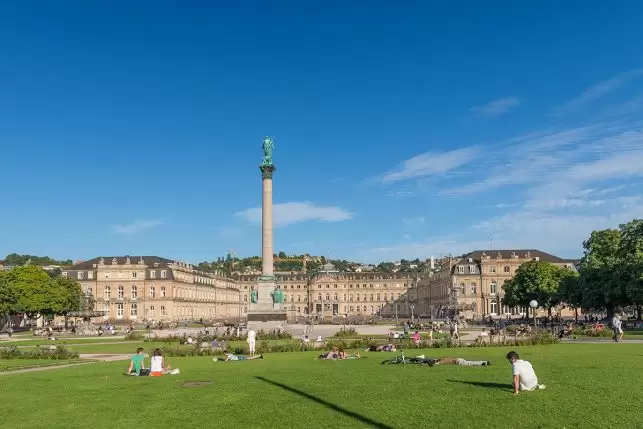
The Neue Schloss Stuttgart is probably the main tourist attraction in town. It was built in the second half of the 18th century and dominates the gigantic Palace Square ( Schlossplatz ) in the heart of the pedestrian area.
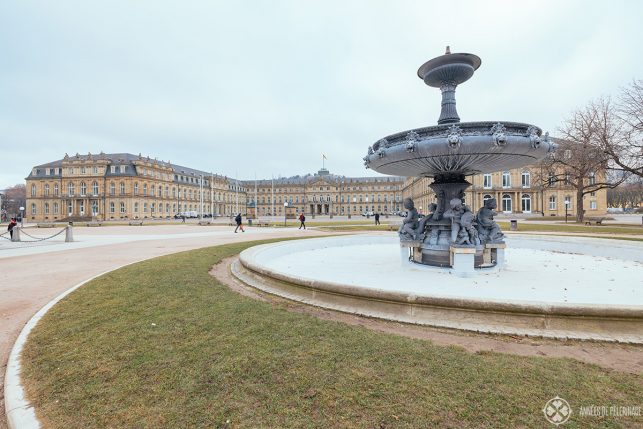
You cannot go inside as a couple of state departments are still located inside. There’s only a small archeological museum in one of the cellars, but that’s not why you should visit. The whole square is incredibly beautiful and you can just breathe in the atmosphere here.
2. Old Castle
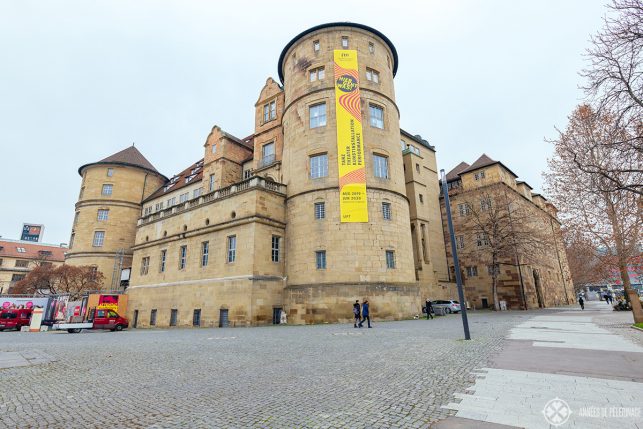
Right next to the New Palace, you’ll find the Old Castle where the rulers of Baden-Württemberg lived before they decided they needed a more lavish place to represent their might. Inside, you’ll find the Landesmuseum Württemberg , which is beyond magnificent.
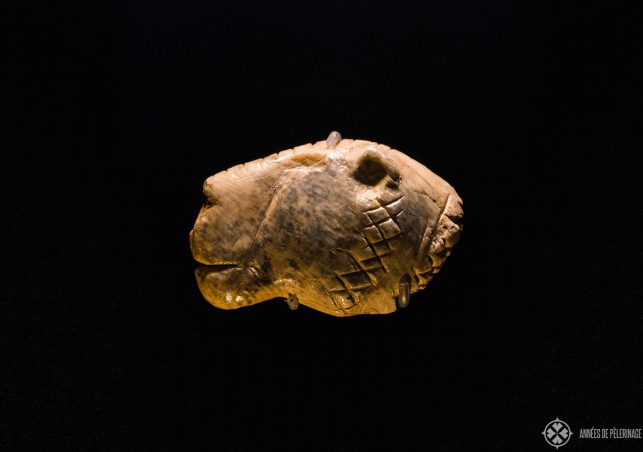
The archeological department houses some of the most important finds from the UNESCO World Heritage in Blaubeurren & Swabian Jura , though there is also an amazing treasure vault and quite interesting exhibits from the celts or the Romans. The famous Lion’s head of Vogelherd is one of the oldest sculptures on this planet and believed to be 35,000+ years old. And yet it looks like it was carved just yesterday.
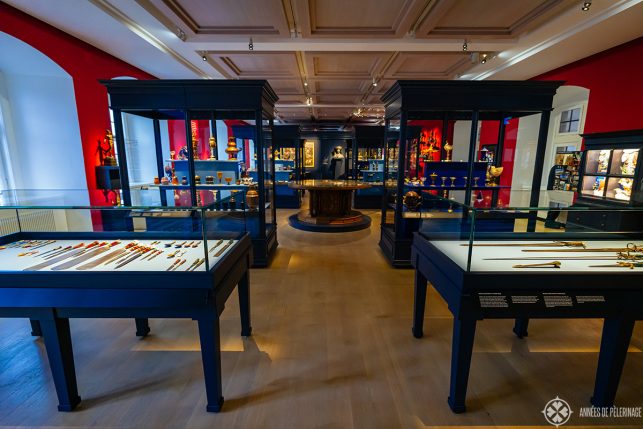
It’s definitely among the top 10 museums in Germany. I love all the modern displays. They often offer hidden drawers with additional information or videos to put a certain artifact into context! So, definitely put it on your list of things to see in Stuttgart
3. Mercedes-Benz Museum
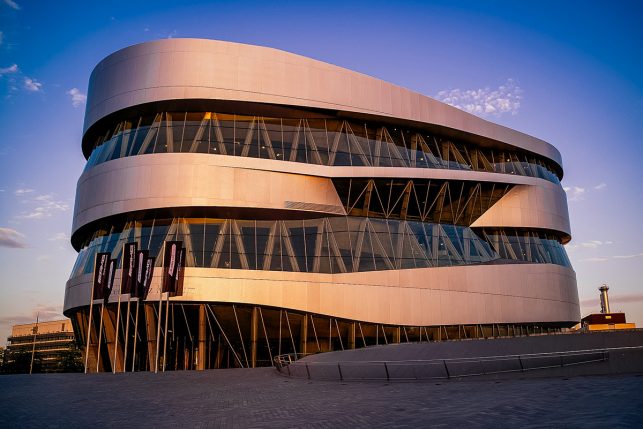
I’m not sure Stuttgart would be the same city it is today, without the invention of the first gasoline-powered car in 1886. Daimler, Mercedes, Maybach – some of the most important household names in the whole car industry converge in Stuttgart. Even 140 years later, the car industry still dominates Stuttgart.
One of the best places to get in contact with this prestigious history is the Mercedes-Benz Museum on the outskirts. Over 1,500 exhibits, nine levels, and 16,500 m² of exhibition space will be a true highlight for all enthusiasts of motorized means of travel.
4. Wilhelma
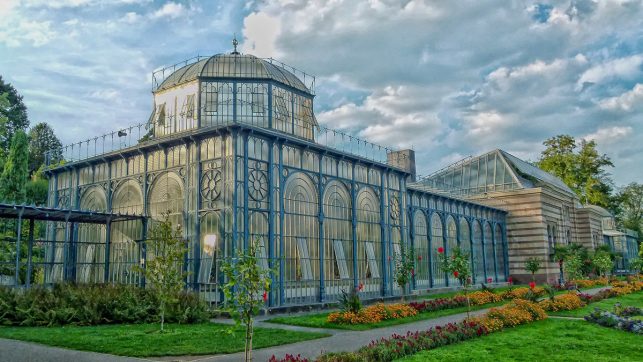
Stuttgart is also the home of the fantastic Wilhelma . It’s a huge zoo and botanical garden built in a historical park. It’s both among the most visited and most popular zoos in Germany and their great-ape projects have been setting new standards for the breeding of these endangered species since 1972.

It’s one of the best things to do in Stuttgart with kids and quite an enjoyable place to go for a walk. They got over 1,200 species and 6,000 different plants from all climate zones of the planet. In short, don’t miss it!
5. Porsche Museum
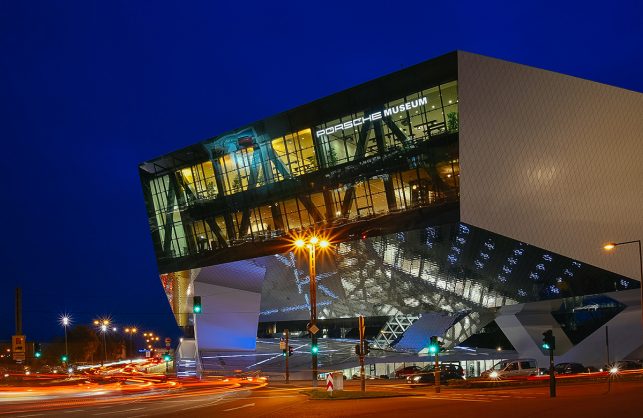
There are two important automobile museums in Stuttgart. If you are a fan of fast cars, then the Porsche-Museum is a must-see. The building is quite spectacular as well, so if you are an avid photographer, then there are actually two reasons to visit!
The museum is a bit smaller than the Mercedes-Benz museum and there are only a bit less than 100 vehicles on display. Still, it’s an exciting place and you’ll be able to get close to some of the most iconic cars in the world.
6. Public Library Stuttgart

Book-lovers harken! The public library in Stuttgart will be your best bet to view a glimpse of paradise. The Stadtbibiliothek Stuttgart is only a short walk away from the central station and is an Instagram dream come true.
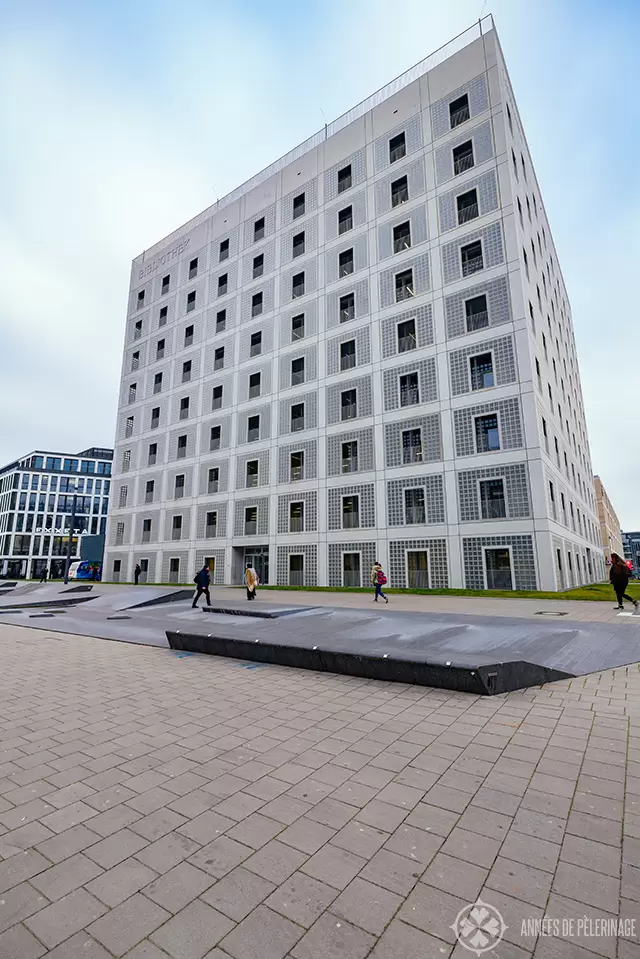
There is also a beautiful rooftop café on the 8th floor which you should definitely check out. Other than that, just explore the mighty cube, pick a book, sit down, and breathe in the fantastic architecture. There is little not to love about this place!
7. Staatsgalerie Stuttgart
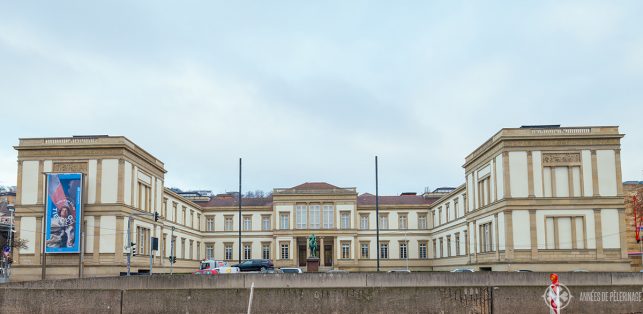
There are quite a lot of art museums in Stuttgart, but the Staatsgalerie Stuttgart is probably the most popular one. Inside, you’ll find an eclectic mix of old masters, Bauhaus and modern paintings. They usually also have a temporary exhibition.
I do want to be honest with you, though: The State Gallery can’t live up to the fabulous art museums in Munich . But it’s still an interesting place – especially on a rainy day!
8. Day trip to Ludwigsburg Residential Palace
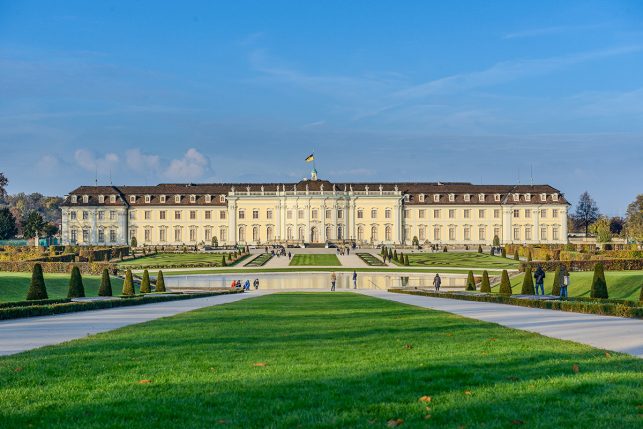
Do you want to visit one of Germany’s fairy tale castles? Then the Ludwigsburg Residential Palace should be on your list. It’s a fantastic half-day trip from Stuttgart and here you can actually visit the actual palace and marvel at the lavish interiors. The park around the castle is equally magnificent.
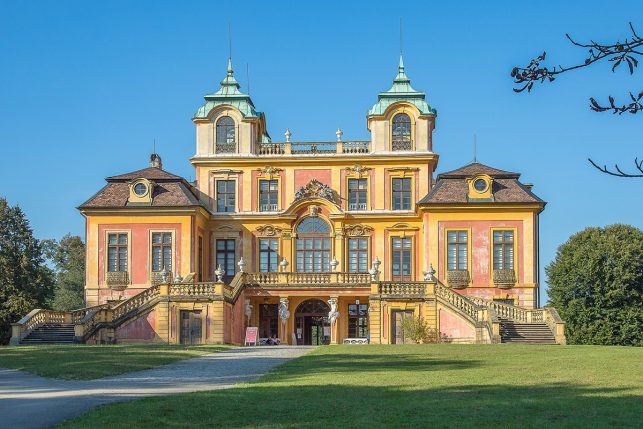
Make sure to also visit the exquisite Favorite Castle ( Schloss Favorite ) while you are in town. The Baroque hunting lodge might be somewhat small, but it’s oh so pretty!
9. Solitude Palace
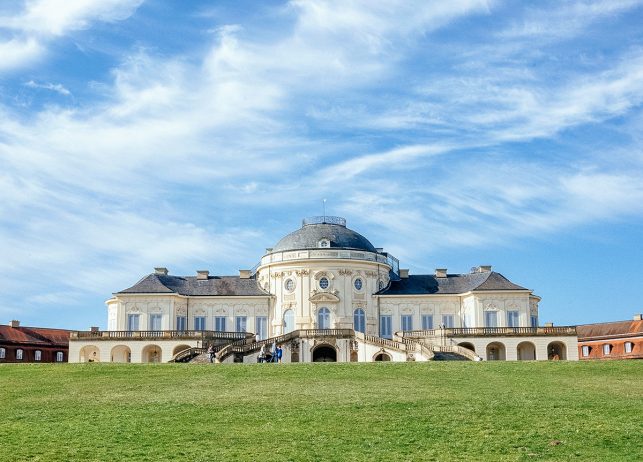
If you don’t want to drive all that far, Solitude Palace is an excellent alternative. It may be smaller, but it’s quite enchanting nevertheless. Also, the views from the palace of Stuttgart is nothing short of breathtaking.
12. Kunstmuseum Stuttgart
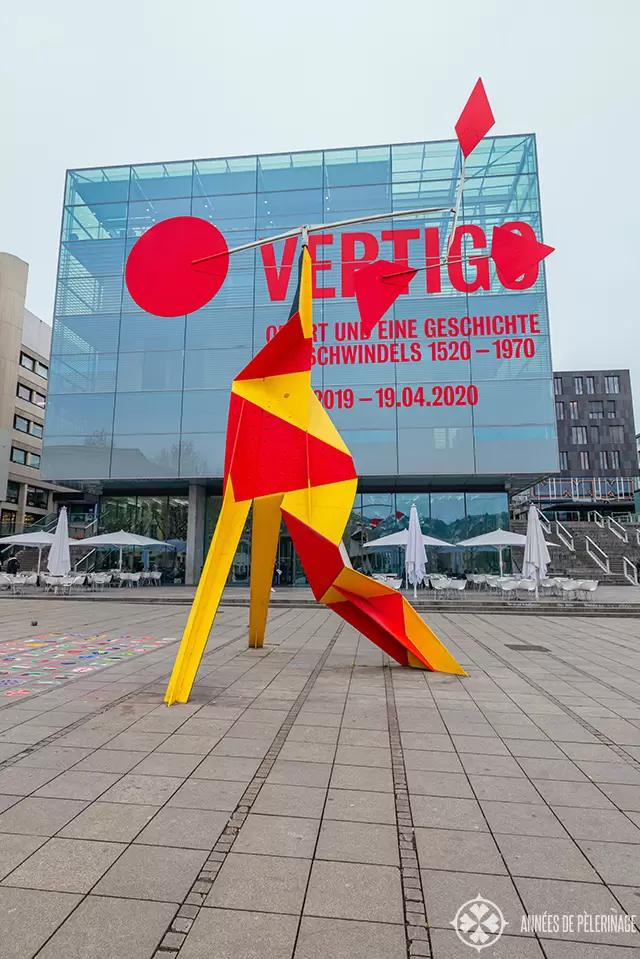
Baden-Württemberg’s capital has a fantastic home for contemporary art. The Kunstmuseum Stuttgart is definitely worth a visit and you’ll find it right across the street from the new palace.
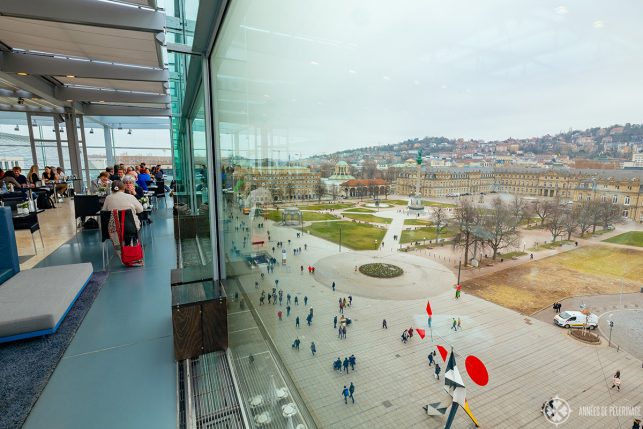
I particularly love the restaurant on the top floor. The food is quite excellent and you’ll have a fantastic view of the inner city from here. It’s certainly not the cheapest place, but I personally think it’s worth it. Don’t expect traditional Swabian food, though!
10. Sepulchral Chapel on Württemberg Hill
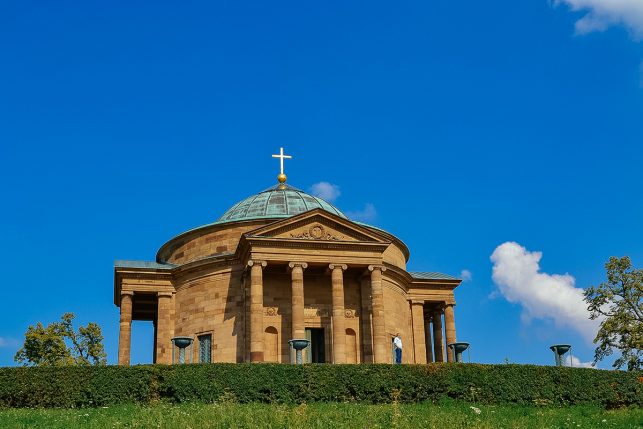
Another beautiful view-point in Stuttgart, especially for watching the sunset, is the Sepulchral Chapel on the Württemberg Hill . The neo-classic memorial is so beautiful and houses the remains of King William I. of Württemberg and his second wife.
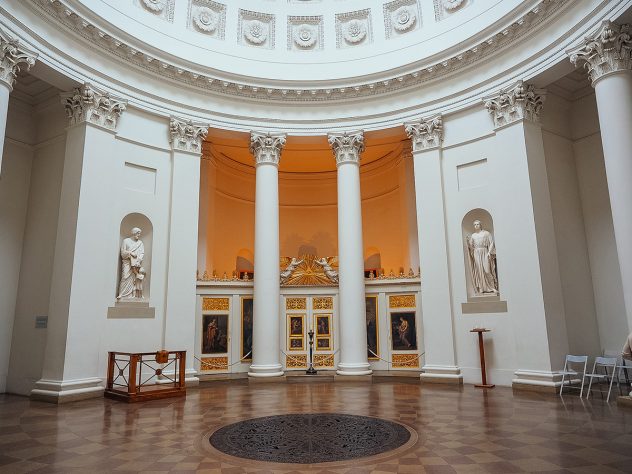
I really love this place – it’s just so serene and beautiful. Downtown Stuttgart can be quite busy and here you will get a good feeling for the beauty of the whole areas surrounding the capital of Baden-Württemberg.
12. Stiftskirche Stuttgart
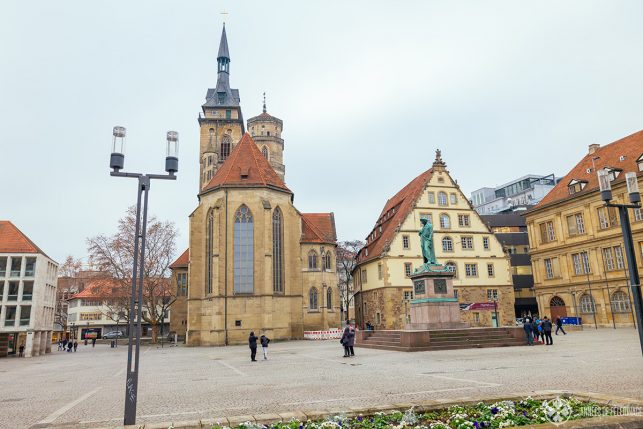
Right in the heart of the city, you will find the Sfitskirche (“collegiate church”) – the most important Evangelical-Lutheran Chuch in Württemberg. It was bombed heavily during World War II, but its foundations can actually be traced back to the 10th century.
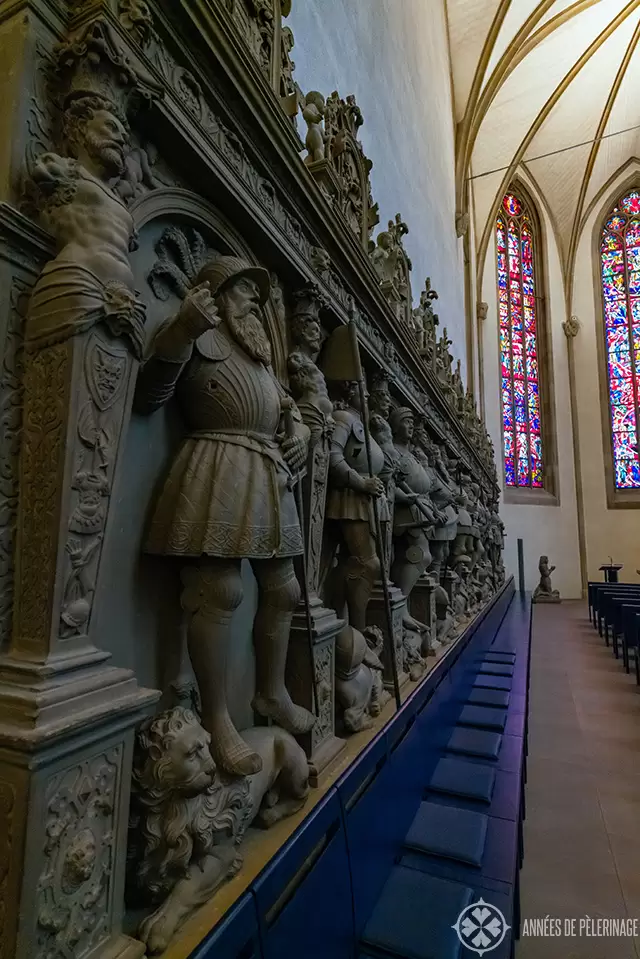
The interiors are rather plain and functional, but it’s two characteristic bell towers are still one of the most famous landmarks in Stuttgart. Some of the reliefs and windows survived WWII (mostly because they were taken out of the church in time). The mixture of old and new is quite interesting.
13. State Museum of Natural History Stuttgart
Stuttgart has quite an amazing natural history museum. If you are traveling with kids, then the Naturkunde Museum has to be on your list of things to do in Stuttgart. It’s quite an interactive place with lots of taxidermies of the most popular species on this planet.
14. Carl-Zeiss Planetarium Stuttgart
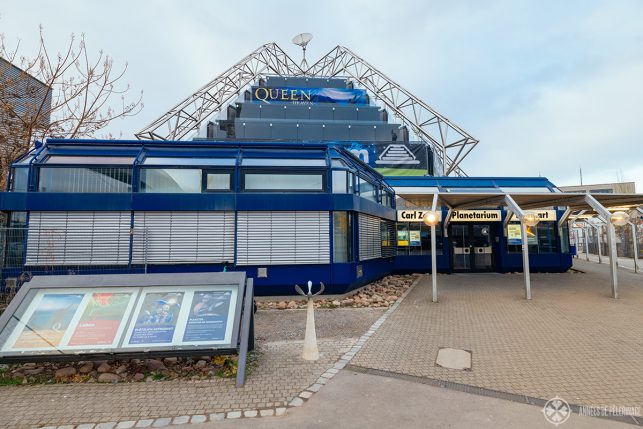
Would you like to visit outer space? Well, right now it seems like you will need a lot of money to ever do so. But there’s a cheap solution – at the huge Planetarium Stuttgart , you can enjoy daily virtual reality shows that take you into space. Tickets are usually just 5 to 10€ (depending on the show) and it’s quite worth it!
15. Fernsehturm Stuttgart (television tower)
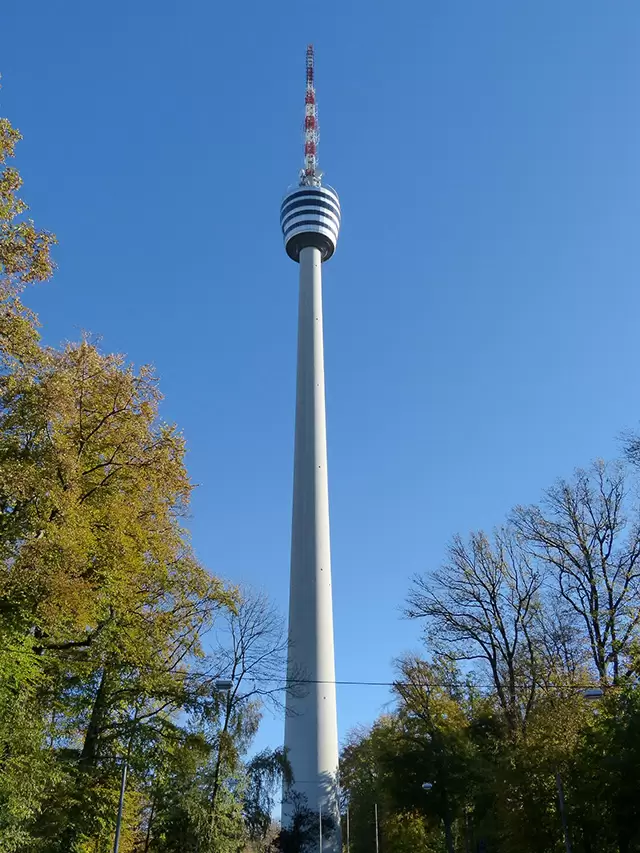
Would you like to get very high and enjoy a view of Stuttgart and the rest of Swabia? Then consider visiting the television tower . At the top of the 217-meter high tower, you can even find a restaurant. The perfect spot to observe the sunset!
Fun fact: The Stuttgart Television tower was the first of its kind in the world when it was finished in 1956 and served as a model for many other towers in the world. Before, most cell towers favored the construction used for the Eiffel Tower.
Other places to visit in Stuttgart
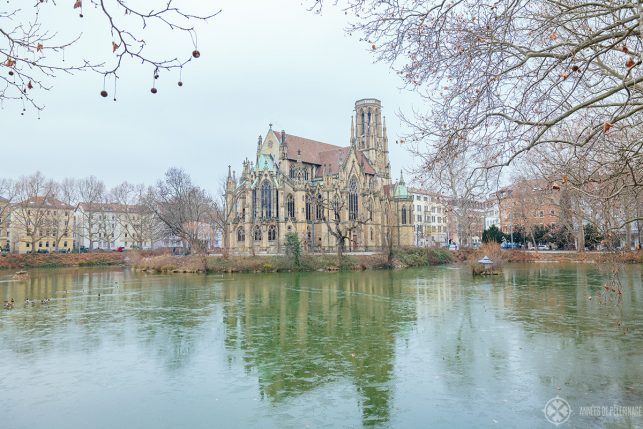
Stuttgart might be the capital of Baden-Württemberg, but there are actually not that many other popular things to do in the city. I personally love the Church at the Feuersee (“fire lake”). It’s one of the best photo spots in Stuttgart.
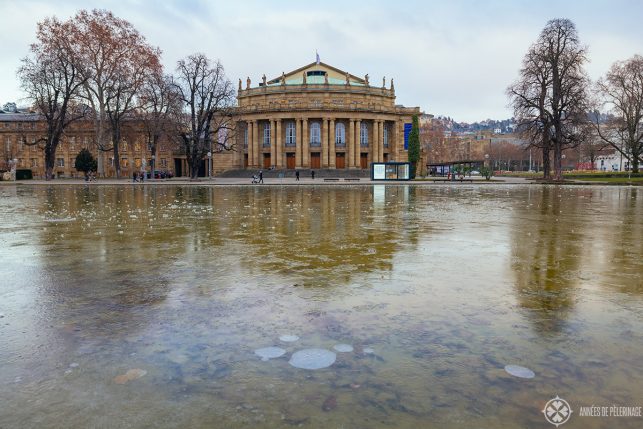
Also, you shouldn’t forget that there is a beautiful Opera and a famous theater just right behind the Palace. The Killesberg Park is a popular place where locals go for a walk.
Architect fans might enjoy visiting the cubist Weissenhof Estate or the Weissenhofmusuem at the House Le Corbusier.
Please keep in mind that some of the tourist attractions in Stuttgart (like the Wilhelma or the Porsche Museum) are not exactly in the city center. Even though the number of highlights is somewhat limited, it will take quite a bit of time to explore them – especially if you plan to explore the surrounding hills.
Where to stay in Stuttgart
Because Stuttgart is such an important center for the car industry, you’ll find plenty of options to stay a night in the city. Remember that Stuttgart has quite an excellent public transport system , so it’s doesn’t really matter a lot if you stay in the middle of the city or not.
For business trips, I personally am a huge fan of Motel One as they are always a combination of stylish, inexpensive and practical. I actually prefer them to many average luxury hotels (which is usually my preference). Anyways, here are my recommendations:
Luxury hotel in Stuttgart
- Le Méridien Stuttgart
- Hotel Steigenberger Graf Zeppelin
Mid-range hotels
- Mövenpick Hotel Stuttgart
- Maritim Hotel Stuttgart
Budget hotels in Stuttgart
- Motel One Stuttgart
- ibis Styles Stuttgart
Best time to visit Stuttgart
I don’t think there is a good or bad time to visit Stuttgart. There will be a Christmas market in December which is quite lovely, but other than that, it really doesn’t matter when you visit . Weekends are usually quite busy, while a lot of museums will be closed on Mondays.
Things will be a bit busier during the European summer holidays, but nothing you would notice if you are familiar with other popular spots (like Neuschwanstein Castle , etc).
How to get from Munich to Stuttgart
There are regular train connections between Munich and Stuttgart . The highspeed trains take 2 hours and arrive at Stuttgart central station. They depart almost every hour. You can check your schedule and buy tickets on the official website of the German Railway Service .
There is also a bus between Stuttgart and Munich , but it only stops at the airport or further outside of the city . It takes 2 hours and 30 minutes (depending on the traffic), but only costs 9,90€. The train ticket will be around 50€. For budget-sensitive travelers, it can be a viable alternative, as there are very frequent & cheap connections between the airport and the city center.
You could also rent a car , which would make sense if you are traveling in a group of 3 or four. It won’t be faster than the train and will probably take around 2 hours and 30 minutes (just like the bus). Still, it’s a fairly easy route as the autobahn A8 connects the two towns. Just follow the signs saying “Stuttgart” which you will find on all major roads around Munich (or use google maps) to find your connection to the autobahn.
If you take the train, it is even possible to do a day trip from Munich to Stuttgart . I did it quite a couple of times!
Is Stuttgart worth visiting?
Stuttgart is a lovely town and certainly has its very unique charm. For car lovers, it’s certainly a must-visit. If you compare it to places like Bamberg or Nuremberg it probably can’t keep up. Stuttgart doesn’t have a medieval old town with half-timbered houses and neither is it a UNESCO World Heritage site like Bayreuth or Regensburg .
But it can be a nice stop in an extended Germany itinerary. The Mercedes-Benz Museum, the Wilhelma Zoo, and the Landesmuseum are true highlights and they could easily occupy you for a day! So, don’t hesitate to visit.
So, this was my guide to the best things to do in Stuttgart, Germany. I hope I was able to inspire you. Make sure to ask any questions in the comments below.
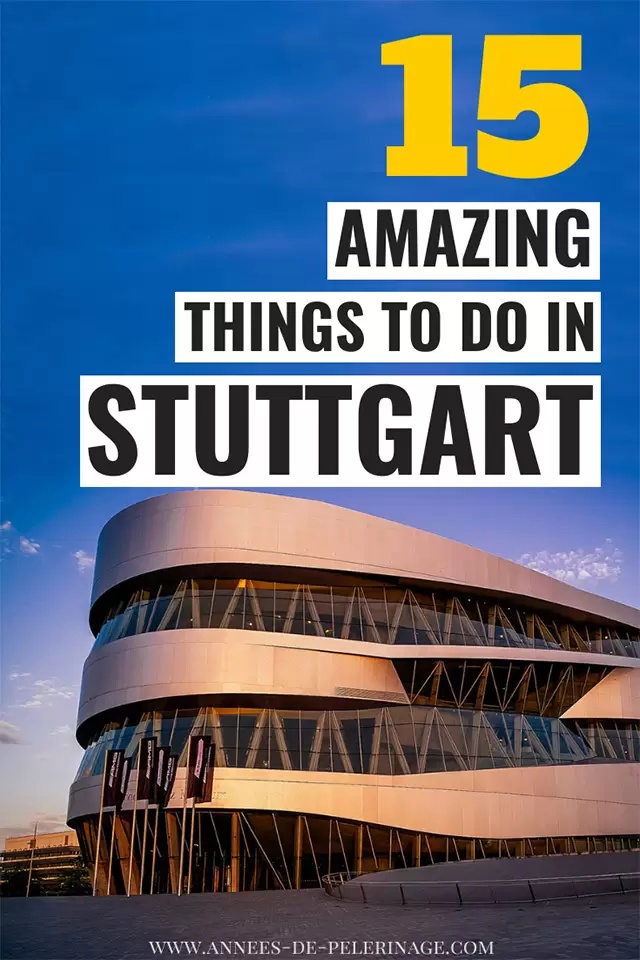
RELATED ARTICLES MORE FROM AUTHOR
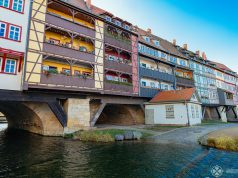
The 10 best things to do in Erfurt, Germany
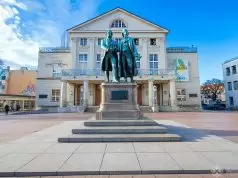
The 15 best things to do in Weimar, Germany
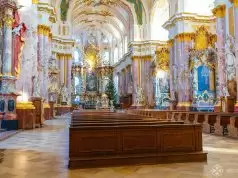
Fürstenfeld Abbey – a beautiful half-day trip from Munich
Amazing guide. Thanks.
LEAVE A REPLY Cancel reply
That's okay for me
Save my name, email, and website in this browser for the next time I comment.

The latest post on my travel blog

The best things to do in Madeira, Portugal
- Terms & Conditions
- Site notice
- Data Privacy Statement
- Venue finder
- Picture database

Stuttgart Tourist Guide
Your stuttgart app.
The Stuttgart Guide is the app for Stuttgart – whether for a day trip, a longer stay in the capital city of Baden-Württemberg, or if you're new in town! From exciting events to the latest restaurants and bars to impressive sights – the Stuttgart Guide presents you with the most beautiful places in and around Stuttgart.
Download now!
Play Store / Android
App Store / iOS
© What to expect:
In the Stuttgart Guide, you'll find all Stuttgart highlights along with a map in one app, so you always have your digital travel guide with you – including curated tours, city walks, and important information about infrastructure, opening hours, and Wi-Fi hotspots.
Orientation in Stuttgart
With the Stuttgart Guide, you always have a clear view. Thanks to the integrated digital map, you know exactly which sights, museums, and restaurants are near you.
Convenient planning of your stay
A city trip needs good planning. In the Stuttgart Guide, you can save your favorite spots in a watchlist and easily find them again at any time.
Exclusive tips
Need inspiration? The Stuttgart Guide provides you with plenty of current tips and insights that match your personal interests.
Curated trips and tours
Discover Stuttgart like a local. The Stuttgart Guide offers curated walks in different neighborhoods, to special places, or to spectacular viewpoints!
All current events at a glance
Know what's happening in Stuttgart. With the Stuttgart Guide, you'll find out which events are taking place during your stay and can view all events filtered by date in the event overview.
Push notification reminders
Always up to date. The Stuttgart Guide optionally sends you current information or reminders for your events directly to your smartphone via push notification.

- 2.1.1 Airlines and destinations
- 2.1.2 Ground transportation
- 2.1.3 Terminals and orientation
- 2.1.4 Hotels
- 2.2 By train
- 3.1.1 U-Bahn (Stadtbahn)
- 3.1.2 S-Bahn (Schnellbahn)
- 3.1.3 Zahnradbahn and Seilbahn
- 3.1.4 Tickets and fares
- 3.3 By e-hailing
- 3.4 By taxi
- 4.1 City Centre
- 4.2 Close to centre
- 4.3 Farther out
- 4.4 Museums
- 4.5 Towers and scenic outlooks
- 4.6 Parks and gardens
- 4.7 Rail transport systems
- 5.1 Culture
- 5.3 Seasonal festivals
- 5.4 Around Stuttgart
- 6.1 Shopping around the Königstraße
- 6.2 Big department stores and shopping malls
- 6.3 Clothing
- 6.4 Music stores
- 6.5 Food markets
- 7.2 Mid-range
- 7.3 Splurge
- 7.4 Breakfast
- 8.1 Bars and pubs
- 8.2.1 Gay & lesbian
- 9.2 Mid-range
- 9.3 Splurge
- 11 Stay safe
- 12.1 Consulates
- 13.1.1 Fast inner-German connections
- 13.1.2 Fast European connections
Stuttgart is the capital of the Bundesland of Baden-Württemberg in Germany . With a population of approximately 632,000 in the immediate city (2017) and more than 5.2 million people in the metropolitan area (2013), Stuttgart is the 6th largest city in Germany.
Stuttgart is known as a centre of mechanical and automobile engineering with the headquarters of the world-famous Bosch, Mercedes and Porsche within its metropolitan area. It does not, however, resemble most other industry hubs, as it is a rather sparse city spread over many hills and valleys, with forests, parks, mineral springs and even vineyards within the city. Stuttgart forms the centre of Region Stuttgart, a densely populated and idustrialised area that is closely interwoven and shares the same public transport system consisting of 179 cities and municipalities with a rich history to discover.
Stuttgart consists of 23 districts ( Stadtbezirke ), which are further divided into 152 localities ( Stadtteile ). The five inner districts are named Mitte , Nord , Ost , Süd and West ("centre", "North", "East", "South" and "West", respectively). The outer districts are mostly former towns with their own names - of note are Zuffenhausen (Porsche headquarters and museum), Untertürkheim (headquarters of Daimler-Benz and Mercedes-Welt, as well as sports arenas sponsored by Porsche and Mercedes), and Bad Cannstatt (nice old centre, mineral water and lots of vineyards).
Despite being smaller and most densely populated among major German cities (when looking at the statistics), Stuttgart appears anything but that. This is because the population is not concentrated in the relatively small and hardly "metropolitan" centre, but is evenly spread over the hills contained within the city area, with multiple population centres stemming from the small towns that were incorporated into the present-day Stuttgart. Therefore, you will find many points of interest quite far away from each other, and the use of Stuttgart's very convenient public transport system quite necessary. Stuttgart is a big city with a small-town atmosphere.
If you do speak German well: beware that some people still speak the local Schwäbisch dialect natively, which may somewhat affect their standard German. They love to practise other languages (especially English) and will try to help you.

Airlines and destinations
The airport is a base for Lufthansa's low-fare subsidiary Eurowings . Moreover, most major European carriers have connections to Stuttgart from their main hubs, so there is a wide choice of direct flights to other German and European cities, and even if there is no direct flight from your origin, you will easily find a connection through any of the hubs. Stuttgart has a direct connection to Atlanta .
Moreover, Stuttgart's main railway station ( Hauptbahnhof ) is just an hour away by high-speed train (ICE) from Frankfurt Airport , which is one of Europe's major aviation hubs. Many airlines offer flights to Frankfurt with a connecting train to Stuttgart instead of direct flights to Stuttgart, and as this is very quick and convenient (landing you in the very city centre), you should consider this option as well.
There is a significant charter/holiday traffic between Stuttgart and the popular holiday destinations in southern Europe and North Africa, mostly served by dedicated carriers such as TUIfly . There is growing low-fare traffic to Stuttgart as well, with easyJet and Vueling all serving the airport from their bases across Europe.
Ground transportation
The best way to get from Stuttgart airport to the city centre is by using public transport which is clean, cheap and safe.
- The S-Bahn line S2 or S3 will bring you in its red or gray vehicles to Stuttgart's centre (€3.70) within 27 minutes (see Timetable [dead link] from station 'Flughafen' to station 'Hauptbahnhof'). Tickets can be purchased at vending machines at the level below the airport and above the platform (follow the symbol with a white S on a green background). Tickets should be validated at orange boxes on the platform before boarding the train. Alternatively, the VVS app can be used. The airport is not in Stuttgart, but in zone 2. You can use all public transport within the zones with this ticket.
- The Stadtbahn line U6 will bring you to the airport from Stuttgart Hauptbahnhof in 32 min. Its yellow and black vehicles are especially designed to climb up and down the steep hills of Stuttgart. All axles of the vehicles are driven. It manages a steep slope of up to 8.5% which is the steepest regular-lane friction track in Europe that is used in local public transport. The airport U-Bahn stop is located outside of the airport building right next to the Mövenpick hotel (follow the symbol with a white U on a blue background).
- Several bus lines head for other destinations (e.g. Tübingen (828) and Reutlingen (X3)). For early flights during the week, the night bus N8 will bring you from Schlossplatz to the airport. The scheduled arrival at the airport is at 04:24. All buses will stop at the Stuttgart bus terminal (SAB) outside of the airport building just across the street.
- Taxis will be waiting at the airport. The airport's taxi service number is 0711/948 4409; Stuttgart's Taxi-Auto-Zentrale is 0711/55 10 000. Expect to pay around €30 to get to the city centre.
- In the basement there are several car rental companies and outside at car park P4 there are parking lots reserved and used by ShareNow (Car2Go). If you only want to visit the city centre it is probably not the best option to rent a car.
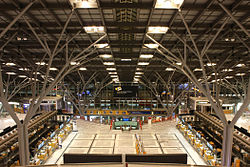
Terminals and orientation
Stuttgart Airport has four terminals (numbered 1 to 4), but Terminals 1 to 3 share a common airside — the number of the terminal indicates in which concourse the check-in and luggage drop-off is in the main hall (1 is the westernmost concourse area, the 3 is the eastern one and the 2 is between the main concourse). Terminal 4 is separate, although connected by a walkway on the landside ( not on the airside, so you have to make sure you go through security there if you are flying from Terminal 4).
- Terminal 1 serves mainly Lufthansa and most other Star Alliance carriers (Austrian, SAS, Swiss, Turkish)
- Terminal 2 serves Eurowings
- Terminal 3 serves intercontinental flights (Delta, United), Aegean Airlines and other non Star-Alliance airlines, including Condor and Tuifly
- Terminal 4 is used mainly for charter and holiday flights
Departures are one level above arrivals and two levels above the S-Bahn station. See the airport's terminal guide [dead link] for detailed floor plans.
There is a Moevenpick and a Wyndham Hotel at the airport. For nearby hotels, some with shuttle service (for a fee) see Leinfelden-Echterdingen and Filderstadt , Böblingen and Sindelfingen .
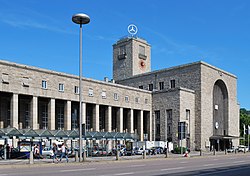
The long-distance bus market has been exploding in Germany since 2013. There are dozens of daily services from most major cities, which are often significantly cheaper than trains. Most buses offer amenities like Wi-Fi and power outlets and some can even transport bicycles. The best resource for checking connections is this German website . As of 2018 there is no public central bus station and all of those listed below are well outside the city centre. While they are all connected to public transit, plan some extra time getting to/from your station and remember to figure in the price of the S-Bahn when comparing bus and train tickets. For intercity bus stops in Germany, the Stuttgart area is actually better than the often quite disappointing average in terms of facilities and modernity.
- 48.76197 9.2669 3 ZOB Obertürkheim , Hafenbahnstraße 15 ( S1 ). Flixbus ( updated Feb 2024 )
- 48.82953 9.16842 4 ZOB Zuffenhausen , Burgunderstraße ( S4, S5, S6/S60 ).
- 48.72684 9.11157 5 Fernbushaltestelle Stuttgart - Vaihingen , Vollmoellerstraße 5 ( S1, S2, S3, U12 ).
- 48.69425 9.19293 6 Fernbushaltestelle Stuttgart-Flughafen (SAB) , Busterminal Messe Ost, Flughafenentlastungsstraße ( S2, S3 ). Flixbus . Roadjet . ( updated Sep 2021 )
- 48.862781 9.179735 7 Flixbus Stop Kornwestheim , Bahnhofstraße 80, 70806 Kornwestheim ( outside of Stuttgart ). ( updated Nov 2023 )
Stuttgart is among Germany's cities with most traffic jams, so try to avoid the rush-hour as car traffic can easily break down. Also parking is definitely a problem in most inner city areas. Expect a lack of parking facilities and high parking fees. Stuttgart is connected by the two major autobahns, the west/east-highway A8 to the south and the north/south-highway A81 to the west as well as smaller autobahn-like highways B10, B14, B27. However, Stuttgart has no motorway connection in the north east forcing commuters in this area to pass the city centre. Generally, follow the sign "Stuttgart Zentrum" to get to the centre of Stuttgart. Use park and ride facilities if possible. The most accessible are the park and ride facilities in Degerloch Albstraße and Österfeld. Stuttgart is low emission zone. Be sure that your car has the green sticker, but you are allowed to access those park and ride facilities with cars that do not meet the standards.

Stuttgart has a very compact city centre with most destinations within walking distance. Nearly all visitors arrive at the main train station (Hauptbahnhof). From there the remarkable 1.2-km-long pedestrian shopping street called “Königstraße” leads through the heart of the city, passing the Schlossplatz with the amazing New Palace, to the Rotebühlplatz (Stadtmitte). Other main sights (e.g. museums, opera) are just around the corner.
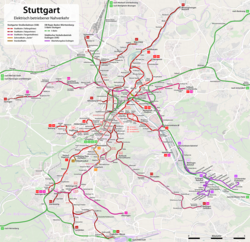
By public transport
Stuttgart's public transportation system comprises two light rail system - the Stadtbahn (or U-Bahn) and Schnellbahn (S-Bahn), as well as a city bus system. It is managed by VVS and is fully integrated in that there is one fare and ticketing system for all forms of transit, so that a single ticket can be used on any mixture of buses and trains that may be required to complete the journey. The VVS's network called is divided in zones. The city of Stuttgart is only Zone 1. Most lines will lead via Hauptbahnhof, ending in a layout that is pretty centralised: If you want to go somewhere, chances are, you have to ride via Hauptbahnhof. The following Stadtbahn or S-Bahn stations are in the heart of the city: Hauptbahnhof, Schlossplatz, Charlottenplatz, Stadtmitte (Rotebühlplatz), Feuersee, Rathaus, Staatsgalerie and Berliner Platz (Liederhalle). For a complete description see the official map of VVS-network [dead link] .
From Sunday to Wednesday public transportation stops around 01:00. On the weekend the S-Bahn is running hourly the whole night on all lines. So the inner city route from Hauptbahnhof to Schwabstraße is connected frequently. Additionally there are several night buses running, all starting from the Schlossplatz. On Thursdays there are night buses at 01:20, 02:30, 03:40. Be careful if you have a very early airplane since there are no S-Bahn connections weekdays to the airport in the early morning between 01:00 and 05:00. The only option is a night bus from Schlossplatz.

U-Bahn (Stadtbahn)
Stuttgart's Stadtbahn is a combination of suburban light rail, tramway/streetcar system and underground metro (subway). In the very centre of the city, the tracks run underground, and the overground sections run along city streets, partially grade-separated and partially integrated into city streets like tramways. That way, the yellow carriages of the Stadtbahn can travel all the way from the suburban hillsides to the central hub by the Hauptbahnhof , allowing convenient commuting with minimal changeovers.
Most of the U-Bahn lines go through the underground section in the city centre, stopping at either the Hauptbahnhof , Charlottenplatz or both - with the exception of line U3 , U 8 and U13 which go to their destinations without crossing the city centre. See map for details. The numbers U11 and U19 are reserved for special lines only operating during major events in the Neckarpark . The U10 moniker is reserved for the Zahnradbahn (see below)., Since rebuilding the station Staatsgallerie is under way there are some temporary lines in effect. Check the map at your station for information about these temporary lines.
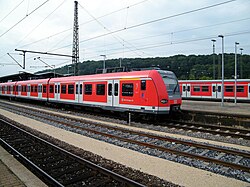
S-Bahn (Schnellbahn)
You will most probably find the S-Bahn most convenient to use when covering larger distances or getting to locations not served by the U-Bahn, like the airport or Porsche Museum in Zuffenhausen. The S-Bahn lines are numbered from S1 to S6, plus the extra line S60.
All of the lines travel through the so-called Stammstrecke (common track) in the city centre, between the Schwabstraße station and the Hauptbahnhof . From there, the lines extend in all directions towards the extremities of Stuttgart. Of particular interest are the S2 and S3 , which extend to the Airport. Both go through the city centre to Bad Cannstatt and split in Waiblingen towards their separate termini. While the airport station ( Flughafen ) is the terminus for S3 , the S2 continues to Filderstadt beyond the airport.
Zahnradbahn and Seilbahn

There are two fascinating transportations in Stuttgart, which are worth riding just because of the vehicle. The rack-railway ( Zahnradbahn , commonly called Die Zacke ) is the only urban rack-railway in Germany and comes with an amazing view over Stuttgart. It has 8 stations and runs between its termini:
- 48.76442 9.1685 1 Stuttgart-Marienplatz . There is an underground stop of U1 and U9 at the Marienplatz next to the Zahnradbahn's overground terminus.
- 48.74893 9.16908 2 Stuttgart-Degerloch . An U-Bahn stop is parallel to the Degerloch Zahnradbahn terminus, served by U5 , U6 , U8 and U12
The historic cable-car ( Standseilbahn ) line connects Stuttgart-Heslach with the Waldfriedhof cemetery on the hill. It only has two stations - one downhill and one uphill:
- 48.75596 9.14215 3 Standseilbahn Talstation ( Lower station ) ( Heslach ). ( updated Aug 2021 )
- 48.75165 9.14547 4 Standseilbahn Bergstation ( Upper station ).
Both rack-railway and cable-car do not require a special ticket, instead all normal tickets valid in Zone 10 (including day tickets) are valid.
Tickets and fares
Several ticket option are available (as of Dec 2018):
- 3-Day-Ticket - if you are staying for more than a day, for added mobility buy a special "3-Tage-Ticket" for unlimited rides throughout Stuttgart. These are available in hotels, at the airport and the tourist information at the end of Königstraße near Hauptbahnhof - but make sure you take proof that you're a tourist (e.g. hotel booking confirmation). There are two types of 3-day tickets available. One covers the main Stuttgart city including Fellbach and Korntal (tarif zones 1 and 2, €14), and the other is valid for the entire VVS network, including Ludwigsburg (€19.50).
- Single Day Ticket - called EinzelTagesTicket, are also good value for visitors (1–2 zones: €5.20, 3–4 zones: €8.60, entire network: €13.20) They allow as many journeys until the end of day.
- Group Day Tickets - GruppenTagesTickets for up to 5 persons (1–2 zones: €12.30, 3–4 zones: €17.10. entire network: €19.90).
- Single Ticket - A Single Ride Ticket entitles the rider to one ride in the same direction, but changing lines as well as ride interruptions are permitted. The tickets remain in effect for two hours from purchase (1 zone: €2.50, 2 zones: €2.90, 3 zones: 4.20....)
- StuttCard [dead link] - provides free access to museums and a number discounts on purchase, can be combined with a 1-, 2- or 3-day travel pass.
In the Stadtbahn and the buses stamping machines are available inside the cars, while on the S-Bahn they are at the entrances of the stations and there is no possibility to stamp once you are in the train. (If you do forget to stamp your ticket in the S-Bahn, either get out at the next station, stamp and wait for the following train, or write the current time and location on the stamping field with a non-erasable pencil – this will also be accepted by the inspectors most of the time.)
Fare-dodging is severely frowned upon and plain-clothes inspectors are on constant patrol. Fines are steep, starting at €60 per person for the first offense.

If you intend to drive by car inside Stuttgart, the only possibility to park are parking blocks at about €1.50 per hour. Some parking blocks are closed during late night, providing no way of getting your car out. The street layout and numerous tunnels in Stuttgart can be confusing for tourists. Driving by car is not recommended.
By e-hailing
Uber and Free Now cover the city.
Taxis are expensive. For €10 you will get about 4 minutes of a taxi drive. With two or more people, getting a taxi together at night (when public transportation has stopped) can make sense. Call a taxi in Stuttgart: Phone Nr. 0711/55 10 000 - Taxi-Auto-Zentrale Stuttgart . There is a special offer for women travelling at night for more safety. If you are a woman or a group of only women travelling after 20:00, you can request a Frauen-Nacht-Taxi, which will have a female driver and the costs are reduced by €5. The Uber app can also be used in Stuttgart.
Stuttgart, which once had a reputation as the conservative capital of the south-west, has turned into a bustling metropolis with world-class culture, great shopping and night-life. The capital’s architecture is an appealing mixture of historical and modern buildings with green parks and even vineyards throughout the city. The unique cauldron-shaped landscape offers plenty of scenic lookouts and formed a dense city centre where nowadays fortunately most of Stuttgart's main attractions are. In the heart of the city centre the Palace Square is a must for visitors and an ideal starting point for a tour.
City Centre
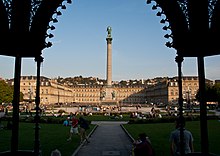
- 48.775249 9.172618 13 Calwer passage ( S-Bahn to Stadtmitte ). Small gallery with little stores (somewhat similar to Milan's famous gallery but a lot smaller). Right next to it is a building whose exterior is covered with plants. ( updated Sep 2021 )
Close to centre
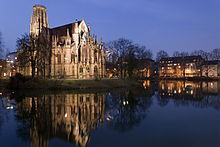
- 48.77473 9.18399 16 Bohnenviertel . The Bohnenviertel is the only preserved part of Stuttgart's old town, having miraculously survived to the present day largely intact. Built mainly in the 14th century, it used to house the poorer part of the population, who fed mainly on beans which were grown all around the quarter in gardens and even hanging from the houses' walls, hence the name meaning "bean quarter". Today, the Bohnenviertel is thriving on artisanry and small, old-style retail, as well as gastronomy and red light district. ( updated Aug 2021 )

- 48.796342 9.186686 19 Pragfriedhof-Krematorium ( U-Bahn to Pragfriedhof ). A beautiful Jugendstil crematorium with occasional exhibitions about transience. ( updated Sep 2021 )
Farther out

- 48.80489 9.21469 22 Old Town and Market in Bad Cannstatt ( U1/U2/U13/U16 to Bad Cannstatt-Wilhelmsplatz or S1/S2/S3 to Stuttgart-Bad Cannstatt, then walk to the northwest ). Bad Cannstatt is older than Stuttgart, and has been a thriving town when today's centre of Stuttgart was still a horse pasture. Moreover, unlike the centre of Stuttgart, the old town of Bad Cannstatt survived the Second World War relatively unscathed. Therefore, you can still get an authenthic, medieval feel wandering around its winding narrow streets, which all lead to a peculiarly-shaped market square. On the market square, you will find the town church of Cannstatt ( Stadtskirche ) and the old town hall, still in use as the district's government seat ( Bezirksrathaus ), both from the late 15th century. It also owns the oldest dwelling in Stuttgart ("Klösterle" / 15th century) that is now used as a wine tavern.
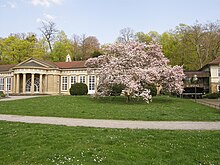
- 48.80865 9.2235 23 Kurpark in Bad Cannstatt ( U2 station Kursaal or alt. U1/U13 and U16 to Uff-Kirchhoff ). Cannstatt owes the Bad (German for bath) in its name to numerous mineral water springs. To enable locals and visitors to enjoy them, a small but very peaceful Kurpark was arranged for in the 19th century, along with a large Kursaal (spa hall) building, which today is a restaurant and special event venue. Right next to it is the MineralBad-Cannstatt (Solebad Bad Cannstatt) spa-wellness-fitness complex with a large pool covered by an impressive glass dome. The Kurpark is divided into two parts Unterer (lower) Kurpark and Oberer (upper) Kurpark separated by Kursaal. The upper Kurpark provides a nice view of Bad Cannstatt. Close to Kurpark, around Uff-Kirchhoff, is the home of around 50 parrots (yellow headed amazons) that can be spotted throughout the year. They barely leave their trees (mainly platanus trees) but their distinctive cry can be heard from distance. It is the only population outside the Americas. ( updated Sep 2021 )
- 48.80719 9.22504 24 Gottlieb Daimler Memorial ( Gottlieb-Daimler-Gedächtnisstätte ), Taubenheimstraße 13 (Bad Cannstatt) ( U2 station Kursaal ). Tu-F 14:00-17:00, Sa Su and holidays 11:00-17:00, closed on Mondays . Stuttgart in general claims to be the birthplace of the automobile, but if you want to see the actual place where it was born, head to the Kurpark in Bad Cannstatt, where the garden house that Gottlieb Daimler converted into his workshop still stands. There he and Wilhelm Maybach worked in the latter half of the 19th century on combustion engines and motorised vehicles they have eventually so successfully developed. Today, it houses an exhibition maintained by Mercedes-Benz Classic that tells the story of the early days of the Daimler motor car company. Admission free .
- 48.771368 9.192453 25 Villa Reitzenstein , Richard-Wagner-Straße 15, 70184 Stuttgart . Seat of the state government. The historical building and the park are occassionally accessible for public. Registration required way in advance. ( updated May 2024 )
Stuttgart is home of a wide range of very good museums including 5 state museums and two automobile museums.

- 48.77703 9.17796 31 Haus der Musik in Fruchkasten ( Musical Instruments Museum ) ( near the Stiftskirche in the "Fruchtkasten" in the centre of the city ). The collection of Landesmuseum of local, European and extra-European instruments spanning centuries from prehistoric to contemporary is displayed in the historic Fruchtkasten , the granary in Schillerplatz. More than just a display of historic artifacts, the museum tries to engage and educate its visitors through temporary, thematic exhibitions and an interactive audioguide. Best of all, however, is the fact the entry, including the audioguide, is free .

- 48.770135 9.167941 35 Lapidarium ( Städtisches Lapidarium ), Mörikestraße 24 ( Bus 41/43 to Mörikestraße ). W Sa Su 14:00-18:00 . Open air museum showcasing ancient sculptures (most of which orginate from destructed buildings after WW2) , terraces and fountains from Stuttgart's history. Admission free . ( updated Sep 2021 )
- 48.790136 9.183836 36 Museum of illusions ( Museum der Illusionen ) ( U-Bahn stop Stadtbibliothek or Budapester Platz / short walk from Hauptbahnhof ). Daily 10:00-20:00 . Small museum for optical illusions. Adults €12, children €8 . ( updated Sep 2021 )
- 48.785999 9.219891 37 Pig museum ( Schweinemuseum ), Schlachthofstraße 2A ( U9 to Schlachthof ). Tu-F 11:00-15:00, Sa Su 11:00-17:00 . A privately owned museum about the world of pigs. Adults €5.9 . ( updated Sep 2021 )
- 48.819356 9.219307 38 Fire fighter Museum ( Feuerwehrmuseum ) ( U14 to Münster Viadukt ). Each first Saturday and each 3rd Sunday (March to November) 10:00-16:00 . Museum about the history of fire fighters including some old fire trucks. €2 . ( updated Sep 2021 )
- 48.775755 9.180652 39 Museum Hotel Silber ( U-Bahn stop Charlottenplatz ). Tu-Su 10:00-18:00 . Exhibition about the German secret police during World War II. Free . ( updated Sep 2021 )
- 48.776554 9.279155 40 Museum of Viticulture ( Weinbaumuseum ), Uhlbacherplatz 4 . Th - Su and holidays, 11AM - 06PM . ( updated Mar 2022 )
Towers and scenic outlooks

Stuttgart is picturesquely located in a valley surrounded by green hills, which the locals call Kessel , or a cauldron. Therefore, one of the main attractions are the views from the hillsides and hilltops around the city. There are several options to enjoy an extraordinary view over the Swabian capital:
- 48.793603 9.161386 42 Bismarckturm . A small tower (20 m) northwest of the city centre, not far from Killesberg Tower.
- 48.787828 9.173771 43 Kriegsbergturm , Am Kriegsbergturm 27 . A small tower (10 m) from the 19th century. ( updated Sep 2021 )
- 48.76825 9.16547 45 Karlshöhe . A hill that separates the western and southern city. Walk uphill 10 minutes southern from S-Bahn-Station "Feuersee" through a park (via Senefelder Str, right to Reinsburgstr, left to Jean-Améry-Weg). Have an outlook and enjoy the beer garden.
- 48.76515 9.18254 46 Weißenburgpark ( Teehaus ). A hill opposite to the Karlshöhe. Easy approach: it is a short hop from Station "Bopser" (U5, U6, U7). Outlook and nice Jugendstil-restaurant and beer garden (closes at 23:00)
- 48.765278 9.131667 47 Birkenkopf ( Monte Scherbelino ) ( bus 92 to Birkenkopf ). A debris mountain made of 15 million m³ of rubble from World War II as a memorial to everyone who died in the war. It is the highest point in Stuttgart.
- 48.805242 9.171311 48 Killesbergturm ( Killesberg Tower ) ( U5 to Killesberg ). A tower in the "Killesberg Park" (see also "green U" under Parks & Gardens), north of the city centre.
- 48.755429 9.172428 49 Santiago-De-Chile-Platz ( Rack railway stop Haigst ). A scenic lookout with a Moai sculpture and stones donated by Chile ( updated Sep 2021 )
- 48.778109 9.190569 50 Eugensplatz , Eugensplatz ( U15 stop Eugensplatz ). Beautiful view and fountain. ( updated Sep 2021 )
- 48.780906 9.194413 51 Uhlandshöhe , Alfred-Lörcher-Weg ( Bus 42 to Urachstraße or U15 to Heidehofstraße ). Small ruin close to the observatory. Nice view. ( updated Sep 2021 )
- 48.819108 9.19479 52 Burgholzturm ( Bus 52 to Alter Gutshof or U12 to Hallschlag ). Observation tower (27 m). Accessible in summer on the weekends. View of Bad Cannstatt and the Neckar Valley. Admission free. ( updated Sep 2021 )
- 48.831369 9.097093 53 Grüner Heiner , Am Lotterberg ( S-Bahn to Weilimdorf then a 15min hike ). A small hill with a wind power station on top in an outskirt of Stuttgart. Free . ( updated Sep 2021 )
- 48.838451 9.228907 54 Burgruine Hofen ( Ruin of castle Hofen ) ( U12 or U14 to Hofen then follow the river ). Remains of a castle from the 13th century. Free . ( updated Sep 2021 )
- 48.773094 9.183526 55 Schellenturm ( Kastkellereiturm ), Weberstraße 72 . One of the few remains of the city wall from the mid 16th century. ( updated Mar 2022 )
- 48.782426 9.310982 56 Kernenturm . Oberservation tower from 1896 with a barbecue area and a small kiosk. ( updated Feb 2023 )
- 48.772778 9.176111 57 Tagblatt-Turm . Skyscraper from the 1920s. It served as the office for the local newspaper and was the city's tallest building when completed. ( updated Feb 2023 )
Parks and gardens
"Das Grüne U" : Most of Stuttgart's many parks and gardens are usually referred to by locals as "das Grüne U" (the green "U") because of the U-shaped form in which they are located around the city centre. They form a long and beautiful path around the city, starting at the Schlossgarten at the northern façade of the new palace (Neues Schloss), continuing through 48.803575 9.196606 58 Rosensteinpark . ( updated Sep 2021 ) with the natural history museum and a rear entrance to Wilhelma (the zoo), 48.803881 9.177677 59 Wartbergpark . ( updated Sep 2021 ) and ending in 48.805384 9.172918 60 Killesberg Park ( Höhenpark Killesberg ). ( updated Sep 2021 ) . Walking at a reasonable pace, you can walk the entire circuit in about 2 hours. There are beer gardens (look for Biergarten signs) and restaurants along the way, and the Killesberg Park is a real treat. It was designed for a huge botanical expo several years ago (IGA 1993) and remains a truly stunning park, especially in spring when in full bloom. If you're interested in architecture, be sure not to miss the structural engineering wonder Killesberg Tower, a minimalistic steel construction composed of one central support and a cable outer support system. Not officially part of the Green U but connected is the tiny 48.795313 9.205644 61 Japan garden ( Japanischer Garten ). ( updated Sep 2021 ) and the 48.792557 9.205614 62 Parkanlage Villa Berg . ( updated Sep 2021 ) including its villa from the mid-19th century.
48.761833 9.09136 63 Rotwildpark ( Bus 91 to Forsthaus ). Protected nature reserve in a forest that includes a few lakes (the best known being Bärensee) that had artificially been created in the 19th century to serve as a backup water reservoir. Popular weekend destination with a small palace (Bärenschlössle) that now serves as a beer garden. ( updated Sep 2021 )
48.758649 9.177639 64 Wernhaldenpark ( U-Bahn stop Weinsteige ). Small park with many sequoia trees from the 19th century. ( updated Sep 2021 )
48.835405 9.216901 65 Max-Eyth See ( U-Bahn stop Max-Eyth See ). Small lake next to the Neckar river. Popular for jogging, sailing, fishing and BBQs at the weekend. Also small boats can be rent. Swimming is not permitted. ( updated Sep 2021 )
48.75963 9.128284 66 Heslach waterfalls ( Heslacher Wasserfälle ) ( Bus 92 to Rudolf-Sophien Stift ). Set of small waterfalls that can be followed in a trail. Not far from Birkenkopf / Rotwildpark. Free . ( updated Sep 2021 )
48.708675 9.21403 67 Botanical and exotic garden Hohenheim ( Hohenheimer Gärten ), August von Hartmann Straße 5 ( U3 to Plieningen / close to the airport ). Botanical and exotic garden of the University of Hohenheim one of the leading universities in agriculture. The university itself is a palace and quite picturesque. Free . ( updated Sep 2021 )
48.784287 9.286387 68 Egelseer Heide , Karl-Münchinger-Weg 1, 70329 Stuttgart . Barbecue area, playground and scenic lookouts. ( updated Feb 2022 )
- 48.765255 9.149397 69 Sculpture Park , Hasenbergsteige 77 . A small park showcasing sculptures from quasi-local artist Otto Hajek that spent big parts of his life in Stuttgart. At the end of the park is the ruin of the Hasenberg tower that was intentionally destroyed by the Germans in WW2. ( updated Mar 2023 )
Rail transport systems

- Killesberg Railway, a small railway in Killesberg park, on weekends using steam-powered engines!
- 48.756439 9.142787 70 Stuttgart Cable Car , Südheimer Platz ( U1 or U9 to Südheimerplatz ). an old cable car running to the forest cemetery ( updated Sep 2021 )
- 48.764868 9.168729 71 Rack Railway ( Zahnradbahn ("Zacke") ) ( U1 or U14 to Marienplatz ). Germany's only urban rack-railway. It uses modern cars like the light railway and offers a nice view. Connecting Marienplatz with Degerloch ( updated Sep 2021 )

- 48.78344 9.18691 2 Planetarium . A fascinating astronomical journey, projected by optical hightech equipment: Carl Zeiss Planetarium. Almost all the shows conducted here are in German. You may have to check with the office for English show timings.
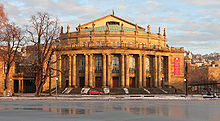
- 48.78016 9.18455 3 The Stuttgart Ballet . Watch and listen to the ballet company of the state theater Stuttgart. It is one of the world's best ensembles founded by legacy of John Cranko. Definitely a top place to go to in the evening. You'll need to reserve tickets in advance.
- 48.72399 9.16269 4 SI-Centrum . There are two musical theatres (Apollo-Theater and Stage Palladium Theater) in the hotel/conference/entertainment complex called the SI-Centrum (Stuttgart Musical Centre) in Möhringen close to the A8. This complex includes also the Millennium hotel and a spacious underground complex that houses many conference rooms, bars, restaurants, a casino and a huge wellness pool area. ( 48.722466 9.160687 5 SchwabenQuellen , Plieninger Str. 100, 70567 Stuttgart . ( updated May 2024 )
- 48.79999 9.18563 6 Wagenhallen ( Inneren Nordbahnhof 1 ). Around 80 creative artists, architects, designers and musicians present their work in an old train depot and discarded train wagon.
- 48.73001 9.11203 7 Corso Cinema International , Hauptstraße 6 Vaihingen ( S-Bahn Vaihingen ). Most cinemas will run movies with synchronised German voice-over/dubbing and you will be unable to enjoy the movie unless you understand German. CORSO Cinema International in Vaihingen shows movies with original audio track (and possibly German text captions). €7.80 for adults .
- Theater Stuttgart shows when what is played where in the state capital. With depictions of the venues (such as the beautiful 48.773316 9.173671 8 Altes Schauspielhaus . ( updated May 2024 ) ), illustrated play descriptions, location and arrival maps and general information about the theaters.
- 48.782882 9.180787 9 Miniature world Stuttgart ( Stellwerk S ), Arnulf-Klett Platz 1-3 ( S-Bahn to Hauptbahnhof ). 1pm-5pm . Miniature model of Stuttgart (1:160) of the 1980s. €9 . ( updated Feb 2023 )
- 48.836736 9.159647 10 Black light Stuttgart , Strohgäustrasse 10 ( U13 or U15 to Salzwiesenstrasse ). Indoor mini golfing at black light. ( updated Feb 2023 )
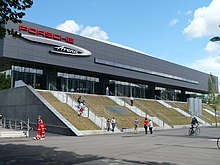
- 48.7987 9.21032 11 Swim and relax ( Leuze Mineralbad ) ( U-Bahn Mineralbäder ). 06:00-21:00 . Stuttgart is fond of its mineral springs, the biggest in Western Europe. The best one might be the Leuze Mineralbad which also offers a sauna, but there are many others like the Höhenfreibad Killesberg (open-air pool for €4.10), the MineralBad (Solebad) Cannstatt or the Mineralbad Berg. €8-15 . ( updated Sep 2021 )
- Climb one of the many stairs . Being surrounded by many hills, Stuttgart is famous for its stairs ("Stäffele" or "Staffeln"). There are tours offered but they can also be explored individually on one's own pace. ( updated Sep 2021 )
- 48.751637 9.186506 12 Go ice skating , Waldau (next to TV tower) ( U-Bahn stop Ruhbank / Fernsehturm ). ( updated Sep 2021 )
- 48.78193 9.26851 13 Walk the wine trail . The Stuttgart wine trail. The Obertürkheim - Uhlbach - Rotenberg - Untertürkheim trail includes a viniculture museum, the Grabkapelle Württemberg (Burial chapel Württemberg) and restaurants where you can try the local wine. There are signs explaning the different types of wine that are grown. Along the (partly steep) path, you will find (sub)mediterranean plants such as pine trees, almonds, kiwis and dwarf palms.
- Blaustrümpfler Trail . 7.5km trail within the city limits including a few panoramic lookouts ( updated Sep 2021 )
- Football: 48.7919 9.2307 14 VfB Stuttgart , MHPArena, Mercedesstraße 87 , ☏ +49 711 9933 1893 . Die Roten (The Reds) play soccer in Bundesliga, Germany's top tier. The stadium (capacity 54,800) is 3 km northeast of city centre, with S-bahn and U-bahn nearby. In 2024 it hosts games in the UEFA Euro Finals. ( updated Oct 2023 )
- 48.79312 9.22782 15 Watch Tennis ( WTA ). International ladies' tennis (WTA's Porsche Grand Prix) can be seen in the Porsche Arena in September/October each year. This prestigious event attracts top players, with large prize-money and a new Porsche car on offer to the winner.
- Biking . The city lies in a basin of a hilly region the Stuttgarters call "Kessel", literally "cauldron", and between the lowest part of the city and the highest part of the city are 250 m of altitude. There is a lot of car traffic, and routes for bikes are not well developed. Biking in the outlying areas of Stuttgart, e.g. in the Neckar Valley or the Schönbuch (just south of the city) is very nice. Stuttgart is one of the greenest urban areas in Europe. There are many paths through the surrounding forests which are in very good shape. There is an official downhill track called the Woodpecker's trail from Degerloch. ( updated Sep 2021 )
- 48.827004 9.197288 16 Watch Baseball , Am Schnarrenberg 10 ( Bus from Zuffenhausen ). Go watch a baseball (or softball) match. The Stuttgart Reds play in Germany's first division. Season from spring to early summer. ( updated Jun 2023 )
- 48.754032 9.187941 17 Watch American Football , Epplestraße 225 . Founded in 2021, the Stuttgart Surge play in the European League of Football (EFL). ( updated May 2024 )
Seasonal festivals

- Volksfest ( Cannstatter Wasen ). Huge fun fair on the Cannstatter Wasen, beertents and rollercoasters, late September-early October. (Families should go there during daytime: after 20:00 o'clock beware of tough public and drunken people.) Canstatter Wasen is the second largest fun fair in the world. Visiting it is more pleasant than the Oktoberfest in Munich, because tents are not so overcrowded like on the Oktoberfest. Free entrance .
- Weindorf ( Marketplace in city centre ). Huge wine festival at 10 days in early September. More than one million visitors from all over the world try around 5000 different sorts of wine.
- Weihnachtsmarkt ( Marketplace in city centre ). Huge Christmas market during December.
- Stuttgarter Frühlingsfest . a fun fair like Cannstatter Wasen in April/May, but smaller. Free entrance .
- Festival of Animated Film ( Internationales Trickfilmfestival ). Every year, April or May
- Long Night of the Museums ( Lange Nacht der Museen ). All museums open up to Sunday 02:00 in the morning. There is also a Long Night of Sciences (Lange Nacht der Wissenschaften) €16 .
- Stuttgart Jazz Open . Festival in mid-July lasting about one week featuring American, European and other international performers at two downtown venues, one outdoor near the main train station and one indoor at a jazz club.
- Hamburg Fish Market . 10-day festival featuring seafood, beer, and vendors from the northern port city of Hamburg. The market fills Karlsplatz near the Schlossplatz in mid-July.
- Stuttgart Summer Festival ( Sommerfest ). Early August, city centre - music, food and drinks.
- [dead link] Bohnenviertelfest . Downtown street music festival in mid-July - music, food, drinks.
- International Festival of Science Fiction, Horror and Thriller ( Fantasy Filmfest ). Late July or early August: Festival for strange films, one week of Horror, Splatter, Asia, Suspense, Action and Animation.
Around Stuttgart
From Stuttgart you can arrange many nice day trips:
- 48.80308 9.20828 18 Ship roundtrips on river Neckar ( Neckar Käptn ), Shipstop at Zoo Wilhelma Neckartalstraße , ☏ +49 711 54 99 70 60 , [email protected] . Enjoy liner trips on the Neckar, roundtrips or event trips. Or charter a complete ship just for you. Season is from Easter till end of October. For the conditions see the website. Beverage and food is offered on the ships.
- 48.69573 8.99823 19 Mercedes-Benz factory , Sindelfingen ( Catch the S1 (S-bahn) to Böblingen, then catch the courtesy bus ). The heart of Mercedes-Benz manufacture, and well worth the visit. There are some 40,000 employees on site, including 9,000 in research & development alone! There are also guided tour in English.
- 48.68987 9.003863 20 Motorworld Region Stuttgart in Böblingen , Wolfgang-Brumme-Allee 55 ( S-bahn S1 to Böblingen and just walk over ), ☏ +49 7031 306940 . This is a location where people can store their valuable cars safely and allow the public to see them at the same time in a safe environment. Customers can rent glass boxes to keep their classic car in pristine condition. Workshops with qualified mechanics that are specialised in maintenance, repair and restoration of vintage and classic cars, car dealerships: Lamborghini, McLaren, Porsche, Bentley, Harley-Davidson, restaurant, cigar lounge, hotel, event location, outside location, playground nearby. free entry to walk round, guided tour at extra costs. .
- 48.638714 9.120819 21 Visit the Ritter Sport Chocolate Museum , Alfred-Ritter-Straße 25, 71111 Waldenbuch ( Bus 828 from Echterdingen ). Tu-Su 11am to 6pm . Learn the history of Ritter Sport and visit the factory store. Can be combined with a hike in the nearby Schönbuch park or Siebenmühlen Tal ( updated Apr 2023 )

Shopping around the Königstraße
The main shopping street in Stuttgart is the Königstraße which starts at the main railway station. Left and right of Königstraße are interesting shops, too, but Königstraße is a good startpoint for navigation in the inner city. Stores and shops usually open their doors M-Sa 10:00 to 20:00.
Big department stores and shopping malls
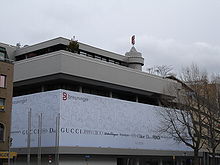
- 48.7726 9.1727 1 Das Gerber , Sophienstraße 21 ( S/U-Bahn station Rotebühlplatz ). 09:30-20:00 . In September 2014, this shopping mall with 86 international brands opened extending the Königstraße. There are clothing shops, a food court and two supermarkets inside the building.
- 48.79139 9.18327 2 Milaneo ( U-Bahn station Stadtbibliothek ). M-Th 10:00-20:00; F 10:00-21:30; Sa 09:30-20:00 . Opened in Ocotober 2014 this new shopping mall north of the main station is the largest of its kind in Baden-Württemberg. In the three connected buildings there are more than 200 shops and plenty of eating options.
- 48.77926 9.1781 3 Königsbaupassagen . A modern shopping centre inside the historical Königsbau in the middle of the city at the Schlossplatz with a number of apparel chain stores and a food court.
- 48.77494 9.17987 4 Breuninger , Marktstr. 1-3 ( U1, U2, U4 and buses 43, 44, station/stop Rathaus ). M-Sa 10:00-20:00, Saturdays from 09:30 . Breuninger is Stuttgart's homegrown department store, which now has outlets in many other German cities and became one of only three surviving major department store chains, alongside Kaufhof and Karstad. The secret of their success is focusing on high-end fashion and other branded premium/luxury goods. In Breuninger's Stuttgart flagship store, you will find a selection of local German and global brands in both apparel, accessories, sportsgear, cosmetics and home decoration spread over six levels. There are multiple restaurants/cafes, hairdressers' and a cosmetic treatment salon on site. Parking is provided across the Hauptstatter Straße with an underground passage from the garage to the store.
- 48.77337 9.17601 5 Galeria Kaufhof Eberhardtstraße .
- 48.78193 9.18107 6 Galeria Kaufhof Königstraße .
48.801725 9.220428 7 Cannstatter Carré , Wildungerstraße 2 ( S-Bahn to Bad Cannstatt ). Shopping mall ( updated Sep 2021 )
48.730568 9.108548 8 SchwabenGalerie , Schwabenplatz 7 ( S-Bahn to Vaihingen or U1 to Vaihingen Schillerplatz ). Shopping mall in Vaihingen ( updated Sep 2021 )
- 48.7788 9.17707 9 Abseits , Kleiner Schlossplatz 13/15 ( Behind the Kunstmuseum. ). M-F 10:00-20, Sa 10:00-19:00 . Mostly casual, trendy designer clothes, shoes and accessories for both women and men. Carries merchandise starting at €300 apiece, unless there is a sale .
- 48.77556 9.17978 10 Dorotheenquartier , Sporerstraße 11 . New quarter with shops like Tiger of Sweden, Louis Vuitton, Gap, and Diesel. Quite expensive. ( updated Jul 2018 )
- 48.77639 9.17756 11 Bungalow Gallery , Stiftstraße 1A , ☏ +49 711 220 2000 , [email protected] . One of the best German clothes stores with designer labels (Acne, Bottega Veneta, Moncler, the White Briefs and many others) catering to women and men.
- 48.77398 9.17611 12 Geschwisterliebe . A boutique carrying streetwear by young designers from all over Europe. Most pieces affordably priced below €100 .
- 48.78167 9.18037 13 SportScheck Stuttgart , Kronenstraße 3 ( at the corner of Koenigstraße ), ☏ +49 711 305 841 19 . M-Sa 10:00-20:00 . A part of a chain of stores carrying sport shoes, clothing and equipment. A large selection displayed over four stories.
Music stores
- Cheap Trash Records .
- Ratzer Records .
- Second Hand Records .
- Saturn .
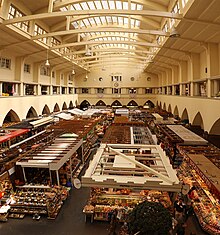
Food markets
There are weekly food markets in almost every district. Days and opening times vary a lot. To get an overview on the website of Stuttgarter Wochenmärkte [formerly dead link]
- Marktplatz am Rathaus ( market square ). Public market on Tuesday, Thursday and Saturday mornings
- Wilhelmsplatz . Somewhat smaller public food market on Friday.
- Markthalle ( market hall ). Exotic wares, exotic prices, crowded.
There are restaurants all over Stuttgart. The traditional Swabian cuisine with onion-topped roast pork, think noodles called "Spätzle" or Maultaschen (stuffed noodles) is very tasty. Of course there are also restaurants serving styles from many other parts of the world.
Stuttgart publishes a book annually entitled Stuttgart geht aus (Stuttgart goes out). This is available at most book stores on Königstraße (e.g. Wittwer). This book, published in German, is a great guide to restaurants in the city.
Food courts with various types of (fast) food can be found in the malls Milaneo, Gerber and Königsbaupassagen.
All these are in the city center:
- 48.77678 9.17482 1 Udo Snack , Calwer Str. 23 . Of course McDonald's, Burger King and Subway are in town, too. If you want to try their locally renowned single shop competitor, go to Udo Snack in Calwer Straße. ( updated Jan 2023 )
- 48.7736 9.17671 2 Vegi , Steinstraße 13 . the best falafel in Stuttgart. Perfect for vegetarians and vegans. Numerous sauces and options to choose from. Always fast and very friendly service. Seating is available in the snack bar and outside. Very friendly and young staff. ( updated Jan 2023 )
- 48.774816 9.171029 3 Rudolfs Küche und Café , Rotebühlpl. 28 . Half of the food is vegetarian/vegan. Various daily meals. By doing self-service you get your food faster. The concept at Rudolfs is very worthy of support. ( updated Jan 2023 )
- 48.772687 9.179477 4 Brunnenwirt , Leonhardspl. 25 . Very tasty food. Especially the schnitzel (very high quality meat and preparation). The ambiance simply iconic. Great for eating a currywurst in the cold at 11 p.m.. Legendary snack bar in Stuttgart's red light district. Great curry special and shashlik skewers. ( updated Jan 2023 )
- 48.773122 9.172954 5 Al Zain , Marienstraße 18 . Best shawarma. It is a decent Syrian restaurant and the food is very tasty. ( updated Jan 2023 )
- 48.77939 9.18002 6 Carls Brauhaus , Stauffenbergstraße 1 . Opened in April 2014, the Carls Brauhaus at the beautiful Schlossplatz serves decent Swabian cuisine. ( updated Sep 2022 )
- 48.78463 9.18608 7 Biergarten im Schlossgarten ( Beer garden in the palace park ), Am Schlossgarten 18 ( in the city park near the main train station ), ☏ +49 711-22 612 74 , fax : +49 711-22 612 75 , [email protected] . Daily 10:30-01:00 . Beautiful setting and reasonable prices. Order cafeteria style or sit down to be waited on. Free live music on Sundays from May - September. €3-10 for entrees, drinks start at €2 .
- 48.7729 9.17245 8 Sophies Brauhaus , Marienstraße 28 ( U-Bahn Rotebuehlplatz, S-Bahn Stadtmitte ), ☏ +49 711-61 09 62 , fax : +49 711-61 18 75 , [email protected] . M-Th 11:30-01:30, F Sa 11:30-02:00, Su 10:00-00:00 . Brewpub serving regional specialties and its own beer. A lovely bar with impressive decorations. €1.20-15 .
- 48.771316 9.166813 9 Stäffele Restaurant , Buschlestraße 2 ( near S-Bahn Station Feuersee ). Real regional Swabian specialities like Rostbraten, Käsespätzle, Kutteln, Bubenspitzle, Linsen mit Spätzle und Saiten, Maultaschen and wine from Stuttgart. In the summertime also outside in the beergarden. middle range prices . ( updated Sep 2022 )
- 48.77596 9.17914 10 Restaurant Cafe Markthalle , Dorotheenstraße 4 ( one block from Rathaus Marktplatz farmer's market ), ☏ +49 711-24 59 79 , fax : +49 711-23 61 040 . M-F 06:00-22:00; Sa 07:00-18:00 . Restaurant attached to Stuttgart's international marketplace for produce, meat, and cheese (which is a nice shopping experience by itself). Serves regional and seasonal dishes. Also serves substantial breakfasts if you are hungry for more than bakery fare. €7-15 for entrees, drinks start at €2 .
- 48.77807 9.177 11 Ochs'n Willi , Schlossplatz Tunnel 4 , ☏ +49 711 2265191 . Old-fashioned traditional cuisine at the Königstraße. It is very famous for tourists. ( updated Sep 2022 )
- 48.77158 9.17881 12 Il Pomodoro , Wilhelmsplatz 4 . The pizzeria at the Wilhelmsplatz stands for great and reasonable Italian food. Delicious wood oven pizzas and special pasta offers at lunch time gets it crowded all day long. If you can't get a table, there are other good options at the Wilhelmsplatz. The concept of the owner works out fine. There are two more Il Pomodoro restaurants in the districts West (Silberburgstraße 72) and now also in Süd (Filderstraße 25). Large pizza starts at €4.50 .
- 48.822604 9.094144 13 Ristorante Italiani , Ingersheimer Straße 12, Weilimdorf , ☏ +49 711 887522 . Good Italian food, friendly efficient service. ( updated Sep 2022 )
- 48.730045 9.108234 14 King's Palace , Hauptstraße 28, Vaihingen , ☏ +49 711 782 6993 . Good Chinese restaurant ( updated Sep 2022 )
- 48.730595 9.110731 15 Vaihinger Marktstüble , Vaihinger Markt 24, Vaihingen , ☏ +49 711 7353552 . Small friendly Italian restaurant. ( updated Sep 2022 )
- 48.73016 9.110979 16 India House , Vaihinger Markt 28, Vaihingen , ☏ +49 711 72246790 . Good friendly Indian, although you should ask them to spice the food up otherwise you get German strength. ( updated Sep 2022 )
- 48.78562 9.21973 17 Schlachthof , Schlachthofstraße 2 , ☏ +49 711 66419600 . Rustic, suitable restaurant for pork eaters. Salmon from the grill was very good. Large selection and great ambience in the "Slaughterhouse". Lovely service. ( updated Jan 2023 )
- 48.75726 9.17067 18 Wielandshöhe ( Vincent Klink ), Alte Weinsteige 71 ( Zahnrackbahn stop "Wielandshöhe" ), ☏ +49 711 6408848 . Star-rated restaurant with traditional "schwäbische Küche"
- 48.71266 9.2137 19 Speisemeisterei ( Frank Oehler ). Another Michelin-starred restaurant in the Hohenheim palace.
- 48.72766 9.15052 20 Gasthaus zur Linde , Sigmaringer Straße 49, Stuttgart-Möhringen , ☏ +49 711 719-9590 , fax : +49 711 719-9592 . Su-F 12:00-14:00 & from 18:00, Sa from 18:00 . Renowned chef Jörg Mink cooks up a storm with schwäbischer recipes like your German grandmother used to make. Kalbshaxenfleisch in seiner eigenen Soße mit Riesling und Sahne verfeinert dazu Austernpilze und Handspätzle, Kartoffelsalat in Schüsseln finished at your table is a recommendation at €23.50. €34.50 and less for mains .
In the morning, locals definitely want to get some fresh bread (and brezels and broetchen [bread rolls/buns]) from the baker's shop and serve them with butter, cheese, ham, honey, jam and eggs from the fridge. Many locals and visitors will enjoy breakfast at the bakery itself, in the "Stehcafe" - literally, "standing cafe". These are usually a corner of the shop with tall tables which you stand at rather than sit at. Orange juice together with coffee or tea or hot chocolate will fit nicely. The breakfast in hotels will also look more or less that way.
You can also order this breakfast setup in some or the other cafe or pub, but you'd have to know the good places at first, if you don't want to end up with a poor dish. There are 3 Starbucks coffee shops along Königstraße (a 4th in the high-end district on Calwer Straße). But don't look for low-fat muffin or cream cheese options.
Stuttgart has developed a vibrant nightlife with many clubs and pubs in the heart of the city. The most popular street for clubbing is the Theodor-Heuss-Straße ("Theo"). Several bars, clubs and lounges have opened here. During the summer, there are also many opportunities to have a drink outside. In the "Theo" you can listen to good house, drum'n'bass, hip-hop and other kinds of electronic music. However it is not always easy to get into most clubs because of the restrictive door policy!
For a more laid-back atmosphere try the area surrounding the "Hans-im-Glück" ("Lucky Hans") fountain just a stone's throw from Königsstraße. In this charming quarter in Stuttgart's old town centre, many pubs and bars are crammed next to each other. Especially in the summer months a unique southern flair mixed with a great party scene with open-minded people make this area special.
Concerts, nightclubs and events are covered by local magazines (generally not in English). Try Lift and Prinz [dead link] .
Because street drinking is still legal in Germany budget-travellers can save some money if they buy their drinks at a supermarket. A beer is there, e.g. only €0.50 compared to €3 and more in pubs. There are two of the REWE supermarkets at the beginning and the end of the Königstraße. There you can buy cheap snacks, softdrinks and alcoholic drinks from Monday to Saturday up till 22:00. Lots of young people do so and hang around the beautiful Schlossplatz.
Bars and pubs
- 48.78048 9.17728 1 Palast der Republik , Friedrichstraße 27 . In a former public toilet house, the "palace" is the place to hang out in hot summer nights. Get your beer at the fastest barkeeper you've ever seen and find your place outside (maybe on the ground).
- 48.77369 9.17775 2 Mata Hari ( Hans-im-Glück-Brunnen ). At the Mata Hari you can get exotic beer in an old-fashioned tea-house style. At long tables and benches young folks sit together and drink their beer. Contact to others comes therefore almost automatically.
- 48.77302 9.17233 3 Biddy Earlys . A good place to go where everyone speaks English is Biddy Earlys, an Irish pub just west of the city centre/Königstraße, a 5-minute walk from the major public transport station "Stadtmitte" (S-Bahn, Stadtbahn). Keep a sharp eye because the entry is a mere doorway wide which leads down the stairs to the basement. Good bands on the weekends. €2-3 cover, €4 on weekends (plus a bag charge if you have a backpack). Everybody always welcome and you don't have to apologise for your poor German here! They show Premier League Championship and other British football here, you can celebrate or commiserate with only a handful of other drinkers.
- 48.7819 9.18117 4 The Sky Beach ( Parking D2 ). On top of the Kaufhof department store close to the main railway station. All sandy roof top bar. Opened only in summer time.
- 48.77371 9.1755 5 Schocken , Hirschstr. 36 . Ever changing music program with guests dancing in addition, superior live concerts of Indie to Black Metal and the unconstrained atmosphere on all floors of the multi-storied cult store - all this makes the Schocken to a well-earned an inalienable institution in the Stuttgart night life.
- 48.77426 9.17644 6 Kap Tormentoso , Hirschstr. 27 . Noble café atmosphere in the first floor. In the basement mostly alternatives and hipsters sit on benches and drinks itself straight through the great drinking menu. Gets very crowded on weekends with a laid back outside area. No entrance fee but with DJs. ( updated May 2015 )
- 48.77857 9.16311 7 Hotzenplotz , Silberburgstr. 88 . Rustic atmosphere, little offside in Stuttgart-West.
- 48.77249 9.1791 8 Kiste . Two great Jazzclubs are in the Hauptstätterstr (Stadtbahn-station "Rathaus"). The "Kiste" (means "box": indeed a tiny club) charges €5 (added to the drink) for a concert, daily starting at 21:00 or 22:00. The "Bix" named after Bix Beiderbecke offers local to top-class-acts, entry from about €7-30, depending on the artist.
- 48.77671 9.17394 9 Suite 212 , Theodor-Heuss-Straße . to 05:00 on weekends . A posh bar/lounge with minimalist, urbane and undercool interior. People in the smart casual look sip their cocktails or wines around the large dance floor. On weekends the bar changes into a big party club exemplary for the night-life on the "Theo" party street.
- 48.77168 9.17935 10 Fou Fou . A stylish champagner bar in a conglomerate of brothels and hotels letting rooms by the hour called the "Bohnenviertel" (Bean Quarter) between Hauptstätter Str. and Olgastr.
- 48.77302 9.17723 11 Delayla . 23:00 - 07:00 . The renovated basement rooms get crowded in the night. Don't try to go there before 02:00.
- 48.77503 9.17708 12 Schräglage , Marktstr. 6 . The best independent HipHop club in town.
- 48.77332 9.17647 13 Classic Rock Cafe . Another great bar is the Classic Rock Cafe which is a few blocks away from Biddy Early's. No cover charge here even on weekends and the music is great! Interesting decor too. And everyone is welcome!
- 48.78481 9.17863 14 Kowalski . A stylishly designed electric club for an older audience. Here local DJs play fine electronic dance music, and sometimes an international bookings. Check the website for latest information. ( updated May 2015 )
- 48.778 9.16817 15 Freund und Kupferstecher , Berliner Platz . Reopened in 2014 this hip club has a great range of national performers of HipHop and electronic music. €5 . ( updated May 2015 )
- 48.77706 9.18339 16 Universum . This rock club is inside the underground stop "Charlottenplatz". It's on the right way out at the exit signed with "Landtag". Playing a lot of concerts in rock or independent music.
- 48.77257 9.17426 17 Boa Disco , Tübinger Straße 12 . Established in 1977 and still famous for the after-work-party that starts at 18:00 with a free buffet. Especially on Thursdays it gets very crowded so try to get on the guest list a few days before.
- 48.77431 9.17376 18 Keller Club ( near Rotebühlplatz ). (indie dance music)
- 48.82023 9.17445 19 [dead link] Penthouse , Heilbronner Str . If you're looking for a posh club, you can try the Penthouse. In such places, it's hard to be overdressed. But even if you "dress to impress", there's no guarantee that the doormen will let you in.
- 48.80517 9.17451 20 Perkins Park , Stresemannstr. 39 . Also a posh club outside the city centre.
Gay & lesbian
- Eagle (men-only leather bar)
- Boots (men-only country style bar)
- Kings Club (mixed dance club)
- Jenseitz (mixed gay bar)
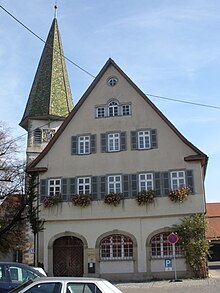
To stay in the city centre (Mitte) around the Königstraße is probably the nicest, but also most expensive option. Still in walking distance are the beautiful districts of West and Süd. Other accommodations further out in the districts Nord, Canstatt, Feuerbach or Vaihingen are perfectly reachable by public transport. If you intend to arrive by car check at the hotel for parking possibilities. If you have an early morning flight, it is possible to spend the night in the airport, as check-in areas stay open at night.
- 48.79387 9.21918 1 Campingplatz Cannstatter Wasen ( Cannstatt ), ☏ +49 711 556696 , [email protected] . The only camping ground in Stuttgart is between the Neckar River, the Cannstatter Wasen and the stadium. The rates may be higher when there are big events close by. €6.50 per person; €4.50 per tent; €2.50 per car; €7.50 per caravan .
- 48.77406 9.18801 2 Alex30 Hostel , Alexanderstraße 30 ( Mitte U-bahn: Olgaeck ), ☏ +49 711 838895-0 , fax : +49 711 838895-20 , [email protected] . Check-out: 12:00 . Central hostel with breakfast buffet. Youth Hostel card is not required to stay. WiFi €1; also a computer terminal at regular rates. Shared room from €22. Private rooms also available .
- 48.78062 9.19101 3 Youth hostel , Haussmannstraße 27 ( 10-min walk from main station, or take the U15 to Eugensplatz (Jugendherberge) ), ☏ +49 711 24 15 83 . €25/adult and €5 for internet + €6 for breakfast, €3 for a Youth Hostel card. They will charge you for shampoo (€1.50) and towel (cleaning fee €1.50) separately.
- 48.77822 9.15949 4 City - Übernachtung - Stuttgart ( City-Overnight-Stuttgart-West ), Forststr. 71 ( West ), ☏ +49 711-9933010 , [email protected] . dorms from €12 .
- 48.81123 9.178902 5 ibis Budget Stuttgart City Nord ( formerly ETAP ), Siemmensstraße 28 ( Feuerbach, next to Maybachstraße U-Bahn and a few minutes walk from Pragsattel ). An older-style Etap hotel (blue fittings) that was not updated to the newer "green room" standard when rebranded as ibis Budget. Free WiFi in the rooms and foyer however the login webpage is very bad and sometimes the "Gratis WLAN" link doesn't display. During the week a room for 1 person is €49 with a €10 surcharge for a second person and €39 at the weekend. The rooms have a double bed and a single bed in them .

- 48.722509 9.162401 6 Dormero Hotel Stuttgart , Plieninger Straße 100 ( Möhringen ), ☏ +49 711 721 0 , [email protected] . The Dormero is a huge (over 450 rooms) 1980s-style tower hotel within the SI entertainment complex (cinema, musical theatre, casino, spa) in Moehringen, an outer district of Stuttgart close to the airport. Due to its particular location, arrival by public transit is not really simple. Double from €115 .
- 48.79259 9.22947 7 Hilton Garden Inn Stuttgart NeckarPark , Mercedesstr. 75 ( Cannstatt ). The Garden Inn is right between the Porsche and Mercedes-Benz arenas and mostly caters to the visitors of those venues. Prices tend to skyrocket during major events. The hotel is quite a bit away from the city centre and public transportation options are limited. The entire hotel is appointed in a very modern, elegant and consistent theme. Double from €80 .
- 48.821516 9.09408 8 Holiday Inn Stuttgart , Mittlerer Pfad 25-27 ( Weilimdorf ), ☏ +49 4971 1988880 . Good quality rooms. One of the best breakfast buffets in town. Friendly, helpful and efficient staff. On the edge of town but with S-Bahn station next to hotel. Double from €140 .
- 48.8098 9.22151 9 ibis Styles Stuttgart ( Canstatt, U2 stop Kursaal ). The former Mercure Bad Canstatt was downgraded to ibis Styles, but it does not mean it is a bad hotel, but rather that you get your breakfast and WiFi included in the room prices. Rooms are basic but appropriate. The hotel is in a quiet suburb of Bad Canstatt, but you can easily get to the city with the Stadtbahn U2 which runs right in front of the hotel. Double from €100 .
- 48.76362 9.16778 10 ibis Stuttgart Centrum ( Marienplatz ), Marienplatz 8 - 10 ( Süd ). A typical old-style (green washbasins) ibis hotel right on the Marienplatz in southern Stuttgart. Double from €91 .
- 48.80115 9.18455 11 ibis Stuttgart City , Presselstraße 15 ( Nord ). As with other Accor hotels in Stuttgart, this hotel's name can be deceiving, as it is decisively out of the city, in the Nordbahnhof area. Otherwise, it is a typical old-style ibis hotel. Double from €86 .
- 48.78549 9.17476 12 Kronen Hotel , Kronenstraße 48 ( Mitte ). The independently operated Kronen Hotel may have some very questionable interior fittings, responding to the German idea of Gemuetlichkeit , but wins over guests by great service and location just 800 east of the Hauptbahnhof, in a quiet area. Double from €160 .
- 48.79281 9.18216 13 Mercure Stuttgart City Center , Heilbronner Straße 88 ( Nord ), ☏ +49 711 255580 . Despite the name, the hotel is not in the city centre but rather some 1.5 km uphill north from the Hauptbahnhof. The decor and appointments are nondescript and a little dated and overall there is nothing really outstanding about this Mercure. Double from €71 . ( updated Sep 2021 )
- 48.7822 9.17888 14 Motel One Stuttgart-Hauptbahnhof , Lautenschlagerstraße 14 ( Mitte ). This hotel is in the centre of Stuttgart, one block from both the Hauptbahnhof and the Koenigstraße. Appointed in a modern and sleek but basic way like all other Motel Ones. Double from €80 .
- 48.81633 9.17671 15 Motel One Stuttgart , Heilbronner Straße 325 ( Feuerbach, Stadbahn U7, U15, stop "Sieglestraße" ). The other Motel One in Stuttgart is in Feuerbach-Ost, an industry and office district north of the city. It is in front of a Stadtbahn stop and offers the usual Motel One standard. Double from €80 .
- 48.764831 9.169718 16 Park Inn by Radisson Stuttgart , Hauptstätter Straße 147 ( Süd, 200 m from Marienplatz. ), ☏ +49 711 320 94 0 . Double from €100 .
- 48.726614 9.110881 17 Pullman Stuttgart Fontana , Vollmoellerstraße 5 ( Vaihingen ), ☏ +49 711 7300 . The Pullman is in the outer district of Vaihingen, directly opposite a major S-Bahn and U-Bahn stop, roughly equidistant to the airport and Hauptbahnhof. Good quality rooms. Good breakfast buffet. Staff not always to the standard you would expect. Rack rates from €99 .

- 48.696184 9.170027 18 Dorint Airport-Hotel Stuttgart , Heilbronner Straße 15-17, 70771 Leinfelden-Echterdingen , ☏ +49 711 320640 , [email protected] . The hotel offers 155 rooms. from €79 per room/night . ( updated Sep 2017 )
- 48.78179 9.1825 19 [dead link] Althoff Hotel Am Schlossgarten , Schillerstraße 23 ( Mitte ). The Althoff enjoys a prime location next to the Hauptbahnhof, facing the Schlossgarten. There are various room categories, some large and facing the Schlossgarten, some rather small and with less fascinating views towards the backside, but overall the hotel ranks among the top ones in Stuttgart for its comfort and service quality, and charges accordingly. Double from €230 .
- 48.78814 9.18045 20 Arcotel Camino , Heilbronner Straße 21 ( Mitte ). The Arcotel is an art- and design-themed hotel in a historic building on Heilbronner Straße, north of the Hauptbahnhof. There are many various rooms in the hotel, including a special Stuttgart 21 room with a view on the construction site and a telescope for you to zoom in on details. Double from €120 .
- 48.784021 9.188978 21 Le Méridien Stuttgart , Willy-Brand-Straße 30 ( Mitte ), ☏ +49 711 2221-0 , [email protected] . Park-side hotel of 291 rooms and suites, wellness area with pool, Jacuzzi, sauna and fitness centre, a French restaurant, Le Cassoulet, and 13 meeting rooms From €138 .
- 48.78366 9.179527 22 Steigenberger Graf Zeppelin ( Mitte ), ☏ +49 711 20480 . Has more traditional luxury rooms. Rates are similar to the Le Meridien. Double from €160 .
- 48.69161 9.19357 23 Moevenpick Hotel Stuttgart Airport & Messe , Flughafenstraße 50 ( Leinfelden-Echterdingen ). The Moevenpick is right next to the Stuttgart Airport's terminal building and thus also next to the fairgrounds. It is an upscale-ish modern hotel mostly catering to business travellers, with colorful design and high level of comfort. Double from €160 .
- 48.692497 9.193571 24 Wyndham Stuttgart Airport Messe , Flughafenstraße 51 , ☏ +49 711 627680 .
The main telecommunications provider in Germany is Deutsche Telekom which trades under the names of T-Home (for landline phones), T-Online (for Internet connections) and T-Mobile for mobile communications. Anything relating to these companies are easily identified by the bright pink "T" logo. There are often shops in German towns called "T-Punkt" (Literally T-Point) where you can buy cell phones and get other information.
- Commercial WLAN-Hotspots are available at the airport and few other places.
- Usenet, see group: stgt.general
- IRCnet: join channel #stuttgart
Stuttgart is quite safe. Even at night one may walk alone through the city without fear. One rare exception is the central city park, which should be avoided during late night hours. The biggest danger for a pedestrian in Stuttgart is probably the cars (or the bicycles in the parks). As the city centre is at the bottom of a relatively deep valley and the traffic situation is far from satisfactory, Stuttgart has an endemic smog problem that gets worse when the weather "traps" the air in the valley. While there are attempts to combat the air pollution, for example by issuing discounted or free public transit tickets on smog days, the problem is likely to persist for some time.
Pretty much the whole state of Baden-Württemberg is a risk zone for ticks. Some of them spread encephalitis or borreliosis. So keep your feet covered or use repellant in forest areas.
- Black Forest — In Triberg (120 km south), a beautiful old village in the heart of the black forest which specialises in grandfather and cuckoo clocks, you can see the largest waterfalls in Europe.
- Swabian Mountains — The Schwäbische Alb (hilly mattock landscape) covering natures highlights like the mystical colored "Blautopf" and stalactite caves like "Bärenhöhle". Can be a nice day trip for families with children.
- Go shopping in the outlet city Metzingen - Europe's largest outlet (close to Reutlingen )
- Visit the charming university cities of Tübingen , Heidelberg (80 km northwest), Freiburg (120 km southwest) or Ulm (80 km east).
For connections and timetables see webpages of Deutsche Bahn AG .
For connections to nearer cities in the area which may be worth a visit (e.g. Esslingen , Ludwigsburg with their historic centres), you may also try the "S-Bahn" commuter trains which will take you there and back at least every half an hour. See Public transportation above for more information and timetable links. Other nearby cities that may be of interest include Tübingen , Reutlingen and Schwäbisch Hall .
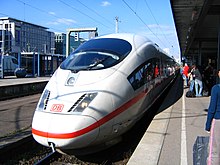
Fast inner-German connections
From main station Stuttgart Hauptbahnhof:
- to Cologne (Köln) 2hr 15min: (ICE via Mannheim, Frankfurt - travelling at up to 305 km/h)
- to Berlin 5hr 26min: (ICE via Göttingen - doesn't reach high speed on this track)
- to Frankfurt 1hr 26min. ( Frankfurt Airport 1hr 15min; ICE direct)
- to Hamburg 5hr 8 min: (ICE via Hannover)
- to Mannheim 38min (ICE)
- to Munich (München) 1hr 58min: (ICE via Ulm , Augsburg - not top speed)
- to Nuremberg 2hr 10min (IC)
- to Freiburg /Br. 2hr 16min (IC via Karlsruhe ).

Fast European connections
- to Salzburg (Austria): 4hr 5min (ICE)
- to Vienna (Austria): 6hr 32min (IC, EN; via Munich and Salzburg)
- to Strasbourg (France) 1hr 20min (TGV),
- to Paris (France): 3hr 11min (TGV via Strasbourg) or 4 hours (ICE, change in Mannheim)
- to Zurich (Switzerland): 2hr 48min (ICE via Schaffhausen)
- to Amsterdam (Netherlands): 5hr 1min (ICE via Köln, Arnhem)
- to Prague (Czech Republic): 8hr 32 min (ICE, EC)
- to Brussels (Belgium): 4hr 49min (ICE, IC, Thalys)
- UNESCO World Heritage Sites
- UNESCO tag to be fixed
- Has custom banner
- Has map markers
- Airport listing
- Articles with dead external links
- Has mapframe
- Listing with Wikipedia link but not Wikidata link
- Do listing with no coordinates
- Buy listing with no coordinates
- Articles with formerly dead external links
- Stuttgart Region
- All destination articles
- Guide cities
- Guide articles
- City articles
- Has Geo parameter
- Pages with maps
Navigation menu
The Top 11 Things to Do in Stuttgart, Germany
:max_bytes(150000):strip_icc():format(webp)/ebephoto-5b7352c3c9e77c005080d5ad.jpg)
Stuttgart is underrated, and it knows it. Perhaps that is why it doesn't try too hard and effortlessly puts out some of the best attractions in Germany for car lovers , architecture nerds, and beer buffs.
Stuttgart is the capital of Baden-Wuertemberg in southwest Germany. Almost 600,000 people live in the city, with 2.7 million in the greater Stuttgart area.
The city is about 200 km south of Frankfurt and 200 km northwest of Munich, and is well-connected to the rest of Germany , as well as greater Europe.
Stuttgart has its own airport (STR). It is connected to the city by S-Bahn for 3.40 euros. It's also quite easy to fly into nearby airports.
The city is also well connected by rail, with Deutsche Bahn (DB). If you prefer to drive in the car city of Germany, the state highways A8 (east-west) and A81 (north-south) connect here, called Stuttgarter Kreuz . Follow signs for Stuttgart Zentrum to get into the center.
Once within the city, Stuttgart's city center is easy to travel by foot, but there is also excellent public transportation consisting of U-Bahn (subway), S-Bahn (local rail), and bus.
Indulge in Love of the Car
TripSavvy / Christopher Larson
Stuttgart is a car city. The first petrol-powered automobile was created here in 1886 and the city is still home to two of the greatest car brands in the world, Mercedes and Porsche. Both have a world-class car museum in the city.
Mercedes-Benz Museum
The famed Mercedes-Benz brand is celebrated in this temple to the car. It has a unique cloverleaf architecture of three overlapping circles with a triangular atrium in the center in the shape of a Wankel engine.
The museum holds more than 160 cars from the invention of the automobile to the slickest new design. A free audio tour takes reverent fans through the museum and the storied history of Mercedes-Benz.
If you want to see the car under construction, guided tours of Sindelfingen plant are available.
Porsche Museum
Around 900,000 people visit this museum every year. It contains 80 exhibits of rare Porsche. World-famous autos like the 356, 550, 911 and 917 are on display. Over 90 percent of the historic vehicles are still operating and frequently take to the road as a “mobile museum” at race events and presentations worldwide.
Film footage and mobile audio guides add to the experience with special attractions for children visiting the museum. The museum is also the starting point for factory tours .
Party Like It's Oktoberfest
Twice a year, Stuttgart's festival grounds fire up the riesenrad (Ferris Wheel) and beer tents.
Cannstatter Volksfest (Stuttgart Beer Festival) and Stuttgarter Frühlingsfest(Stuttgart's Spring Festival) happen in the fall and spring , respectively. The fall festival began in 1818 as a harvest festival and resembles its more famous big brother . The Spring Festival only began about 80 years ago, but is actually the largest of its kind with 1.5 million visitors each year. At both events there are well-respected regional brews, mountains of delicious German food, traditional costumes, and endless merriment .
Relax Like the Royals
Schlossplatz is a central square, named for the the massive Neues Schloss (New Palace) that surrounds it. The palace was built in the early 1800s in the Baroque style. Kings have been replaced by bureaucrats as it is now the seat of state government. Tours are only available by special arrangement, but the best part is just luxuriating in this tranquil environment.
Also on Schlossplatz is Altes Schloss , the Old Castle. A castle has been on this site since the 10th century with multiple renovations, periods of destruction and rebuilds. The current structure is from 1553 and is home to Württemberg Landesmuseum . The museum holds fine medieval art, mechanics, and the Württemberg crown jewels. Plus, some of the royals never left. The south wing is the site of the 16th-century palace church with tombs of famous former residents.
Experience Library Chic
This white cathedral to the written word is a destination for library lovers and Stuttgart citizens. Stuttgart's public library has an impressive modern design with features like solar power glass roof, sliding slat windows to prevent glare, wrap-around balcony, and rooftop terrace. All of this is wrapped around an empty central section called the "Heart". The space is also used for events, and it's fit for the hottest fetes in the city. There is a total of 500,000 media units available for public use. Visitors can use the sound studio, browse the music section (with LPs), use notation software, play on the children's floor, make use of the library in the middle of the night (cubby system open 24 hours), and even check out pieces of art. The charity-run Café LesBar provides refreshments for the body once the mind is sated.
Check Out the View From the World's First Television Tower
Fernsehturm Stuttgart (TV Tower) is from the 1950s and dominates the Stuttgart skyline at 217 meters high. Once controversial in its design (and cost), it has become the main model for television towers for around the world and the beloved symbol of the city.
While it usually blends into the scenery of the surrounding woods, visitors to the tower can admire the city from a beautiful new angle . Located on the Hoher Bopser , visitors can see everything from the Black Forest to vineyards to the Swabian Jura (Swabian Alps).
Study Up on the Pig
Germany has some of the best museums in the world. It also has some of the weirdest. Stuttgart is the proud home of one of these museums.
Stuttgart's Schweinemuseum is the largest pig museum in the world. Housed in a former slaughterhouse, there are over 40,000 pig artifacts here in 25 themed rooms from piggy banks to the golden pig room.
If all that learning makes you hungry, there is a delicious restaurant on the ground floor that serves up the pork.
Explore one of Germany's Largest Baroque Palaces
TripSavvy / Christopher Larson
Ludwigsburg Palace is located just 20 minutes from the city center and is one of the largest Baroque palaces in Germany.
There is an impressive marble hall, baroque gallery, ceramics museum, and even an interactive area for kids. Outside, visitors can walk the grounds for free and admire the grounds and lake.
In the fall, take part in the palace's silly side with the Ludwigsburg Pumpkin Festival . One of the largest pumpkin festivals in the world, thousands of pumpkins are used for decoration, weighed in for a europe-wide competition, and some massive pumpkins are even used to in a boat race. Another special event is the annual Christmas market.
Stuttgart is actually one of the greenest cities in Germany with many parks breaking up the urban areas, and vineyards surrounding the city.
Höhenpark Killesberg (Killesberg Park), opened in 1939 as part of a horticultural show, is a premiere park in the city. Over 100 acres of flowers, meandering gardens and open space offer a break from city living. Sunbathe on the lawn, or admire the impressive Killesbergturm (Killesberg Tower). This 40-meter-tall observation tower makes use of cables to provide for a spectacular view of the park.
To see all that the park holds, Killesberg Railway takes visitors on a 2,294 metre (7,527.4-foot) loop around the park during the summer. Two of the historic engines are powered by diesel and two by steam, making for an epic journey in either instance.
In July, Lichterfest Stuttgart lights up the park with thousands of lanterns for a magical experience. About 38,500 visitors participate each year.
Eat Your Weight in Spätzle
Other Germans can be snarky about Swabia (a cultural region of southwest Germany with its own history and dialect), but everyone loves the Swabian national dish— Spätzle (noodles). It is served throughout the country, but absolutely must be eaten in Stuttgart.
Spätzle are good with practically everything, from cheese and onion to sauerkraut, and bacon, but a particularly Swabian version is Schwäbische Linsen mit Spätzle (Swabian noodles with lentils).
Another typical Swabian dish is Maultaschen , pillow-like dough pockets filled with spinach, meat or cheese. They somewhat resemble Italian ravioli with a different flavor profile and are eaten in a meaty broth or served as the main course.
While everywhere will serve this regional staples, Stuttgarter Stäffele in Stuttgart is highly recommended for its traditional fare and atmosphere.
Admire the Work of an Architectual Legend
Seventeen projects by architect Le Corbusier were inducted into the list of UNESCO World Heritage sites , and one of those is in Stuttgart.
The Weissenhof Estate is a pioneering and influential housing development built in 1927 for an exhibition by the Werkbund , a group of leading international architects. Eleven of the original buildings remain and are currently occupied. There is also the Weissenhof Museum within Le Corbusier's home.
Sleep in a Car
If your car mania isn't satisfied by the museums, the V8 Hotel within the Motorworld complex centers you sleeping hours on the automobile. It features 34 themed rooms with vintage cars, racing gear and even a drive-through cinema room. The highlight are the rooms where the bed is cleverly fit into the automobile, meaning you can steer your dreams from the driver's seat. For example, check out the luxury Mercedes suite .
(And if you want a more traditional room near the epicenter of cars, they have that too.)
The Top 23 Things to Do in Munich
Nymphenburg Palace: The Complete Guide
The Best UNESCO Sites in Germany
Your Trip to Frankfurt: The Complete Guide
Your Trip to Munich: The Complete Guide
Your Trip to Berlin: The Complete Guide
The 7 Best Islands to Visit in Germany
10 Best Cities to Visit in Germany
15 Best Castles and Palaces in Germany
Regensburg: Planning Your Trip
The Top Places to Visit in the South of Germany
15 Fun Things to Do in Dusseldorf, Germany
Festivals in Germany in October
The Best Spas in Germany
48 Hours in Munich: The Ultimate Itinerary
Best Time to Visit Germany
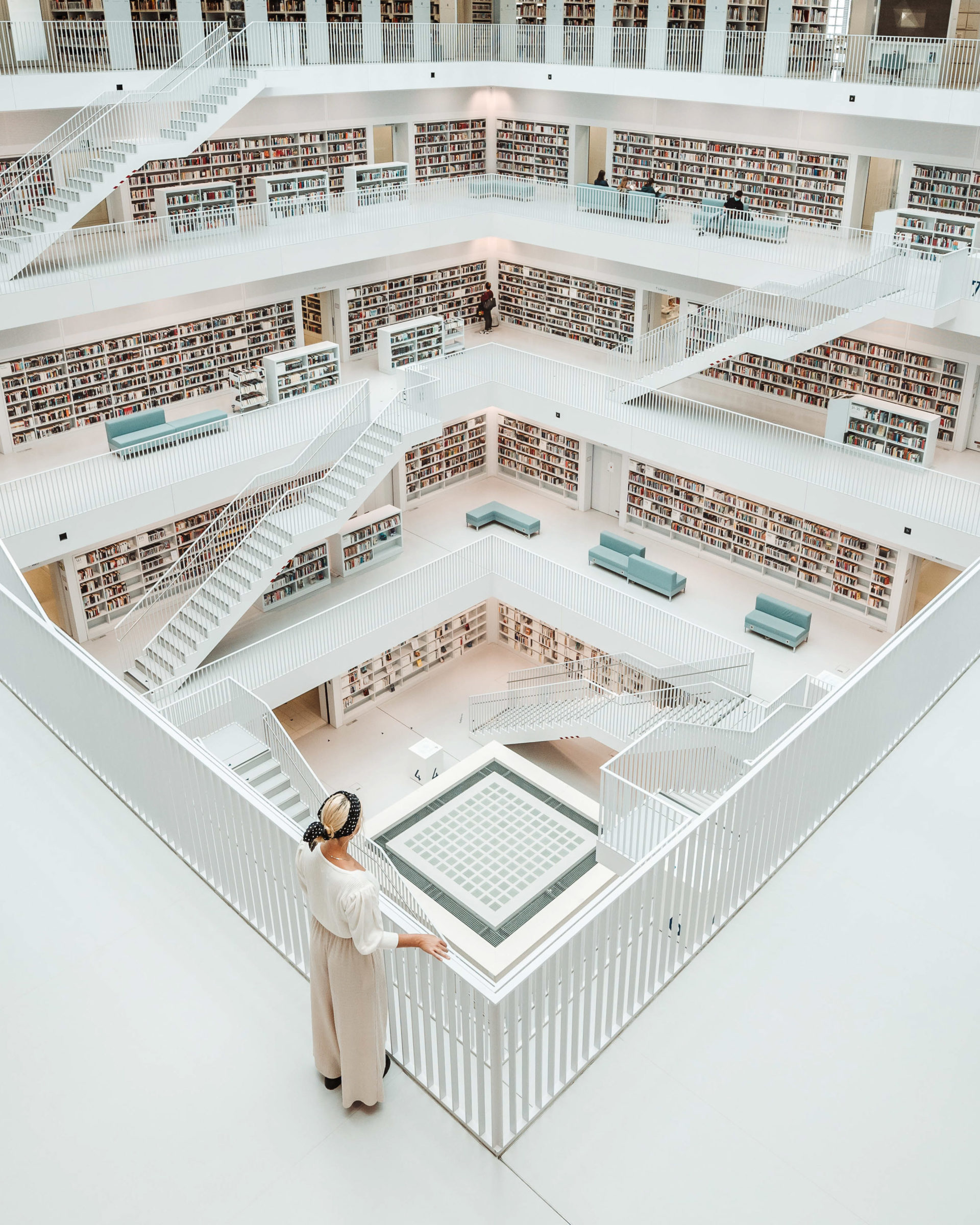
October 6, 2021
Stuttgart is one of those underrated travel destinations that will surprise you the moment you arrive. There’s plenty to do here – from the incredible shopping to the delicious foods, to the Mercedes-Benz museum… let’s just say, you’ll never be bored! The city is best known for its cars, and is a top tourist destination for auto enthusiasts around the world. But, you’ll quickly see there is so much more to this historic city. We had a fantastic time in Stuttgart, and we can’t wait to go back! Here’s our Stuttgart Travel Guide, which will give you the low down on where to eat, stay, and see.
Hotel Schwanen Metzingen
We started our trip off by staying in Hotel Schwanen in Metzingen, Germany. This hotel is the type of place that makes you feel right at home, even when you are miles away. It has a sense of familiarity and coziness that make it a great place to relax and unwind. It’s a family-owned hotel, with warm, welcoming staff and beautifully outfitted rooms. What sets this place apart, is the breakfast menu! The food is incredible, and the dinner menu is great too.

Hotel EmiLu Stuttgart
After a wonderful stay at Hotel Schwanen, we moved onto Hotel EmiLu located in the centre of Stuttgart. Because of the great location, this is the perfect starting point to explore the city. This hotel is brand new, so you can expect fresh, ultra-modern décor. The rooms are beautifully designed to maximize space and comfort, with incredible attention to detail. Every piece from the artwork to the furnishings was perfectly curated with this hotel. The hotel restaurant, Fritz, serves all day breakfast, and the menu is great. Even if you aren’t staying at the hotel, you can still check out the restaurant as it’s definitely worth a visit. Try the Avo toast and pancakes – so good!

Hotel V8 Stuttgart
This is one of the most unique hotels we’ve stayed at. The entire hotel is car-themed, which is perfectly fitting for a city like Stuttgart. Our favourite part of the room was the details – they had car shaped soaps, a Mercedes-Benz table, car shaped chocolate, and even car-bed! Staying at the hotel is an experience in and of itself, so if you’re a car fanatic or you enjoy unique stays, you must check out Hotel V8 in Stuttgart. We enjoyed a beautiful lunch at Ristorante da Signora which is directly next to the V8 hotel. It’s the perfect place to stop in for a glass of wine and a delicious meal – the food is good, and the décor is incredible! Like a museum, there is so much to see in this hotel.

OutletCity Metzingen Shopping
If you’re looking for the perfect outfit for every occasion, OutletCity Metzingen should definitely be on your itinerary. There are so many amazing brands here and it’s the largest outlet in Europe! Shoppers come from all over the world to do some serious shopping as there are over 130 premium and luxury brands here. Fun fact – Hugo Boss originated here. In 2021 alone, 20 new brands opened including Babor, Hunkemöller, Woolrich, Dorothee Schuhmacher, L’Occitane, Haribo, Bahlsen, Longchamp, and Skechersluxury. You could easily spend the entire day here, and still want to come back for more. Whether you’re shopping for bags, shoes, high-fashion or leisurewear… you will certainly find an amazing selection here. I think we spent the whole day in fitting rooms (check out our story highlights here if you missed it).

There are many ways to access OutletCity if you are travelling from out of town. You can buy a return ticket for €10.00 and travel in on a shuttle bus from Stuttgart. This service is available every Monday, Thursday, Friday and Saturday. Another easy way is by train. From Stuttgart, there is a train directly to Metzingen every 40 minutes. From there, it’s just a short walk to OutletCity.
When you visit, use code “YourPassportOutletCity” for a VIP Shopping Pass via Outletcity app* (valid until December 31, 2021).

Metzingen City
Metzingen is the perfect year-round destination if you’re visiting Stuttgart, as it’s only 30km away and makes the perfect day trip! In the summer, visit the chain carousel or take part in many of the different regional excursions. There is even a rollercoaster here if you’re up for a thrill or a little adventure! In the winter, there are adorable Christmas Markets and an ice rink – the perfect idea for a romantic date night! There is also a wine museum on Kelternplatz, where you can take part in a magnificent wine-tasting experience. We ate at L’Osteria Metzingen, a delicious restaurant known for large portions and the most amazing pizzas. After dinner, stop off at Amorino ice cream parlour for a sweet treat!

Mercedes Museum
This guided tour in Stuttgart has over 1500 exhibits expanding over 9 floors! It’s massive, and there is so much to see! There is an exhibition called “Mobility of the Future”, that you can tour through. After wandering through the museum, head over to the museum shop. There is a beautiful Luxury and Lifestyle area featuring high-quality bags and watches. For lunch, there’s a self-service restaurant called “Bertha´s Restaurant” so you can refuel for the day!

Porsche Museum
Another great stop during your trip to Stuttgart, is the Porche Museum . This museum is truly a car-lovers dream, featuring over 100 cars and more than 200 small exhibits.

E. Breuninger
The E. Breuninger flagship store is located in Stuttgart and is a great way to spend an afternoon! With shopping for both men, women, and even children, it’s a great place to get your shopping fix. The store has two restaurants inside if you get hungry from all that shopping! E. Breunginer has bespoke tailoring, salon services, and even a shuttle.

Palace Park & Square Stuttgart
After all that shopping and museum hopping, it’s nice to spend some time outdoors. Palace Park & Square in Stuttgart is a great place to take a picnic, enjoy an outdoor concert, or just wander the grounds. It’s located right in the centre of Stuttgart, making it easy to access from any part of the city. Grab a coffee and do some walking, taking in the many beautiful sights. In the middle of Palace Square, you will find the Jubilee Column (1841), surmounted by Condordia (a.k.a goddess of harmony). Behind her is the New Palace, which has the most magnificent architecture. Since it took over 61 years to construct, the architecture is a mix of Baroque, Classicism, Rococo and Empire design.

City Library
Yes, it’s a library, but it’s so much more than that. If you are into design and architecture, you should pay a visit to the city library in Stuttgart. It’s one of the most modern libraries in all of Europe, and the design is simply incredible. It was designed by Korean architect Eun Young Yi, and is over 18,000 m² in size, so it’s definitely not your average library! There is even a roof top terrace where you can enjoy a refreshment or cappuccino with beautiful views of the city.

TV Tower – Fernsehturm
For some of the most beautiful views of the city, visit the Fernsehturm TV Tower. At over 150 meters high, you’ll have a 360 degree-birds-eye view of the city that will take your breath away. It’s the first TV Tower in the world, so you’ll also enjoy a piece of history while you’re there!

Killesberg Tower and Gardens
The Killesberg Tower is an incredible 40-meter-high observation tower located in the Killesberg Park in Stuttgart, Germany. It’s often described as an “engineering masterpiece” and provides incredible city views.

Enjoy Sunset Views
Who doesn’t love a good sunset? The best spots to catch sundown is Teehaus in Weissenburgpark, Santiago de Chile Square or Schloss Solitude. Teehaus is beautiful restaurant and outdoor café, surrounded by some of the most beautiful landscapes of the city. Relaxing on the terrace at sunset is one of the best ways to spend an evening in Stuttgart!

Landesmuseum Special Exhibition Fashion
If you are a fashion lover, this exhibit should definitely be on your itinerary! Regardless, this exhibition is entertaining and informative, even if you’re not the most fashionable! The exhibition walks you through fashion history from the 1950s to the present day. You can see the beautiful, unique designs of well-known designers such as Jean Paul Gaultier and Vivienne Westwood or classics by the fashion houses Chanel, Dior and Saint Laurent.
Art Museum
Take in some beautiful art at the Stuttgart Art Museum . You can book a guided tour, which will highlight the amazing exhibitions currently featured within the museum. This is the perfect way to spend an afternoon, especially as the days get chillier throughout the autumn and winter season.

Winegrowing Musem
Wine-lovers, you’re in luck – Stuttgart is home to the winegrowing museum , and it’s a fantastic way to spend an afternoon. The museum is an entertaining and informative exhibition that will teach you the winemaking practices of the professionals. You’ll get to view an old wine-press building and even try local wines in a wine tasting experience. You may even want to take a few bottles home with you to enjoy later!

Vintage Market in Tübingerstrasse
The vintage market in Tübingerstrasse is easily located from the centre of Stuttgart and is home to tons of one-of-a-kind pieces. You’ll come home with unique items you can’t find anywhere else, and have a great time roaming the market stalls.
Lichtenstein Castle
This historic castle is a breath-taking site and walking around the grounds feels like a living fairy-tale. Lichtenstein Castle is a Gothic Revival castle, and we highly recommend visiting if you plan to travel to the Stuttgart area. The castle was designed by Carl Alexander Heideloff and overlooks the Echaz valley near Honau, Reutlingen in the state of Baden-Württemberg. Guided tours take place every 20 minutes, or you can wander the grounds at your own pace.

There is no shortage of delicious foods in Stuttgart. We had so many amazing meals, we lost count! But, there are certainly some favourites that we recommend trying while you’re there.
Local Cuisine
Taste local Swabian cuisine at Weinstube Fröhlich or Weinstube Kachelofen. They are best known for their Maultaschen, Meatballs, and local Lemberger wine. Their homecooked food is hearty and delicious. The menus do change seasonally, as they use fresh locally sourced ingredients!

Romantic Dinner
For a romantic dinner, we recommend Restaurant Cube, which overlooks Schlossplatz. The setting is perfect for date-night and the food is amazing! You’ll enjoy phenomenal views of Stuttgart, as the restaurant walls are made entirely of glass! Another great date-night options is Speisenmeisterei, a beautiful restaurant that combines history, culture and tradition in a modern setting. You’ll love the fresh-cooked seafood and can choose from 3 course, 4 course or 5 course meals. Last but certainly night least, Restaurant Finch at the Waldhotel Degerloch, is a foodies dream! Expect a seasonally fresh, dynamic menu set in a cozy restored summer house (built in 1910!).

Grab and Go
For quick food options, Stuttgart Market Hall is a great place to start! Wander around the stalls and pick up some fresh local fruits. You’ll find local and international retailers, with a wide variety of organic foods to choose from. The sites and smells are an unforgettable experience, so arrive hungry!

Dinner with a View
An open air café with spectacular city views, Teahouse in Weißenburgpark is a fantastic spot for lunch or dinner! The terrace is relaxing and spending a sunny day with a cocktail looking out at the city views is an unforgettable experience.

Why not enjoy a picnic outside? It’s the perfect way to enjoy the weather and spend time outdoors. Grab a picnic basket at 1819 Bistro am Wirtemberg and pick a spot to sit down and enjoy! It’s conveniently located beside Grabkapelle, which is beautiful location to enjoy your picnic basket. We, however, took our picnic to Schloss Solitude which is also very tranquil with beautiful views. Click here to see the other popular picnic spots.

It’s important to find the best coffee shops when travelling – after all, who wants mediocre coffee? There were two coffee spots that really stood out to us in Stuttgart – Das Café Tatti (close to hotel EmiLu), or Misch Misch coffee . Both café options have a wide selection of coffees and teas and will provide a delicious cup of coffee or sweet treat!

Speaking of sweet treats, Bon Bon is a super cute candy shop located in Stuttgart city centre. If you have a sweet tooth this is the place to go! The candy selection is huge, and they have cute gift options too.
Marienplatz
Marienplatz is a local district full of trendy cafés and restaurants. Take a walk through the beautiful city streets and see what catches your eye. There are so many incredible restaurants here it’s impossible to name them all. Whether you’re in the mood for a cocktail, glass of wine or a 4-course meal, you’ll find something you fancy in Marienplatz.
For more cafés and restaurants options, click here .
GETTING AROUND
If you saw our Instagram stories, you probably already know that we rented a beautiful Mercedes C123 and convertible Mercedes R129 at the Mercedes Benz Museum. This was such an incredible experience and we had so much fun driving around the city! There’s something so special about a vintage Mercedes, and if you’re a car-lover, we highly recommend the experience.
Getting around Stuttgart by car is one of the best ways, as it gives you flexibility to travel around and see all that the city has to offer. It also makes day excursions a lot easier. Plus, the city is home to the Mercedes Benz Museum so, it only makes sense to take one for a spin!
If you’re tempted to experience one of these beautiful classic cars, we recommend booking a unique tour here .

HOW TO GET THERE
Stuttgart Airport is only 10km away from the city centre, making it easy to fly in for a quick getaway! From there, you can take a train, shuttle, or taxi directly into Stuttgart or to your hotel. If you’re traveling from outside of Europe, you may need to fly into Frankfurt (FRA) which is 147km away from Stuttgart. You can take a train in from Frankfurt, or rent a car from the airport and drive.
Stuttgart is truly a year-round destination, and that’s what we love about it! Whether you go in summer, winter, or sometime in between, there’s plenty to do! We are looking forward to coming back and enjoying the Christmas Markets one day, as they are known around the world. There are cultural events, festivities, and tons of activities to entertain throughout the year. If that’s not your thing, you can always head over for a quick shopping trip at OutletCity !

HOW MANY DAYS
With the many museums, parks, art exhibits, historic buildings and endless restaurants and cafés, there’s plenty to do in Stuttgart. We would recommend spending anywhere from 4 days to a week in Stuttgart, to give you ample time to experience all the city has to offer.
HOW EXPENSIVE
Stuttgart is reasonably priced, with varying accommodations and activities for every price point. There’s a range of hotels (and hostels) that can suit budget travelers, and more luxury accommodations if you’re looking to splurge! We found the restaurants to be well-priced and the overall quality of food was fantastic!
WHAT TO BRING
- Proper clothing: Stuttgart experiences all four seasons, from warm summer nights to cold winter mornings. You’ll want to dress appropriately for the weather.
- Comfortable shoes: We did so much walking while we were there. Make sure to bring a good pair of shoes!
- Camera: The sites and views are incredible, and you’ll want to capture as much as you can.
- Extra room in your luggage: The city is full of incredible shopping (such as OutletCity), so leave a bit of spare room in your suitcase!

For more recommendations from Stuttgart, click here . If you’re looking to discover more about Germany’s epic locations and experiences, check out this page . For the latest corona virus updates and restrictions, click here.
Want to save our Stuttgart travel guide for later? Click to Pin!

There are so many things you can do and enjoy in Stuttgart. What is the first thing on your bucket-list?
you may also like
The comments +.
Wonderful article about my hometown and amazing pictures. Well done and thank you for this lovely shout-out for Stuttgart. It always fills my heart with so much joy when someone sees Stuttgart in the same way I see it: A hidden gem with so much to explore. If you‘re interested in some insider tips and places where the locals go, check out my blog living-in-stuttgart.com And here comes my first insider tip: When you come back for the Christmas market make sure to visit at least one of our thermal baths! Stuttgart is the city in Europe with the second largest amount of natural mineral springs (19) after Budapest! Definitely worth a visit – especially in the cold winter months.
Leave a Reply Cancel reply
Your email address will not be published. Required fields are marked *
Save my name, email, and website in this browser for the next time I comment.
A Roadtrip in Germany: Travel Tips & Itinerary »
back to index, « where to stay in maldives – fushifaru, please, stay awhile.
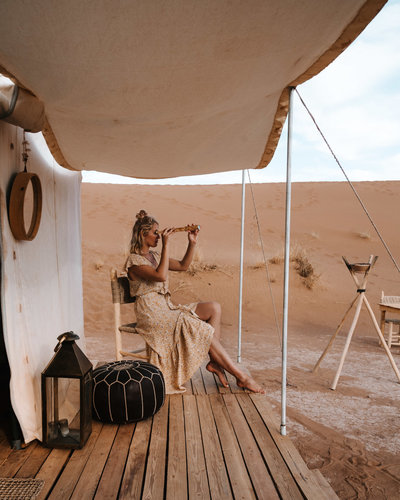
Photography
If you’d like to follow our adventures on Instagram, then click below to visit our profile.
Follow us on Instagram
Let's be friends on instagram, wait, don't go.

@YOUR_PASSPORT
Passage & passport, sign me up >.
For the exclusive tips, free resources and best tips for doing all things awesomely.
@YOUR_PASSAGE

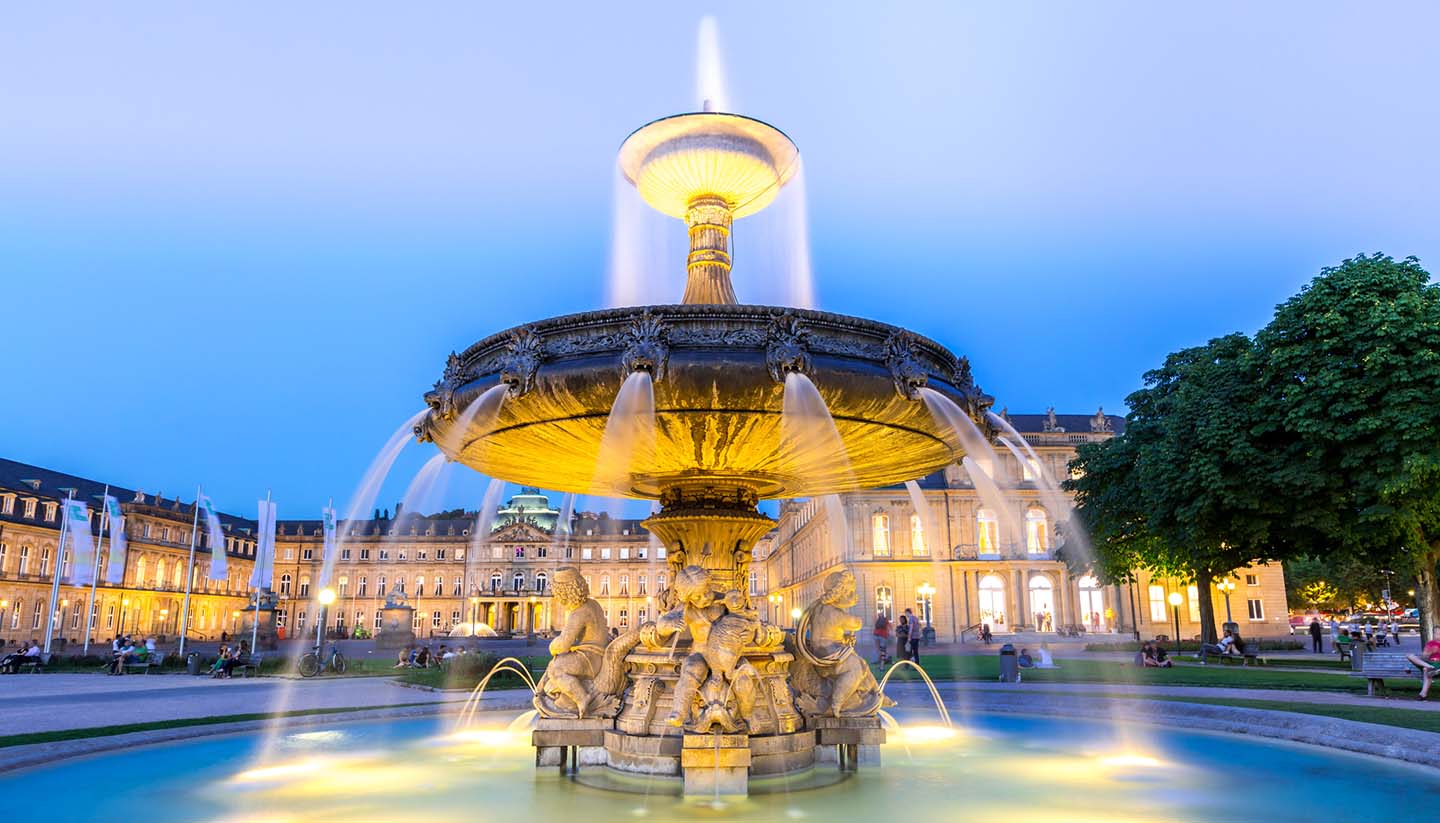
Local time Stuttgart
Introducing Stuttgart
About stuttgart.
- Weather / Best time to visit
- Images of Stuttgart
While you’re there
- Getting around
- Attractions, tours and tickets
- Things to see
- Things to do
- Restaurants
Plan your trip
- Travel to Stuttgart
Germany Information
- About Germany
- Passport & visa
- Public Holidays
- Money & duty free
- Food & drink
Book your flights
- Stuttgart Airport
Stuttgart Travel Guide
Slick, sophisticated and fun loving, Baden-Württemberg’s capital is a zingy modern city with a small-town soul. The locals might be known for their snappy dressing and their passion for fast cars (Mercedes Benz and Porsche both have headquarters here), but you’re just as likely to find them hiking in the surrounding Schwäbische Alb or relaxing in a hot mineral spring as you are living it up in an overpriced nightclub.
The city’s core was decimated by bombing raids during WWII and today the few remaining classical buildings are hemmed around by office blocks. Still, Stuttgart has a lively arts scene and is gradually establishing itself as a top destination for performing arts connoisseurs. World-class opera, ballet and live music performances run almost nightly, and tickets are priced to be affordable.
Good food, fine wine and revelry are integral to the Stuttgarter ethos. Traditional Swabian eateries serving scrumptious but artery-clogging cuisine rub shoulders with modern, Michelin-star restaurants and bustling farmers’ markets. Festivals run throughout the year and range from a vast September wine extravaganza to the food and music-focused Stuttgart Summer Festival. The nightlife scene raves on year-round, with the best bars and clubs focused around the lively Theodor-Heuss-Strasse.
Stuttgart has something of a south European feel, particularly over the summer months when people gravitate to the city’s green expanses. A string of parks and gardens dotted with beer gardens and restaurants slices through the central districts in an enormous ‘green U’, starting at the Schlossgarten and ending in Killesberg Park. If the two-hour ramble from one end of das Grüne U to the other doesn’t sate your enthusiasm for fresh air, the surrounding vine-laced hills are home to a scenic network of hiking and biking trails.
Relaxing in a natural hot spring is high on the list of must-do Stuttgart activities. The city’s Bad Canstatt district has some of the best mineral spas in Europe, and the rolling hills of the Stuttgarter Kessel are dotted with holistic treatment centres. Venture further afield to discover the Black Forest, the fairytale castles of Ludwigsburg and the stalactite-hung caves of the Schwäbische Alb.

Book Accommodation
Featured hotels, novum hotel boulevard stuttgart.
This medium-sized hotel offers great value for money. Several room types are available, including family accommodation. The Novum is situated in the heart of the city centre close to shops and attractions.
Der Zauberlehrling Design Hotel
Situated in the Bohnenviertel, this stylish design hotel is likely to appeal to people with a highly developed sense of aesthetic. The hotel has thirteen rooms and four suites spread across two buildings. The personalised service, attention to detail and ambiance of the hotel mean it is a fine place to relax.
Hotel Motel One
A mid-range chain hotel located close to Stuttgart's main railway station and handy for the main attractions if you don't want to pay top dollar, Hotel Motel One is of modern aspect and décor.
Hotel am Friedensplatz
This family run three-star property is located about 15 minutes' walk from the central station. It offers comfortable beds and the promise of a good night's sleep within easy reach of the city centre.
Hotel Ibis Stuttgart Centrum
The well known budget chain's product is familiar to most regular travellers, and this 104-room property is no exception. It's located handily in Marienplatz, and close to a choice of eateries should the hotel's bar snacks not be substantial enough.
This family-run hotel is located around 2.1km (1.3 miles) east of the city centre. The buffet-style breakfast offers travellers an opportunity to eat as much as they want. The rooms have an acceptable level of comfort and cleanliness.
© Columbus Travel Media Ltd. All rights reserved 2024
Book your individual trip , stress-free with local travel experts
Select Month
- roughguides.com
- baden-wurttemberg
- Travel guide
- Itineraries
- Local Experts
- Travel Advice
- Accommodation
Plan your tailor-made trip with a local expert
Book securely with money-back guarantee
Travel stress-free with local assistance and 24/7 support
World-leading car-town it may be, but STUTTGART is certainly no Detroit. Instead the Baden-Württemberg capital is surprisingly small (population 600,000), laidback and leafy. Its idyllic setting in the palm of a valley – where vineyards thrive – and its multitude of parks often seem to shape it more than the presence of industrial giants. Consequently, you’re not likely to spend much time in its centre: many of Stuttgart’s best sights are spread across and beyond the hills that surround the city where you can find good hikes among vineyards and between Stuttgart’s celebrated rustic wine bars: Weinstuben .
Baden-Württemberg’s auto pioneers
Mercedes-benz-museum, stuttgart festivals, stuttgart weinstuben.
The attractions on Stuttgart’s southern fringes include the Zahnradbahn , an aged rack-railway, that leads to a Fernsehturm (TV tower), for expansive city views. On the western side of the city stands eighteenth-century Schloss Solitude , while to the north is Höhenpark Killesberg , of interest for the Weissenhofsiedlung collection of Bauhaus buildings. Just east of here, and alongside the Neckar River is Rosensteinpark , where natural history is given a thorough treatment, from its paleontological beginnings in the Museum am Löwentor to a fine botanic garden and zoo. On the opposite bank of the Neckar lies Bad Cannstatt , an old spa-town which became part of Stuttgart in 1905, but which still feels distinct. Though traditionally known for its mineral baths, these days it’s as famous as the birthplace of the car and Mercedes , which has a terrific museum here. An ex-employee of that company spawned Porsche nearby, and the achievements of that brand are celebrated in the Porsche Museum 9km to the north of Stuttgart’s centre. All these attractions are readily reachable on Stuttgart’s excellent public transport system.
Brief history
The town – and its name – has its origins in a stud farm, or “Stutengarten” established in 950 AD and a black stallion still graces the city’s heraldic crest. It developed as a trade centre and in 1311 became the seat of the Württemberg family. However, the city only really took regional control once Napoleon made Württemberg a kingdom and Stuttgart its capital in 1805. Eighty years later Daimler and Benz mapped out Stuttgart’s future as a motor city. The town’s industrial prowess was duly punished by World War II when bombs rained on the Altstadt.
The rebuilt town feels rather bereft of history, though there’s no shortage of high culture in its heavyweight museums, particularly the Staatsgalerie ’s art collections and the archeological treasures of Landesmuseum Württemberg .
Travel ideas for Germany, created by local experts
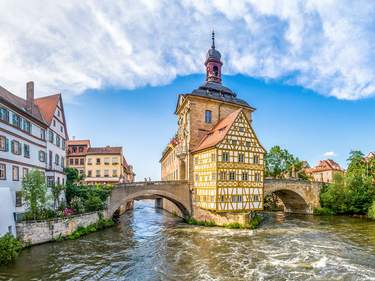
9 days / from 2263 USD
A self drive exploration of UNESCO Sites in Southern Germany
Explore UNESCO World Heritage Sites across different German states. This self drive trip allows you to design your own days with recommendations stated for each day.
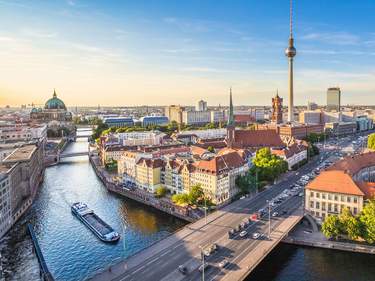
7 days / from 2905 USD
Explore Berlin and Potsdam in depth
The German capital Berlin has plenty to offer: from historical sites to world-class museums and a vibrant nightlife. Enjoy this private tour to explore a wide range of activities in Berlin and Potsdam, including several UNESCO World Heritage Sites.
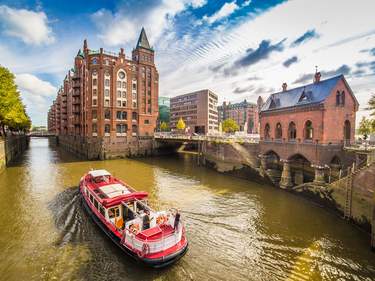
8 days / from 1501 USD
Explore Northern Germany on Your Own
From Bremen to Stralsund - Northern Germany offers plenty of gems to explore. With well-developed public transportation links, this itinerary is suited for everyone wanting to explore on their own - getting lost on the cobble-stoned streets of many UNESCO World Heritage Highlights.
_listing_1640546826392.jpeg)
15 days / from 6264 USD
Capitals of Europe - Berlin, Prague, Vienna and more
This trip is ideal for all city & culture lovers: the Reichstag in Berlin, the castle in Prague, historical Cesky Krumlov, St Stephen's Cathedral in Vienna, the fortress above Salzburg and Schloss Neuschwanstein near Munich - these are just some of the highlights of this incredible roundup trip.
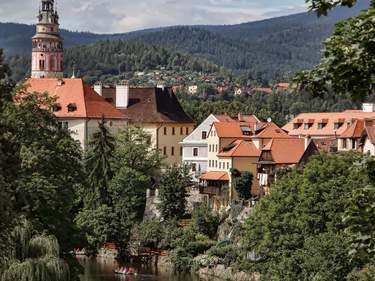
11 days / from 4212 USD
Castles across Austria and Czechia
Austria and Czechia are home to some of the world's most beautiful architecture and culture gems, such as Schloss Schönbrunn in Vienna, Prague castle, the fortress above Salzburg and many more. Finish your tour with a visit to Schloss Neuschwanstein before flying out of Munich.
_listing_1640551981693.jpeg)
12 days / from 4536 USD
Best of Germany
Germany has a lot to offer to visitors: history buffs will enjoy guided tours in Berlin and Dresden, children (and those at heart) will marvel at Schloss Neuschwanstein, scenery lovers will appreciate Rothenburg and the Black Forest. This trip truly has something for everybody!
Mechanical engineer Gottlieb Daimler left formal employment in 1880, and started tinkering in his Bad Cannstatt workshop in 1882. His quest to produce a light, fast, internal combustion engine was done so secretively that police raided his workshop for money-counterfeiting on the tip-off of a gardener. In 1883, his single-cylinder four-stroke shattered the repose of Kurhaus spa-goers and by 1885 his patented 264cc “Grandfather Clock” powered a motorbike. A year later the world’s first motorboat, the Neckar , chugged upriver and his motorized carriage terrorized horses. Daimler moved to a factory on Seelberg in July 1887.
Meanwhile, unaware of the goings-on in Daimler’s shed, Karl Benz in Mannheim was blazing his own motor trail to found Benz & Cie in 1883, the same year as Daimler. The world’s two oldest motor manufacturers eventually united in June 1926 as Daimler-Benz long after Daimler had died and Benz retired. The Mercedes name was introduced in 1902 to honour the daughter of early Austrian dealer Emil Jellinek.
Housed in a futuristic landmark building on the banks of the Neckar, 4km northeast of the city centre, the Mercedes-Benz-Museum is chock-full of 110 years of immaculate motors. It starts with Daimler’s pioneering motorbike – a wooden bone-shaker with a horse’s saddle – and beside it is the one-cylinder motor-tricycle Motorwagen and motorized carriage Motorkutsche; Benz and Daimler created them independently in 1886, both capable of a not-so-giddy 16kmph. Benz just pipped Daimler to produce the world’s first car.
Another trail-blazer is the robust Benz Vélo, the world’s first production car, for which twelve hundred of the moneyed elite parted with 20,000 gold Marks. A racy 500K Special Roadster in preening pillarbox red begs for a Hollywood Thirties starlet, but it’s the racers that truly quicken the pulse, no more so than the legendary Silver Arrows of the 1920s and 1930s; a cinema shows the sleek machines in action. Just as eye-catching are a pair of experimental record-breakers that look far more futuristic than their dates suggest: in the W125, Rudolf Caracciola clocked up 432.7km per hour on the Frankfurt–Darmstadt Autobahn in 1938 (no one’s been faster on a public highway since); and six-wheeler sci-fi vision T80 was powered by an aeroplane engine to 650km per hour in 1939, though World War II killed the project.
Stuttgart really livens up in April, during the three-week Stuttgarter Frühlingsfest which salutes spring with beer and grilled sausages; in August, when the open-air Sommerfest takes over the Schlossplatz with live music; and during the Stuttgarter Weindorf later in the same month. Stuttgart also hosts Germany’s largest Christmas Market in December, but the town’s really big event is the late September, sixteen-day Cannstatter Volksfest , a sizeable local equivalent to Munich’s Oktoberfest, that’s as yet undiscovered by invading armies of tourists.
Cradled in a valley of five hundred vineyards – some of which spill right into the city – Stuttgart naturally enjoys its wine. Local vintners produce a number of whites, including an elegant Riesling, as well as the popular, full-bodied red Trollinger. Don’t be surprised if you haven’t heard of Stuttgart’s wines though: wine consumption here is twice the national average so local supplies only just meet the demand and few wines leave the valley. So, while Frankfurt has its cider taverns and Munich its beer halls, Stuttgart’s unique drinking dens are its Weinstuben or wine bars – a few of which are listed here. These tend to open evenings only, rarely on a Sunday, and are usually unpretentious rustic places. All serve solid and inexpensive Swabian dishes, which invariably include doughy Spätzle (noodles) and Maultaschen , the local oversized ravioli. More homey still are Besenwirtschaften , temporary wine-bars that appear in the front rooms of people’s houses to serve the season’s vintage with home-cooking, including potato soup ( Kartoffelsuppe ), noodle and beef stew ( Gaisburger Marsch ), or a Schlachtplatte , a meat feast served with vegetables. These places traditionally announce themselves with a broom hung outside and their locations vary from year to year. They’re all listed in the guide Stuttgarter Weine from the tourist office, which is also a good place to pick up information on the Stuttgarter Weinwanderweg (stuttgarter-weinwanderweg.de), the hiking routes that circle through local vineyards and past many Besenwirtschaften .
Stuttgart’s other great wine-initiative is the Stuttgarter Weindorf , when during the last weekend in August the Marktplatz and Schillerplatz fill with wine buffs sampling hundreds of regional tipples. The year’s vintages are on sale, and it’s a great chance to pick up rarer wines. A similar event is the Fellbacher Herbst on the second weekend in October, in Fellback, just east of Bad Cannstatt.
Kachelofen Eberhardstr. 10, 0711 24 23 78. A bastion of beams and lacy tablecloths among the hip bars of Hans-im-Gluck south of Marktplatz. It’s the Weinstube favoured by Stuttgart’s smarter set and serves hearty regional food as four-course set meals (€32–42). Mon–Thurs noon–midnight, Fri & Sat noon–1am.
Klösterle Marktstr. 71, Bad Cannstatt, 0711 56 89 62. Swabian specials, including delicious sausage salad and good Maultaschen (mains €10–20), in the rustic interior of a wonky half-timbered building from 1463, which looks like an incongruous film-set among the modern flats. Mon–Fri 5pm–midnight, Sat & Sun 11.30am–midnight.
Schnellenturm Weberstr. 72, 0711 236 48 88. Schwäbischer Sauerbraten comes in a rich sauce in Duke Christopher’s 1564 defence tower transformed into a cosy half-timbered nest. Quality and prices are a little above the average Weinstube fare – mains average about €15. Mon–Sat 5pm–midnight.
Stetter Rosenstr. 32, 0711 24 01 63. Wine connoisseurs’ heaven – at the last count, over 575 wines, nearly 200 regional, were on the list of this Bohnenviertel Weinstube . There’s no snobbery at this family-run place though, just locals exchanging news and tucking into spicy bean soup or rich beef goulash. The lentil soup with sausages (€6) is outstanding. Mon–Fri 3–11pm, Sat 11am–3pm.
Discover more places in Germany

- Travel Guide Morocco
- Travel Guide Namibia
- Travel Guide South Africa
- Travel Guide China
- Travel Guide India
- Travel Guide Indonesia
- Travel Guide Japan
- Travel Guide Laos
- Travel Guide Malaysia
- Travel Guide Myanmar (Burma)
- Travel Guide Nepal
- Travel Guide Philippines
- Travel Guide Singapore
- Travel Guide South Korea
- Travel Guide Sri Lanka
- Travel Guide Taiwan
- Travel Guide Thailand
- Travel Guide Australia
- Travel Guide Fiji
- Travel Guide New Zealand
- Travel Guide Belize
- Costa Rica Travel Guide
- Travel Guide Cuba
- Travel Guide Guatemala
- Travel Guide Honduras
- Travel Guide Jamaica
- Travel Guide Nicaragua
- Travel Guide Panama
- Travel Guide Puerto Rico
- Travel Guide Trinidad and Tobago
- Travel Guide Albania
- Travel Guide Austria
- Travel Guide Belgium
- Travel Guide Bosnia-Herzegovina
- Travel Guide Bulgaria
- Travel Guide Cyprus
- Travel Guide Czechia (Czech Republic)
- Travel Guide Denmark
- Travel Guide England
- Travel Guide Estonia
- Travel Guide Finland
- Travel Guide France
- Travel Guide Germany
- Travel Guide Greece
- Travel Guide Hungary
- Iceland Travel Guide
The Rough Guides to Germany and related travel guides
In-depth, easy-to-use travel guides filled with expert advice.

Find even more inspiration here

Planning your own trip? Prepare for your trip
Use Rough Guides' trusted partners for great rates
written by Rough Guides Editors
updated 27.04.2021
Ready to travel and discover Germany?
Get support from our local experts for stress-free planning & worry-free travels.
- Travel advice
- Where to stay

EURO 2024 play-offs recap

Who has qualified for EURO?

Euro 2024: Guide to the 10 stadiums across Germany and their games
The Associated Press
June 10, 2024, 5:35 AM
- Share This:
- share on facebook
- share on threads
- share on linkedin
- share on email
DUESSELDORF, Germany (AP) — The European Championship in Germany is all about tried and tested stadiums with a rich soccer history.
Unlike at some recent World Cups, there’s been no rush to finish stadiums on time. All but one of Germany’s 10 venues hosted games at the 2006 World Cup and none have undergone major changes.
All capacities are given in the all-seated configuration used for Euro 2024, meaning the figure is typically lower than for club games where many fans can stand.
Here is a guide to the 10 stadiums and all of the games taking place at each:
OLYMPIASTADION
City: Berlin
Capacity for Euro 2024: 71,000
Games: Spain vs. Croatia (June 15), Poland vs. Austria (June 21), Netherlands vs. Austria (June 25), one game in the round of 16 (June 29), one quarterfinal game (July 6), the final (July 14).
Built for the 1936 Olympics under Nazi rule, the Olympiastadion was renovated to host the 2006 World Cup final and also held the Champions League final in 2015.
At club level, it’s the home of the German Cup final each season and also hosts home games for second-division Hertha Berlin.
The Olympiastadion had a cameo appearance in this season’s Champions League when Union Berlin trekked westward from its home in East Berlin to host games. The idea was for more fans to be able to watch, though not all of them were happy about playing at the home of their cross-town rival.
MUNICH FOOTBALL ARENA
City: Munich
Capacity for Euro 2024: 66,000
Games: Germany vs. Scotland (June 14), Romania vs. Ukraine (June 17), Slovenia vs. Serbia (June 20), Denmark vs. Serbia (June 25), one game in the round of 16 (July 2), one semifinal game (July 9).
Better known as the Allianz Arena for Bayern Munich games — stadium sponsorships are banished for the tournament — this stadium will host the opening game of Euro 2024 as Germany takes on Scotland on June 14.
It was home to the German league champion 11 years running until Bayer Leverkusen finally ended Bayern Munich’s reign this season. The stadium opened in 2005 and was originally shared by Bayern and its local rival 1860 Munich, but 1860 sold its share due to financial problems, moved out and now plays in the third division. The stadium’s location on the outskirts of Munich can mean long queues for trains back into town.
The arena branched out when it hosted Germany’s first regular-season NFL game in 2022 when the Tampa Bay Buccaneers beat the Seattle Seahawks 21-16. It’s due to host a Carolina Panthers game later this year.
BVB STADION DORTMUND
City: Dortmund
Capacity for Euro 2024: 62,000
Games: Italy vs. Albania (June 15), Turkey vs. Georgia (June 18), Turkey vs. Portugal (June 21), France vs. Poland (June 25), one game in the round of 16 (June 29), one semifinal game (July 10).
The fans of Borussia Dortmund — BVB for short — know it as the Westfalenstadion, the cavernous beating heart of their club for over 50 years, but it’s also called Signal Iduna Park due to a long-running sponsorship deal, which doesn’t apply during the European Championship.
Dortmund, which lost this year’s Champions League final to Real Madrid, is famed for its loud “Yellow Wall” of fans in a standing section, but the stadium is going all-seater for Euro 2024, as part of changes that bring down its capacity by nearly 20,000 from the 81,365 who can pack in for club games. Having one of Europe’s biggest and loudest stadiums is a point of pride in Dortmund, an industrial city in western Germany’s Ruhr region.
STUTTGART ARENA
City: Stuttgart
Capacity for Euro 2024: 51,000
Games: Slovenia vs. Denmark (June 16), Germany vs. Hungary (June 19), Scotland vs. Hungary (June 23), Ukraine vs. Belgium (June 26), one game in the quarterfinals (July 5).
The venue’s historic name is the Neckarstadion after the river that flows through Stuttgart. Under that name, it hosted the 1988 European Cup final as Dutch club PSV Eindhoven beat Benfica of Portugal on penalties.
Since then, it’s had a string of different names due to sponsorship details, most recently as the MHPArena for this season as host club Stuttgart finished second in the Bundesliga to qualify for the Champions League.
VOLKSPARKSTADION
City: Hamburg
Capacity for Euro 2024: 49,000
Games: Poland vs. Netherlands (June 16), Croatia vs. Albania (June 19), Georgia vs. Czech Republic (June 22), Czech Republic vs. Turkey (June 26), one quarterfinal game (July 5).
The stadium sits in a large park and dates back nearly a century to 1925, though it was fully rebuilt in the 1950s and then again from 1998 through 2000.
Hamburger SV plays at the stadium and has been in the second division this season. Ukrainian club Shakhtar Donetsk moved in earlier this season for three home Champions League games since it was unable to play at home because of the Russian invasion. That was the first time the Volksparkstadion had hosted European games since 2010 and a useful practice run for Euro 2024.
DUESSELDORF ARENA
City: Duesseldorf
Capacity for Euro 2024: 47,000
Games: Austria vs. France (June 17), Slovakia vs. Ukraine (June 21), Albania vs. Spain (June 24), one game in the round of 16 (July 1), one quarterfinal game (July 6).
The only Euro 2024 venue which wasn’t also used when Germany hosted the 2006 World Cup, this gray, boxy venue last year hosted the Invictus Games , a sports event for wounded, injured and ill service personnel and veterans which was founded by Britain’s Prince Harry.
The stadium was an unsuccessful candidate for the NFL’s expansion into Germany and was briefly converted into a vaccination center for the local area during the COVID-19 pandemic. The last club game at the stadium this season brought heartbreak for local fans as Fortuna Duesseldorf threw away a 3-0 lead and missed out on promotion to the Bundesliga.
COLOGNE STADIUM
City: Cologne
Capacity for Euro 2024: 43,000
Games: Hungary vs. Switzerland (June 15), Scotland vs. Switzerland (June 19), Belgium vs. Romania (June 22), England vs. Slovenia (June 25), one game in the round of 16 (June 30).
Historically, it’s been known as Muengersdorfer Stadion after the district of Cologne where it’s located. The local crowds are known for their passionate support of Cologne in league games, though this season ended with relegation from the Bundesliga. The stadium stepped in at short notice in 2020 to host the Europa League final during the COVID-19 pandemic as Spain’s Sevilla beat Italian club Inter Milan 3-2 without a crowd.
FRANKFURT ARENA
City: Frankfurt
Games: Belgium vs. Slovakia (June 17), Denmark vs. England (June 20), Switzerland vs. Germany (June 23), Slovakia vs. Romania (June 26), one game in the round of 16 (July 1).
Home to Eintracht Frankfurt, which won the Europa League in 2022, the club’s fans still know this arena by its traditional name, the Waldstadion, though it’s currently the Deutsche Bank Park because of a sponsorship deal.
There has been a stadium on the site since 1925 and it hosted the opening game of the 1974 World Cup as Brazil drew 0-0 with Yugoslavia. The stadium held two NFL games last year, including a win for the Super Bowl champion Kansas City Chiefs, as the league expands its presence in Germany.
LEIPZIG STADIUM
City: Leipzig
Capacity for Euro 2024: 40,000
Games: Portugal vs. Czech Republic (June 18), Netherlands vs. France (June 21), Croatia vs. Italy (June 24), one game in the round of 16 (July 2).
The only Euro 2024 stadium which is in the former East Germany, this venue was built for the 2006 World Cup on the site of the Zentralstadion. It had been East Germany’s largest with a capacity estimated at 100,000 or more. Set up by drinks giant Red Bull, the newly formed Leipzig club took over the stadium in 2010 and renamed it the Red Bull Arena for club games.
ARENA AUFSCHALKE
City: Gelsenkirchen
Capacity for Euro 2024: 50,000
Games: Serbia vs. England (June 16), Spain vs. Italy (June 20), Georgia vs. Portugal (June 26), one game in the round of 16 (June 30).
There hasn’t been much to celebrate at this stadium in recent years. It’s home to Schalke, which was a Champions League team in the 2018-19 season but dropped out of the German top league altogether in 2021, only to return and then be relegated again last year. Schalke spent this season fighting possible relegation to the third division — and chronic financial woes — but eventually survived in the second tier.
The stadium was state-of-the-art when it was completed in 2001 with a retractable roof and a field which can be moved out of the stadium for concerts. It hosted the 2004 Champions League final as Jose Mourinho’s Porto beat Monaco 3-0. After Euro 2024, the stadium will be one of three German venues on Taylor Swift’s Eras tour.
AP soccer: https://apnews.com/hub/soccer
Copyright © 2024 The Associated Press. All rights reserved. This material may not be published, broadcast, written or redistributed.
Related News

Dolphins agree to sign safety Marcus Maye, AP source says

Steelers sign head coach Mike Tomlin to 3-year deal that will carry through at least the 2027 season

Chicago Bears re-sign veteran tight end Marcedes Lewis to 1-year contract
Recommended.

Shipping channel fully reopens two months after Key Bridge collapse

Oxon Hill father charged in 2-year-old son’s death

Sen. John Fetterman treated for injuries after car accident in Maryland
Related categories:.
UK Edition Change
- UK Politics
- News Videos
- Paris 2024 Olympics
- Rugby Union
- Sport Videos
- John Rentoul
- Mary Dejevsky
- Andrew Grice
- Sean O’Grady
- Photography
- Theatre & Dance
- Culture Videos
- Fitness & Wellbeing
- Food & Drink
- Health & Families
- Royal Family
- Electric Vehicles
- Car Insurance Deals
- Lifestyle Videos
- UK Hotel Reviews
- News & Advice
- Simon Calder
- Australia & New Zealand
- South America
- C. America & Caribbean
- Middle East
- Politics Explained
- News Analysis
- Today’s Edition
- Home & Garden
- Broadband deals
- Fashion & Beauty
- Travel & Outdoors
- Sports & Fitness
- Sustainable Living
- Climate Videos
- Solar Panels
- Behind The Headlines
- On The Ground
- Decomplicated
- You Ask The Questions
- Binge Watch
- Travel Smart
- Watch on your TV
- Crosswords & Puzzles
- Most Commented
- Newsletters
- Ask Me Anything
- Virtual Events
- Betting Sites
- Online Casinos
- Wine Offers
Thank you for registering
Please refresh the page or navigate to another page on the site to be automatically logged in Please refresh your browser to be logged in
Euro 2024 Group C guide: Fixtures, squads and star players to watch as England aim for glory
Denmark, iceland and slovenia lay in wait for gareth southgate’s three lions, article bookmarked.
Find your bookmarks in your Independent Premium section, under my profile

Sign up to Miguel Delaney’s Reading the Game newsletter sent straight to your inbox for free
Sign up to miguel’s delaney’s free weekly newsletter, thanks for signing up to the football email.
England will attempt to go one better this time out in the European Championship than they managed three years ago on home soil, when they were beaten by Italy in the final. This time around Gareth Southgate has a much-changed squad and much-changed expectations on the team, as the Three Lions look to triumph at Euro 2024 .
Before thoughts turn to the knockouts, though, they must navigate a solid-looking group stage. Alongside them will be Denmark , Slovenia and Iceland , each having real hopes of qualifying through the groups and each presenting different and difficult challenges to break them down in 90-minute encounters.
Here’s everything you need to know about Group C and what England are up against.
Squads for Euro 2024
Goalkeepers : Jan Oblak (Atletico Madrid), Vid Belec (Apoel), Igor Vekic (Vejle)
Defenders : Zan Karnicnik (Celje), Jure Balkovec (Alanyaspor), David Brekalo (Orlando City), Jaka Bijol (Udinese), Erik Janza (Gornik Zabrze), Petar Stojanovic (Sampdoria), Vanja Drkusic (Sochi), Miha Blazic (Lech Poznan)
Midfielders : Jon Stankovic (Sturm Graz), Benjamin Verbic (Panathinaikos), Sandi Lovric (Udinese), Timi Max Elsnik (Olimpija Ljubljana), Jasmin Kurtic (Sudtirol), Tomi Horvat (Sturm Graz), Adam Gnezda Cerin (Panathinaikos), Adrian Zeljkovic (Spartak Trnava), Nino Zugelj (Bodo/Glimt)
Forwards : Andraz Sporar (Panathinaikos), Benjamin Sesko (RB Leipzig), Jan Mlakar (Pisa), Zan Vipotnik (Bordeaux), Josip Ilicic (Maribor), Zan Celar (Lugano)

Goalkeepers : Kasper Schmeichel (Anderlecht), Mads Hermansen (Leicester), Frederik Ronnow (Union Berlin)
Defenders : Joachim Anderson (Crystal Palace), Jannik Vestergaard (Leicester), Simon Kjaer (AC Milan), Joakim Maehle (Wolfsburg), Andreas Christensen (Barcelona), Mathias Jorgensen (Brentford), Victor Kristiansen (Leicester), Alexander Bah (Benfica), Rasmus Kristensen (Roma)
Midfielders : Mathias Jensen (Brentford), Thomas Delaney (Anderlecht), Christian Eriksen (Manchester United), Mikkel Damsgaard (Brentford), Christian Norgaard (Brentford), Morten Hjulmund (Sporting CP), Pierre-Emile Hojbjerg (Tottenham)
Forwards : Rasmus Hojlund (Manchester United), Andreas Skov Olsen (Club Brugge), Kasper Dolberg (Anderlecht), Jonas Wind (Wolfsburg), Yussuf Poulsen (RB Leipzig), Anders Dreyer (Anderlecht), Jacob Bruun Larsen (Burnley)

Goalkeepers : Predrag Rajkovic (Mallorca), Djordje Petrovic (Chelsea), Vanja Milinkovic-Savic (Torino)
Defenders : Strahinja Pavlovic (Red Bull Salzburg), Nemanja Stojic (Red Star Belgrade), Nikola Milenkovic (Fiorentina), Nemanja Gudelj (Sevilla), Milos Veljkovic (Werder Bremen), Srdan Babic (Spartak Moscow), Uros Spajic (Red Star Belgrade), Filip Mladenovic (Panathinaikos)
Midfielders : Nemanja Maksimovic (Panathinaikos), Dusan Tadic (Fenerbahce), Filip Kostic (Juventus), Andrija Zivkovic (PAOK), Srdan Mijailovic (Red Star Belgrade), Ivan Ilic (Torino), Lazar Samardzic (Udinese), Sergej Milinkovic-Savic (Al Hilal), Mijat Gacinovic (AEK Athens), Sasa Lukic (Fulham), Veljko Birmancevic (Sparta Prague)
Forwards : Dusan Vlahovic (Juventus), Luka Jovic (AC Milan), Aleksandar Mitrovic (Fulham), Petar Ratkov (Red Bull Salzburg)

Goalkeepers : Jordan Henderson (Everton), Aaron Ramsdale (Arsenal), Dean Henderson (Crystal Palace)
Defenders : John Stones (Manchester City), Kyle Walker (Manchester City), Kieran Trippier (Newcastle), Luke Shaw (Manchester United), Joe Gomez (Liverpool), Marc Guehi (Crystal Palace), Lewis Dunk (Brighton and Hove Albion), Ezri Konsa (Aston Villa)
Midfielders : Declan Rice (Arsenal), Jude Bellingham (Real Madrid), Trent Alexander-Arnold (Liverpool), Conor Gallagher (Chelsea), Kobbie Mainoo (Manchester United), Adam Wharton (Crystal Palace)
Forwards : Harry Kane (Bayern Munich), Phil Foden (Manchester City), Bukayo Saka (Arsenal), Ollie Watkins (Aston Villa), Cole Palmer (Chelsea), Jarrod Bowen (West Ham United), Eberechi Eze (Crystal Palace), Anthony Gordon (Newcastle), Ivan Toney (Brentford)

Slovenia vs Denmark (Stuttgart)
Serbia vs England (Gelsenkirchen)
Slovenia vs Serbia (Munich)
Denmark vs England (Frankfurt)
England vs Slovenia (Koln)
Denmark vs Serbia (Munich)
Four players to watch
Slovenia: Benjamin Sesko
The in-form and in-demand Leipzig man will shoulder the biggest burden: finding a route to goal to give his nation a chance to earn their first-ever win at a European Championship. He ended last season scoring in seven straight Bundesliga games and hit 14 in 17 starts across the campaign. If Jan Oblak saves them at the other end, Sesko might be the difference-maker to give Slovenia a real chance.
Denmark: Rasmus Hojlund
Another striker, but another who could finally be a missing link for his nation. Hojlund has seven goals in 13 caps at senior level; in a team which is solid, well-organised and has depth in central areas but has long lacked a real goalscorer, adding that ingredient could be transformative. Not a stretch to suggest his form could be the difference between a group-stage exit and a shock knock-out win en route to the last eight.

Serbia: Strahinja Pavlovic
They have loads of talent in forward areas and enough power and technical ability to go far. Whether they have the mentality and purpose is a bigger question, and part of that is holding a defensive line which doesn’t collapse. That makes Pavlovic a cornerstone: capable of going far in the game, an absolute giant, strong aerially and likes to move forward in possession. Might sum up Serbia by being rock solid...or a calamity. Has tendencies towards both.
England: Trent Alexander-Arnold
Set to be the first major international tournament he finally plays a notable part in and how well he performs might actually dictate a lot of how England play and how far they can go. From midfield he can be a creative force and a neat foil for Declan Rice, but is the organisation enough? Are they a defensively-aware enough pairing for the biggest games? Will he end up at right-back?! Lots to sort still and he has the talent to be a match-winner from anywhere - as long as he’s picked.
Odds to win Group C
England 2/5
Denmark 5/1
Slovenia 20/1
England to top the group - does that count?! Anything less would be indicative of immense disappointment. Denmark should have enough to progress too and then it’s about whether Serbia actually turn up to this tournament. They are possessed of plenty of power and quality to win games, but their mentality and speed of play will determine whether they do...or flop again, as at the 2022 World Cup. Last time we backed them, this time we won’t.
Join our commenting forum
Join thought-provoking conversations, follow other Independent readers and see their replies
Subscribe to Independent Premium to bookmark this article
Want to bookmark your favourite articles and stories to read or reference later? Start your Independent Premium subscription today.
New to The Independent?
Or if you would prefer:
Want an ad-free experience?
Hi {{indy.fullName}}
- My Independent Premium
- Account details
- Help centre
- Getting Results.
- Newsletters
Euro 2024: Guide to the 10 stadiums across Germany and their games
James Ellingworth
Associated Press
Copyright 2024 The Associated Press. All rights reserved
FILE - The Olympic Stadium photographed in Berlin, Germany, Tuesday, May 14, 2024. The stadium will host the final and 5 other matches during European Soccer Championships 2024 in Germany. The European Championship in Germany is all about tried and tested stadiums with a rich soccer history. Unlike at some recent World Cups, there's been no rush to finish stadiums on time. (AP Photo/Markus Schreiber, File)
DUESSELDORF – The European Championship in Germany is all about tried and tested stadiums with a rich soccer history.
Unlike at some recent World Cups, there's been no rush to finish stadiums on time. All but one of Germany's 10 venues hosted games at the 2006 World Cup and none have undergone major changes.
Recommended Videos
All capacities are given in the all-seated configuration used for Euro 2024, meaning the figure is typically lower than for club games where many fans can stand.
Here is a guide to the 10 stadiums and all of the games taking place at each:
OLYMPIASTADION
City: Berlin
Capacity for Euro 2024: 71,000
Games: Spain vs. Croatia (June 15), Poland vs. Austria (June 21), Netherlands vs. Austria (June 25), one game in the round of 16 (June 29), one quarterfinal game (July 6), the final (July 14).
Built for the 1936 Olympics under Nazi rule, the Olympiastadion was renovated to host the 2006 World Cup final and also held the Champions League final in 2015.
At club level, it's the home of the German Cup final each season and also hosts home games for second-division Hertha Berlin.
The Olympiastadion had a cameo appearance in this season's Champions League when Union Berlin trekked westward from its home in East Berlin to host games. The idea was for more fans to be able to watch, though not all of them were happy about playing at the home of their cross-town rival.
MUNICH FOOTBALL ARENA
City: Munich
Capacity for Euro 2024: 66,000
Games: Germany vs. Scotland (June 14), Romania vs. Ukraine (June 17), Slovenia vs. Serbia (June 20), Denmark vs. Serbia (June 25), one game in the round of 16 (July 2), one semifinal game (July 9).
Better known as the Allianz Arena for Bayern Munich games — stadium sponsorships are banished for the tournament — this stadium will host the opening game of Euro 2024 as Germany takes on Scotland on June 14.
It was home to the German league champion 11 years running until Bayer Leverkusen finally ended Bayern Munich's reign this season. The stadium opened in 2005 and was originally shared by Bayern and its local rival 1860 Munich, but 1860 sold its share due to financial problems, moved out and now plays in the third division. The stadium's location on the outskirts of Munich can mean long queues for trains back into town.
The arena branched out when it hosted Germany's first regular-season NFL game in 2022 when the Tampa Bay Buccaneers beat the Seattle Seahawks 21-16. It's due to host a Carolina Panthers game later this year.
BVB STADION DORTMUND
City: Dortmund
Capacity for Euro 2024: 62,000
Games: Italy vs. Albania (June 15), Turkey vs. Georgia (June 18), Turkey vs. Portugal (June 21), France vs. Poland (June 25), one game in the round of 16 (June 29), one semifinal game (July 10).
The fans of Borussia Dortmund — BVB for short — know it as the Westfalenstadion, the cavernous beating heart of their club for over 50 years, but it's also called Signal Iduna Park due to a long-running sponsorship deal, which doesn't apply during the European Championship.
Dortmund, which lost this year's Champions League final to Real Madrid, is famed for its loud “Yellow Wall” of fans in a standing section, but the stadium is going all-seater for Euro 2024, as part of changes that bring down its capacity by nearly 20,000 from the 81,365 who can pack in for club games. Having one of Europe's biggest and loudest stadiums is a point of pride in Dortmund, an industrial city in western Germany's Ruhr region.
STUTTGART ARENA
City: Stuttgart
Capacity for Euro 2024: 51,000
Games: Slovenia vs. Denmark (June 16), Germany vs. Hungary (June 19), Scotland vs. Hungary (June 23), Ukraine vs. Belgium (June 26), one game in the quarterfinals (July 5).
The venue's historic name is the Neckarstadion after the river that flows through Stuttgart. Under that name, it hosted the 1988 European Cup final as Dutch club PSV Eindhoven beat Benfica of Portugal on penalties.
Since then, it's had a string of different names due to sponsorship details, most recently as the MHPArena for this season as host club Stuttgart finished second in the Bundesliga to qualify for the Champions League.
VOLKSPARKSTADION
City: Hamburg
Capacity for Euro 2024: 49,000
Games: Poland vs. Netherlands (June 16), Croatia vs. Albania (June 19), Georgia vs. Czech Republic (June 22), Czech Republic vs. Turkey (June 26), one quarterfinal game (July 5).
The stadium sits in a large park and dates back nearly a century to 1925, though it was fully rebuilt in the 1950s and then again from 1998 through 2000.
Hamburger SV plays at the stadium and has been in the second division this season. Ukrainian club Shakhtar Donetsk moved in earlier this season for three home Champions League games since it was unable to play at home because of the Russian invasion. That was the first time the Volksparkstadion had hosted European games since 2010 and a useful practice run for Euro 2024.
DUESSELDORF ARENA
City: Duesseldorf
Capacity for Euro 2024: 47,000
Games: Austria vs. France (June 17), Slovakia vs. Ukraine (June 21), Albania vs. Spain (June 24), one game in the round of 16 (July 1), one quarterfinal game (July 6).
The only Euro 2024 venue which wasn't also used when Germany hosted the 2006 World Cup, this gray, boxy venue last year hosted the Invictus Games , a sports event for wounded, injured and ill service personnel and veterans which was founded by Britain's Prince Harry.
The stadium was an unsuccessful candidate for the NFL's expansion into Germany and was briefly converted into a vaccination center for the local area during the COVID-19 pandemic. The last club game at the stadium this season brought heartbreak for local fans as Fortuna Duesseldorf threw away a 3-0 lead and missed out on promotion to the Bundesliga.
COLOGNE STADIUM
City: Cologne
Capacity for Euro 2024: 43,000
Games: Hungary vs. Switzerland (June 15), Scotland vs. Switzerland (June 19), Belgium vs. Romania (June 22), England vs. Slovenia (June 25), one game in the round of 16 (June 30).
Historically, it's been known as Muengersdorfer Stadion after the district of Cologne where it's located. The local crowds are known for their passionate support of Cologne in league games, though this season ended with relegation from the Bundesliga. The stadium stepped in at short notice in 2020 to host the Europa League final during the COVID-19 pandemic as Spain's Sevilla beat Italian club Inter Milan 3-2 without a crowd.
FRANKFURT ARENA
City: Frankfurt
Games: Belgium vs. Slovakia (June 17), Denmark vs. England (June 20), Switzerland vs. Germany (June 23), Slovakia vs. Romania (June 26), one game in the round of 16 (July 1).
Home to Eintracht Frankfurt, which won the Europa League in 2022, the club's fans still know this arena by its traditional name, the Waldstadion, though it's currently the Deutsche Bank Park because of a sponsorship deal.
There has been a stadium on the site since 1925 and it hosted the opening game of the 1974 World Cup as Brazil drew 0-0 with Yugoslavia. The stadium held two NFL games last year, including a win for the Super Bowl champion Kansas City Chiefs, as the league expands its presence in Germany.
LEIPZIG STADIUM
City: Leipzig
Capacity for Euro 2024: 40,000
Games: Portugal vs. Czech Republic (June 18), Netherlands vs. France (June 21), Croatia vs. Italy (June 24), one game in the round of 16 (July 2).
The only Euro 2024 stadium which is in the former East Germany, this venue was built for the 2006 World Cup on the site of the Zentralstadion. It had been East Germany's largest with a capacity estimated at 100,000 or more. Set up by drinks giant Red Bull, the newly formed Leipzig club took over the stadium in 2010 and renamed it the Red Bull Arena for club games.
ARENA AUFSCHALKE
City: Gelsenkirchen
Capacity for Euro 2024: 50,000
Games: Serbia vs. England (June 16), Spain vs. Italy (June 20), Georgia vs. Portugal (June 26), one game in the round of 16 (June 30).
There hasn't been much to celebrate at this stadium in recent years. It's home to Schalke, which was a Champions League team in the 2018-19 season but dropped out of the German top league altogether in 2021, only to return and then be relegated again last year. Schalke spent this season fighting possible relegation to the third division — and chronic financial woes — but eventually survived in the second tier.
The stadium was state-of-the-art when it was completed in 2001 with a retractable roof and a field which can be moved out of the stadium for concerts. It hosted the 2004 Champions League final as Jose Mourinho's Porto beat Monaco 3-0. After Euro 2024, the stadium will be one of three German venues on Taylor Swift's Eras tour.
AP soccer: https://apnews.com/hub/soccer
Copyright 2024 The Associated Press. All rights reserved. This material may not be published, broadcast, rewritten or redistributed without permission.
- Share full article
Advertisement
Supported by
Susan Jaffe Wants to Build a New Era at American Ballet Theater
“We have to really become creative about everything we do,” said Jaffe, as the company works to address financial woes and carve a modern identity.

By Javier C. Hernández
The red carpet was rolled out, the Champagne was flowing and the crowd of financiers, artists, philanthropists and socialites gathered in a Manhattan ballroom on a May evening began to cheer.
It was American Ballet Theater’s spring gala dinner, and the company had invited several hundred people for a performance — and a plea.
Susan Jaffe, Ballet Theater’s artistic director and a former star ballerina with the company, took to the stage and spoke of a new era. She said that Ballet Theater, which was founded in 1939 and remains one of the most prominent dance troupes in the United States, had a beloved repertoire and an abundance of talented artists.
But she also alluded to the company’s recent struggles, saying the troupe could not innovate without more financial support.
“I look forward,” she told the crowd, “to all the great strides we are going to make together.”
It was the 531st day of her tenure, and Jaffe, 62, was drained. For almost a year, she had served not only as Ballet Theater’s artistic chief — coaching dancers , hiring choreographers, planning seasons — but also as its executive director following the sudden resignation last year of Janet Rollé, who previously served in that position. Wearing two hats has meant that she is sometimes working 18-hour days, leading rehearsals of “Giselle” and “Swan Lake” one minute, scrutinizing tour schedules and budgets the next.
“I start my day with back-to-back meetings — just back to back to back to back to back to back to back meetings — and then I go directly into rehearsal,” she said in an interview at her office in the Flatiron district of Manhattan.
Jaffe has a knack for thriving under pressure. In 1980, when she was just 18, she made a celebrated debut at Ballet Theater when Mikhail Baryshnikov, then the company’s artistic director, plucked her from the corps de ballet at the last minute to dance a pas de deux in “Le Corsaire” with the star Alexander Godunov. Before joining Ballet Theater as artistic director in 2022, she helped guide the Pittsburgh Ballet Theater through the turmoil of the pandemic.
Baryshnikov, a mentor to Jaffe, said she had the skills to be a formidable leader at Ballet Theater, which calls itself America’s national ballet company, with annual tours to California, Washington, D.C. and elsewhere.
“I know her as a strong woman with convictions and confidence,” Baryshnikov said. “I’ve encouraged her to trust her instincts and to believe in her abilities.”
But the challenges facing Ballet Theater, which begins its summer season at the Metropolitan Opera House this month, are daunting. Costs are rising, donations have declined and audience habits are rapidly shifting. The company, known for lavish productions of story ballets like “Sleeping Beauty” and “Swan Lake,” faces pressure to broaden its audience and commission more new work. It recently lost its artist in residence , the star choreographer Alexei Ratmansky , who left after 13 years for New York City Ballet.
Relations between management and the 92-member company have occasionally been tense: The dancers voted to authorize a strike during contract talks earlier this year, accusing the company of not providing a living wage or a robust work schedule. (Ballet Theater eventually reached a deal with the dancers, agreeing to raises and other benefits.)
Isabella Boylston, a principal dancer, praised Jaffe as a compassionate leader and a masterly coach. But she said the dancers were eager for more work. (Performances have fallen to 83 this season, compared to 114 in 2018-19.)
“We’re all just hungry to perform,” Boylston said. “Everyone wants this to be a sustainable profession, and everyone wants the company to flourish .”
Jaffe says she is unfazed by the challenges. She is working to hire more living choreographers, especially women and people of color; to expand Ballet Theater’s presence in the New York market, which New York City Ballet has come to dominate; and to line up more tours in the United States, Europe and Asia. Barry Hughson , a veteran dance administrator, joins the company this month as executive director, which will allow Jaffe to focus on her artistic duties.
At the gala, which raised $1.4 million, guests were greeted with a menu of donation options. They could give $35,000 to honor a principal dancer of their choosing; $25,000 to commission a work at Ballet Theater’s studio company; $5,000 to support wig construction and maintenance; $1,000 to provide 10 hours of massages for dancers; or $250 to buy two pairs of custom-made pointe shoes for a dancer (they often go through a pair a day).
Jaffe, in a tuxedo jacket, billowy white pants and a pearl necklace, snapped photos with dancers and donors in front of a glittering fuchsia wall festooned with the letters “A.B.T.”
“I see so much opportunity,” she said. “We can really start dreaming.”
But, she added: “We can’t rely on ‘This is how we’ve done it in the past. We have to really become creative about everything we do.”
Jaffe, who was born in Washington D.C. and danced for 22 years with Ballet Theater, worked as a choreographer and educator after retiring from the stage in 2002. She served as dean of dance at the University of North Carolina School of the Arts from 2012 to 2020, before she was named artistic director of Pittsburgh Ballet Theater.
At American Ballet Theater, she took over from the artistic director Kevin McKenzie, who led the company for three decades. McKenzie, too, inherited a company in trouble, which he helped put back on a healthy financial path.
Critics argued that the company, with a budget of about $51 million, had grown artistically staid, with some exceptions, like Ratmansky. But Ballet Theater has maintained an impressive slate of dancers, including stars like Boylston, Misty Copeland, Herman Cornejo and James Whiteside, even as it moves away from importing the big-name dancers who for so long gave the company its glamorous profile.
When Jaffe joined, the company was still reeling from the pandemic, which forced the cancellation of two seasons and cost the company millions of dollars in anticipated ticket revenue and touring fees. Ballet Theater’s subscriber base, which has traditionally been an important source of income, was also eroding; it fell to 2,516 in the most recent season, from 6,251 in 2018-19.
Not long into Jaffe’s tenure, Rollé , Ballet Theater’s chief executive and executive director, resigned after just 17 months on the job. Her departure, coming a week before the start of the summer season, left Ballet Theater scrambling. But Jaffe helped bring stability.
“The company rallied around her, emotionally, spiritually and financially,” said Andrew F. Barth, chairman of Ballet Theater’s board. “We’re ready for the new era.”
Jaffe said she did not hesitate to take on the executive director position. “When something is falling off a ledge, you just grab it,” she said. “You don’t even think about it.”
As executive director, Jaffe has worked to expand the audience for Ballet Theater’s offerings and to build a new base of donors.
“We want to create the vibrancy and financial stability that the company deserves,” she said.
Ballet Theater suffered a major setback in 2022, when a significant source of revenue — the summer season at the Met — was curtailed after the opera house extended its own performances into June. That decision forced the company to reduce its season at the Met to five weeks from eight. (The company also performs a brief fall season at the David H. Koch Theater.)
There have been recent signs of hope. Attendance for Ballet Theater’s now-slimmer season is averaging about 69 percent of capacity, compared with 63 percent in the 2018-19 season. Story ballets, the company’s bread and butter, are still hits: “Swan Lake” had 93 percent attendance last summer and “Romeo and Juliet” had 86 percent attendance. (By contrast Christopher Wheeldon’s extravagant new ballet, “Like Water for Chocolate,” had 65 percent attendance.)
But ticket revenues only go so far, covering less than half of Ballet Theater’s annual budget, making fund-raising essential.
During the pandemic, philanthropic gifts declined, and the number of board members fell to 38 from 47. (Donations totaled $17.7 million in 2022, the most recent year for which data is available, compared with $20.2 million in 2019.)
Jaffe has worked to replenish the board. She turned this year’s spring gala into a preview of the summer season, and moved the event to May, with the hope of drawing more New York-based donors. (“Usually when we’re performing in June,” she said, “everybody is in the Hamptons or Italy.”)
On the artistic side, Jaffe has won praise from dancers for her empathetic approach. She speaks openly about the mental and physical toll of performing and offers advice on building confidence.
“She’s an icon in the ballet world,” said the principal dancer Gillian Murphy, “but she’s so down to earth.”
Jaffe has sought to commission a wider variety of choreographers, including Kyle Abraham, Helen Pickett and Gemma Bond. (Pickett’s work, based on Dostoevsky’s “Crime and Punishment,” will be the first full-length ballet by a woman commissioned by Ballet Theater, Jaffe said.)
“I want choreographers to tackle new sensibilities,” she said, “along with really creating something that’s more classical.”
The choreographer Wayne McGregor, whose triptych “Woolf Works” will be an anchor of the summer season, said he hoped that Jaffe would get the financial resources to support her vision. He said she retained a sense of joy even under pressure.
“You don’t feel like a choreographer for hire,” he said. “You really feel that she’s passionate about her work and that she wants to invest deeply with her time, intelligence and her blazing articulation.”
Ending her whirlwind year as interim executive director, Jaffe said she was looking forward to spending more time coaching dancers.
On a recent day, she was in the studio rehearsing Thomas Forster and the rising star Chloe Misseldine in a scene from John Cranko’s “Eugene Onegin.” Jaffe flipped through a notebook that she kept when she performed the role of Tatiana decades earlier at Ballet Theater: notes on Russian history and culture, and musings on the characters.
Jaffe stopped Misseldine at one point, asking her to describe her inner monologue at each turn. Why did Tatiana get out of a chair? Why did she turn away from Onegin?
She praised the dancers. “It’s really good helping them find their way,” she said on her way out of the studio.
Back in her office, Jaffe said she had been obsessed with “Onegin” during her dancer days. She recalled seeking advice from the dancer Marcia Haydée, who originated the role, during a chance encounter at a cafe in Stuttgart, Germany.
After retiring from the stage, Jaffe considered a career outside of dance. But she said she heard a voice that said: “You’re so selfish. You learned from all the legends of the field. You have no choice but to pass it on.”
Jaffe compared Ballet Theater to a family and said she felt a duty to find a path forward for the company.
“Being able to pass it on — that’s what makes me feel useful and alive,” she said. “What could be better?”
Javier C. Hernández is a culture reporter, covering the world of classical music and dance in New York City and beyond. He joined The Times in 2008 and previously worked as a correspondent in Beijing and New York. More about Javier C. Hernández
Stepping Into the World of Dance
Mira Nadon, the rising New York City Ballet principal, is coming off her best season yet. And it’s only the beginning .
As Ballet Tech, a tuition-free public school in New York, prepares for its Joyce season, Dionne Figgins teaches the students to see the big picture of their art form.
Tamara Rojo, the San Francisco Ballet company’s new artistic director, has a vision of ballet as for the people — all the people — with dances that reflect our world .
A couple with deep ties to the popular Brooklyn festival DanceAfrica and its founder and longtime artistic director, Chuck Davis, recall when their wedding was part of the show.
As Black roller skaters from around the country bring their styles to Atlanta, some locals look for space to preserve the moves the city is known for.
Euro 2024: Guide to the 10 stadiums across Germany and their games

The Olympic Stadium photographed in Berlin, Germany, Tuesday, May 14, 2024. The stadium will host the final and 5 other matches during European Soccer Championships 2024 in Germany. The European Championship in Germany is all about tried and tested stadiums with a rich soccer history. Unlike at some recent World Cups, there's been no rush to finish stadiums on time. Credit: AP/Markus Schreiber
DUESSELDORF, Germany — The European Championship in Germany is all about tried and tested stadiums with a rich soccer history.
Unlike at some recent World Cups, there's been no rush to finish stadiums on time. All but one of Germany's 10 venues hosted games at the 2006 World Cup and none have undergone major changes.
All capacities are given in the all-seated configuration used for Euro 2024, meaning the figure is typically lower than for club games where many fans can stand.
Here is a guide to the 10 stadiums and all of the games taking place at each:
OLYMPIASTADION
City: Berlin
Capacity for Euro 2024: 71,000

Bayern Munich fans arrive to the Allianz Arena prior to the Champions League semifinal first leg soccer match between Bayern Munich and Real Madrid at the Allianz Arena in Munich , Germany, Tuesday, April 30, 2024. The unpredictability of the European Championship, which kicks off in Munich on Friday, is what makes it such compelling viewing. Even in its expanded format of 24 teams, there is always the potential for a surprise. Credit: AP/Matthias Schrader
Games: Spain vs. Croatia (June 15), Poland vs. Austria (June 21), Netherlands vs. Austria (June 25), one game in the round of 16 (June 29), one quarterfinal game (July 6), the final (July 14).
Built for the 1936 Olympics under Nazi rule, the Olympiastadion was renovated to host the 2006 World Cup final and also held the Champions League final in 2015.
At club level, it's the home of the German Cup final each season and also hosts home games for second-division Hertha Berlin.
The Olympiastadion had a cameo appearance in this season's Champions League when Union Berlin trekked westward from its home in East Berlin to host games. The idea was for more fans to be able to watch, though not all of them were happy about playing at the home of their cross-town rival.

File - The BVB Stadion Dortmund is pictured in Dortmund, Germany, Wednesday, April 30, 2024. The European Championship in Germany is all about tried and tested stadiums with a rich soccer history. Unlike at some recent World Cups, there's been no rush to finish stadiums on time. Credit: AP/Martin Meissner
MUNICH FOOTBALL ARENA
City: Munich
Capacity for Euro 2024: 66,000
Games: Germany vs. Scotland (June 14), Romania vs. Ukraine (June 17), Slovenia vs. Serbia (June 20), Denmark vs. Serbia (June 25), one game in the round of 16 (July 2), one semifinal game (July 9).
Better known as the Allianz Arena for Bayern Munich games — stadium sponsorships are banished for the tournament — this stadium will host the opening game of Euro 2024 as Germany takes on Scotland on June 14.
It was home to the German league champion 11 years running until Bayer Leverkusen finally ended Bayern Munich's reign this season. The stadium opened in 2005 and was originally shared by Bayern and its local rival 1860 Munich, but 1860 sold its share due to financial problems, moved out and now plays in the third division. The stadium's location on the outskirts of Munich can mean long queues for trains back into town.
The arena branched out when it hosted Germany's first regular-season NFL game in 2022 when the Tampa Bay Buccaneers beat the Seattle Seahawks 21-16. It's due to host a Carolina Panthers game later this year.
BVB STADION DORTMUND
City: Dortmund
Capacity for Euro 2024: 62,000
Games: Italy vs. Albania (June 15), Turkey vs. Georgia (June 18), Turkey vs. Portugal (June 21), France vs. Poland (June 25), one game in the round of 16 (June 29), one semifinal game (July 10).
The fans of Borussia Dortmund — BVB for short — know it as the Westfalenstadion, the cavernous beating heart of their club for over 50 years, but it's also called Signal Iduna Park due to a long-running sponsorship deal, which doesn't apply during the European Championship.
Dortmund, which lost this year's Champions League final to Real Madrid, is famed for its loud “Yellow Wall” of fans in a standing section, but the stadium is going all-seater for Euro 2024, as part of changes that bring down its capacity by nearly 20,000 from the 81,365 who can pack in for club games. Having one of Europe's biggest and loudest stadiums is a point of pride in Dortmund, an industrial city in western Germany's Ruhr region.
STUTTGART ARENA
City: Stuttgart
Capacity for Euro 2024: 51,000
Games: Slovenia vs. Denmark (June 16), Germany vs. Hungary (June 19), Scotland vs. Hungary (June 23), Ukraine vs. Belgium (June 26), one game in the quarterfinals (July 5).
The venue's historic name is the Neckarstadion after the river that flows through Stuttgart. Under that name, it hosted the 1988 European Cup final as Dutch club PSV Eindhoven beat Benfica of Portugal on penalties.
Since then, it's had a string of different names due to sponsorship details, most recently as the MHPArena for this season as host club Stuttgart finished second in the Bundesliga to qualify for the Champions League.
VOLKSPARKSTADION
City: Hamburg
Capacity for Euro 2024: 49,000
Games: Poland vs. Netherlands (June 16), Croatia vs. Albania (June 19), Georgia vs. Czech Republic (June 22), Czech Republic vs. Turkey (June 26), one quarterfinal game (July 5).
The stadium sits in a large park and dates back nearly a century to 1925, though it was fully rebuilt in the 1950s and then again from 1998 through 2000.
Hamburger SV plays at the stadium and has been in the second division this season. Ukrainian club Shakhtar Donetsk moved in earlier this season for three home Champions League games since it was unable to play at home because of the Russian invasion. That was the first time the Volksparkstadion had hosted European games since 2010 and a useful practice run for Euro 2024.
DUESSELDORF ARENA
City: Duesseldorf
Capacity for Euro 2024: 47,000
Games: Austria vs. France (June 17), Slovakia vs. Ukraine (June 21), Albania vs. Spain (June 24), one game in the round of 16 (July 1), one quarterfinal game (July 6).
The only Euro 2024 venue which wasn't also used when Germany hosted the 2006 World Cup, this gray, boxy venue last year hosted the Invictus Games, a sports event for wounded, injured and ill service personnel and veterans which was founded by Britain's Prince Harry.
The stadium was an unsuccessful candidate for the NFL's expansion into Germany and was briefly converted into a vaccination center for the local area during the COVID-19 pandemic. The last club game at the stadium this season brought heartbreak for local fans as Fortuna Duesseldorf threw away a 3-0 lead and missed out on promotion to the Bundesliga.
COLOGNE STADIUM
City: Cologne
Capacity for Euro 2024: 43,000
Games: Hungary vs. Switzerland (June 15), Scotland vs. Switzerland (June 19), Belgium vs. Romania (June 22), England vs. Slovenia (June 25), one game in the round of 16 (June 30).
Historically, it's been known as Muengersdorfer Stadion after the district of Cologne where it's located. The local crowds are known for their passionate support of Cologne in league games, though this season ended with relegation from the Bundesliga. The stadium stepped in at short notice in 2020 to host the Europa League final during the COVID-19 pandemic as Spain's Sevilla beat Italian club Inter Milan 3-2 without a crowd.
FRANKFURT ARENA
City: Frankfurt
Games: Belgium vs. Slovakia (June 17), Denmark vs. England (June 20), Switzerland vs. Germany (June 23), Slovakia vs. Romania (June 26), one game in the round of 16 (July 1).
Home to Eintracht Frankfurt, which won the Europa League in 2022, the club's fans still know this arena by its traditional name, the Waldstadion, though it's currently the Deutsche Bank Park because of a sponsorship deal.
There has been a stadium on the site since 1925 and it hosted the opening game of the 1974 World Cup as Brazil drew 0-0 with Yugoslavia. The stadium held two NFL games last year, including a win for the Super Bowl champion Kansas City Chiefs, as the league expands its presence in Germany.
LEIPZIG STADIUM
City: Leipzig
Capacity for Euro 2024: 40,000
Games: Portugal vs. Czech Republic (June 18), Netherlands vs. France (June 21), Croatia vs. Italy (June 24), one game in the round of 16 (July 2).
The only Euro 2024 stadium which is in the former East Germany, this venue was built for the 2006 World Cup on the site of the Zentralstadion. It had been East Germany's largest with a capacity estimated at 100,000 or more. Set up by drinks giant Red Bull, the newly formed Leipzig club took over the stadium in 2010 and renamed it the Red Bull Arena for club games.
ARENA AUFSCHALKE
City: Gelsenkirchen
Capacity for Euro 2024: 50,000
Games: Serbia vs. England (June 16), Spain vs. Italy (June 20), Georgia vs. Portugal (June 26), one game in the round of 16 (June 30).
There hasn't been much to celebrate at this stadium in recent years. It's home to Schalke, which was a Champions League team in the 2018-19 season but dropped out of the German top league altogether in 2021, only to return and then be relegated again last year. Schalke spent this season fighting possible relegation to the third division — and chronic financial woes — but eventually survived in the second tier.
The stadium was state-of-the-art when it was completed in 2001 with a retractable roof and a field which can be moved out of the stadium for concerts. It hosted the 2004 Champions League final as Jose Mourinho's Porto beat Monaco 3-0. After Euro 2024, the stadium will be one of three German venues on Taylor Swift's Eras tour.
More soccer news
Unlimited Digital Access Only 25¢ for 5 months

IMAGES
VIDEO
COMMENTS
Porsche Museum Stuttgart. The Porsche Museum has been presenting automotive history and "Fascination Porsche" in an incomparable style ever since 2009. The impressive building is located in the heart of the company's home city of Zuffenhausen and was designed by the Delugan Meissl architectural firm of Vienna. Details.
Speciality Museums. Interactive exhibits and a variety of Porsche models from classics to e-cars, with hands-on activities and virtual driving games. Delve into the history and technology behind the iconic brand. See ways to experience (4) 2023. 3. Strotmanns Magic Lounge. 209. Theaters.
Located in Germany's southwest region, Stuttgart is the capital of the German state of Baden-Württemberg, the largest city in that state, and the sixth largest city in Germany (pop. 609,219; 2.7 million in the greater region). Although Stuttgart is an industrial and commercial powerhouse (Bosch, Daimler/Mercedes-Benz, Dinkelacker, Porsche ...
This guide will help you start your planning to this vibrant city north of the Black Forest. Many of our itinerary planning clients visit Stuttgart's famous Christmas markets or the car museums, but as Cate discovered when she lived in Stuttgart, there's so much more to do and see. Stuttgart has a good-sized airport with international ...
Killesbergturm. The most memorable thing in the Killesbergturm is a 40-metre cable-stayed tower by the structural engineer Jörg Schlaich. The award-winning, cone-shaped structure opened in 2000. Two sets of stairs in a double helix format lead to four platforms at 8, 16, 24 and 31 metres.
Stuttgart Transportation Guide. Whether you're commuting within the city or planning excursions to nearby attractions, here's a brief travel guide to getting around Stuttgart efficiently. Public Transport System. 1. S-Bahn (Suburban Train) Overview: The S-Bahn is a quick and efficient way to travel across the city and to neighboring regions ...
Discover the best places to visit with our list of the top tourist attractions and things to do in and around Stuttgart. See also: Where to Stay in Stuttgart. On This Page: 1. The Mercedes-Benz Museum. 2. Schlossplatz. 3. Staatsgalerie Stuttgart.
Stuttgart. Germany, Europe. Ask many Germans their opinion of Stuttgarters and they'll have plenty of things to say: they are road hogs, speeding along the autobahn; they are sharp-dressed executives with a Swabian drawl; they are tight-fisted homebodies who slave away to schaffe, schaffe, Häusle baue (work, work, build a house). 01 / Attractions.
Use Stuttgart as the base to discover some incredible towns nearby, such as Tubingen, Bad Wimpfen, and Schwabisch Hall. Eat your way through the city, as it has some incredible restaurants. As per usual, book those in advance to avoid disappointments. Finally, book your accommodation in advance to get the best deals!
Stuttgart. Charmingly situated in the heart of one of Germany's largest wine-growing regions, this vibrant metropolis fascinates visitors from all over the world. The state capital of Baden-Württemberg delights tourists not only by virtue of its magnificent panorama, its impressive gardens and parks, its fine squares, splendid palaces and ...
From the car museums, to excellent art galleries, and fun beer gardens, here are my tips for what to do in Stuttgart. Stuttgart State Gallery. Baden-Württemberg House of History. Württemberg State Museum. Stuttgart Museum of Art. Ludwigsburg Palace. Porsche Museum. Mercedes-Benz Museum. Pig Museum.
from $110 per adult. Architectural Stuttgart: Private Tour with a Local Expert. from $666 per group. Best of Stuttgart with professional guide. from $422 per group. Stuttgart- private tour with city highlights. from $370 per group. Stuttgart Private Walking Tour With A Professional Guide. from $293 per group.
If you are traveling with kids, then the Naturkunde Museum has to be on your list of things to do in Stuttgart. It's quite an interactive place with lots of taxidermies of the most popular species on this planet. 14. Carl-Zeiss Planetarium Stuttgart. The Carl Zeiss Planetarium near Stuttgart.
Stuttgart Tourist Guide Your Stuttgart App. The Stuttgart Guide is the app for Stuttgart - whether for a day trip, a longer stay in the capital city of Baden-Württemberg, or if you're new in town! From exciting events to the latest restaurants and bars to impressive sights - the Stuttgart Guide presents you with the most beautiful places ...
Stuttgart is the capital of the Bundesland of Baden-Württemberg in Germany. With a population of approximately 632,000 in the immediate city (2017) and more than 5.2 million people in the metropolitan area (2013), Stuttgart is the 6th largest city in Germany. ... This city travel guide to Stuttgart has guide status. It has a variety of good ...
Take a Half-Day Trip to Ludwigsburg Palace. 13. Marvel at More Cars at the Porsche Museum. 14. Hike up Birkenkopf. 15. Shop at Stuttgart Christmas Market. Stuttgart Travel and Tour Packages. Stuttgart, Germany, is the 6th largest city and is often overlooked for more popular destinations like Berlin and Munich.
Stuttgart is the capital of Baden-Wuertemberg in southwest Germany. Almost 600,000 people live in the city, with 2.7 million in the greater Stuttgart area. The city is about 200 km south of Frankfurt and 200 km northwest of Munich, and is well-connected to the rest of Germany, as well as greater Europe. Stuttgart has its own airport (STR). It ...
1. Stuttgart in 60 minutes: Highlights of the City Center Top Recommendation. Experience all the best that the city of Stuttgart has to offer with this amazing 60-minute highlights tour. Your expert guide will take you to all the must-see places in the city center, sharing fascinating stories and historical facts along the way.
You can buy a return ticket for €10.00 and travel in on a shuttle bus from Stuttgart. This service is available every Monday, Thursday, Friday and Saturday. Another easy way is by train. From Stuttgart, there is a train directly to Metzingen every 40 minutes. From there, it's just a short walk to OutletCity.
Stuttgart Travel Guide About Stuttgart. Slick, sophisticated and fun loving, Baden-Württemberg's capital is a zingy modern city with a small-town soul. The locals might be known for their snappy dressing and their passion for fast cars (Mercedes Benz and Porsche both have headquarters here), but you're just as likely to find them hiking in ...
Get information on Stuttgart Travel Guide - Expert Picks for your Vacation hotels, restaurants, entertainment, shopping, sightseeing, and activities. Read the Fodor's reviews, or post your own.
Rough Guides® is a trademark owned by Apa Group with its headquarters at 7 Bell Yard London WC2A 2JR, United Kingdom. Plan your visit to Stuttgart, Germany: find out where to go and what to do in Stuttgart with Rough Guides. Read about itineraries, activities, places to stay and travel essentials and get inspiration from the blog in the best ...
Welcome to Stuttgart. The countdown to UEFA EURO 2024 is well and truly on, so let's start planning! These pages are here to help you prepare for your EURO 2024 experience in Stuttgart whether ...
Here is a guide to the 10 stadiums and all of the games taking place at each: OLYMPIASTADION. City: Berlin. Capacity for Euro 2024: 71,000. Games: Spain vs. Croatia (June 15), Poland vs. Austria ...
The tournament will be held in Germany, with 10 host cities: Dortmund, Hamburg, Berlin, Leipzig, Munich, Stuttgart, Frankfurt, Cologne, Düsseldorf and Gelsenkirchen. How to watch Euro 2024 on TV
Euro 2024 Group C guide: Fixtures, squads and star players to watch as England aim for glory. Denmark, Iceland and Slovenia lay in wait for Gareth Southgate's Three Lions
Here is a guide to the 10 stadiums and all of the games taking place at each: OLYMPIASTADION. City: Berlin. Capacity for Euro 2024: 71,000. Games: Spain vs. Croatia (June 15), Poland vs. Austria ...
Susan Jaffe, the artistic director of American Ballet Theater, at the company's studios in Manhattan. "I see so much opportunity," she said. "We can really start dreaming.". Scott Rossi ...
City: Stuttgart. Capacity for Euro 2024: 51,000. Games: Slovenia vs. Denmark (June 16), Germany vs. Hungary (June 19), Scotland vs. Hungary (June 23), Ukraine vs. Belgium (June 26), one game in ...